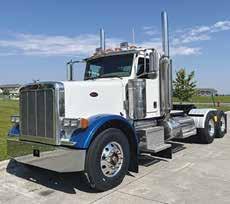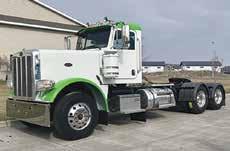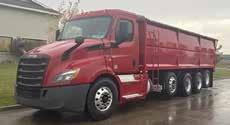

Virtual fence field day
By Nebraska Extension
Cattle producers, land managers, and allied industries are invited to a unique in-person field day on Tuesday, August 12, at 9 a.m. at 7551 Johnson Rd, Lot 2, Hemingford, Nebraska. This event is hosted in partnership between Halter and the Nebraska Extension.
The field day will focus on the use of virtual fencing on a demo herd of cows grazing irrigated cropland. Attendees will have the opportunity to observe the system in action and hear firsthand from the local producer currently using the technology. He will share practical insights, benefits, and challenges he has encountered while managing cattle with virtual fence technology.
Jack Keating, a representative from Halter, will be on hand to explain how the technology works and answer questions about its capabilities and applications. Nebraska Extension specialists will discuss grazing management strategies and the potential for virtual fencing to improve pasture utilization, labor efficiency, and land stewardship.
The event is free to attend and will feature a demonstration, an open discussion, lunch, and opportunities for networking with fellow producers and experts. Don’t miss this opportunity to see innovative cattle management tools in action and learn how virtual fencing could fit into your operation.
To RSVP for materials and lunch count, contact Jack Keating at jack.keating@halterhq.com.
AUCTIONS
Sept 4, Shobe Auction Inc., Ken Kjorstad Estate, Lewistown MT A4
Sept 6, Big D & E Auction Service, Frank & Joe Michels Estate, Beach ND........A6
Sept 6, RK Statewide Auction, Clint Sallee, Glendive Plumbing & Heating, Glendive MT A5
Sept 7, RLP Auctions, Collectibles, Hamilton MT A15 Sept 13, Levi Hershberger, Thomas Bolz Estate Auction, Roundup MT A12 Sept 13, Kuhbacher Auction Service, Terrett Ranch, Miles City MT A9 Sept 13, Shobe Auction Inc., 2025 Fall Gatherin’ Western & Indian Collectibles, Lewistown MT A7
Sept 13, Weaver Auctions, Gregg Enger Estate w/Guest Consignors, Deer Lodge MT A23
Sept 13 - 27, Pate Auction, Inc., State of Montana Surplus Property, Online A11
Sept 17, Wolff Auctioneers, Morton County Land Auction, Mandan, ND A13
Land management workshops
The University of Nebraska-Lincoln’s Center for Agricultural Profitability will present a series of 2025 landlord/tenant cash rent workshops at locations in central and eastern Nebraska between August 19 and September 4.
The workshop will cover current Nebraska cash rental rates and land values, best practices for agricultural leases, and other contract considerations. The meeting will also include discussions on flex leases and crop shares, providing attendees with an opportunity to have their leasing questions answered.
Nebraska Extension agricultural economists Anastasia Meyer and Jim Jansen will lead the presentation. Both are with the Center for Agricultural Profitability.
The meetings are free to attend and will include refreshments or a meal. Registration is required with the host location.
More information about cash rental rates, leasing and farm and ranch transition can be found on the Center for Agricultural Profitability’s website, https://cap.unl.edu.
McMurry Cattle, Herefords, Billings
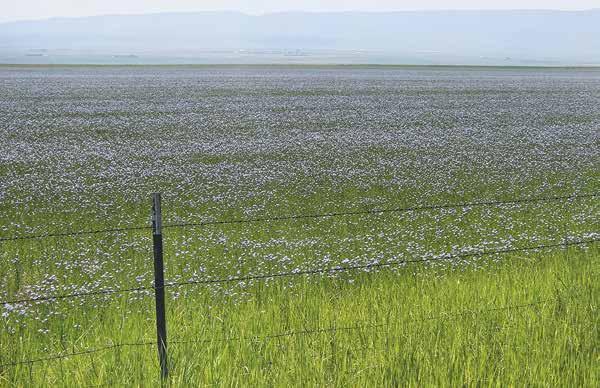
Nominations open for annual Outstanding Ag Leader award at Montana State
From the MSU News Service panded version of this 25-year-old event, we can’t wait to recognize our many wonderful alumni, current students, faculty members and supporters.”
Nominations are now open for Montana State University’s premier agricultural award. The College of Agriculture is seeking nominations for its Outstanding Agricultural Leader award, which will be presented during the college’s Celebrate Agriculture week November 3-8 on the MSU campus. The deadline to submit nominations is Friday, Septemnber 5.
The award recognizes individuals, families or businesses that have gone above and beyond for the Montana agricultural industry in service, advocacy, production or business.
Nominations can be submitted online at ag.montana.edu/celebrateag/aggie_nomination.html, and a list of past recipients can be found at ag.montana.edu/celebrateag/ outstandingaggie.html. The 2024 award was presented to Tryg Koch of Kalispell.
Beginning in 2024, Celebrate Agriculture expanded from a weekend-long event to a weeklong series highlighting the college’s departments, students, alumni, faculty and friends.
“We look forward to Celebrate Ag every year because it allows us to truly celebrate all the people who contribute to the diverse and deeply rooted industry that is agriculture in Montana,” said Sreekala Bajwa, MSU’s vice president for agriculture and dean of the college. “With the newly ex-
Nominees for the Outstanding Agricultural Leader award must be well respected in their community; be an industry leader or an emerging innovative producer; and be actively involved in the industry. Nominees who are not selected will be reconsidered in future years, but application forms should be updated.
Hard copies of the nomination form can be requested by calling the College of Agriculture dean’s office at 406-994-3681. Celebrate Agriculture is MSU’s annual tribute to the legacy of agriculture, natural resources and life sciences in Montana. This gathering serves as a platform to honor the state’s agricultural heritage that encompasses allied industries while recognizing present and future leaders, producers, students and scientists.
PRODUCTION SALES

Purple flowers as far as the eye can see is actually Blue Flax growing in Central Montana.
Photo by Suzy Benzing
4 WHEELERS AND PT CRUISER FOR SALE
2020 Honda Foreman, foot shift, power steering, push button 4x4, winch, 2100 miles Green $6500
2020 Honda Foreman, foot shift, power steering, push button 4x4, winch, 1800 miles Red $6500
2002 PT Cruiser, excellent condition, 92,000 miles, new radiator, transmission, tires, fuel injectors. Needs head Make Offer Call (406) 366-1667, Stanford, Montana

Gudmundsen Sandhills Laboratory Open House
The University of Nebraska–Lincoln Gudmundsen Sandhills Laboratory (GSL) will host its annual open house Wednesday, August 30 producers and industry professionals to attend for the latest updates in the beef industry and current GSL research. The open house will begin at 8 a.m. MT with registration, followed by a cattle market update and a long-range weather forecast.
Attendees will have the opportunity to participate in interactive sessions, learn more about ongoing research at the ranch, and hear from University of Nebraska–Lincoln researchers, educators and specialists.
The afternoon session will feature keynote speakers Terryn and Tom Drieling, who will discuss the common stockmanship principle of good movement and how it can be applied in other areas of life.
Registration is free, and lunch will be sponsored by Merck Animal Health. Please RSVP no later than August 15 for an accurate meal count.
Located in the Nebraska Sandhills, the Gudmundsen Sandhills Laboratory spans Grant, Hooker and Cherry counties. The former Rafter C Ranch was leased by the University of Nebraska–Lincoln from the University of Nebraska Foundation in 1981 to serve as a hub for research in the Sandhills.



GSL plays a key role in developing environmentally and economically sustainable plant and animal production systems for the Nebraska Sandhills, using ranch economics across various research areas. The open house serves as a way to share this research with producers and community members across the state.
To register for the open house and view the itinerary, visit go.unl. edu/gslopenhouse. We’d
Land management workshops
Dates and Locations:
August 19 in Grand Island: 10:30 a.m.-2:00 p.m., at the office of Nebraska Extension in Hall County, College Park, 3180 U.S. 34. Register by August 18 at 308-385-5088. Sponsored by Peoples Company.
August 20 in Beatrice: 1-4 p.m., at the office of Nebraska Extension in Gage County, 1115 W. Scott. Register by August 19 at 402-223-1384. Sponsored by Peoples Company.
August 21 in Columbus: 1-4 p.m., at the office of Nebraska Extension in Platte County, 2715 13th St. Register by August 20 at 402-563-4901. Sponsored by Peoples Company.
August 26 in Fremont: 1-4 p.m., at the office of Nebraska Extension in Dodge County, 1206 W 23rd St. Register by August 25 at 402-727-2775. Sponsored by Peoples Company.
August 28 in Lincoln: 10:30 a.m.-2 p.m. at the office of Nebraska Extension in Lancaster County, 444 Cherrycreek Road, Suite A. Register by August 27 at 402-441-7180. Sponsored by Peoples Company.
September 4 in Omaha: 1-4 p.m., at the office of Nebraska Extension in Douglas County, 8015 West Center Road. Register by September 3 at 402-444-7804. Sponsored by Peoples Company.
DEADLINE FOR SEPTEMBER ISSUE Wednesday, August 27


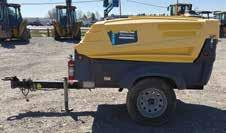



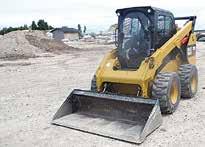

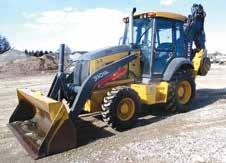





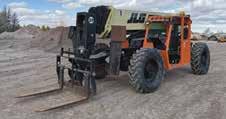


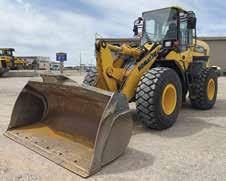




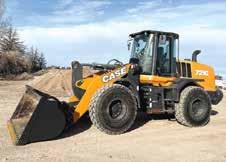


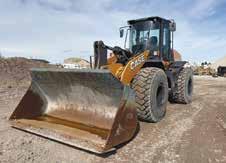


AUCTION
Thursday, September 4th, 4 p.m.
Location:

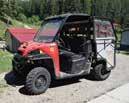

TRACTORS
IHC Farmall C tractor, fully restored, s# 35828
FORD 8N tractor, 3 pt., pto, mechanically restored, needs paint and some body work, near new rubber and rims Ford 8N tractor, 6-cylinder funk conversion, s# 71580 (approx. 1950-52), new rubber
Allis Chalmer HD5B crawler, s# 12933, 2 cycle Detroit engine
IHC Payloader Model 10AH, s# 1563, gas engine, 6’ bucket, cab IHC 254 tractor, 3 cyl. diesel, s# 209000 9J08470, pto, 4WD, front wheel assist, Quick Way loader, 3’ bucket ARPS Half Track by ARPS Corporation
Wagner MD540C front end loader with 4’ bucket, bucket has teeth attachment, s# 265
ATV, TRAILERS, MOWERS
2016 Polaris Ranger XP 900 with cab, 1967 miles, wood rack on box, good rubber
Flat Line Trailers flat bed trailer with ramps and tailgate, 14’ deck, 7’ wide, good rubber and deck
1990 Homemade 16’ flatbed trailer, 102” wide Cub Cadet XT1 42” riding mower, 22 hp. Kohler engine, 222 hours, like new
SAWMILL & WOOD EQUIPMENT
2019 Woodland Mill HM122 sawmill, Duromax 16hp motor, 1200# hand wench, s# 20042019, sells with a mix of new and used blades
Countyline by Tractor Supply 30 ton log splitter, 9.5 hp Kohler engine, gas, converts to split vertically or horizontally
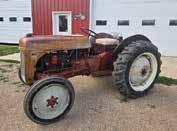
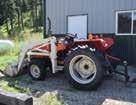

ATTACHMENTS
Countyline by Tractor Supply 3 pt. box scraper, 4’
Massey Harris 3 pt moldboard plow
Countyline by Tractor Supply 3 pt 12” post hole auger
Keen Cutter 3 pt spring tooth harrow
Landscaping rake, 4’
Frohring Redi Mixer, 3 pt hitch cement mixer, Type FF3, s# 718
SHOP EQUIPMENT & POWER TOOLS
DeWalt, Craftsman, Ryobi, Stanley power tools
Large rolling tool chest, loaded, sells as a unit
Lincoln tig welder; Chicago wire feed welder
Lincoln AC/DC welder, 225 AC/125 DC
PREDATOR 3500 gas generator
Large assortment of hand tools and socket sets
FISHING BOAT AND GEAR
1980 Galaxie fishing boat, in process of restoring, Evenrud 70 outboard motor, 19’ long, sells with 1979 Trail Rite trailer
FIREARMS
Taurus “The Judge” .45LC/410 ga.
Remington 700 rifle, .30-06, scope
Marlin Model 60 .22 rifle w/scope, semi-auto
Western Field 12 ga. pump shotgun
Wards .22 single shot rifle NO INTERNET

Leafy Spurge: Do I spray now or wait until fall?
By: Graig Reicks, SDSU Extension Weed Ecology Field Specialist.
Additional Authors: Philip Rozeboom, Eric Jones
In June, leafy spurge, one of our most problematic rangeland, pasture, and roadside weeds, displays its yellow bracts. This is also one of South Dakota’s noxious weeds that landowners are required by law to control. Leafy spurge spreads through underground rhizomes and by seeds that are often viable by mid-July. Short-term control of leafy spurge is often achieved with a combination of 2,4-D and picloram (Tordon®), both synthetic auxins (group 4 herbicides). As we’ve learned over the years, repeated use of herbicides that target the same site of action can cause the weed to become resistant to those herbicides. Even though there’s been no reports of group 4 herbicide resistance to leafy spurge, we should still consider incorporating other herbicide modes of action into our leafy spurge management strategies. Two underutilized modes of action include imazapic (Plateau®), which belongs to the ALS inhibitors (group 2) and saflufenacil (Sharpen®, Detail®), which belongs to the PPO inhibitors (group 14). Saflufenacil kills above-ground foliage on contact but has little to no impact on the roots. Since killing the roots is essential for controlling perennial weeds, saflufenacil should be mixed with systemic herbicides, such as Plateau®, Tordon®, and/or 2,4-D that are translocated throughout the plant.
Research from Nebraska (Datta et al., 2013) has shown that when Plateau® is tank-mixed with and applied during flowering, it can provide three years of control from a single application, as opposed to only two years of control from a fall application of Plateau®. SDSU research has also shown that adding saflufenacil to herbicide tank mixes can increase the performance of both Tordon® and Plateau® at one year after application (Figure 1).

However, when Tordon® was tank-mixed with 2,4-D ester, there was no benefit to the saflufenacil addition. If herbicides have already been purchased, it’s best to apply them soon, if they haven’t already been applied. If they haven’t been purchased, consider diversifying herbicide modes of action by applying Plateau® + saflufenacil.
As a downside, Plateau® applications made after greenup can suppress growth of desirable grasses, especially the cool-season species of smooth brome and Kentucky bluegrass. For this reason, it’s often applied by transportation departments to reduce mowing costs in right-of-ways. The Nebraska study reported a 30% reduction in cool season grass production for up to six weeks after application after a 9 fl oz/acre Plateau® application. To reduce the chances for temporary grass production decline, apply Plateau® at 6 fl oz/acre instead. Refer to the label to determine whether the grass species present on your land may be susceptible to growth suppression.
Since leafy spurge may exhibit regrowth from underground rhizomes, continue to monitor regrowth and expect to make more than one application to fully-control this weed. Since weeds can quickly become resistant to ALS inhibitors, do not repeatedly apply Plateau®. Mowing, hand weeding, and releasing Leafy Spurge beetles can have utility as well.
Figure 1. Weed control percentages of herbicide treatments applied to leafy spurge.
Dakota Gardener: Plant variegation
By Carrie Knutson, Horticulture agent, NDSU Extension – Grand Forks County
I love zinnias. They are one of my favorite flowers. I interplant long rows of zinnias with my pumpkin and squash plants every year. Last year, as I was weeding the rows, I noticed a plant that had a striking difference from the rest. The plant was variegated. It had green leaves with strips of light-green and cream colors. Not missing the chance to experiment, I marked the plant, and last fall saved the seed separately. I started the seeds this spring.
Before we talk about the results of my experiment, let’s discuss plant variegation. According to the Merriam-Webster Dictionary, variegation means a diversity of colors. For plants, these differences can be in colors, in the leaves or in the flowers. The variegation results in different patterns of contrasting colors.
In the landscape, there are many plants that have variegated leaf varieties, for example, dogwoods, hostas and grasses. Variegated plants add texture and color to our gardens and create focal points. The contrasting colors can brighten darker areas.
Variegation in house plants is just as popular as in the landscape. Variegated plants like philodendrons, pothos and monstera are popular. Sometimes, variegated varieties can be more expensive as they can be harder to commercially produce.
What is variegation? Let’s start with why plant tissue is green. Plant tissue is green because it contains chlorophyll. Chlorophyll is a green pigment that plants use to produce their own food through the process of photosynthesis. This means that white leaf tissue doesn’t produce any food for the plant. The rest of the plant has to work harder to produce enough food for the whole plant. As a result, variegated plants can be less robust than their green counterparts.
Variegation can occur naturally by a mutation in a plant’s genetics. Mutations can be caused by changes in the environment or by viruses. Sometimes these changes are stable and can be selected and grown by seed. Other times, the changes are the result of a change in the cells in a region of growth (leaf tips, for example). To keep the variegation, the plant must be propagated through cuttings.
Would my saved zinnia seeds have the same variegation? Because zinnias are cross-pollinated, I was unsure if the change would be passed through the seed.
It turns out that variegation can be passed through the seed. I only had one seedling survive. I planted it in my yard where I could give it extra attention. I hope I get to save seeds from it this year. Happy gardening!


EQUIPMENT AND CALF WARMERS

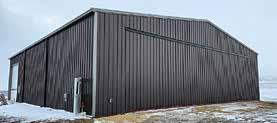

~ FRANK & JOE MICHELS ESTATE ~
AUCTION
COLLECTOR CARS, PARTS, SHOP, MACHINERY & COLLECTIBLES



1957 Chevrolet 210 4-dr.Sedan, Pink
1958 Buick Limited SD, Lavender/Silver
1941 Chevrolet Special Deluxe 4-dr. Sedan, Black
1954 Buick Super 4-dr. Sedan, Lt Green/White
Sat., Sept. 6, 2025 at 9:00 a.m. (MDT) Vehicles will be sold starting at 12:00 p.m.
Located: 672 Black Diamond Road East, Beach, ND 58621 From Beach, ND I-94 Exit #1 - Go 1 mile South to 4th St. NW (Dollar General) and then 2 miles West to Auction Site.
*SIGNS WILL BE POSTED!!*
Visit our Website at www.bigdeauction.com for Lots of Photos & More Details!!!
*APPROX. 90+ COLLECTOR CARS &
1954 Chevrolet 3104 1/2-Ton Pickup, Blue
1951 Chevrolet 1/2-Ton Pickup, Green
1959 Buick LeSabre 4-dr. Sedan, Rose/white
1963 Buick Wildcat 4D, Tan
1976 Buick Electra 4-dr., Green


Timely maintenance helps prevent baler fires
Parts of North Dakota are experiencing abnormally dry to moderate drought conditions, while other areas have been receiving adequate rainfall. Regardless of moisture conditions, baler fires are still occurring.
“It seems odd to think about the risk of baler fires right now, as the grass is still green in many areas where hay is still being harvested,” says Tom Clays, North Dakota Forest Service director. “However, the amount of ‘fuel’ or biomass out there in the ditches, meadows and Conservation Reserve Program areas is substantial this year. There’s enough ‘fuel’ out there that can easily catch fire with just one spark and quickly become out of control.”
Timely baler maintenance is key to preventing dangerous baler fires.
“A common cause of baler fires is mechanical issues, primarily problems with roller bearings found within the baler,” says Angie Johnson, North Dakota State University Extension farm and ranch safety specialist. “The roller bearings inside the baler can easily become damaged due to wear and extended use.”
Once the bearings are damaged, they become dangerously hot and can start a fire inside the baler chamber.
As the haying season shifts into more mature and drier grasses, including the baling of small grain straw, these types of fuels can burn quickly and spread over a large area
“We have to remember that there is a tremendous amount of friction and static that is building up during baling. Add that combination of friction and static electricity or a mechanical failure on the baler with extremely dry hay, and you have the perfect recipe for a fire,” says Johnson.
To prevent baler fires this haying season, Johnson recommends conducting a visual assessment by walking around the baler when both the baler and tractor are shut off. Performing preventative measures, including daily maintenance when in active use, can help producers maintain their equipment for peak performance, reduce repairs and prevent equipment fires
When assessing the rollers and belts inside the baler, the chamber door of the baler may need to remain open.
“Always make sure the chamber door is in the lock position by manually shifting the lever to the lock position,” says Johnson. “By locking the chamber door open, you prevent the possibility of the chamber door closing on you if the hydraulics of the chamber door fail.
During the visual assessment of the baler, Johnson suggests the following items to consider:
Inspect bearings, chains, hoses and belts for wear and replace worn parts.
Remove excess net wrap and or twine pieces that may have accumulated around the rollers.
Look for purple discoloration on the shields of the baler where the roller bearings are located, as this could be a sign of a “hot spot” on the baler. These “hot spots” are indicators that the bearing might be wearing out and needs to be replaced.

1952 Ford Truck 2-Ton CB, Green
1960 Chevy 2-Ton Truck, Red
1948 Chevrolet 1.5 Ton Truck CB, Red
1940 Hudson, Blue 1968 Bridgestone BS90/SP /01 Motorcycle, Burgundy
1965 Buick Sportwagon Special, Blue PICKUPS* INCLUDING: 1990 Cadillac Brougham 4-Dr., Maroon
SHOP & AUTOMOTIVE ITEMS - TOOLS -

1985 Honda 250 Big Red 3-Wheeler, Red. 1949-1951 Nash, Black
1977 Gremlin 7746 5, Orange Cushman 4-Wheeler 898542 -7210, Green AND MANY, MANY MORE, SEE OUR WEBSITE!!! **(3) 2,000 BUSHEL GRAIN BINS, TO BE MOVED**
FOR MORE INFORMATION CALL: Big D&E~Ed Praus Auction, LLC, Dickinson, ND
Auctioneers: Eddie Praus Lic. #27 701-225-6131 or 701-290-4858 Delvin Praus Lic. #667 701-290-5081 OR Kevin Praus at 701-260-2308 & Ryan Reiter at 701-264-0485
Check for belts that may have become loose around the rollers. If a belt becomes too loose, the belt will start slipping on the rollers, causing friction. That friction can allow for dust particles, loose material and the bale developing inside the baler chamber to ignite.
Lubricate chains, gears and bearings following the recommended lubrication instruction schedule from the baler’s operator manual. The operator’s manual for the baler will provide the best maintenance schedule.
Use an air compressor to blow dry matter, such as leaves, dust and plant stems, off the baler after every 50 to 75 bales.
An infrared heat thermometer is an inexpensive tool ($20 to $40) found at local farm and ranch supply stores, and it can help prevent baler fires.
“Using an infrared heat thermometer is a great tool to help monitor the temperature of your baler’s roller bearings,” says Johnson. “Take the time during a stretch break while baling to use the thermometer to check the temperature of your baler’s roller bearings. If you see a temperature spike with one or more bearings, it is time to stop and get the bearing replaced before your baler becomes damaged and catches fire.
Producers should also carry a fire extinguisher and make sure it is full and working correctly, says Johnson.
In addition, producers should let others know their plans before going out to bale hay so someone can check on them to make sure they are OK if they don’t return when expected. This also means carrying a fully charged cellphone while baling.
In the event of a fire, immediately call 911. Firefighters can help contain the fire quickly and lessen the extent of the damage.
As Johnson puts it, “A baler can be replaced. You can’t.
Common Millein control
By Todd Whitney, UNL
Common mullein is an invasive biennial weed that can spread rapidly into pastures. First year seeds prefer to germinate and form rosette plants in disturbed or tilled soils. Then, second year mullein plants become competitive with pasture and roadside grasses developing yellow flowering seed head spikes. Due to recent mild winters, mullein winter survival has been high. For outdoor enthusiasts, bolting mullein provides colorful edible yellow blooms; and dried seedhead spikes can be used as short-term torches for alternative night lights. Further, smooth, woolly mullein leaves are also known as “hunters toilet paper.” Hand-pulling or digging can be effective for controlling small infestations, especially prior to plants producing seeds. Remove the entire rosette or sever the root below the soil surface. Repeated mowing when plants are in the bolting to early flowering stage can reduce seed production; but mowing low-growing rosettes is generally not effective. Remember that spring seed germination can be problematic for years after weed seed is produced.
Herbicide control can be a challenge due to the dense, hairy mullein leaves hindering absorption; and single herbicide(s) mode of action usage has led to some herbicide-resistant weeds. Where herbicide resistance is not an issue, effective control usually requires that chemicals be applied either during the rosette stage (first year development) OR prior to seed development during the second year bolting stage. Note that non-ionic surfactant or crop oil concentrates must be included with most herbicide applications to overcome the woolly mullein leaves reducing coverage.
The most effective labelled control products in UNL studies, which must be applied to rosettes prior to spring bolting, include: Remedy®, Tordon®, Milestone®; Graslan®; MezaVue™; and Chaparral™. Other labelled herbicides include: Method®; Grazon P+D®; GrazonNext®HL; DuraCor™; Telar®; Escort®; Cimarron Plus®; Pastora®; Overdrive®; and Metsulfuron. A fall application can control common mullein before it overwinters, but the herbicide will not persist and control new spring seedlings.
More information regarding common mullein herbicide choices and application timing is available at: https://cropswatch.unl.edu or https://beef.unl.edu












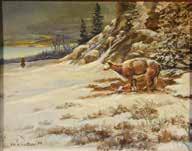
Tony Chytka
Brass Pipe Tomahawk
Beaded War Club
Sioux
Clarence Cuts the Rope
Fleming Buermann
Clarence Cuts the Rope Ruana Ruana
TRUCK FOR SALE



Fall Forage Seed Available

2025 Nebraska Soybean Management Field Days includes
second year of TAPS competition
For over 25 years, growers have benefited from the latest advancements in soybean production, management and marketing at Soybean Management Field Days. This year marks the second year that the Soybean Testing Ag Performance Solutions (TAPS) competition highlights are included in the field days, including lessons from last year’s contest and progress this season.
The field days provide an opportunity to learn about cutting-edge soybean management, production practices and technologies, while networking with fellow farmers and industry experts.
The three-fold focus of the field days is to provide practical information, foster dialogue and showcase collaborative efforts:
Learn about best practices and strategies to apply in your fields.
Engage in productive discussions on issues ranging from local to global.
Explore Nebraska Soybean Board (NSB) initiatives in research, marketing and education.
“Our goal is to give growers real value they can take home and use,” said Andy Chvatal, NSB executive director. “By highlighting programs like TAPS, we’re helping producers evaluate new ideas and learn directly from the results. In addition to TAPS, the field days also focus on timely topics that matter most to growers, including disease management, market updates and practical production strategies.”
Throughout the four-day event, attendees will be able to participate in two different formats, one occurring in the evening and the other during the day. The evening meetings, held August 12–14, will feature presentations on locally relevant topics and engage participants in interactive discussions. To conclude the week on August 15, a field day starting mid-morning will highlight the Soybean TAPS contest with interactive discussions and a plot tour.
Soybean Management Field Days is free to attend thanks to support from NSB. To
help with a meal count, please pre-register two days in advance of each field day at go.unl.edu/soydays or by calling 402-6248030.
Evening programs
Registration at 5:30 p.m., program from 6 to 8 p.m.
Tuesday, August 12 – Ravenna, NE (Lonnie and Scott Bohn farm)
Topics: Soybean TAPS competition, soybean diseases, and market updates.
Speakers: Dylan Mangel, Jeff Peterson, Talon Muse, Chuck Burr
Wednesday, August 13 – Concord, NE (UNL Haskell Ag Lab)
Topics: Soybean TAPS competition, white mold, and market updates.
Speakers: Dylan Mangel, Leslie Johnson, Nicole Luhr, Chris Proctor, Jeff Peterson
Thursday, August 14 – Weeping Water, NE (Rick Meyer farm)
Topics: Soybean TAPS competition and gall midge research plots.
Speakers: Justin McMechan, John Nelson, Chris Proctor
Morning program
Registration at 10 a.m., program from 10:30 a.m. to 2 p.m.
Friday, August 15 – Mead, NE (UNL Eastern Nebraska Research, Extension & Education Center)
Topics: Soybean TAPS update, tour of competition plots, and market updates.
Speakers: Chris Proctor, Jeff Peterson, Chuck Burr, Dylan Mangel, Aaron Nygren, Justin McMechan
Attendees will also have the chance to hear from MEG Corp about soy biodiesel and connect with representatives from NSB and Nebraska Soybean Association at each location.
Registration and information about the field days, including maps to the event sites can be found at go.unl.edu/soydays, or contact NSB at (402) 441-3240 or Nebraska Extension at (402) 624-8030.
NDSU Extension to host dry bean field days
NDSU Extension, in partnership with the Northarvest Bean Growers Association, will host two dry bean field days on August 12 in Forest River, North Dakota, and on August. 13 in Hatton, North Dakota.
The field days will offer an opportunity for growers, industry professionals and researchers to come together and explore the latest research in dry bean production.
“It’s been nearly a decade since we last hosted a dry bean field day,” says Juan Osorno, NDSU professor and dry bean breeder. “This is a great opportunity for growers to see firsthand the research and breeding work NDSU is doing to support the dry bean industry.”
The field days will showcase a team of NDSU experts presenting a wide range of dry bean topics:
Juan Osorno, NDSU dry bean breeder, will walk attendees through new and upcoming dry bean varieties developed in North Dakota, highlighting the breeding pipeline and what growers can expect in the near future.
Maria Roberta De Oliveira, NDSU Department of Plant Sciences graduate student, will demonstrate how drones are being used to collect high-quality field data more efficiently.
Ana Carcedo, NDSU Extension broadleaf crops agronomist, will provide agronomic updates tailored to different market classes, focusing on best practices for maximizing yield.
Michael Wunsch, NDSU research plant pathologist at the Carrington Research Extension Center, will focus on one of the most challenging diseases in dry bean production—white mold. His session on how to make the most of your fungicides will provide practical insights for effective disease management.
“Dry beans are a key crop for North Dakota, and these field days are a chance to connect with growers and share timely, research-based recommendations,” says Carcedo. “We want producers to leave with new ideas and tools they can apply in their own fields.”
The program will conclude with a live Q&A session, offering attendees the chance to engage directly with the speakers. Lunch will be provided.
There is no cost to attend. Registration is appreciated but not required. To register for the August 12 field day in Forest River, visit ndsu.ag/drybeansaug12. To register for the August 13 field day in Hatton, visit ndsu.ag/drybeansaug13.



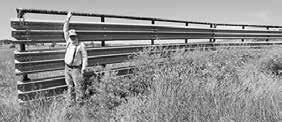
TRACTORS & HAY EQUIPMENT
2015 McCormick X7.660 tractor, Power Plus 170 hp., 1370 hrs, MFWD.
1997 John Deere 7410 tractor, MFWD with JD 740 classic loader, 8-ft. bucket with 5 tine grapple set up, Power Quad transmission, left hand reverse, good rubber, 8450 hours.
Set JD 7410 tractor front fenders / JD 8-ft. bucket with grapple fits 740 loader / Universal pallet forks for JD loader / JD bale spear for 740 loader.
2001 John Deere 4890 swather, 1710 hours, 14-ft. 890 auger head, 1300 hours.
2005 John Deere 567 MegaWide round baler, netwrap & twine, approx. 10,000+ bales.
SHOP & WOOD WORKING TOOLS
Napa Nitro air portable air compressor / Milwaukee cordless grease gun with charger / Bostitch 2.0 hp air compressor / Blackhawk Ind. 2 hp bench grinder / Grizzly 23” gearhead drill press / Wissota bench grinder / 1 hp bench grinder, 110-volt / Makita chop saw / Makita cold chop saw / Napa Val 6 infared heater / Craftsman 6.0 shop vac / Rigid pipe threader / Hydraulic pipe squasher / 12 ton pipe bender / 2 ton floor jack / Napa battery charger / Big anvil on stand with Hardy-Handyman jacks / Creeper / Stihl TS420 chopsaw with concrete blade / Stihl 7540C weed eater / Stihl FS130R weed eater / Portable air tank / Hydraulic jacks / Come alongs / Boomers / Tow straps / Chains / Cordless Makita bandsaw / 4 wheeler aluminum ramps / Bolt bins with contents / PVC fittings / Fencing stables & clips / Large Craftsman tool box / Complete Craftsman wrench tool sets / 110 piece tap & die set / Assorted flat, channel, square tubing / Werner 8-ft. to 16-ft. ext. ladder / Werner 12-ft. fiberglass ladder / 50-ft. flex discharge hose, 1-1/2” / 25-ft. 2” flex hose / Misc. particle board etc. / Craftsman 10” table saw / Craftsman 6” jointer / Dewalt 12” chop saw with stand / Grizzly belt sander / Spindle Sander-Frejoth 14” band saw / Dura Craft drill press / Work bench on wheels / Bostitch stapler & finish nailers / Craftsman skillsaw / Dewalt biscuit jointer / (2) Porter cable sanders / Rockwell router / Johnson lazer level with tripod / Black & Decker jig saw / Grizzly dust collector / Vet supplies / Level T-squares / Woodclamps.
CONSTRUCTION, FORESTRY-FIRE FIGHTING AND FENCING EQUIPMENT
2013 CAT 312E excavator, long stick progressive thumb, 4300 hours, 2 Dig, 1 Cleanup buckets.
2004 CAT D4G dozer, 6 way blade, open ROPS, 4570 hrs.
2006 Komatsu WA200-5 wheel loader, 2-1/2 C.Y. bucket, 123 hp., hydraulic Quick Attach, 6200 hrs.
2011 Terex PT 100G forestry skid steer, 100 hp, with tracks, cab/heat & AC, hydraulic Quick Attach 6-ft. bucket, bullet proof (Polycarbonate) door, 1230 hrs.
2015 Warne 70 gal. UTV sprayer, 30-ft. boomless nozzles, 100-ft. hose.
2015 Weed/Fire skid unit, 200 gallon, Honda engine, Hyflo pump, 100-ft. hose and reel.
ANTIQUE FURNITURE & HOUSEHOLD
Hoosier cupboard, great condition / Oak parlor table / Oak night stands.
Wooden teachers cabinet, rare find!
Miles City, MT railroad office cabinet, local piece of history!
Mahogany hall table / Mahogany
secretary desk / Misc. tables. (2) Old cast iron tubs with legs, short & long, great shape.
Steel wagon & chassis / 2 rope block & tackle / Yard ornaments.
Modern couch with 2 electric recliner on each end.
Modern Spencer & Marston pool table, pockets, 3 piece slate, nice.
Curt Terrett Handmade Originals
Outdoor heavy duty steel fire pit / 3 piece oak table with 6 round back chairs / Oak TV entertainment center with formica top.
Elk sheds / Gun safe, holds 10-20 Vintage jars.
Retro formica table with 2 chairs. Old refrigerators for storage. Plus More!!!

Sale Conducted By:
Terrett Ranch
SKID STEER ATTACHMENTS
2024 Montana T Rex 350E post pounder.
2022 Paladin Bradco universal tilt attachment.
2017 Loftness 7 ft. snowblower, hiflow hydraulics.
2016 Bobcat finish mower, 6-ft. wide, self leveling, quick attach?
2015 Montana 1000 hydraulic post driver.
2013 Wire Dog wire roller.
2012 Stanley hydraulic post driver.
2012 Danhauser EP15 post hole digger with 14” rock auger.
2011 Loftness G3 tree mulching head carbide cutter, hi-flow hydraulics.
Fits KOMATSU wheel loader: 2008 Anbo 12-ft. snow blade / 2006 Anbo 10-ft. brush rake with grapple / V Plow.
WELDERS, PUMPS, GENERATORS, & PRESSURE WASHER
BRAND NEW! Honda EB 5000X generator, 110/240.
Honda 5000 generator 120/240, volts 110/220. Hotsy pressure washer.
Miller Suitcase Extreme 12 VS wire feeder.
Miller Thunderbolt arc welder.
Millermatic 210 wire feed welder.
Miller 12000 watt generator/welder.
Hobart Air Force 400 Plasma cutter.
Oxy acetylene torch on cart.
1-1/2” centrifugal pump / Honda 2” trash pump / Monro 2” centrifugal pump.
Watch For Signs

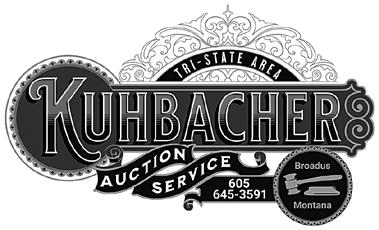
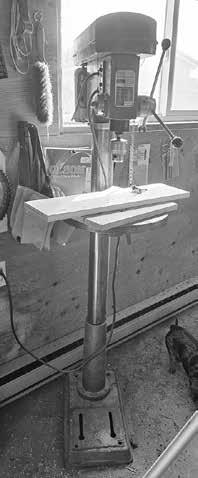
TILLAGE, FIELD, FEED & SEED EQUIPMENT
John Deere 455 grain drill, 25-ft., 7-1/2” spacing, double disc with fertilizer and alfalfa box attachments, clean and shedded.
1991 Krause 4100 20-ft. chisel plow with harrows.
1990 John Deere 940 21-ft., spring tooth with harrows, 3 pt..
1984 International 770 15-ft. offset disc, new 28” blades, bearings, 4 tires.
John Deere 320-06 land plane.
2011 Elston GA700 Gopher Getter, 3-pt.
2003 Riteway 4220 HS 20-ft. land roller.
1994 8” transfer auger, hyd. drive.
1992 John Deere 915 V ripper, 5 shanks.
1990 John Deere 3-pt. bale unroller.
1982 New Holland 359 grinder mixer.
1980 Sakundiak 8”x45-ft. grain auger with electric winch, PTO. (30) steel homemade heavy duty bottomless feed bunks, 20-ft. long. (18) rubber tire tanks, turned for hay. Older bale elevator /200 lbs. Ladak alfalfa seed.
Gravity seed box, 2 compartments, holds 500 bushel, roll up tarp. (2) Stur-D round bale feeders.
Propane, Poly, & Fuel tanks: 200 gallon propane tank / (2) 100 gallon, (2) 40 gallon, (2) 10 gallon propane tanks. / 1000 gallon fuel tank with 110 volt pump / (3) 500, (1) 300 gallon fuel tank with steel stands / 100 gallon slip tank, 12 volt DC pump homemade / 1350 gallon poly tank / 2800 gallon cone bottom poly tank / 2800 gallon flat bottom poly tank.
Road Grader & Truck Chains: 14ft. scaifier cutting edge for road grader / 2 sets 1400x24 road grader chains / (2) 20.5x25 loader chains / Studded chains 20.5x25 / (3) rail truck chains 11-24.5.
MISCELLANEOUS ITEMS
3 barrel pumps / Antique barrel pump / (2) 1350 gallon / Several rolls of tire recap rubber / Reduction gear / Flemco mineral feeder / Aluminum over head wire / New 567 baler belts, 1 long, 1 short.
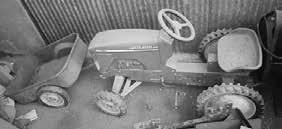
Auctioneer’s Note: Please join us at Terrett Ranch for a chance to buy this clean, shedded, well maintained, sought after ranch & construction equipment! Nice selection of antique furniture, woodworking & welding equipment for work or hobby! Mark your calendars - Saturday, September 13th, 2025. Directions will be posted on Kuhbacherauction.com
Please make plans to remove items Saturday or Sunday, skid steer & big loader will be there with operators until 5 p.m. Sunday


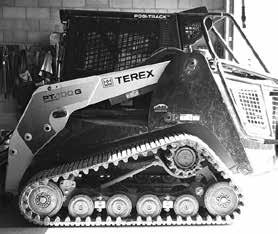

UTV’s, TRUCKS, TRAILERS, SNOWMOBILE & MOWERS
2001 Merritt 53-ft. straight stock semi tralier, spread axle with air ride, New 5th wheel & king pin. Lights and brakes need work.
1990 International dump truck, Cummins 350 hp, 9 speed tranny, tandem axle, new floor, 200,000 miles.
1967 Ford F600 truck with 16-ft. box & hoist.
2024 Polaris Ranger UTV 1500XD heat, AC, electric dump box, approx. 6000 miles.
2023 Polaris Ranger UTV 1000 cab heat, no AC, 6400 miles.
1991 Ford F250 7.3 diesel pickup, manual, flatbed, Ray Smith grill guard, 122,000 miles.
2000 Titan 20-ft. gooseneck stock/ horse trailer.
2000 Polaris RMK 700 snowmobile.
2018 John Deere 245R EZ Track riding lawn mower.
2007 John Deere HX10 10-ft. rotary mower, 3-pt.
2005 Titan 27-ft. flatbed trailer, tandem axle, single wheel, 5-ft. beaver tail +
1975 16-ft. gooseneck flatbed panel trailer, tandem axles.
2012 Carry On 5-ft. x 10-ft. UTV trailer with ramp.
ATV electric grass/fertilizer spreader. (10) 27-ft. long 7-ft. high portable guardrail windbreak/corral panels, T bottoms, freestanding. (30) 12-ft. portable corral panels. Several gates/Custom fencing trailer. Guardrail / Oilfield pipe / Wood & steel posts / Wire: Approx 3500 ft. of guard rail, 13” W, 26-ft. long. / (7) Concrete guard rail posts / (3) End caps, galvanized guard rail / Cement slabs.
(30) 2-7/8” drill pipe / (30) 2-3/8” oil field pipe / (35) 2-3/8” oil field Teflon lined. / (50) 2-7/8” post pipe, 10-ft. / (4) 12” heavy wall pipe / (7) 4” field pipe up to 45-ft. / (6) 8x21ft. gas line pipe / 7/8” sucker rod / PVC pipe. Wood posts: 6x8’, 8x10’, 7x10’. / (50) 4x6.5’ green treat posts / Telephone poles / Assorted plank lumber / 10-ft. railroad ties. (200) 5-1/2 ft. steel posts / Used steel posts / (7) New rolls RedBrand barbwire. 4-ft. well pit with
SURPLUS EQUIPMENT FOR SALE
2023 Yanmar YM347A tractor, 2500 lb. bucket, Cat 1/2 3-point,



2025 GR Gooseneck Stock Trailer, 6-ft 8”
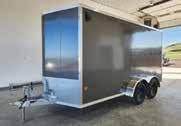
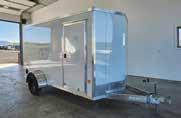
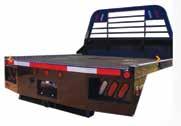

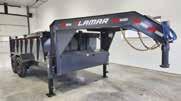

trailer, 83” x 16-ft., 2” 10k Demco adj cast coupler, 2-ft dove, pair of slide-in ramps, round diamond teardrop fenders. Stock #39762 $4550


Get to know your plant diseases
By Kirstee Schutte, Nebraska Extension Master Gardener
Out in your garden, you may see your plants growing and even flowering, but you may not notice if they are diseased. Plant diseases are any abnormal condition or disorder that alters the appearance or function of a plant. These disorders are typically triggered by pathogens, or organisms that invade plant tissues and interfere with growth, nutrient transport, or reproduction. The four primary groups of plant pathogens include fungi, bacteria, viruses, and nematodes. Understanding the nature of each pathogen type is crucial for early diagnosis, effective treatment, and long-term management of garden health.
Let’s look at bacterial plant pathogens first. These are microscopic organisms that invade plants through natural openings stomata, hydathodes, nectaries, lenticels, or wounds. Once inside, they multiply rapidly, producing enzymes and toxins that degrade plant tissues and disrupt cellular function. Most plant-pathogenic bacteria are rod-shaped and spread through water, soil, or contaminated tools. Symptoms often include wilting, oozing, leaf spots, soft rots, and vascular discoloration.
Common examples include:
• Pseudomonas syringae (leaf spot and blight)
• Xanthomonas campestris (black rot in crucifers)
• Erwinia amy/ovora (fire blight of apples and pears)
• Clavibacter michiganensis (bacterial canker of tomato)
Sanitation, resistant varieties, and proper irrigation practices help minimize spread. Bacteria are particularly difficult to control once established. An ounce of prevention is worth a pound of cure.
Next, we have fungi. They are among the most common and destructive plant pathogens. They reproduce through spores and can infect plants via direct penetration or through natural openings. Fungal pathogens thrive in warm, moist environments and may persist in soil, plant debris, or on tools. Once inside, they disrupt normal plant processes by producing enzymes, toxins, or by physically clogging vascular tissue. Symptoms include leaf spots, wilts, blights, rots, and rusts.





Common examples include:
• Botrytis cinerea (gray mold)
• Colletotrichum spp. (anthracnose)
• Fusarium oxysporum (Fusarium wilt)
• Puccinia spp. (rusts)
• Alternaria solani ( early blight)
Management involves using resistant varieties, crop rotation, fungicides, good airflow, and removal of infected debris. Fungal infections often flourish under poor drainage and overcrowded conditions.
Nematodes are the most abundant multicellular organisms on Earth. There are beneficial nematodes and plant-parasitic nematodes. The latter are microscopic roundworms that feed on roots, stems, or leaves. Unlike beneficial soil nematodes, these species weaken plants by damaging root systems, disrupting nutrient uptake, and opening pathways for secondary infections. Symptoms include stunted growth, yellowing, root galls, and reduced yields. These pests are especially problematic in sandy soils and can persist for years.
Common plant-pathogenic nematodes include:
• Meloidogyne spp. (root-knot nematodes)
• Heterodera spp. (cyst nematodes)
• Pratylenchus spp. (lesion nematodes)
• Rotylenchulus reniformis (reniform nematode)
Management includes using resistant cultivars, solarization, anaerobic solarization, crop rotation with non-host plants, and organic soil amendments that support antagonistic microbes. Nematodes often go undetected until serious damage has occurred. Soil testing is advised.
Finally, there are the Plant viruses, which are infectious agents composed of RNA or DNA encased in a protein coat. Unlike bacteria or fungi, viruses cannot reproduce without a host. They depend on their host cell’s protein synthesis pathways to reproduce. Viral infections can cause a range of symptoms, including mosaic patterns on leaves, leaf curling, yellowing, stunted growth, and distorted fruit. Most plant viruses are spread by insect vectors such as aphids, thrips, or whiteflies, or through infected seed or grafting.
Common plant viruses include:
• Tobacco mosaic virus (TMV)
• Tomato spotted wilt virus (TSWV)
• Cucumber mosaic virus (CMV)
• Potato virus Y (PVY)
Aluminum Cargo Trailer, 6-ft. x 12-ft., Ramp Door, 6” Extra Height, LED Lighting, 2” Ball Hitch. Stock #52037 $5850
Stealth Aluminum Cargo Trailer 7-ft. x 14-ft., Ramp Door, 6” Extra Height, 32” x 72” RV Style Side Door, 2-5/16” Ball Hitch, LED Lighting, XLT Series, V Nose. Stock #51926 $8650


Helena, MT ~Bidding Open Sept. 13th and Ending Sept. 27th
Sale Site: 16 W. Custer Ave. at the corner of Custer Ave and Henderson, next to the Lewis & Clark Co. Fairgrounds
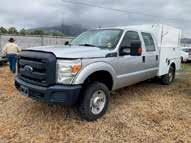


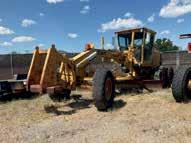
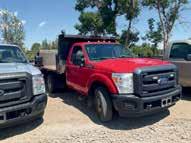
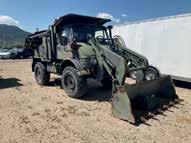





1/2 Ton Pickups (4WD & 2WD)
3/4 Ton Pickups (4WD & 2WD)
1 Ton Pickups (4WD & 2WD)
Cars - Full, Compact & Hybrid
Mid-Size Pickups (4WD & 2WD)
Dump Trucks & Plow Trucks
ATV’s & UTV’s
Heavy Equipment
SUV’s, Vans & Minivans


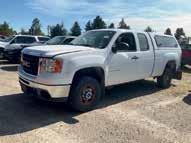
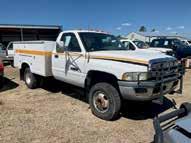

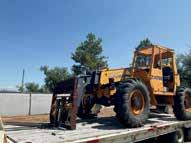


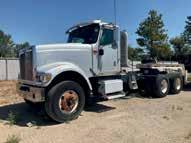




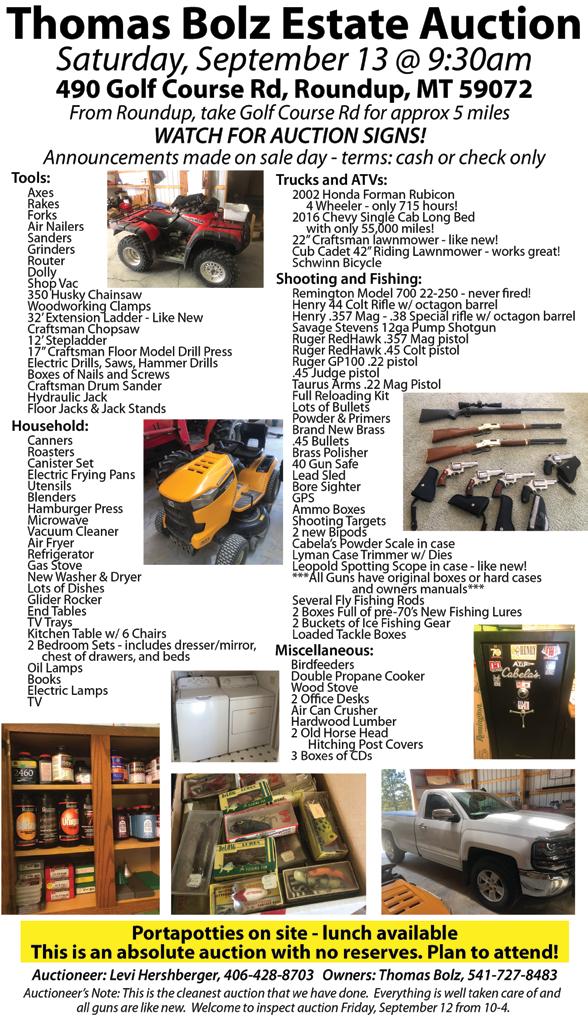
Hands-on flame weeding workshop returns
By Stevan KnezevicExtension Weed Management Specialist
From patented flamers to grower-tested tips — see what flame weeding can do for your weed control plan. Space is limited, so register now for the Sept. 10 workshop at ENREEC.
Looking for a new way to tackle tough weeds? Join experts and producers at UNL’s annual Flame Weeding Workshop this September to see how flame weeding is helping both organic and conventional growers take control — without chemicals.The Nebraska Flame Weeding Workshop will be 9 a.m. to 5 p.m. Wednesday, Sept. 10 at the Eastern Nebraska Research, Extension and Education Center near Mead, Nebraska.
Stevan Knezevic, professor of agronomy and horticulture specializing in weed science, and George Gogos, professor of mechanical engineering, and their teams will present results from more than 15 years of research. This work is also documented in over 20 scientific publications, 100-plus abstracts presented at many regional, national and international meetings, and a patent for flaming equipment.
Participants will learn how to properly flame all major Midwestern weeds in eight agronomic crops — field corn, sweet corn, popcorn, soybean, sorghum, alfalfa, sunflower and wheat.
Propane-fueled flame weeding is an acceptable method for weed and pest control in organic farming. It is also gaining interest among conventional producers due to the increase in weed resistance and costs of GMO crop seeds.
Propane doses for weed control and crop tolerance data will be presented. Four row flamers with patented hoods for broadcast and banded flaming will be demonstrated along with flaming treatments applied at several crop growth stages in corn and soybean.
Several local organic farmers will share their experience with flame weeding on their farms.
Workshop is limited to 40 people. Cost is $150, which includes the Flame Weeding Manual and other workshop materials. Lunch is also provided.
Program agenda:
9:30 – 10 a.m.: Registration
10 – 10:10 a.m.: Introductions and overview of the program (Knezevic)
10:10 – 10:30 a.m.: Basics of Flame Weeding and Equipment (Knezevic)
10:30 – 11 a.m.: Development of flaming hoods and torches (Gogos/Chris Bruening, Ph.D.)
11 a.m. – 12:30 p.m.: Field demonstration of flame weeding equipment and procedures (Gogos and Bruening)
12:30 – 1 p.m.: Lunch (Provided)
1 – 1:30 p.m.: Propane dose response for weed control (Knezevic)
1:30 – 2 p.m.: Crop tolerance to single and multiple flaming (Knezevic)
2 – 2:30 p.m.: Time of day impacts flame weeding (Knezevic)
2:30 – 3 p.m.: Flame weeding and cultivation in corn and soybean (Knezevic)
3– 3:30 p.m.: Experience from local producers (Randy Fendrich and Larry Stanislav)
4 – 5 p.m.: Revisit fields, questions and discussion 5 p.m.: Adjourn
Please register online by Wednesday, Sept. 3. Directions to the site, accommodation information and a video about the university’s flame weeding research is available on the Flame Weeding Workshop page.
For more information, contact Stevan Knezevic at (402) 472-6498. For registration information, contact Connie Hansen at (402) 472-8747.
A&W Root Beer
Roy Allen made a living buying and selling hotels… until he met an old soda fountain operator who gave him a formula for root beer. “You can make a fortune with a fivecent root beer,” the guy told him. It was during Prohibition when beer was illegal, so Allen decided there was a market for a root beer stand that looked like a Wild West “saloon” – including a bar and sawdust on the floor. The first stand opened in Lodi, California, in 1919, did so well that Allen opened a second one in nearby Stockton and made one of his employees, Frank Wright, a partner. In 1922 they named the company A& W, after their own initials.
PARCEL #1
1,598.36 Acres: Sec. 17 ALL, S2-Sec.18, NW4-Sec.19 & the N2 & SE4-Sec.20-137-83 Farmstead Acres: 23.47 • Tillable Acres: 99.59 • Pastureland Acres: 1,474.94
Farmstead includes: A 1997 ranch-style house, several shop buildings, barn, corrals and hay fences. The farmstead is watered by four developed wells. It is also watered by well water pipelined out to tanks, springy creek bottoms and stock dams.
• 1997 House 28’x46’ w. Double Attached Garage
• 2021 Pole Barn Calf Shed 40’ x 80’ (12’ Side Walls)
• 2020 Machine Shop 40’x40’ (18’ Side Walls)
• 2010 Shed 40’x72’ (12’ Side Walls)
• 1990 Feed Shed 20’x24’ (8’ Side Walls)
• 1975 Cattle Shed 24’x64’ (8’ Side Walls)
• 1965 Machine Shed 32’ x 64’ (12’ Side Walls)
• 1960 Cattle Shed 32’x40’ (10’ Side Walls)
• 1960 Shop 27’x37’ (9’ Side Walls)
• 1950 Cattle Shed 24’x64’ (8’ Side Walls)
• 1940 Wooden Granary 30’x15’
• 1914 Hip-Roof Barn 30’x50’ (16’ Side Walls w. Hay Loft)
• 7 Grain Bins
PARCEL #2
160 Acres: NW4-Sec.21-137-83
Tillable Acres: 78.94 • Pastureland Acres: 81.06
Parcel 2 is currently watered by a stock dam and a well from Tom’s yard, pipelined across the road to a water tank. Pending on the buyer if this will be available.
PARCEL #3
80 Acres: W2NW4-SEC.28-137-83
Tillable Acres: 25.54
Pastureland and Other Acres: 55.46
There is a scoria pit located on the south side of this parcel and a very small dugout on the west side.
PARCEL #4
160 Acres: SW4-SEC.9-137-83
Tillable Acres: 20.06 • Pastureland Acres: 59.94
Access to Parcel #4 is a section line road off 50th St. SW. The Johnsons accessed this property through leased state land. Lease on the state land is up for renewal in mid-October. Watered by a dugout on the south side. Tim used to run a water line on top of the ground to a water tank in the state land and Sec. 9.
PARCEL #5
160 Acres: NW4-SEC.25-137-83
Tillable Acres: 110.59
Pastureland and Other Acres: 49.41 Watered by a stock dam in the NE corner.

Land Location:
From Mandan, North Dakota: 6 mi S. on Hwy 6, 4 mi W. on Cty Rd 138A, 4 mi S. on Cty Rd 82, 5 mi W. on Cty Rd 137, 2.5 mi on Cty Rd 83 and 4
PARCEL #6
320 Acres: E2-SEC.26-137-83
Tillable Acres: 200.1
Pastureland and Other Acres: 119.9
Watered by a stock dam on the east side.
PARCEL #7
400 acres: NW4, N2SW4-SEC.26-137-83 & NE4-SEC.27-137-83
Tillable Acres: 139.57
Pastureland and Other Acres: 260.43
Watered by a stock dam and has older well capabilities.

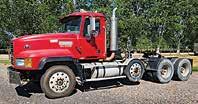

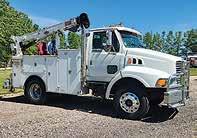



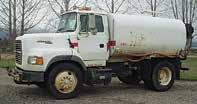





1979 Mack RL700
Water Truck
4000 gallon baffled tank, 300hp Mack, Eaton 8II, PS, Jake, hydraulic pto pump, front and rear spray heads, 30% 11r24.5 tires, runs and sprays good. $21,500
2005 Mack CL733 Tractor
500hp ISX Cummins, Eaton 18spd. Autoshift, 14,6K front, 44K rears, air ride, Jake, AC, Dual PS, wet kit, 350K miles, 70% 11r24.5’s, lift axle, runs and drives great. $31,500
1999 Ford F550 Service Truck
7.3L Powerstroke, 6spd manual, AC, PS, 120K miles, IMT 7500# crane, hydraulic outriggers & 40 CFM compressor, 12’ service body, drawers, 60% 245-19.5’s, runs and works great. $20,500
1997 Ford Service Truck
250hp 3126 Cat, 9spd., 33K gvw, locker, AC, PS, AB, tilt, cruise, 8,500# IMT crane, 11ft. IMT body, hyd. outriggers, 40cfm compressor, 100 gal. slip tank, new 11r22.5 tires and wheels, 141k miles, clean excellent driving truck. $43,500
1987 Freightliner FLC112 Tractor
350hp Cummins BC, Jake, 9spd, AC, PS, 60% 11r22.5’s, 38K rears, spring suspension, 160” W.B., air slide 5th, cab guard. $16,500
1992 Volvo WG Tractor
330hp N14, 9spd, Jake, AC, PS, 60% 11r22.5’s, 40K rears, spring suspension, 160” W.B., air slide 5th, cab guard.$17,500
1999 International 4700 5yd Dump
26K gvw, 210hp DT466e, 7spd, AC, AB, PS, 10-ft. dump box, runs and drives great.
$25,500
1992 Ford L9000 Water Truck
2500 gal. tank, PTO pump, front and rear spray, hose reel, 350hp ser. 60, 9spd., Locker, PS, AB, 50% 11r24.5’s, runs and sprays great. $25,500
1999 International 8100
305hp C10 Cat, 10spd., PS, AB, PTO, 18K front, 40K rears, air ride, 17-ft. double frame, 90% 22.5 tires, 345K miles
$15,500
2004 Chevrolet C4500
6.6 Duramax, PS, AC, AT, 90% 225r19.5 tires, 81K miles, 12ft. service body, 16K GVW. Runs and drives great.$15,500
1995 International 4900 Hi-Rail Crane Truck
210hp DT466, 10spd, AC, PS, AB,7.5 ton National crane exh. brake, 60% 22.5 tires, full rail gear, aux. hydraulics $15,500
2005 JLG G6-42A
4x4x4 telehandler
Bacteria hijack tick cell defenses to spread disease
By Devin Rokyta, College of Veterinary Medicine
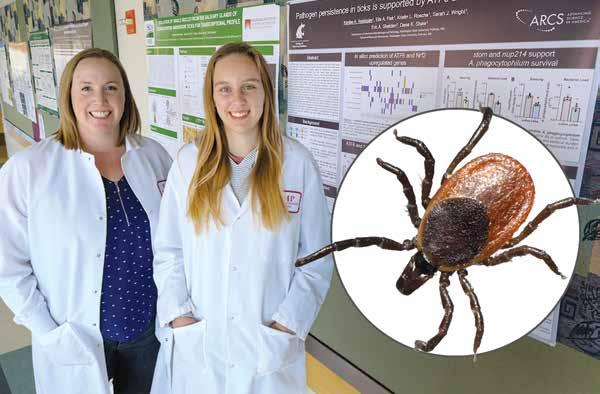
Washington State University researchers have discovered how the bacteria that cause anaplasmosis and Lyme disease hijack cellular processes in ticks to ensure their survival and spread to new hosts, including humans.
Based in the College of Veterinary Medicine, the team found that the bacteria can manipulate a protein known as ATF6, which helps cells detect and respond to infection, to support its own growth and survival inside the tick. The findings, published in the journal Proceedings of the National Academy of Sciences, could serve as a launching point for developing methods to eliminate the bacteria in ticks before they are transmitted to humans and other animals.
“Most research has looked at how these bacteria interact with humans and animals and not how they survive and spread in ticks,” said Kaylee Vosbigian, a doctoral student and lead author on the study. “What we have found could open the door to targeting these pathogens in ticks, before they are ever a threat to people.”
Vosbigian and her advisor, Dana Shaw, the corresponding author of the study and an associate professor in the Department of Veterinary Microbiology and Pathology, focused their research on Ixodes scapularis, also known as the black-legged tick, which is responsible for spreading both Anaplasma phagocytophilum and Borrelia burgdorferi, the causative agents of anaplasmosis and Lyme disease. Both diseases are becoming increasingly common and can cause serious illness in humans and animals.
WSU’s College of Veterinary Medicine
“Stomatin plays a variety of roles in the cell, but one of its key functions is helping shuttle cholesterol to different areas,” Vosbigian said. “The bacteria take advantage of this, essentially stealing the cholesterol they need to survive.”
When the researchers blocked the production of stomatin, restricting the availability of cholesterol, bacterial growth is significantly reduced. The researchers believe this shows targeting the ATF6-stomatin pathway could lead to new methods for interrupting the disease cycle in ticks before transmission occurs.
As part of the study, Vosbigian also developed a new research tool called ArthroQuest, a free, web-based platform hosted by WSU that allows scientists to search the genomes of ticks, mosquitoes, lice, sand flies, mites, fleas and other arthropod vectors for transcription factor binding sites — genetic switches like ATF6 that control gene activity.
“There aren’t many tools out there for studying gene regulation in arthropods,” Vosbigian said. “Most are built for humans or model species like fruit flies, which are genetically very different from ticks.”
Using ArthroQuest, the team found that ATF6-regulated control of stomatin appears to be prevalent in blood-feeding arthropods. Since the hijacking of cholesterol and other lipids is common among arthropod-borne pathogens, the researchers suspect many may also exploit ATF6.
6600 lbs. lift cap, 42-ft. lift height, JD 4045 turbo, 5600 hours, 4WD, Crab-Steering, 4 spd, powershift transmission, 48” Forks, 60% foam flled tires, weights 20K#, runs and works great
$29,500
1997 Gradall 534C-10 Telehandler 4x4, 40’ lift height, 4BT Cummins, 7100 hrs, outriggers, 10K capacity, 60% 14.00x24 tires, runs and works great
$27,500
The team discovered that when ATF6 is activated in tick cells, it triggers the production of stomatin, a protein that helps move cholesterol through cells as part of a normal cellular processes. The bacteria exploit this process against their tick hosts, using the cholesterol — which they need to grow and build their own cell membranes but cannot produce themselves — to support their own survival and success.
“We know many other vector-borne pathogens, like Borrelia burgdorferi and the malaria-causing parasite Plasmodium, rely on cholesterol and other lipids from their hosts,” Shaw said. “So, the fact that this ATF6-stomatin pathway exists in other arthropods could be relevant to a wide range of disease systems.”
The research was supported in part by a National Institutes of Health R01 grant and a College of Veterinary Medicine intramural seed grant.
Rainbow papayas
After the ringspot virus severely damaged Hawaii’s papaya crop in the 1990s, a plant pathologist named Dennis Gonsalves inserted the ringspot’s genetic material into the papayas to create a ringspot-resistant
fruit. Good news: it worked. Bad news: the papaya pollen drifted away and contaminated all the other papayas, so if you want to buy an organic papaya grown in Hawaii, good luck.
Dana Shaw, left, an associate professor in the Veterinary Microbiology & Pathology department of WSU’s College of Veterinary Medicine, and Kaylee Vosbigian, right, a PhD graduate student in the Immunology and Infectious Diseases department, pose next to one of their research posters. (Photo by College of Veterinary Medicine/Ted S. Warren) Inset: Ixodes scapularis, also known as a black-legged tick. (Photo by Robert Webster on Wikimedia Commons)
In the Garden: Why is my crop not producing fruit?
By
K-State Research and Extension news service
It’s common for vegetables like squash, cucumbers and melons to produce flowers but no fruit, said Kansas State University horticulture expert Cynthia Domenghini.
“Most squash, cucumbers and melons have separate male and female flowers on each plant,” Domenghini said. “Usually, male flowers appear first in the season. Female flowers have a swollen area beneath the petals while male flowers have a narrow base.”
Domenghini suggests checking garden plants to see if both flower types are present. If male and female flowers are present, observe the area for pollinators.
“If few to no pollinators are present, vegetables with separate male and female flowers may not produce fruit,” Domenghini said.
To pollinate the flowers, use a paintbrush to transfer pollen from a male flower to the stigma of the female flower. Domenghini recommends marking that flower and making note of whether it is the only one that sets fruit. If this is the case, the problem is likely a lack of pollinators.
She added that pollinator activity can be inhibited by weather.
“(Pollinators) are less active on cold or rainy days. The use of insecticides can also harm pollinators. If using herbicides, apply them in the evening when the flowers have closed for the day,” Domenghini said.
Additionally, high temperatures can cause vegetables to drop their blossoms prematurely.
“Tomatoes will stop producing fruit in temperatures above 95 degrees Fahrenheit. Production will resume once temperatures decrease,” she said.
Domenghini said it is important to ensure plants are receiving adequate water during this time.
“Applying nitrogen promotes vegetative growth. However, excessive amounts can inhibit flower and fruit production. Follow fertilizer recommendations to avoid this,” she said.
Domenghini and her colleagues in K-State’s Department of Horticulture and Natural Resources produce a weekly Horticulture Newsletter with tips for maintaining home landscapes and gardens. The newsletter is available to view online or can be delivered by email each week.
Hunting skills, recurve archery team applications for 2026
South Dakota State University Extension 4-H is accepting applications for the hunting skills and recurve archery teams that will compete at the 2026 4-H Shooting Sports National Championships.
Applications are due September 1, 2025, to State 4-H Office Attn: John, Berg Agricultural Hall 112 Box 2207E, SDSU, Brookings, SD 57007. Applicants must be currently enrolled in 4-H. For complete requirements and to apply, visit the SDSU Extension Events page and search “hunting”.
The applications will express interest in being selected to the team that will compete at the national contest on June 21-26, 2026, in Grand Island, Nebraska. Hunting team applicants must also complete a test at 1 p.m. CDT on September 6, 2025, at the Mitchell Shotgun Range.
Hunting skills is a skill- and knowledgebased contest including animal identification, orienteering and map reading and hunting knowledge, as well as shooting ability. The 2025 hunting contest included archery, sporting clays (shotgun) and rifle.
Recurve archery participants will participate in three days of archery events. The participants will shoot a FITA round, field archery event and a 3-D contest.
If selected for either team, competitors are expected to attend and participate in practice sessions when scheduled. The national trip is self-funded, except for registration, trading pins and shirt provided by the state committee.
For more information, contact John Keimig, SDSU Extension 4-H Shooting Sports and Safety Field Specialist.





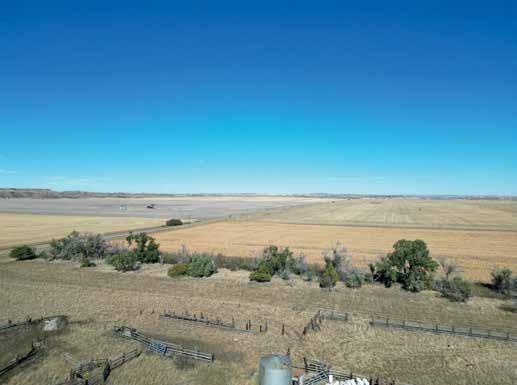





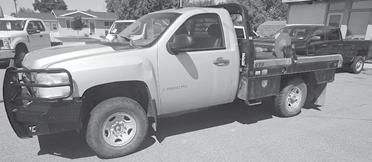

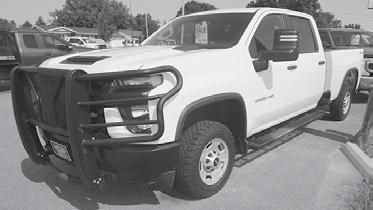
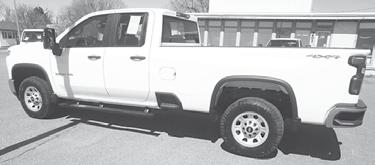
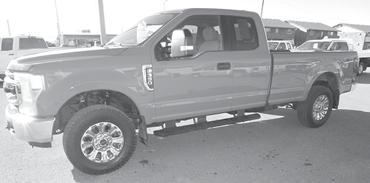
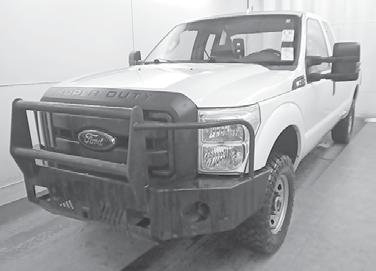



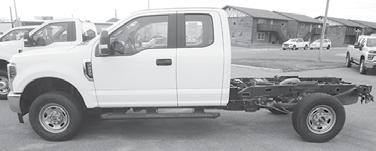
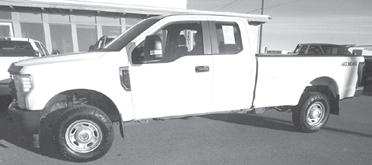



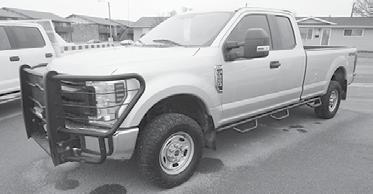
National Beef Reproductive Strategies Symposium
Beef industry professionals from across the country will gather in North Platte this fall for the 2025 Applied Reproductive Strategies in Beef Cattle (ARSBC) symposium, the premier national event focused on beef cattle reproductive management.
The event will take place September 17–18 at the D & N Event Center, 501 E. Walker Road. A pre-conference program, including a seedstock panel discussion and tour of Sustainable Beef Packing Plant, will begin September 16.
The ARSBC symposium provides a unique opportunity for producers, researchers and industry professionals to engage with leading experts on current and emerging reproductive technologies, genetic selection, and herd health practices. Rick Funston, professor and reproductive physiologist with University of Nebraska Extension, said the event provides practical, science-based information producers can apply directly to their operations.
“Our goal is to equip producers with the tools they need to make informed, cost-effective decisions that improve reproductive performance and long-term sustainability,” Funston said.
The program begins with a seedstock panel discussion hosted at TD Angus on September 16, followed by two days of presentations and panel discussions featuring nationally recognized experts. Topics will include:
Estrous synchronization protocols and AI techniques
Use of sexed semen and embryo transfer
Bull fertility, biosecurity and herd health
Genetic selection for fertility and longevity
The future of reproductive technologies
Featured speakers include Rick Funston, Matt Spangler, Jordan Thomas, Mario Binelli, Ky Pohler, Pedro Fontes and others representing universities, AI companies and genetic services. Industry partners such as ABS Global, Select Sires and Genex will also participate in panel discussions.
A highlight of the pre-conference events will be a guided tour of Sustainable Beef, a new beef processing facility in North Platte.
Please go to: https://cvent.me/1axz03 for registration and sponsorship details. Early registration is encouraged.
Heat effects on alfalfa
By Jerry Volesky, UNL
When it gets hot, alfalfa plants grow more slowly and moisture stress becomes common, even in moist soil. Production of high-quality hay is nearly impossible due to the high temperatures, especially when the heat does not subside at night. High night-time temperatures cause rapid respiration rates in alfalfa, burning off valuable nutrients that plants accumulated during the day. This often produces alfalfa hay with fine stems that contain high protein, but they also have high fiber and low relative feed value.
Another problem with heat, is how fast alfalfa plants mature. When it is hot, alfalfa may begin to bloom in less than four weeks. If you use blooming as a signal to harvest, this early bloom can be misleading. During hot weather alfalfa plants need more time, not less time to rebuild nutrient reserves in their roots because they burn off nutrients instead of moving them to the roots when it is hot. So, watch the calendar along with plant maturity to determine when to cut your alfalfa fields.
Finally, you might adjust the time of day when you cut hay. Some research has shown that cutting in late afternoon produces higher quality hay than cutting in the morning. However, on good drying days it may still be wiser to cut in the morning. When hay in the windrow stays above fifty percent moisture, plant cells continue to respire, burning away nutrients. Hay cut late in the day respires all night long, losing yield and quality. On good drying days, plant cells can dry enough to be stabilized before nightfall, reducing respiration losses.
Getting high quality hay is challenging. Both you and the weather must cooperate and even then, there are no guarantees.
#####
Police in Radnor, Pennsylvania, interrogated a suspect by placing a metal colander on his head and connecting it with a metal wire to a photocopy machine. The message, “He’s lying,” was placed in the copier and police pressed the copy button each time they believed the suspect wasn’t telling the truth. Believing the ‘lie detector’ was working, the suspect confessed.


McFARLANE
16-BAR HARROW











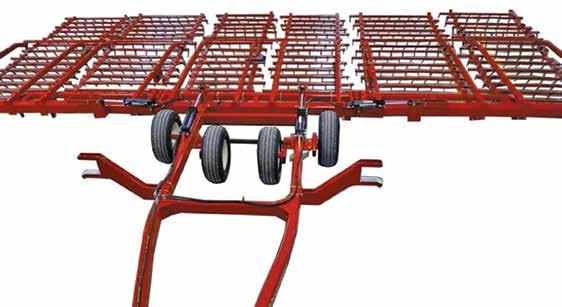

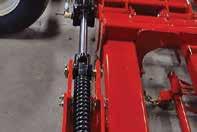

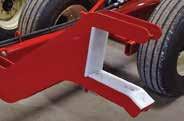




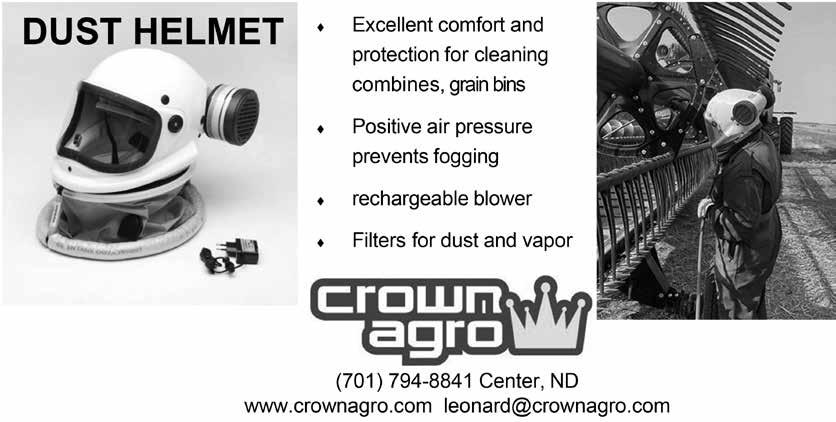




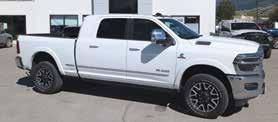

Farm Credit Services of America
Endows Deanship at UW
By UWEAGNEWS
In a transformational commitment to the University of Wyoming’s land-grant mission and one of the state’s most vital industries, Farm Credit Services of America (FCSAmerica) has established the Farm Credit Services of America College of Agriculture, Life Sciences and Natural Resources Deanship at UW.

This marks the fourth named deanship in the university’s history and represents a milestone in UW’s pursuit of academic excellence, industry partnership, and regional impact.
Support for the gift was provided, in part, by state matching funds.
Endowed deanships are among the most prestigious gifts a university can receive and are essential to attracting visionary leadership, driving innovation, and expanding the university’s reach far beyond the campus.
“The agricultural traditions of Wyoming shape who we are,” says UW President Ed Seidel. “With this extraordinary gift, FCSAmerica is helping ensure our university remains at the forefront of preparing students and communities for the future of agriculture.”

The endowment will directly support the leadership and strategic direction of the college, empowering the dean to invest in high-impact teaching, research, and community programs that elevate agriculture as a driver of innovation in Wyoming and the Mountain West. It also will serve as a catalyst for interdisciplinary work at the intersection of natural resources, food systems, environmental stewardship, and rural resilience.
“Endowed deanships are game changers,” says Kelly Crane, dean of the College of Agriculture, Life Sciences and Natural Resources. “They allow us to lead boldly, attract exceptional talent, and respond to the complex challenges facing Wyoming communities and the industries that support them.”
FCSAmerica, a mission-driven financial cooperative serving farmers, ranchers, and rural residents in Wyoming and neighboring states, has long recognized the value of education and leadership to the health of rural economies. This new deanship builds on a multiyear partnership and continues FCSAmerica’s legacy of making an impact with its philanthropy.
“At Farm Credit Services of America, we believe the future of agriculture depends on strong, visionary leadership. That’s why we’re proud to support UW in preparing the next generation of leaders who will sustain and evolve this essential industry,” says Jason Edleman, senior vice president of business development for FCSAmerica.
This gift also aligns with the university’s commitment to securing strategic investments that elevate UW as a national leader in its areas of distinction, including agriculture and natural resource stewardship.
“This deanship is a powerful affirmation of UW’s mission and its growing influence in the West and beyond,” says John Stark, president and CEO of the UW Foundation. “We are deeply grateful to FCSAmerica for their vision and partnership.”
The new endowed deanship in agriculture is part of a larger, ongoing effort by UW, the UW Board of Trustees, and the UW Foundation to invest in and support endowed positions that strengthen faculty and support student success. This deanship follows similar ones in the colleges of Education, Engineering and Physical Sciences, and Business, helping set UW apart as a national leader for land-grant institutions in using endowed deanships to build strong academic programs.
These positions play an important role in attracting talented leaders, supporting innovative work, and ensuring lasting excellence across the university.
“As Wyoming’s flagship university, UW continues to lead with purpose — preparing graduates not only for success, but for service to the land, the people, and the economy of the state and region,” Seidel says. “The Farm Credit Services of America Deanship stands as a bold step forward in that journey.”
For more information about this gift or ways to support the College of Agriculture, Life Sciences and Natural Resources, visit www.uwyo.edu/foundation.
Kelly Crane, dean of the College of Agriculture, Life Sciences and Natural Resources.
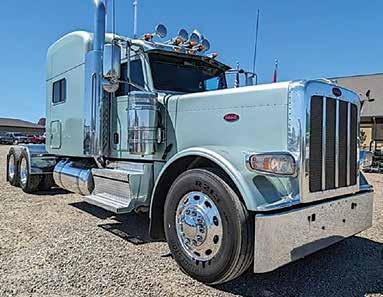






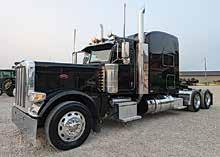








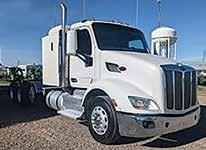
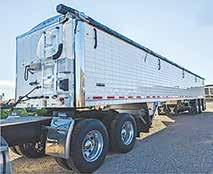

HAY FOR SALE
2024 alfalfa, irrigated, 4x8 big squares, tarped and tested.
Approximately 500 bales
Located 35 miles east of Williston, North Dakota on Hwy 1804
Priced to sell
Call Dallas (701) 641-2111 or Garrett (701) 641-3154
Certified Seed For Sale
Winter Wheat Spring Wheat
Northern
Nothing flashy - just a good wheat
Flathead
Grows fine in the desert of Toole County
Good option for those who blend seed
Early maturity

Dagmar
Vida
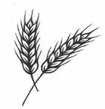
Trial results on MSU website - take a peak
Brian Aklestad Galata, Montana (406) 460-2873


Henry Kallis (605) 639-1904
Spearfish, SD
Scott Schmiedeke (406) 240-2572 Victor, MT See us on the web: www.tte-inc.com


2013 Gehl RS6-42, 2760 hours, OROPS, work light package, 3-way steering, frame tilt, 60” fork carriage, 54” forks, new tires, 6600 pound lift capacity, 42-ft. reach, job site ready. Located in Victor, MT $46,900
2013 Kaufman AP-22.5-25 equipment trailer, 20-ft. deck with 5-ft. beaver tail, 101” wide, 45K GVWR, 22.5 tires at 80%. Very nice trailer with very little use since new. Located in Victor, MT $16,900
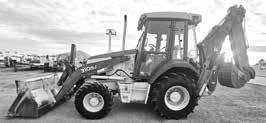
2008 John Deere 310SJ 6245+/hours, enclosed cab with heat and air conditioning, cloth air ride seat, Power Shift transmission, 4x4, Extend-A-Hoe, switchable pilot controls, new rear tires, 24” backhoe bucket, diff lock, has been very well maintained, has been through the shop, recent service, excellent condition. Located in Spearfish, SD $52,500
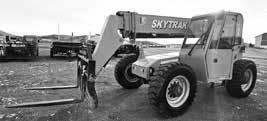
2014 SkyTrak 6042 3225 hours, enclosed cab with heat, auxiliary hydraulics, manual coupler, 48” forks, 74” carriage, nice foam filled tires, 3-way steering, hydraulic frame tilt, 6000 lb lift, 42-ft. reach, has been through the shop all repairs have been made, just serviced, telehandler is in excellent condition. Located in Spearfish, SD $44,500

2012 SkyTrak 10054 telehandler, 3785+- hours, 72” carriage, 60” forks, 3-way steering, stabilizers, frame tilt, foam filled tires, 10,000 pound lift capacity, 54-ft. reach, recent service, excellent condition, job site ready. Located in Spearfish, SD $62,900 $46,500

2019 Kubota SVL75-2, 995 hours, enclosed cab heat and AC, hydraulic coupler, 78” bucket with bolt on edge, 75 hp, 6570 pound tip load. Very nice condition. Located in Spearfish, SD $61,000
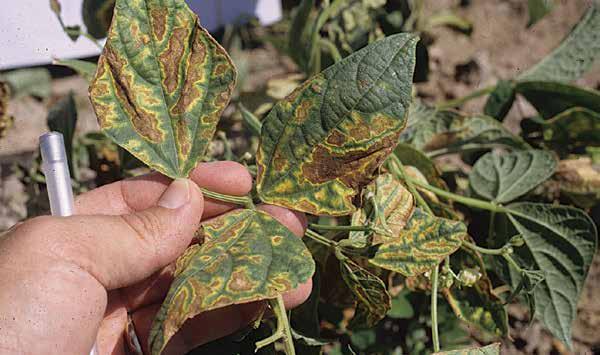
Bacterial diseases in dry beans in Nebraska: a potential problem
By Bob Harveson, Extension Plant Pathologist
With the recent thunderstorms, hail, and higher temperatures, growers may experience widespread bacterial disease problems in dry beans throughout the Panhandle. Growers should be on the lookout for the major bacterial diseases and be able to identify these pathogens.
Four major bacterial diseases affect Nebraska dry bean crops: common blight, halo blight, brown spot, and wilt. Each disease is caused by a distinct pathogen and favored by environmental conditions involving high levels of moisture.
These diseases are enhanced when plants are wounded by storms, hail, or any physical damage from humans, animals, or farm equipment. Bacteria cannot infect plants by themselves but instead require either natural openings in leaves or plant wounds to initiate infection. Storms with high winds and hail provide the perfect opportunity for bacteria to become established, as they can cause wounding and will move the pathogen and/or infected plant residues between and within fields.
Bacteria can survive in crop residues until environmental conditions favorable to infection occur. Daily temperatures that promote the development of each respective disease vary slightly:
halo blight — less than 80°F brown spot — less than 85°F common blight and wilt — greater than 85°F
Making the correct diagnosis can also be critical to control. Because the efficacy of several control measures depends on the particular pathogen involved, the first and most important step is to accurately iden-
tify the pathogen in order to make the right management decision.
Management
Disease development and recommended management are similar for all these diseases. Unfortunately, bacterial diseases are not easy to manage, and good control options are limited. Chemical control using copper-based products is variable, depending on pathogen, weather, and disease pressure. Recently, we have seen some success in infested yields using products containing hydrogen dioxide as the active ingredient. Genetic tolerance is available in a few cultivars, but complete disease resistance packages are difficult to obtain. The plant pathogen and dry bean breeding programs are both currently working toward producing new cultivars with better resistance to bacterial diseases. Several popular cultivars have good levels of resistance to certain bacterial diseases, but are more prone to infection by rust or white mold. Other cultural practices that may aid in management include:
Avoid planting infected seed or beans near fields infested the previous year. Implement some form of tillage to accelerate decomposition of infested tissues, which limits bacterial survival. Avoid unnecessary wounding of plants. Any type of mechanical damage can open the door for bacterial pathogens to infect plants. Even walking through infected fields in the morning when wet with dew provides an opportunity for spreading disease. It is often better to wait until afternoon when the foliage has dried to enter fields for scouting or field operations.
Mid season forage check
By Ben Beckman, UNL
As we move through midsummer, it’s time to evaluate our forage situation. Depending on your location, meadow hay harvest might be starting, you could be on your second cutting of alfalfa, or preparing to cut warm-season annual crops soon.
Now is a great time to assess your forage inventory. Most perennial grasses have completed their growth, and multiple alfalfa cuttings should be done. Even if not all meadow hay and summer annuals are harvested, we can estimate our total yield for the year.
Ask yourself: Does our current yield meet our winter feed needs? If not, consider options like late planting of summer annuals or fall forages like oats for grazing. Be cautious with planning fall hay harvests
however, due to drying challenges. If you have excess hay, plan on how to manage it. For selling or storing, prevent quality loss by keeping hay dry. Store it under a roof or tarp if possible, elevate it from the ground, line bales with the topography and sun, and ensure good airflow around bales to maintain quality.
Finally, if you haven’t done so, send in hay samples for quality testing. Hay quality varies year-to-year, even from the same field. Testing helps us match hay to livestock needs or set appropriate selling prices. Assessing forage stores now, while plants are still growing and hay is being harvested, helps close forage gaps, manage surplus, and ensure quality use later.
Bacterial wilt symptoms on dry bean leaves. Photo by Bob Harveson



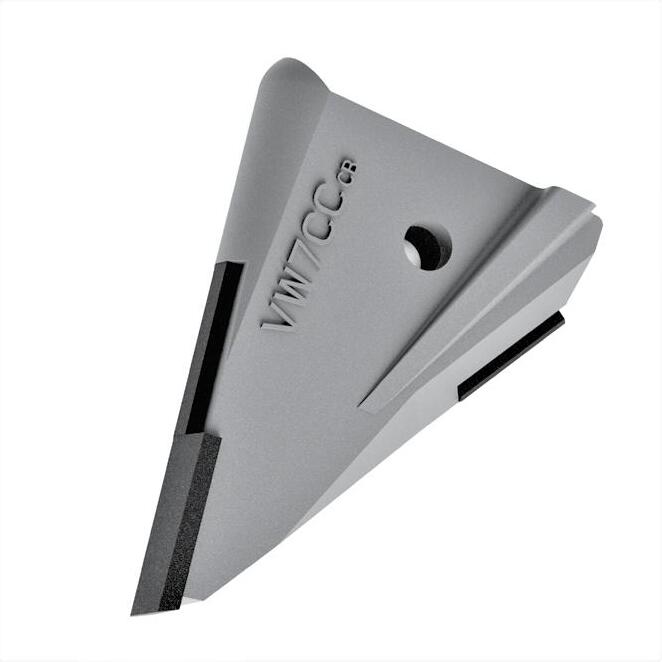

























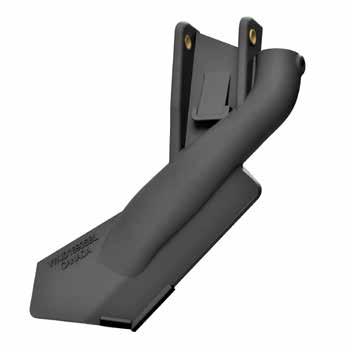


TRUCK & TRAILER FOR SALE
2008 Kenworth T800W Tridem, Cummins ISX-600, 18 speed, Aerocab, 23K miles. Rare one owner, like new condition. No Def
XL
CHDG
Sure Trac LoPro 6x10, 10k
ENCLOSED CARGO
Dakota Gardener: Common names
By Joe Zeleznik, Forester, NDSU Extension
You’re not from around here, are you?
It was my first spring in North Dakota and I was talking with some tree-care professionals in the Bismarck area. We were discussing some health problems that trees had suffered over the winter. They were basswood trees, or so I thought. The Bismarck folks called them American linden trees. And we were both correct.
American linden is the same thing as a basswood. We can use the scientific name – Tilia americana – to ensure clear communication, but not many people use scientific names. Common names are often regional in nature. Do you call them juneberries, saskatoons, serviceberries or shadbush? All of these names refer to the same genus – Amelanchier. There are several related species that produce wonderful fruit in June and July. And they’re great in ice cream.
More than once I’ve had professionals tell me that I was using the wrong common name. This surprised me, as there is no such thing as a wrong common name. They’re simply different. And that’s okay.
Yes, sometimes common names are used incorrectly, and again, that’s why we use scientific names.
I often hear people discussing sick “red maples” in North Dakota. Red maple – scientific name Acer rubrum – is sometimes planted as an ornamental here, but not often. Quite simply, they just don’t do well in our state.
Instead, people are probably referring to some type of Freeman maple – a hybrid between red maple and silver maple (Acer saccharinum). Those are much more common around here; their performance across the state seems to be hit-or-miss.
Regardless, clear communication is critical, especially in my line of work.
FLATBEDS
Another challenge is when one common name refers to two or more distinct species. Around here, we often hear about “Chinese elm.
In North Dakota, this common name refers to Ulmus pumila, which is known within the tree industry as Siberian elm.
If you go to Texas and discuss Chinese elm, folks there will think you’re discussing Ulmus parvifolia. It’s also known as lacebark elm.
Confused yet?
That’s the challenge with common names. They’re local/ regional, and they can be very imprecise.
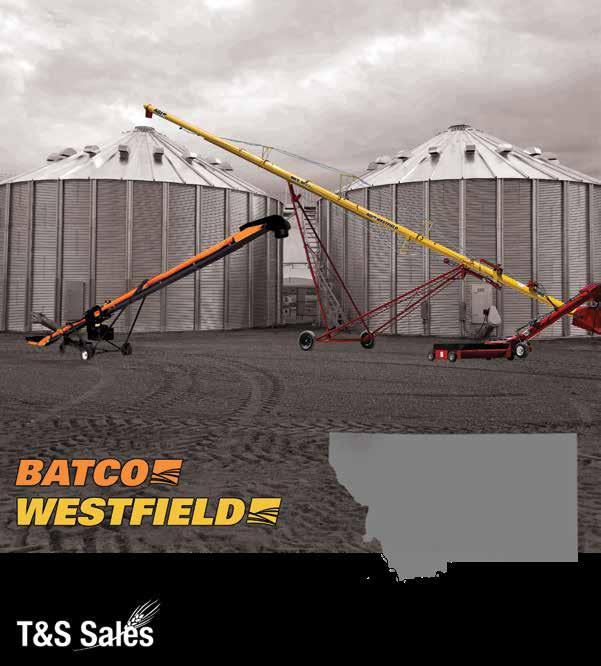


But common names also allow for easy communication with a non-technical audience. That’s also great for someone in my business.
Geographical terms are sometimes used in common names which offer a great advantage. Northern red oak and southern red oak are two different species. I’ll give you one guess as to what parts of the country you would look in to find western white pine or eastern white pine.
Scotch pine – or Scots pine – is found in Scotland and across much of northern Asia. English oak is native to England and most of Europe.
But Norway pine isn’t from Norway. It’s found in Minnesota, Wisconsin and Michigan.
Maybe I’ll stick with those scientific names after all.
#####
In Ancient Rome, urine was often used as mouthwash. This is because urine contains a very high ammonia content, and ammonia is one of the most powerful and readily available natural cleaners on this planet!

Pictured here is Rhett and Reece Hastings, 4-H members of the Ulm Pishkin Club in Cascade County.
Make it with wool
There is a lot of excitement pulsing through the Make It With Wool program this year. There will be an addition of three more contests connected with the National Make It With Wool portion of the program. There will be the Sweater contest which was in its maiden year last year, and new this year is the Producer to Crafter Partnership contest, and the Recycle – Upcycle contest. These three additions to the National MIWW program are being sponsored by RE Synergy and being promoted by Back Yard Green Films and Make It With Wool. The specifics of these contests are being worked on now and the entry/information sheets will be available soon on the National Make It With Wool website at makeitwithwool.com, and we will also include that information on our Montana MIWW Facebook page Montana Make It With Wool, along with the Montana Woolgrowers Association website at mtsheep.org/make-it-with-wool/ as soon as the entry/information sheets are finalized.
Along with the new energy at the National MIWW level, here in Montana we are also gearing up for another fantastic year of creativity through our traditional garment making contest, and the Quilt, Appliqué Project, and Afghan contest. Brochures and Entry Forms will have been distributed to Contest Coordinators and Extension Offices by the time you read this article in the Trader’s Dispatch.
The MIWW Quilt, Appliqué Project, and Afghan contest allows designing and creativity with fabric and yarn that is at least 60% wool. Entries suggested are quilts, wall hangings, throws, wool appliquéd projects, and knitted or crocheted afghans.
The MIWW garment contest utilizes sewing, knitting, crocheting or felting methods with fabric or yarn made up of at least 60% wool to create the entries. Montana MIWW utilizes six Districts to promote, plan and hold contests each year.
Currently, Montana MIWW has Contest Coordinator vacancies in District #4 and District #5. District #4 covers Big Horn, Carbon, Fergus, Golden Valley, Musselshell, Petroleum, Stillwater, Sweet Grass, Wheatland, and Yellowstone counties. And District #5 covers Daniels, Dawson, Garfield, McCone, Phillips, Prairie, Richland, Roosevelt, Sheridan, Valley, and Wibaux counties.
The basic duties for a Contest Coordinator are to:
Promote the MIWW program throughout the District via mailings, newspaper articles, newsletter articles, and word of mouth.
Organize and conduct the District contest (held in October).
Secure donors to help defray costs (mailings, prizes, and contest expenses).
If you are interested in becoming part of the Montana Make It With Wool program as a Contest Coordinator, please contact Amanda Powell, Montana MIWW Director, at aspowell11@hotmail.com or 406-945-3880 (leave a message).
If you are on Facebook and have not liked our Facebook page, we ask that you go and like it – Montana Make It With Wool. The Montana MIWW brochure, Montana MIWW entry form, and MIWW Quilt, Appliqué Project, and Afghan contest brochure can be found uploaded on our Facebook page and the Montana Woolgrowers Association website at mtsheep.org/make-it-with-wool/.
National Potato Day
This holiday is always observed on August 19th

This a day to celebrate and enjoy a few potatoes. The versatile spud can be enjoyed in some way for breakfast, lunch, dinner, and as a snack. While it can be eaten raw, it is usually cooked, boiled, baked, mashed, or fried. It is used in countless recipes. What really makes the potato stand out, is the many things you can put on or in it, as demonstrated by the loaded baked potato. Regardless of how you cook it, or what you put on it, Americans can’t seem to get enough of the starchy spud. And, we just love to cook with potatoes, as they are very ap-peeling!
Potatoes are one of the largest vegetable crops in the world. They were first cultivated in Peru, around 5,000- 7,000 BC. Pardon the broad estimate, but records were sparse back then, often written on the inside wall of a cave. While most potatoes grow to about the size of your fist or less, the largest potato ever grown, weighed in at 18 pounds, 4 ounces. Now, that’s a whole lot of French fries!
In celebration of National Potato Day, make certain to include potatoes at every meal today, and for snacks, too!

THANK YOU Connelly Angus for buying my 2025 market goat Moose
Rocky Ridge Angus for buying my 2025 market lamb Dodger Reagan Aaberg
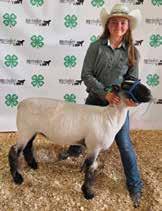
EQUIPMENT FOR SALE
2010 Massey-Ferguson 5455 tractor, MFWD, heat/ air/radio, Dyna 4 transmission, 3 remotes, 540/1000 PTO, 95 hp, 5141 hours (hours may change slightly because tractor is in use). Good rubber, front tires new condition
$28,500 obo Vermeer 605K round baler, new bearings and chains, 540 PTO, 6x5 bales, twine tie
$3550 obo Lehman round bale retriever, hauls 8 total (2 wide x 4 long), heavy duty
$3950 obo Phone (406) 490-5179, Located in Melrose, MT If no answer please leave message
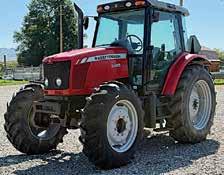







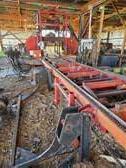


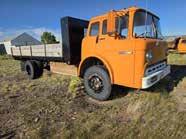
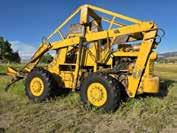



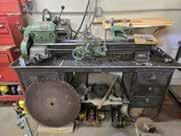








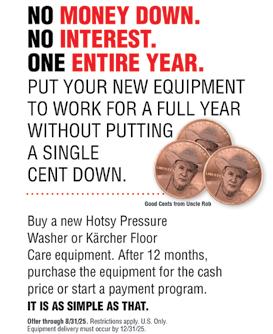




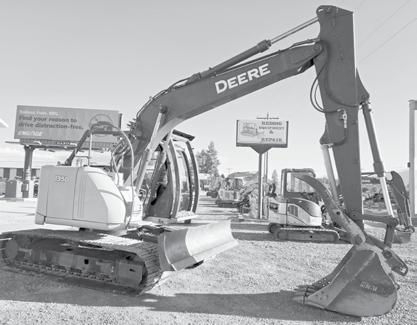
The buzz around hydration
ARS Researchers find that hydration is key to bee survival in hot and humid environments.
We humans are always reminded to hydrate, hydrate, hydrate. Among other benefits, proper hydration helps make sure our organs function properly, helps improve our brain function, helps regulate our temperature, and helps with digestion. We are not the only species, however, that depends on proper hydration for healthy living. It turns out bumble bees need to stay hydrated as well.
“For insect pollinators like bumble bees to survive and reproduce, they need to maintain an adequate hydration level,” said Karl Roeder, Research Entomologist at the North Central Agricultural Research Lab in Brookings, SD. “Erratic weather patterns have the potential to increase the rate at which insects lose water. This increased desiccation stress may lower survival rates, but more work is needed to link individual physiology to the dynamics of wild and managed bee populations.”
ARS postdoc Jamieson Botsch used samples of the common eastern bumble bee to measure how they resist and tolerate water loss across a range of temperature and humidity conditions.
Because of their small size, terrestrial insects like bumble bees can struggle to maintain proper water levels. As the air becomes drier, as predicted for some parts of the country, they may become more susceptible to dehydration – what Roeder called “desiccation stress”. Many insects have adaptations that help them slow water loss or tolerate higher levels of dehydration. However, little is known how temperature and humidity combined may affect a bumble bee’s water balance.
“Warming temperature and drying humidity increase the likelihood that individual bees experience desiccation stress,” said Jamieson Botsch, an ORISE postdoc at the Lab. “In environments where floral resources are scarce, this physiological stress may be exacerbated because bees will be less able to replenish the water that they lose.”
Understanding their physiological capacity to survive and prevent water loss in hot and dry conditions provides an important first step in developing management practices that support and enhance native and managed pollination in agricultural systems.
“We are only beginning to understand the sensitivity of bees to desiccation and the interactive effect of warming and drying conditions,” Botsch said. “This study begins to address this gap using one species of bumble bees as a model system.”
Roeder and his research colleagues in Brookings measured the ability of the common eastern bumble bee (Bombus impatiens) to resist and tolerate water loss across a range of temperature and humidity conditions. This species was chosen for the study because it is both found unmanaged in the wild and is sold commercially for pollination services. Researchers placed 540 individual bumble bee workers in small chambers that either had low (<5% relative humidity, RH), moderate (50% RH), or high humidity (>90% RH). Inside these chambers, bees did not have access to nectar. The bees were checked every 2-4 hours and researchers measured the rate at which the bees lost water and total water content.
The results concluded that the bees were indeed sensitive to temperature and humidity. Bumble bees survived three times as long in the coolest temperatures as they did in the warmest temperatures, with no effect of humidity on survival time. However, they lost water much faster in warmer and drier environments. These results highlight the importance of bees’ access to nectar, their primary water source, and nesting environments that allow them to avoid stressful conditions.
“Nesting environments are incredibly important for bees,” Roeder said. “In addition to selecting favorable nesting sites, there is evidence that social bees like bumble bees and honey bees are able to partially regulate the environment within their nests through their behavior. The extent to which nests can mitigate environmental conditions is a very important area of ongoing research.”
From these results, researchers are evaluating the sensitivity of three other economically important bee species (honey bees, alfalfa leafcutter bees, and blue orchard mason bees) to humidity. They are also studying how these managed bee species compare to native bee species in their ability to prevent water loss.
“Insect pollinators provide an important ecosystem service for growers,” Roeder said. “Understanding their sensitivity to different stressors will allow us to develop management schemes that promote their health.” – By Todd Silver, ARS’s Office of Communications



2024 Case IH



2022 Case IH 8250 Less than 300 hours on engine and rotor, machine is in “like-new” condition, Pro 700 monitor and Nav, 2/372 has a hydraulic grain tank cover and 40-ft. unload auger. Stk. #420875 $430,208


2023 Case IH 8250 in great condition rock trap chopper straw spreader lateral tilt folding auger interest waiver available oac for a limited time. Stk. #440538 $519,340
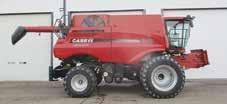
2016 Case IH 8240 Rock trap, chopper, straw spreader, grain tank, ext lateral tilt, previously used with 45-ft. header. Stk. #440541 $148,540




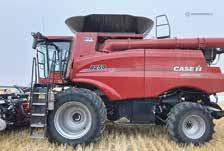




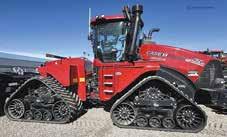

ture monitor, guidance ready, guidance complete, pivot spout, hydraulic cover, cross auger control, leather, block heater, fine cut chopper, tier IV, Hydro transmission, rotor type-str, rock trap, chopper, straw spreader, grain tank extension, lateral tilt, front duals, front tiresIF520/85R42 R1-80%, rear tires-750/65R26 R1W-80% 12 month interest waiver available for a limited time followed by CQR OAC. Stk. #440549 $158,860
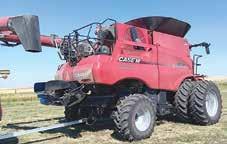
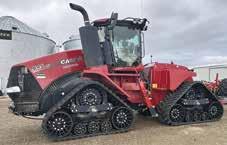


2023 Case IH 8250 319 hours. Stk. #420985 $530,000
Roosevelt Service Inc.
Chester, MT
Roosevelt Service Inc. in Chester offers a wide range of fluid power options for farm, construction, and automotive applications. Whether the need requires quarts, gallons, buckets, drums, or shuttles. Roosevelt’s oil warehouse keeps vital products on hand. With weekly supplier deliveries, and for some products - daily deliveries, what you need to keep going is not far away

We strive constantly to supply our customers with what they need and seek to offer the best products on the market. We carry an extensive selection of Hotshot’s Secret and are continually adding to our liine of products.
Drop us a line or stop by the station!
219 E Washington Ave, Chester, Montana (406) 759-5278 email: station@rooseveltservice.com Has
Keep Roosevelt Service in mind for:
• Bulk fuel delivery
• Tires and tire repair
• Automotive oil changes
• Bulk oil for the shop and farm
• Bulk DEF
• Bulk RV antifreeze (winterizing the sprayer)



Unusual gene duo in wild wheat offers new hope against crop diseases
By Erin Matthews, University of Saskatchewan
Bacteria, viruses and fungi are masters at evolving new strategies to infiltrate plants and cause disease that harm crops. To get ahead of these pathogens, University of Saskatchewan (USask) researchers like Dr. Valentyna Klymiuk (Ph.D.) and Dr. Curtis Pozniak (Ph.D.) are studying wild wheat varieties that carry resistance to these harmful pathogens. This led them to discover something they’d never encountered before—a unique pair of genes that work together to protect against disease.
To support its variety development program, USask’s Crop Development Center (CDC) has been diving back into the gene pool of wheat and screening its wild relatives for useful traits that can be effectively deployed in new wheat cultivars.
Wild wheat has not been domesticated, so it cannot be used directly in breeding, but it contains useful diversity to respond to environmental threats. This makes it ideal for learning new methods of crop resistance.
Research at the CDC focuses on improving crop varieties. By integrating basic research into crop breeding, the CDC translates scientific discoveries into new high-yielding varieties that can be used by growers.
“Part of our research is keeping one step ahead of pathogens by identifying new resistance genes which ideally could be stacked, like Lego blocks, so the pathogen can’t easily overcome the resistance,” said Klymiuk.
Looking deeper into a wild strain of wheat, Klymiuk and Pozniak found that it demonstrated significant resistance to stripe rust, a type of fungal infection that is one of the top five diseases of concern for producers. Klymiuk and Pozniak soon realized that the resistance they identified in this wild strain was behaving differently than expected.
Their findings were published in Nature Genetics.
“Once we started assessing the resistance, we could see that it was different to others that we have studied before. The resistance was acting in an atypical way, which signaled a very different plant response,” said Pozniak, professor and director of the CDC at USask. “We were quite intrigued about what was really going on.”
Klymiuk, a research officer in Pozniak’s program, said that typically one gene is responsible for the expression of a stripe rust, but in the case of this wild wheat, they determined that two genes working together as a pair were required for full resistance. One gene is responsible for sensing the invading pathogen while the other activates the immune response of the plant to stop the pathogen in its tracks.















To confirm which genes were responsible for resistance, Klymiuk’s experiments turned each of the genes “off” like flipping the breaker to see which room of the house goes dark. When the gene is switched “off” the plant can no longer protect itself and becomes susceptible to the pathogen. However, this unique gene pair proved to be a bit of an anomaly, which caused a hiccup in the researcher’s results.
“Initially, we thought only a single gene was responsible. Most of our results made sense but there were a few plants that didn’t give us the expected results. This was a head scratcher, so we went back to rethink our experiments and to test if two genes were actually involved. Once we retested, the results became clear,” said Klymiuk.
The team dug deeper and found that the two outlier genes interact at a protein level, physically coming together to initiate the resistance response.
“A lot of the time when things don’t line up the temptation is to move forward, but we really dug into the weeds to figure out what was going on and that’s when we realized that the genes were communicating and working together and that’s what’s really new,” said Pozniak.
“If we had given up after the first set of experiments, we never would have concluded that two genes coming together was needed for resistance. It’s a great science story.”
Identifying complex gene interactions that offer greater resistance, like the ones published in this most recent paper, are crucial in the continued battle against crop disease. Because of the genes’ odd behavior, Klymiuk developed a DNA test to ensure the pair of genes are present in new plants. With this DNA test, these genes can be used routinely in the breeding program.
These discoveries allow the CDC to add robust tools to their genetic tool kit, helping to produce stronger and more resilient varieties of wheat for many years to come.
“The interconnectivity of research and breeding lets us CONTINUED ON PAGE A27
Unusual gene duo in wild wheat offers new hope
keep an eye on the prize and develop the most productive varieties for farmers. This project also really helps us understand and appreciate the complexity of plant biology. Plants really need to adapt, and they do it in cool and interesting ways,” said Pozniak.









We’d appreciate it if you tell an advertiser you read his ad in the Trader’s
TRUCKS AND EQUIPMENT FOR SALE
2003 International 9400l Eagle semi 5th wheel truck, Cat engine, 26-ft. end dump trailer with roll tarp.
1997 Kenworth T800 truck, Detroit engine, 20-ft. box with hoist, beet and grain endgates and a rolltop.
Krause 20-ft. offset disc (new blades in front). John Deere 630 24-ft. tandem disc. Phone (406) 679-1136


























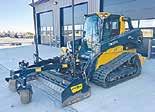





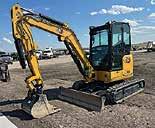





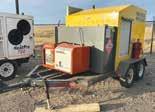






hours, great undercarriage. $64,500 or Rent
2013 SDI side dump, triple axle air ride, plumbed for pup, tarp. Call For Price Kuhn 20-ft. manure spreader, triple horizontal beaters, PTO and controls. Good used take off. $15,000
Kutter 72” bush hog. $750
2015 Freightliner Coronado Detroit DD16 600hp (new in 2022), 13 speed, steerable lift axle, lockers, 36” bunk, 25” WB. $47,500
rears, 20k
Hyster H90FT 9k forklift, dual front tires, 2 stage mast. Coming In 2017 Polar triple
Peterbilt 365 Cummins ISX12 450hp, 18 spd., 20k fronts, Tridrive 69k rears, full lockers, 24ft. of frame, 232k miles. $59,500
HARVEST IS COMING
Managing hail-damaged pastures, alfalfa, and annual forages
By Aaron Berger, Nebraska Extension Livestock Educator | Brock Ortner, Nebraska Extension Livestock Educator
Parts of the Nebraska Panhandle have recently experienced severe hailstorms. This has left many producers evaluating what approach to take when managing these severely damaged crops. Where before grass, alfalfa, or annual forage was standing, now it’s been pummeled into the ground.
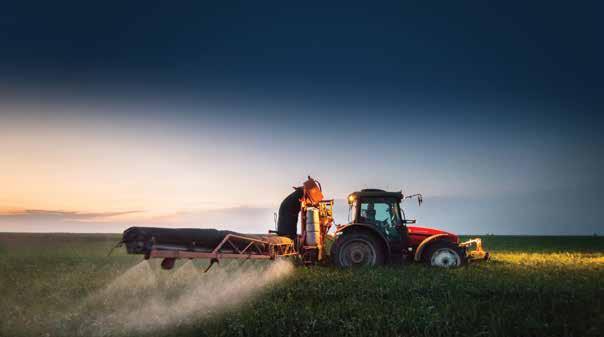
The impacts of a severe hailstorm on rangeland and pasture are not unlike other severe defoliation events. Perennial forages will recover, but it is beneficial to give them ample time to rest and rejuvenate by removing grazing animals and allowing them a period of uninterrupted growth. The recovery time may need to be extended, especially if plants were drought-stressed and moisture conditions are limited. Stacking insults such as drought, grazing, and hail damage can significantly impact production potential in future growing seasons. Giving plants the opportunity to fully recover by delaying grazing on hail-damaged pastures until fall, or potentially next growing season, will limit the negative impact of hail on plant productivity in subsequent years.
Nebraska Extension Educator Ben Beckman states in a recent “Pasture and Forage Minute” that for alfalfa fields, damage assessment and timing are key to recovery. Work from the University of Wisconsin advises that fields with more than two weeks before harvest can usually be left alone, with some yield loss expected. If terminal bud damage exceeds 50 percent in alfalfa crops less than two weeks before planned harvest, one can proceed with normal harvesting, expecting some yield loss. For severely lodged crops, waiting for three to four days for plants to right themselves vertically before cutting is beneficial. Disk mowers are better at picking up lodged crops than sickle bars, but for both, tilt the bar or disc forward for better forage pickup. If damage is severe and the yield isn’t worth the effort, focus on managing and harvesting the regrowth.
Price Truck & equiPmenT






chip truck
1989 International 41-ft. bucket truck, diesel, automatic
1981 International 1800 4x4 flatbed, 14,000 lb knuckle
2006 Ford F650 ladder truck, needs a generator. $17,500 12-ft.


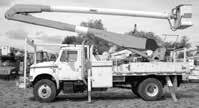


For summer annual forages that have been damaged, giving the plants time to assess regrowth is beneficial. Depending on the stage of plant growth, the type of annual forage, and subsequent growing conditions, plants may regrow and still produce a crop. In some circumstances, replanting may be necessary if the potential for crop recovery is limited. Unfortunately, hail damage to annual forages can also render them less competitive with weeds, potentially necessitating herbicide applications to reduce weed pressure.
Nebraska Extension Educators and Specialists are available to discuss options and provide resources to producers as they evaluate their management options for grasslands, alfalfa, and annual forages damaged by recent hailstorms.
Late grasshopper management
By Samantha Daniel, UBNL
As we enter a period of hotter and drier weather, grasshoppers will begin to move into crops from field edges. In the coming weeks, be sure to scout your fields to ensure defoliation from grasshopper feeding is kept at a minimum.
One of the best ways to scout for grasshoppers is to use the square foot method. Randomly select an area several feet away and visualize a one square-foot area around that spot. Walk toward this spot and count the number of grasshoppers you see in or jumping out of this area. Repeat this procedure 18 times and divide the total number of grasshoppers by two. This will give you the number of grasshoppers per square yard. Economic thresholds for grasshoppers range from 8 to 40 grasshoppers per square yard, depending on a variety of factors.
If grasshopper levels have reached threshold, treatment with an insecticide may be feasible as long as pre-harvest intervals are considered. Many insecticides used for other insects in alfalfa and other forages are also labeled for grasshoppers. For current insecticide recommendations for controlling grasshoppers in rangeland, forages, alfalfa, and other crops, please contact your county extension office.
It’s also important to remember that our goal isn’t to completely eradicate grasshoppers from our fields, but to reduce their numbers to below threshold levels and give our crops a chance to “win the race” against pests until the first hard freeze of the season.










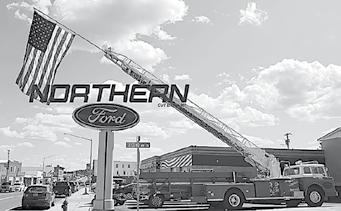





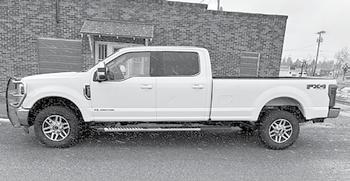











#####
I made a beginner’s mistake and went shopping on an empty stomach. I am now the happy owner of aisle 7.
#####
Today, I found a mosquito, I sat right next to it and kept on buzzing so he would see what it’s like, not being able to sleep!
Recipe Patch by Geri
Cheesy Green Bean
Casserole
3 cans cut green beans
2 cans (10-3/4 ounces each) cream of mushroom soup, undiluted
1 can (8 ounces) sliced water chestnuts, drained
1 cup 2% milk
6 bacon strips, cooked and crumbled
1 tsp pepper
1/8 tsp paprika
4 ounces cubed Velveeta
1 can (2.8 ounces) French-fried onions
In a 4-qt. slow cooker, combine the green beans, soup, water chestnuts, milk, bacon, pepper and paprika. Cover and cook on low for 5-6 hours or until beans are tender; stir in cheese. Cover and cook for 30 minutes or until cheese is melted. Sprinkle with onions.
Lemony Red Potatoes
1-1/2 pounds medium red potatoes
1/4 cup water
1/4 cup butter, melted
3 Tbls minced fresh parsley
1 Tbls lemon juice
1 Tbls minced chives
Salt and pepper to taste
Cut a strip of peel from around the middle of each potato. Place potatoes and water in a 3-qt. slow cooker. Cover and cook on high 2-1/2 to 3 hours or until tender, drain.
In a small bowl, combine the butter, parsley, lemon juice and chives. Pour over the potatoes and toss to coat. Season with salt and pepper.
Spiced Acorn Squash
3/4 cup packed brown sugar
1 tsp ground cinnamon
1 tsp ground nutmeg
2 small acorn squash, halved and seeded
3/4 cup raisins
4 Tbls butter
1/2 cup water

In a small bowl, mix brown sugar, cinnamon and nutmeg; spoon into squash halves. Sprinkle with raisins. Top each with 1 tablespoon butter. Wrap each half individually in heavy-duty foil, sealing tightly.
Pour water into a 5-qt. slow cooker. Place squash in slow cooker, cut side up (packets may be stacked). Cook, covered, on high 3-1/2-4 hours or until squash is tender. Open foil carefully to allow steam to escape.
Jalapeno Stuffed Chicken Breasts
4 ounces cream cheese, softened
1 cup shredded cheddar cheese
1 jalapeno pepper, seeded and finely chopped
4 boneless skinless chicken breast halves (6 ounces each)
1/2 tsp salt
1/2 tsp pepper
8 thick-sliced bacon strips
Preheat air fryer to 375°. In a small bowl, mix cream cheese, cheddar cheese and jalapeno. Cut a slit horizontally in the thickest part of each chicken breast in order to make a pocket. Fill with cheese mixture. Sprinkle chicken with salt and pepper. Wrap 2 bacon strips around each chicken breast: secure with toothpicks.
In batches, place chicken in greased air fryer, seam side down. Cook until a thermometer inserted into chicken reads 165°, 14-16 minutes, turning once. Let stand 5 minutes. Discard toothpicks before serving.
Carrot Fries
1 pound fresh carrots, cut into 1/2-inch sticks
2 tsp olive oil
1/2 tsp salt
Place carrots in a greased 15x10x1-in. baking pan. Drizzle with oil and sprinkle with salt; toss to coat. Bake, uncovered, at 450° for 10-12 minutes or until crisp-tender.
Summer brings raised pinkeye concerns in cowherds
While grazing summer pasture is generally celebrated among cattle producers, this time of year also comes with a greater incidence of pinkeye in cattle as the summer progresses.
Pinkeye is an infection that causes inflammation of and irritation to the surface of the eye (cornea) and the tissue on the inside of the eyelid (conjunctiva), explains Jake Galbreath, North Dakota State University Extension veterinarian and livestock stewardship specialist. It is often caused by bacteria (Moraxella bovis and Moraxella bovoculi); however, Mycoplasma species and viral pathogens like infectious bovine rhinotracheitis and bovine viral diarrhea can also be responsible. If left untreated, pinkeye can lead to blindness and can spread within the herd, resulting in decreased productivity and increased economic loss.
The eye is armed with natural barriers to protect against infections, just like skin is meant to protect against infectious agents that may be encountered daily. Additionally, infectious bacteria are normally present on the surface of the eye or nasal passages. When natural barriers are broken or irritated, the risk of infection increases. Environmental factors like blowing dust, ultraviolet light and physical trauma from grazing coarse forages or tail switching when crowded can cause eye irritation and inflammation, breaking the natural barrier. Stress from heat or transport can also weaken the immune system and increase risk of infection.
Flies are a main factor in the spread of pinkeye, says Dr. Galbreath. Face flies are attracted to and feed on eye secretions, while also spreading infection from animal to animal. Thus, controlling fly populations is of utmost importance. NDSU Extension specialists and animal scientists have reported on the importance of proper timing and duration of fly control. Pest control can be expensive, so knowing fly type and density to apply control methods at the most effective time and using the most effective method is critical. Fly control is just one management aspect that can impact incidence of pinkeye in herds.
“Providing shade from UV light, reducing dust in pens and managing pastures to avoid overgrazing and grazing around coarse vegetation can all limit irritation and trauma to the eye,” says Lacey Quail, NDSU Extension livestock management specialist at the North Central Research Extension Center.
The first signs of pinkeye occur 12 to 72 hours after exposure and typically consist of watery eyes or face staining from excess tear production. This can be subtle and easily overlooked. Eye irritation leads to squinting or holding the eye shut. Cattle may rub affected eyes against posts or feeders, potentially worsening damage. As the infection progresses, a cloudy spot or halo may appear in the center or around the edges of the eye, respectively. Further progression can lead to an ulcer that can be raised above the surface of the eye or caved in as the cornea “melts” away. If ulceration occurs, permanent damage or blindness is likely. This progression can take place over just a few days, so early intervention is extremely important. Records of affected cattle should be kept so that any potential retained breeding stock can be evaluated. Significant vision impairment can impact breeding success, particularly in bulls.
Identifying and treating pinkeye early in the course of disease is important and is reason for closely checking cattle in pasture and dry lot environments, according to Dr. Galbreath. Some cattle are more susceptible to infection than others. Youngstock are at greater risk for irritation from vegetation as well as from environmental stressors like heat. Calves have a less developed immune system than cows, so they may be more susceptible to infection, and cattle with white around the eyes are more affected by UV light. Any underlying factor increasing stress or inhibiting the immune system can make cattle more susceptible to infection. Trace mineral status is important to support a healthy immune system, and timely vaccination against pinkeye pathogens can also help prevent infection
In some cases, infection may not progress past the point of increased tear production and mild inflammation; however, these cattle can still spread infection throughout the herd through flies, so affected cattle should be separated until fully healed, notes Dr. Galbreath.
Pinkeye infections often require treatment, and producers should select the proper medications and administration in consultation with their veterinarian. Label directions for dose, injection site and withdrawal periods must be strictly followed. Antibiotics can help eliminate bacterial infec-

NOW!



Purchase your Fantini Corn or Sunflower header now until September 1st, 2025 and get lower pricing and a $5000.00 cash rebate per head on new carry over in-stock headers.
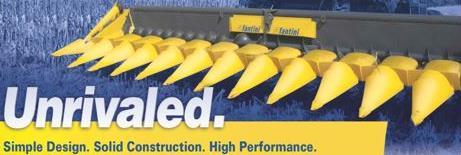

NEW & USED EQUIPMENT
NEW Vermeer R2800 rake. On Order CALL
NEW R2300 rake. IN STOCK
•Now building Gysler parts•
Clear storm debris to minimize risk to livestock
$1640
2--Vermeer R2300 rake, used..... ........ CALL Euro pallet fork ..................................
Used Highline 650 bale processor...$19,500
Vermeer BP7000 bale processor with scales
1- Set skid steer pallet forks
$11,800
$1280
NEW & USED EQUIPMENT
Vermeer 605N, In-Monitor Moisture Sensor, Auto Greaser, pickup clutch, 540 or 1000 PTO .....NEW Vermeer 605M net/twine...................... $10,000
Vermeer R2300 & R2800 rakes ................NEW
Vermeer TM1410 mower 21-ft cut width.......NEW Vermeer 604R Signature 450 bales.... $42,000
rlmccray@3rivers.net
Don’t sit around waiting for parts. We have a huge parts selection and experienced technicians to get you back to haying fast. Open 7 days a week until August 30th
Vermeer Netwrap IN STOCK Redmond Garlic Salt IN STOCK
The recent storms that swept across the state caused significant damage to buildings, wind breaks, grain bins and other structures. The high winds carried debris onto cropland, hay fields and pastures and should be cleared away before grazing or harvesting of forages.
Building insulation can be carried long distances by wind, even after the initial damaging storms have passed. Cattle, especially calves, are curious by nature and investigate with their mouths.
“Consuming insulation can cause irritation of the gastrointestinal (GI) tract, obstruction and bloat,” says Dr. Jake Galbreath, North Dakota State University Extension veterinarian and livestock stewardship specialist. “Even small pieces can be irritating and accumulate in the GI tract.”
Treatment may include administering mineral oil and laxatives orally to aid in the passage of insulation material, as well as IV fluids for hydration. In some cases, surgery to remove material within the rumen may be necessary.
$5500
Vermeer 605SM completely rebuilt. $18,500 H&S 12-wheel rake.
Vermeer R2800 updated pivots
$28,000
Massey-Ferguson 9635 swather, 1865 hours, new cutter bar
$60,000 See new inventory on our Facebook page






Vermeer
Building debris that has blown into pastures or hay fields may increase the risk of hardware disease, says Dr. Galbreath. Hardware disease occurs when metal, usually nails or pieces of wire, are swallowed and enter the reticulum (first stomach). These can poke through the wall of the reticulum, causing infection in the abdomen or chest, even potentially piercing the heart.
Metal debris can be picked up during baling, delaying ingestion and the resulting symptoms for weeks or months. Dr. Galbreath recommends that producers in affected areas consider administering rumen magnets to cows this fall, as these can bind to the pieces of metal and reduce the risk of internal injury.
In addition to ingestion risks, animals can suffer lacerations or penetrating injuries from pieces of wood, metal siding, and nails. Slicing injuries to the feet from metal siding can lead to deep tissue and possible joint infection. Lacerations may require repair and treatment by a veterinarian.
Sudden lameness that does not improve within 24 hours should be evaluated. Affected livestock need to be caught and restrained to allow picking up and examining all four feet for embedded nails or wire.
“Producers should thoroughly inspect their pastures and hay fields to remove storm debris,” says Dr. Galbreath. “This includes damaged cropland that may be salvaged for livestock feed as well as fields where crop residue may be grazed this fall.”
If there is suspicion that debris was ingested or an animal develops sudden lameness, producers should consult their local veterinarian for assistance.
Summer brings raised pinkeye concerns in cowherds
tion, and anti-inflammatory medications can help relieve irritation and improve comfort. Topical eye medications can be beneficial, but are often impractical as they require multiple treatments every day.
“Protecting the affected eye from sunlight and dust by applying a patch over the eye, suturing the eye closed or suturing the third eyelid over the eye can help with healing,” says Dr. Galbreath.
While treatment success is highly variable depending on the cause and severity of disease, early intervention increases the likelihood of success.
Vaccination is another tool available to help reduce the risk of pinkeye infection, and both commercial and autogenous vaccines are available. Autogenous vaccines are manufactured based on culture samples from a specific area. Working with a veterinarian can help determine what species of bacteria are prevalent in a herd to develop a targeted vaccine program. Always follow vaccine directions on administration, handling, storage and boostering.
A lettuce leaf
In 1993 Delta Airlines was looking for ways to reduce costs to compete in the cutthroat airline industry. They discovered that by just eliminating the decorative piece of lettuce served under the vegetables on in-flight meals, they could save over $1.4 million annually in labor and food cost.
Vermeer,











































































Degree-days for prediction of western bean cutworm flight in 2025
By Abigail Lyons
- Research Technician, Andrea Rilakovic - Graduate Research Assistant, Department of Entomology, Alisson da Silva Santana - Post-Doctoral Research Associate, Department of Entomology, Julie Peterson - Extension Entomologist, Justin McMechan - Crop Protection and Cropping Systems Specialist
The very first western bean cutworm (WBC) moths have been reported from eastern locations in Nebraska. It is time to start thinking about scheduling for scouting for this important pest of corn and dry beans. WBC moths prefer to lay their eggs on corn plants when they are approaching tassel emergence, as the tassel is the preferred food source for newly hatched WBC larvae. A match between the flight of the moths and the late whorl to early tassel stage of corn
can result in high levels of infestation. Predicted Dates of WBC Flight for Nebraska in 2025
Overall, the estimated dates for WBC flights in 2025 are slightly earlier than those from 2022-2024. Earliest flights will be observed in eastern Nebraska, such as Lincoln and Grand Island, while the latest flights will be recorded in the Panhandle, such as Sidney and Alliance, NE (Table 1).

Havre, MT 59501 406-265-6387
jim@vaughntrucksales.com

Website: www.vaughntrucksales.com
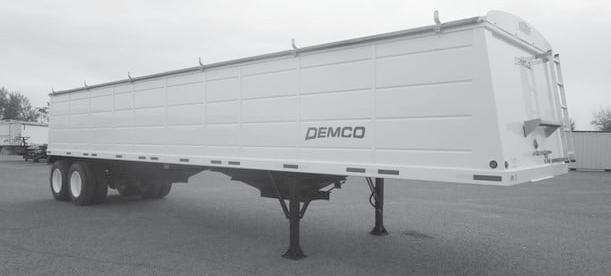



To produce the table above, recorded temperatures were taken from the High Plains Regional Climate Center (HPRCC) from March 1 to approximately June 17-20. A long-term (1991-2020) average was used in order to predict the average temperature for later dates.
Another option for seeing moth flight predictions in your area is to use UNL’s AgriTools mobile app for Apple or Android, which will provide predictions similar to the table below by pulling temperature data
from weather stations around your location. Introduction to Insect Degree-day Models
The importance of knowing when an insect pest will cause damage in a field is essential to producers and crop consultants when making management decisions. Since insect development is greatly affected by temperature, the timing of insect emergence can be estimated accurately by using a combination of calendar dates and assessment of temperature variations from year to year.
Replanting of crops follows hail at Panhandle Research Extension and Education Center
By Chabella Guzman, PREEC communications
Hail pummeled crops in the Scottsbluff and Mitchell area on June 29, as a thunderstorm moved from the west to the east.
“The hail came in well before Scottsbluff in a swath of about four and a half to five miles wide,” said Colby Goatley, forecaster at the National Weather Service in Cheyenne, Wyo. “Hail was reported at 2.3 inches before Scottsbluff and just under two inches at 1.75 inches.”
The hail, accompanied by wind gusts of up to 60 mph, struck the University of NebraskaLincoln’s Panhandle Research Extension and Education Center, decimating the research fields surrounding the campus. The fields are divided into small plots, where extension specialists conduct research projects on a variety of crops. Most of the crops had a month or more of growth when the hail hit.
“We lost every field project that we had this year, consisting of diseases of sugar beets, sunflowers, dry beans, chickpeas, lentils, and corn,” said Bob Harveson, Nebraska Extension plant pathologist. Other crops lost include spring pea and camelina. The millet crop was
farm manager) put down cooper and fungicide to protect the plants.”
Urrea’s plots rely heavily on yield for his research, but not all specialists have to take their crops to yield.
“We will try to obtain additional information with re-planting the beans and pulse crops (lentils and chickpea), although we understand yields may be poor. It is worth trying to start over with these crops due to their shorter growth season,” Harveson said.
Damage to crops was not the only issue.
Wei-Zhen Liang, Nebraska Extension Biological Systems Engineering specialist, has cameras mounted near some of the plots to monitor plant growth, stress, and other factors. “The cameras mounted on Xin’s (Qiao, Nebraska Extension irrigation and management engineering specialist) and Nevin’s (Lawrence, Nebraska Extension weed management specialist) beet fields were damaged and will need to be replaced,” she said. The bean field for Liang’s research project will also be replanted. planted the week before the hailstorm.
“We could still lose the millet because of stagnant water and crust,” said Dipak Santra, Nebraska Extension alternative crops breeding specialist. “We may consider replanting the millet if no or poor emergence. But such late planting will reduce yield significantly.”
Pin-Chu Lai, Nebraska Extension entomologist, has already replanted her dry bean plot. “We will be collecting a lot more data besides yield throughout the growing season to monitor thrips activities. The trial will be late, but having bean plants that are behind to work with will be better than losing the whole trial and a growing season with no data.”
Many of the crops lost are typically harvested in July, such as spring peas and camelina; however, others like chickpeas and dry beans can be planted this late. Replanting the dry beans in July means they may not mature before the first freeze.
“I’m not replanting, it would be too late and the (dry) beans would only be at the flowering stage and not likely to make it to harvest,” said Carlos Urrea, Nebraska Extension dry bean breeding specialist. He added they would have to rework the fields to ensure no crosscontamination from the previous plants. While Urrea’s demonstration plots had a 100 percent loss, the fields in northern Mitchell had no hail damage. An earlier storm with heavy rains did flood one of the fields in Mitchell, and he expects a 20 percent loss in that field. “I’ll have Gene (Kizzire, Nebraska Extension



non-selective herbicide for post-emergence broadcast use on canola, sweet corn[*], field corn, cotton, soybean, and sugar beet[*] designated as LibertyLink® or glufosinate resistant. GLUPEX 280SL may be used for weed control in non-LibertyLink® or non-glufosinate resistant cotton when applied with a hooded sprayer in-crop. GLUPEX 280SL may also be applied as a broadcast burndown application before planting or prior to emergence of canola, sweet corn[*], field corn, cotton, soybean, or sugar beet[*] designated as LibertyLink® or glufosinate resistant and any conventional canola, sweet corn[*], field corn, cotton, soybean, or sugar beet. GLUPEX 280SL may be used for post-emergence weed control on olives, listed tree, vine and berry crops. GLUPEX 280SL may also be applied for potato vine desiccation. [*Not for use in California.]


Red House Ag Custom FeRtilizeR spReAding
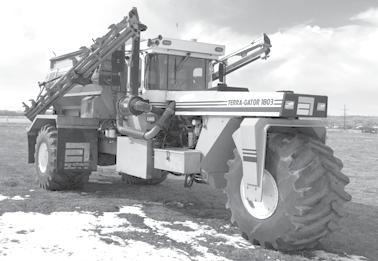





Degree-days for prediction of western bean cutworm flight in 2025
The use of a degree-day model can help provide producers with accurate data. Degree-days measure the amount of heat between upper and lower thresholds to which an insect has been exposed. A model for the western bean cutworm (WBC) has been developed through the collaboration of entomologists from the University of Minnesota and the University of Nebraska. Each degree-day model is different, but most models will subtract the lower threshold from the average temperature for each day. For example, in the model developed for WBC, if a certain day had a low of 55°F and a high of 65°F, and the model has a lower threshold of 38°F and an upper threshold of 75°F, then the degree-days would be calculated as:
[(65+55)/2]-38
[120/2]-38 = 22°F degree-days
Note: If the average temperature is less than the lower threshold (38°F), then you should use the lower threshold as the average temperature. If the average temperature is greater than the upper threshold (75°F), then you should use the upper threshold prior to subtracting the lower threshold.
Western Bean Cutworm Degree-day Model
Entomologists from the University of Nebraska-Lincoln (Tom Hunt and Robert Wright), and the University of Minnesota (Roger Moon, Bill Hutchison, and Anthony Hanson) developed the most recent degreeday model. The lower threshold is 38°F, while the upper threshold is 75°F beginning on March 1. Once 2,577 degree-days Fahrenheit is reached, 25% of the WBC flight occurs and scouting of corn fields should begin. (Pheromone trapping in dry bean fields should begin the last week of June before any WBC have emerged.)
If an insecticide application is warranted, it should be made 10-21 days after peak flight in dry bean and when 95% of plants have tasseled in corn. For more information, see NebGuide G2013 by Seymour et al. 2010.
Scouting
and Management of Western Bean Cutworm
WBC eggs can be found on the upper surfaces of corn leaves, and the lower surfaces of dry bean leaves. Eggs are found in masses ranging from 5-200, with an average of 50-85. When first laid, the eggs
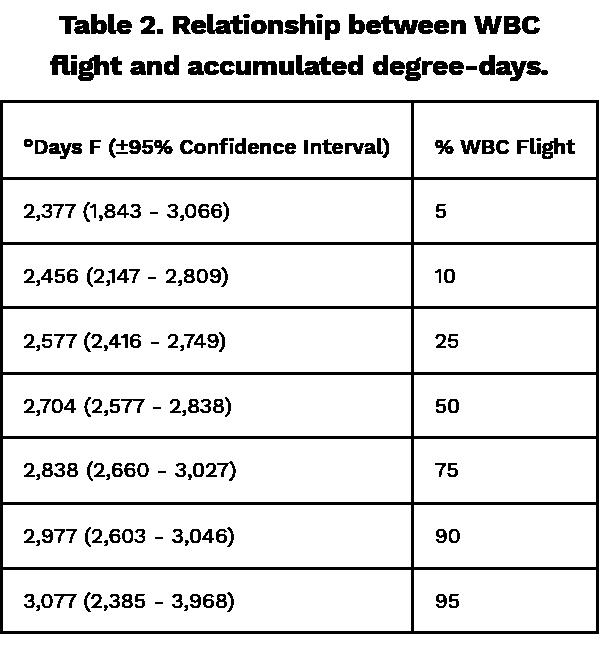
will be white and gradually darken during the four- to six-day development (Figure 1). Freshly hatched larvae will first eat the eggshells before consuming the host plant (Figure 2 and 3).


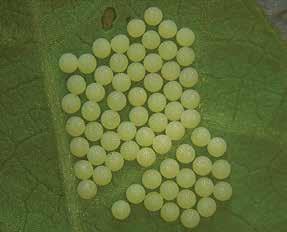



(Figure 4). WBC moths are about threefourths of an inch long by 1.5 inches wide. It is more challenging to scout for WBC in dry bean fields due to dense and robust bean canopy. However, pheromone traps (two to four green, bucket-style traps or milk jug traps per field with monthly pheromone replacements) can be used to provide an estimate of a possible infestation and should be installed prior to the predicted 5% flight date.
Older larvae can be identified by two dark-colored rectangular spots directly behind their head (Figure 3). Adult moths are identifiable by a white band on the anterior margin on the forewing followed by a white circle halfway down the wing and a white crescent located two-thirds down the wing
Nominal action thresholds for dry bean fields can be calculated using the average, cumulative trap capture for a field. If fewer than 700 moths are caught up to peak, there is low risk; if more than 700 but fewer than 1,000 moths are caught, then there is moderate risk; and if there are more than 1,000 moths caught, then the risk is high. However, note that pheromone traps only capture male moths and other local conditions may contribute to larval success and corresponding damage from WBC in any given field.
Figure 1. Western bean cutworm egg mass. (Jeff Cluever | UNL)
Figure 2. Western bean cutworm egg mass with first instar larvae. (A. Rilakovic | UNL)
Figure 3. Western bean cutworm larva. (S. PaulaMoraes | UNL)
Figure 4. Western bean cutworm adult moth. (J. Peterson | UNL)
Diagnosing cattle death
By Lisa Moser, K-State Research and Extension news service
Mystery writers know that to keep readers engaged, there is often more than one suspect, and the reader must process a series of clues to solve the crime.
In many ways, solving the cause of an animal’s death involves the veterinarian working through a series of clues — some of which are the circumstances around the death and other answers that can be obtained through a necropsy exam post-mortem.
This was the topic of discussion on a recent Kansas State University Beef Cattle Institute Cattle Chat podcast in which the veterinarians were speculating about the cause of death for a bull that died near a pond.
“Don’t automatically assume the pond was the reason for the bull’s death,” K-State veterinary toxicologist Scott Fritz said. “When a death like this happens, it is important to get a veterinarian involved. Sometimes when doing a necropsy, we will find things we weren’t expecting to see.”
Having said that, Fritz said a logical first check would be the pond water.
“Toxic blue-green algae are bacteria that are often confused with the duckweed plant as both can cover the surface of the pond,” Fritz said. “When those toxic blooms are released, it looks like someone dumped paint on the surface of the pond. It can appear as green, blue, orange, red –– an array of colors.”
If producers suspect they have a pond with toxic algae, Fritz recommended they collect a water sample and send it to a diagnostic lab because it can only be confirmed by viewing the pond water under a microscope.
When collecting the sample, he suggests using a clean bottle and placing it an inch or two below the surface, including the pond scum in that sample.
“A rudimentary test is if you set that sample on a flat surface for about 30 minutes, the water will have a green ring at the top and the rest of the water is clear; that is a pretty good indication that it is likely toxic algae,” Fritz said.
When collecting the sample, Fritz said to be aware that the algae can irritate a person’s skin or be aerosolized and cause some shortness of breath.
Regarding the bull’s death, if the pond isn’t showing signs of algae, another potential cause of death is a lightning strike, K-State veterinarian Bob Larson said.
“Cattle that die by lightning are often found near a pond, a tree or standing next to a fence and they’ve been electrocuted,” Larson said. “With that diagnosis, we also look to see if there was a storm in the area at the suspected time of death, particularly when the necropsy doesn’t lead us to another reason for their death.”





EQUIPMENT FOR SALE
Once prey is in the mouth of a cat, the whiskers curl forward to sense any movement that might mean the animal is still alive and not safe to eat.
HARRIS SWATHING
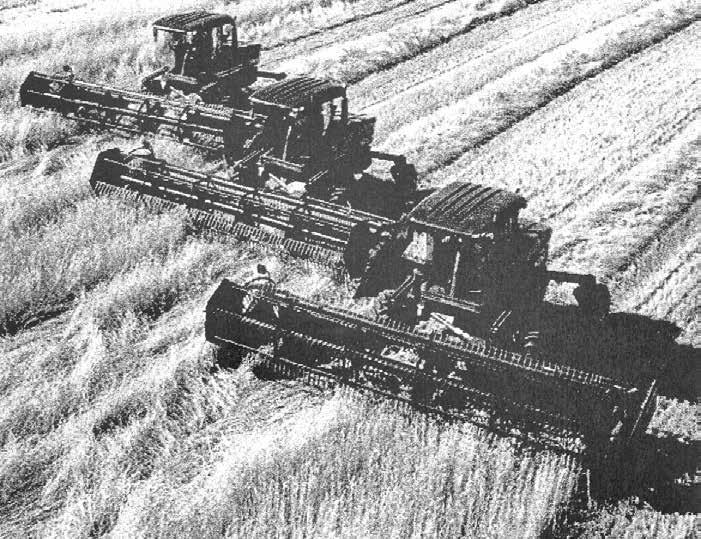
“Swathing is our business, not a side line”
Ag Leader GPS Mapping and AutoSteer 16-ft. hay headers with crimpers 35-ft. double swath headers with pickup reels STATEWIDE COVERAGE
We have full transport trailers to come to you. 1 mile or 1000 miles, we’ll be there! 28 YEARS IN THE CUSTOM BUSINESS, EXPERIENCE TO GET IT DONE RIGHT Prompt - competitive rates - reliable Kim Harris 406-450-5961 Conrad, MT Colt Harris 406-450-5452
The 1,500 lb. question: Are your cows too big?
Cow size has been on the rise for decades. Cows today weigh 1.4 times as much as their predecessors in 1980. In fact, cow weight is rising 100 pounds every 10 years. Why has this occurred?
“Producers get paid for pounds, so ‘growth-bulls’ are selected and the biggest heifers are retained,” says Ron Scott, Ph.D., cattle nutritionist with Purina Animal Nutrition. This has achieved positive outcomes as producers aim to maximize profit by increasing pounds of production and selling heavier calves each year. While this breeding and management strategy has shown its merits, on the output side of the equation, larger cows aren’t always as profitable as you might think.
“Larger cow size can come with a larger price tag when you factor in higher inputs and reduced efficiency in pounds weaned,” says Scott. “To maximize profit potential, finding the middle ground between the cost of raising larger calves and their value at sale time can be important.”
Here are three tips to help you find the optimal cow size for your operation and manage it to improve efficiency:
1. Consider both inputs and outputs
It’s important to account for all profitability aspects when evaluating the right cow size for your operation.
On the input side, larger cows eat more than smaller cows, resulting in higher costs for feed and forage. The good news is that cows get slightly more efficient per pound as they grow. A 1,500-pound cow is 50% larger in weight, but her energy requirements are only approximately 36% greater than those of a 1,000-pound cow.
“However, the accuracy of this, in practicality, is debatable because of the ‘boss-cow’ effect,” says Scott. “Those bigger cows are the dominant cows, and they always will be first on the pecking order for feed resources. In other words, they take more than they need and that ‘extra’ is taken away from the smaller cows.”
On the output side, you’re selling bigger calves and getting paid for their increased weight. However, it might cost more to raise those calves. With larger calves, you must respond to their nutritional needs, ensuring they can keep up and continue gaining weight.
“Another consideration is that while cow size has been increasing, the percentage of weaning weight for calves hasn’t equally adjusted its ratio to make up for the larger size,” says Scott.
Data from North Dakota State University shows that a 1,000-pound cow weans 48.5% of her body weight compared to 43.6% for a 1,400-pound cow. Essentially, calves born from larger cows aren’t as efficient as calves born from smaller cows.


“Getting a complete picture of inputs and outputs can help you find the sweet spot when it comes to cow size for your operation to maximize profits,” says Scott.
2. Maximize forage resources
While cows have become larger, stocking rates have not kept up with genetic gain in cow size. Many producers are running the same number of cows on the same amount of acres as they always have.
“Overstocking can be problematic because cows may not get the nutrients they need from forage,” says Scott. “Traditional stocking rates are based on a 1,000-pound mature cow size, yet many cows surpass that threshold today.”
Consider this: A 1,500-pound cow is 1.5 times larger than a 1,000-pound cow. This means the larger cow needs about 1.5 times more nutrients than the smaller cow. To meet her forage needs, you would need to increase your stocking rates by 1.5 times.
“Adjusting stocking rates can ensure cows aren’t shortchanged on nutrients and that pasture resources are used more efficiently,” says Scott. “Since most producers can’t easily weigh their cows, it can be challenging to know how much to increase the stocking rates for your specific operation.”
Consider investing in a digital or portable scale; this year is a great time to reinvest in your facilities with the added profits from the bullish cattle market. If an on-farm scale isn’t in the cards, consider weighing your herd on the trailer at a local cooperative when hauling your cows to pasture or evaluating cull cow weight using the weights listed on the sale bill.
3. Avoid nutrition gaps
While increasing stocking rates can help support nutritional needs, we can’t expect cows to get by on forages alone. Across the industry, particularly on the cow side, producers
The 1,500 lb. question: Are your cows too big?
CONTINUED FROM PAGE A38
run the risk of not optimizing their profit potential by not fully meeting the nutritional needs of larger-sized cattle.
“Bigger cows have more significant nutritional requirements,” says Scott. “Meeting their increased nutritional needs can have cascading effects that could lead to improved profitability.”
Cows managed for optimal body condition scores at calving have been shown to rebreed with 88% or greater conception rates. And, by providing adequate nutrition to cows during each stage of gestation, you can better support the calf’s birth and weaning weight, immune function, finishing growth and value to the herd if the calf is kept back. A nutrition program that meets your herd’s requirements helps ensure your genetic investment can be fully maximized, regardless of your average cow size.
“Free-choice tub, block or liquid supplements can help you more efficiently meet any nutrient gaps cows might face,” says Scott. “Monitoring intakes can also help you manage forages and stocking rates.”
If cows are eating more of the supplement than the target, dig in and ask some questions. Do I have enough forages? Is the forage quality high enough? Do I have an accurate pulse on my cows’ nutrition requirements? Free-choice products help give you a barometer for your nutrition program overall.
“Bigger cows can mean bigger costs, but also bigger profit potential,” says Scott. “Finding the right cow size for your operation and managing cows to help maximize efficiency may lead to greater profit potential.”
A shoe
On September 18, 1977, the Tennessee Valley Authority had to close its Knoxville nuclear power plant. The plant stayed shut for 17 days, at a cost of $2.8 million. Cause of the shutdown “human error.” A shoe had fallen into an atomic reactor.



Budgets tight? Did you sign up for a fertility ehnhancement program? Contact us today!
Know exactly what nutrients are in your soil and where with soil sampling from Centrol.
0-6 inch, 6-24 inch & 24-42 inch depths Composite or Zone Sampling with prescription writing. 3 GPS guided trucks available.
Standard Analysis, Complete Analysis, Soil Health and more
Independently owned, serving the Golden Triangle since 1985.
Jeff Farkell CPAg/CCA 406-788-4875 Joel Farkell CCA 406-581-6243 centrol_llc@outlook.com

Eastern Montana farmers needed for new Montana State pulse crop survey program
By Reagan Cotton, MSU News Service
With new funding from the Montana Pulse Crop Committee, Montana State University’s Eastern Agricultural Research Center is establishing a new survey program for peas and lentils and is seeking producer participants.
EARC, located in Sidney, will be the hub for the program, and farmers growing peas or lentils in Daniels, McCone, Roosevelt, Sheridan and Valley counties are invited to participate. Frankie Crutcher, an associate professor of plant pathology at EARC and director of this new program, said that all participating producers need to do is provide a field history and allow scientists to scout their pea and lentil fields roughly once every two weeks through the growing season.
“Pulse crops have become a key component of dryland cropping systems in Montana, but often, diseases are either first detected when a major outbreak is identified or develop very slowly and are difficult to identify,” said Crutcher. “There is currently no system in place to detect and respond to outbreaks, so this scouting program is a proactive approach to prevent outbreaks that can cause






devastating losses.”
Through the survey program, MSU scientists will scout participating farmers’ pea and lentil fields for pests, diseases and other threats, such as herbicide resistant weeds. Researchers will partner with MSU Extension’s Schutter Diagnostic Lab to identify any new threats and collaborate with Extension offices to provide individual reports back to each producer. They will also create large-scale reports to share longer-term trends and pest management techniques.
The new program is modeled off similar endeavors in North Dakota and Canada, Crutcher said. In addition to collecting baseline data that does not yet exist for peas and lentils in eastern Montana, she said the surveys will bolster crucial relationships across the agricultural community and help to identify new and highly relevant research questions.
“If we can show what the problems are and have data for that, then researchers both on and off campus can write grants and develop projects to better support farmers’ needs,” said Crutcher.




“Predictive models are being developed for some of these diseases, so we can also be boots on the ground to test them and see how they work, which would be fantastic, helping us to develop more tools that producers can use. Every time I talk to a researcher about this program, they have ideas for more ways it could be used.”
Roughly $147,000 in funding from MPCC will support the first year of the program, and the first phase of data collection will continue through the 2028 growing season. Ultimately, Crutcher said, the goal is to continue the program much longer and expand to other counties, including northern Montana, where pulse crop acreage is steadily increasing.
Scientists will scout at least 30 pea and lentil fields for pests and diseases beginning in 2026. Farmers can fill out a contact form on the EARC website to express their interest in participating. The goal, Crutcher said, is to build bridges between scientists and farmers that will create the most widespread benefit. By scouting for pests, scientists hope to keep producers ahead of diseases and other threats, such as herbicide resistant weeds.
“You can do the best work in the world, but it doesn’t count for anything if no one sees you doing it,” said Crutcher. “All summer, we want to be out in producers’ fields scouting for pests and diseases, and then in real time reporting results back to those producers and the community at large.”
The direct link to the interest form can be found at https:// agresearch.montana.edu/earc/ programs/survey.html.
Star 49X Detroit DD16,
hp,
Airliner suspension, all aluminums,
wheelbase, 13,300 lb. front axles, 46,000 lb. rear axles, 200 miles, FULL LOCKERS! Stock #840999 $218,900 2025 Freightliner Cascadia 116 DD13, 450 hp, DT12, 176” wheelbase, NEW! $138,283 $134,900
2025 Freightliner Cascadia 126 Detriot,
By Pat Melgares, K-State Research and Extension news service
For many, the onset of summer means outdoor picnics, walks and time at the park, but a blood-sucking insect whose lifespan rarely lasts past two months often can put a bite in those plans.
Kansas State University entomologist Jeff Whitworth said May and June tend to be the time of year when adult mosquito populations rise in Kansas. Many parts of the state received adequate rainfall during those two months, which promoted ideal conditions for mosquito breeding.
“If it keeps raining,” Whitworth said, “you ain’t seen nothing yet, because they’re going to keep coming.”
He said mosquitos lay their eggs on the surface of water, so anywhere that there is standing water – bird baths, old tires, eaves around the house, feeding troughs on farms are among some of the areas – mosquitos are likely to multiply.
“There are 40-50 species of mosquitos in Kansas, and they will lay anywhere from 200 to 300 eggs at a time,” Whitworth said. “Some species will lay eggs in a low spot that’s just damp, and when the water comes in, the eggs will hatch. But they have to have moisture to hatch the eggs, which happens 4-5 days after the adult mosquito lays the eggs.”
Thus, Whitworth said, reducing mosquitoes around a property comes down to reducing areas where water sits idle.
“If you live out in the country, it’s really difficult to get rid of all of these sources of mosquito larvae,” Whitworth said. “But that’s what you want to shoot for. You want to try and get rid of the eggs – the larvae or pupae – before they become adults.”
Once adults, mosquitoes mate. Males have a very short lifespan; typically 10 days during which time they are harmless. Females need a blood meal in order to produce fertilized eggs, so they are aggressively seeking a blood source prior to depositing their eggs.
“They’re very persistent, and very good at finding a source of that blood meal,” Whitworth said.
Whitworth said mosquito control efforts in towns and cities are generally not effective ways to kill adult mosquitoes. The females will fly as far as three miles searching for its next meal, “and by the time they get there, the residual activity (of the insecticide) is very, very little.”
“The chances are very small that they are going to land on something that has a little chemical on it,” Whitworth said. “They fly right in from where they are going and directly on to a human, bird, chicken or whatever their next blood meal is.”
For humans, the best way to protect from mosquitoes is to stay inside. When going outside, wear long sleeve shirts and pants. A repellent containing DEET will work against mosquitoes, but needs to be re-applied every two hours.
“The presence of mosquitoes is not going to get any better until it dries out, or at least until the corn, sorghum and soybeans are harvested and in the bin in the fall,” Whitworh said. “Even so, the mosquito is not going to go away. It’s best to try and control the habitat that is producing them.”













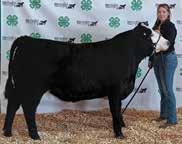

Don’t waste feed: Let manure scores guide cattle nutrition
Evaluating cattle productivity often focuses on common benchmarks such as body condition, weight and feed consumption. Yet, there’s another informative — and sometimes ignored — performance indicator in plain sight: manure.
What comes out of the back end of your cattle can tell you a lot about your nutrition program. By utilizing a manure scoring tool, you can analyze your cattle’s manure and better understand how well the rumen is working to ensure your nutrition dollars are being used by the cow and not just passing through into their manure.
“Think of manure scores as a short-term report card on how the diet’s doing in the rumen,” says Ted Perry, cattle nutritionist with Purina Animal Nutrition. “By scoring manure on the 1-5 scale, you can gain insight into the rumen environment, optimize your nutrition program and get more out of your feed resources.”
What do the manure scores look like and mean?




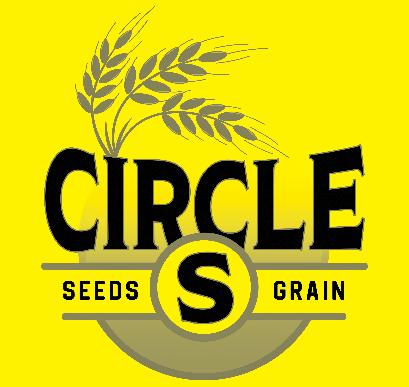




because undegraded fiber passes through the
You can break open the
How can you improve manure scores?
Manure score 1 requires the most significant diet change and will need a lot of fiber, usually in the form of hay.
“You’ll also want to work with a nutritionist to adjust the diet properly when the manure score is so low,” says Perry. “If the manure score is 2, ensure a quality mineral balanced for trace minerals is available, along with providing any supplemental fiber.”
When scores are higher (4 and 5), supplementation can bring the rumen back in balance by increasing forage digestibility. Using a cooked supplement like a tub or block helps regulate the manure score by feeding the rumen microbes appropriate amounts of starch, protein, vitamins and minerals.
“If you feed the rumen microbes properly, you’ll get better forage digestion,” says Perry. “For instance, it’s not uncommon to see cows grazing corn stalks with protein tubs having a manure score of 3 because the rumen microbes have been fed right.”
To maintain an ideal manure score of 3, adjust your supplementation and mineral as forages change.
“Forage quality constantly shifts throughout the year, so your nutrition program must also shift,” says Perry. “Adjusting the nutrition program based on manure score helps keep the cow herd in optimum body condition score (BCS).”
When should you gather manure scores?
Manure scores can be gathered throughout the year. A good time to utilize this tool is in tandem with body condition scoring to get an even better idea of how your nutrition program is working. If you currently work with a nutritionist to help body condition score your herd, they can also assist you with manure scores.
“It’s also a good idea to check manure scores whenever there’s a diet change,” says Perry. “If you’ve moved the herd from one type of forage to a new one, like dormant native grass in late winter to wheat pasture, there will be a difference in the manure.”
Similarly, if you’re grazing pasture or feeding hay and consistently see a manure score of 5, it’s time to make a change with some supplementation and minerals. Three to four days after making a diet change is the ideal time to reevaluate manure scores because the rumen has had enough time to adjust.
“Much like body condition scoring, manure scoring can quickly tell you how your herd is performing and help you make important nutrition decisions,” says Perry. “Incorporating this tool into your regular management routine can give you valuable insights to ensure your nutrition program is as efficient and effective as possible.”
Manure score 1: The manure is more liquid than solid, with a cream soup consistency and possible gray color. The rumen isn’t functioning correctly, and what’s passing through is essentially water. This can also be an indication of acidosis and rumen upset. It is most commonly seen in feedlot diets.
Manure score 2: Manure doesn’t stack up properly. The manure pat is usually less than 1 inch thick and relatively runny or nearly liquid-like. The color will generally be the normal manure brown, typically experienced when forages are lush in the spring.
Manure score 3: This is the ideal manure score to aim for year-round in your cow herd. It has a normal manure pat form and will be relatively firm and retain its shape.
Manure score 4: The manure pat is thick and becomes more profound, yet it is not stacking. Rumen is not balanced for protein, carbohydrates and fiber degradability. It tends to happen when corn is added to the diet, and you’ll see undigested corn particles in the manure.
Manure score 5: The manure pat is firm and stacks over 2 inches high. It can also resemble horse manure in its look
rumen.
manure and see the fiber.
Cattle Chat: Eating while in pain
By Lisa Moser, K-State Research and Extension news service
When seated at the dinner table, it is easy to detect who are the fast eaters in the group. But if those people are unwell, the desire to eat and the amount of food consumed can change.
While that is true for people, cattle also change their eating habits when they are uncomfortable, say the experts at Kansas State University’s Beef Cattle Institute.
Changes in eating habits when cattle are managing an injury was the topic of discussion on a recent Cattle Chat podcast. The experts spoke with guest doctoral graduate student and veterinarian Jordana Zimmermann, who is conducting a trial focused on how fast cattle eat when they are in pain.
“Our preliminary data showed that some animals with a leg injury ate more quickly when they were coping (with an injury). Once they were done coping, they reduced the velocity at which they ate,” Zimmermann said.
Zimmermann is comparing current data to an earlier trial in which the eating habits of newly castrated steers were studied. In that study, some of the steers were given pain management medicine to help them cope with the discomfort following the procedure.
“What is different about this study is that Dr. Zimmermann is measuring the rate at which the cattle ate over a period of time, and that may have a correlation to the total feed consumption,” K-State veterinarian Brad White said.
Just as people eat at different rates, even within the injured group, Zimmermann said the pace at which they ate ranged among the cattle.
“The speed at which they ate ranged from .7 ounces per minute to 63,” Zimmermann said.
Zimmermann hopes that once this research is validated, farmers can use this information to adapt their management to better support injured animals as they recover.
White agreed, adding: “When monitoring cattle health, it is good to have a plan, but it is also important to be able to easily modify your plan as needed.”




“I think that if you shake the tree, you ought to be around when the fruit falls to pick it up.”









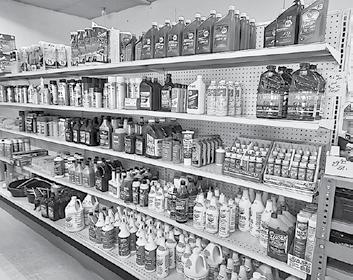

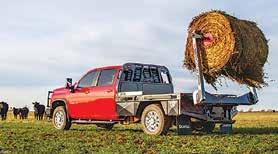

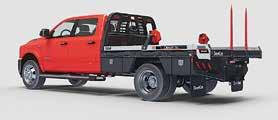
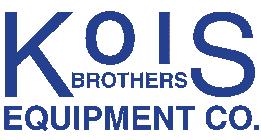



Stable flies on pastured cattle
By Dave Boxler, Nebraska Extension Educator
Only five stable flies per legs can cause an economic injury level (EIL). Often cattle have more, causing bunching in corners, head throwing, standing in water, and kicking.
Pastured animals that exhibit defensive behaviors such as tail flicking, skin twitching, leg stamping, lying with their legs tucked underneath, standing in water, and bunching in corners of pastures, are likely being attacked by the stable fly. Animals bunching to fight stable flies can damage forage, and on fragile soils, may create blow outs. Historically, stable flies had only been pests of cattle in dairies and feedlots.
Since the 1980’s, stable flies have emerged to be a serious pest of pastured cattle. This coincided with livestock producers transitioning away from small hay bales to large round bales in stationary feeders. Research studies indicated this transition increased stable fly numbers found in pastures because leftover piles of hay mixed with animal urine and manure create an ideal environment for stable fly larval development. However, other larval developing sites may also contribute to pasture populations.
Both sexes of the stable fly require a blood meal, usually twice a day depending upon the weather. They prefer to feed on the legs and the belly area of pastured animals.
After feeding the stable fly will seek a shaded resting site to digest the bloodmeal. In pasture windbreaks (coniferous or deciduous), walls of structures, windmill towers, and water tanks serve as possible resting sites.



While the impact of stable flies on the performance of dairy and confined cattle has been well documented, the stable fly impact on pastured cattle has been less examined. A pasture study conducted at the University of Nebraska in the late 1990s saw a reduced average daily gain of 0.44 lb. in three, 84-day trials with cattle receiving no insecticide treatment versus cattle that received a treatment. An economic injury level (EIL) of five flies per leg has been suggested and is often exceeded in normal pasture conditions. The EIL may be less based on the results of the above study, where stable fly numbers averaged 3.6 flies per leg.
The stable fly is similar in size to the house fly but is dark gray and has dark irregular spots on its abdomen. The proboscis (mouthpart) protrudes bayonet-like in front of the head. The larvae are typically whitish in color. The pupae are chestnut brown and about 1/4 inch long. The complete life cycle from egg to adult is 14 to 24 days (about 3 and a half weeks) depending upon weather. The female deposits eggs in spoiled or fermenting organic matter sometimes mixed with animal manure, moisture, and dirt. The most common developing sites are in feedlots or dairy lots, usually around feed bunks, along the edges of feeding aprons, under fences and along stacks of hay, alfalfa, and straw. Grass clippings and poorly managed compost piles also provide ideal larval developing sites. In pasture settings, winter hay feeding sites where hay rings are used can often be a source for stable flies through the summer if moisture is present.


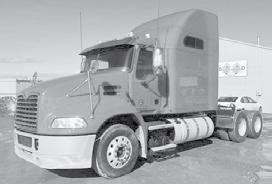

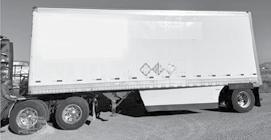


Adult stable flies normally survive less than two weeks in the field. Temperature and moisture appear to be the main factors that affect stable fly population fluctuations. Stable flies are strong fliers. Stable fly dispersal distances can be as short as 1 to 3 miles or they can extend 140 miles or more with weather frontal systems. Actual dispersal distances appear to be determined by the distance the stable fly must travel to find hosts. While the source of early season flies is not well understood, some develop from native overwintering larvae. Other early season flies may migrate from southern locations, but definitive evidence is lacking.
Management
Pasture stable fly management presents exceptional challenges. Stable flies are on the host for relatively short periods of time and tend to congregate on the lower parts of the legs and belly area. Targeting these areas with many of the common treatment methods is challenging and often unsuccessful in reducing fly numbers. Immature or larval development sites are sometimes difficult to locate as they often originate a significant distance from where the adults are feeding on a host animal.
Chemical
Direct applications of animal sprays are the most effective means of reducing adult stable fly numbers, however, the effectiveness is sometimes weak and brief. Animal applications can be made with a low-pressure sprayer or a mist blower. Insecticides labeled for this type of application include organophosphates and pyrethroids. Multiple applications may be required during the fly season to reduce fly numbers. CONTINUED ON PAGE A45
Stable flies on pastured cattle
CONTINUED FROM PAGE A44
Stable fly resting sites can also be targeted for treatment. These include sides of buildings or wooden fence lines and windbreaks. Tree windbreaks offer an ideal resting site during warm afternoons. These sites could be sprayed using a low-pressure or mist blower sprayer targeting foliage, using a natural pyrethrins or synthetic pyrethroid. Spray applications around and on water tanks should not be made. Insecticides registered for stable fly control can be found at the following site (https://www.veterinaryentomology.org/vetpestx). Please follow label recommendations before applying any control product.
Traps
Fly traps have been used in confined settings to help reduce stable fly numbers. In pasture settings, traps are currently being evaluated. One must consider when placing traps where to place them in the pasture, how many traps are required per head of cattle, and the frequency of service or replacement.
Larvicide
Clean-up of spillage and waste around hay rings should be done well before the presence of stable flies are observed on pastured cattle. Wasted material should be collected and spread in a thin manner to reduce larval development. If sanitation is not possible, a larvicide such as Neporex® could be applied to the larval development site.
The information given in this article is for educational purposes only. Reference to commercial products or trade names is made with an understanding that no discrimination is intended, and no endorsement is implied.
#####
What happened to the Pony Express horses after the service ended? When the Pony Express shut down, many of the horses were sold to settlers, ranchers, or other courier services. Some were used in farming, while others became part of the growing ranching industry. A few may have been kept by former riders as personal mounts



#####
German Texans introduced corn dogs to the world in the early 1920s. The original corn dog was a sausage.

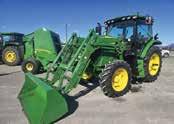
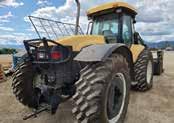
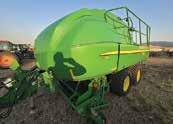







Book Your Fall Seed
By Esther E. McGinnis, Horticulturist, NDSU Extension
Do you know what the two most common tomato problems are? Many gardeners assume that diseases or insects cause the most common problems. However, after a dozen years working for North Dakota State University Extension, that has not been my experience. Year after year, the most common tomato problems are herbicide damage and blossom end rot.
Like clockwork, Extension agents receive many emails every July from gardeners displaying the tell-tale symptoms of herbicide damage. Tomatoes are extremely sensitive to herbicides such as 2,4-D and dicamba. When exposed, the leaves become distorted and may curl. The stem and leaf petioles may twist and bend, resulting in an abnormallooking plant.




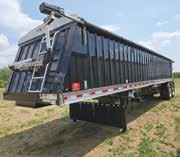

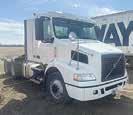
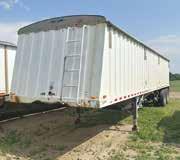



Tomatoes may be exposed to herbicides from different sources. The most common source is drift from people’s lawn herbicide applications or from adjacent farms. Other routes include the incorporation of contaminated compost or manure into the garden soil. City compost is primarily composed of grass clippings. Unfortunately, some homeowners spray their lawns with herbicide, collect their lawn clippings, and then contribute them to the municipal compost stream. The composting process does not break down the herbicides. Similarly, manure may be contaminated if the cows eat pasture vegetation that has been sprayed with herbicides. The herbicide doesn’t degrade in a cow’s four-chambered stomach and is excreted in the manure.
One way to greatly reduce herbicide damage to tomatoes would be to limit or eliminate the application of lawn herbicides in the summer. Weeds are less susceptible to herbicides in summer. Mid-fall is a better time to treat perennial lawn weeds to ensure a systemic kill. Secondly, research your compost or manure source and ask the hard herbicide questions. The second most common tomato problem is blossom end rot. Virtually anyone who has grown tomatoes has watched the fruit’s bottom turn brown and rot. This is not a disease but rather a complex condition involving water, nutrients, and genetics. Blossom end rot is a calcium deficiency in the fruit. Calcium is necessary for the building of cell walls in plants. Before adding calcium-based antacids to the soil like some of my relatives do, gardeners need to understand that regional soils are calcium-rich. How to reconcile this apparent contradiction?
Drought is a significant factor. Tomatoes need rain or irrigation to saturate the soil, dissolve the available calcium, and then be absorbed by the root system. The tomato’s vascular system transports the calcium throughout the plant. Here’s another complication—if gardeners are over-fertilizing with ammonium-based nitrogen, potassium or magnesium, that may interfere with calcium uptake and distribution. Finally, cultivating too close to the tomato plants may damage the root system, which also impedes the absorption of water and calcium.
Blossom end rot can be minimized by maintaining evenly moist soils and avoiding over-application of fertilizers. Another factor includes cultivar susceptibility. For example, Roma tomatoes are quite susceptible to this disorder while grape and cherry tomatoes are less susceptible.
August is Family Fun Month

When the weather is hot and the kids are out of school, it’s a perfect recipe for soaking up some family fun before the next academic year begins.
Parents, grandparents, aunts, uncles and – of course – the kids will love to squeeze the most out of these days with some good old fashioned fun activities that can foster relationships, encourage skill-building and just bring some big laughs. So get ready to have the time of your life with Family Fun Month.
History of Family Fun Month
Families have been having fun together for generations. Perhaps dating back to caveman times when they would play music, tell stories and play games, fun has been an important part of the human experience and quality of life! Today, some families may have a tendency to be a bit serious, working hard at jobs or school, so they might need a reminder to go out and enjoy themselves. And that’s what Family Fun Month is all about!


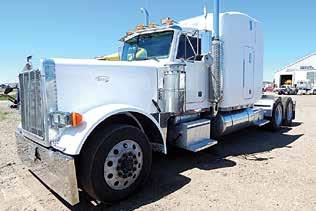








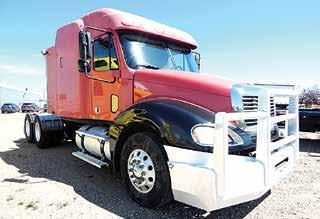


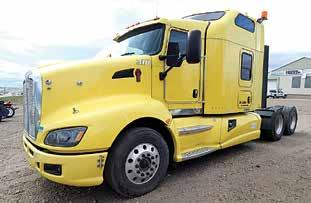
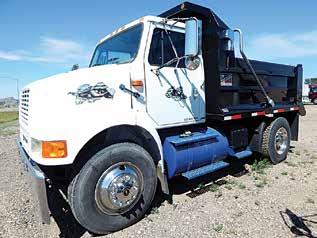



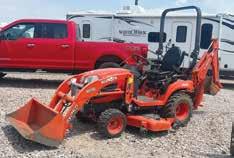
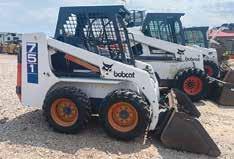






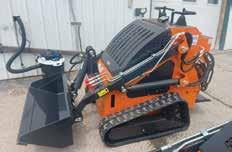


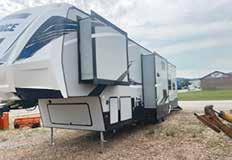







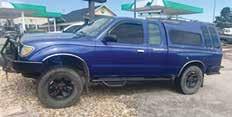



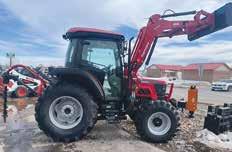

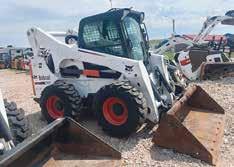
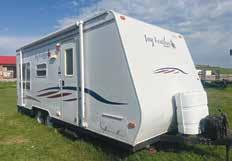

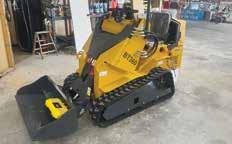
2 W Spreading, Choteau MT C46
360 Rain, Chester, MT C28
3V Distributing, Conrad MT C32
7 W Enterprises, Inverness MT C22
A-Plus Auto, Great Falls MT A16
Abilene Machine Inc, Abilene KS A28
Acciacca Agriculture Repair, Fairfield MT C42
Acciacca Sales and Service, Fairfield MT B6
Affordable Construction Equipment, Billings & Bozeman MT C45
Ag Trucks & Equipment, Great Falls MT C31
Ag Wise, Kremlin MT A35
AgraSyst Dealers B7, B20
ASH Supply, St. Ignatius, MTB14, B20, C4, C32
Badland Truck Sales, Glendive MT C23
BC Trucking & Livestock, Milt Hartman, Highwood MT C24
Ben Taylor, Valier & Shelby MT C3
Big Equipment Co., Havre MT C27
Big Sky Equipment, Conrad MT C33
Big Sky Mahindra, Great Falls MT C44
Big Sky Pipe, Great Falls MT B16
Big Sky Sawmill & Wood Products, Vaughn MT C15
Big Sky Wholesale Seeds, Shelby MT A8
Billings Farm & Ranch Supply, Billings MT A28
BTI Feeds, Cut Bank MT C3
Bull Mountain Fencing, Yoder, Dan, Roundup MT C12
Calves to Cure DMD, Billings MT A2
Cascade Machine & Supply, Great Falls MTC14
Cen-Dak Sales & Leasing, Billings, MT C2
Central Heating & Air Conditioning, Billings, MT B14
Centrol Crop Consulting LLC, Brady & Conrad MT A40
Churchill Trailer, Co., Belgrade MT C26
Circle S Farm Market, Vaughn MT C24
Circle S Seeds of Montana, Three Forks MT A42
CoAXium, Aggressor, Ft. Collins CO C15
Crown Agro, Dust Helmet, Center ND A18
Cut Bank Tire, Cut Bank MT A41
Dakota Truck & Farm, Minot ND C38
David Steed Company, Idaho Falls, ID A3
DBL Sales & Service, Coffee Creek MT A38, C5
Doane Western of Montana, Bozeman MT A4
Double Diamond Truck & Equipment Sales, Missoula MT A44
Dry Fork Ag, Ledger MT A41
Equipment Share, Billings, MT A37
Exchange Services, Inc, Whitefish MT B16
Flaman Rentals, Power MT B8, C8
Fox Ford, Wolf Point MT A46
Frank Merchant Roofing, Great Falls MT A37
Fraser’s Oil Inc., Inverness MT C34
Frieling’s Agricultural Equipment, Great Falls MT A19, B3, B10, B11, C25
Frontline Ag Solutions Dillon, Dillon MT B15
Frontline Ag Solutions, Multiple locations MT B12, B13
Future Nutrition, MT B7
Glass Trucking, Denton MT B12
Golden Harvest Seeds, Big Sandy MT B4
Golden Triangle Seeds, Rudyard MT A41
Gordon Repair, LLC, Miles City MT A32
Great Plains, Dealers C41
Greyn Fertilizer, Choteau, Dutton, Valier MT C48
Grossenburg Equipment, Multiple Locations SD,
Multiple Locations NE, Sundance WY C19
Hamilton Systems, Inc. Hamilton ND A31
Harris Custom Swathing, Conrad MT A38
Heartland Cabin Co., Moore MT C44
Heartland Seed Company, Moccasin MT A46
Hedman, Inc, Grass Range MT C21
Helfert’s Helena Farm Supply, East Helena MT C20
Henke Enterprises, SprayFlex & Big Dog Mowers, Chester MT C11
Highline Communications, Cut Bank MT A35
Holst Truck Parts, Ucon, ID B9
Hotsy Wy-Mont, Great Falls & Billings MT.......A24
Hoven Equipment Co., Great Falls & Lewistown MT C35
Hwy 12 Equipment & Repair, Baker MT A32
I-State Truck Center, Missoula A40
Irvine’s Trailers, Crossfield AB Canada C4
ITB (Intercontinental Truck Body), Butte MT C22
J & M Truck Sales, Inc., Fargo ND C48
J & T Equipment Sales, Stevensville MT A14
Jamieson Motors, Inc., Chinook MT A26, C28
Jim Nielsen Trucks & Parts, Butte MT. C40
Johnsen Trailer Sales, Inc., Bismarck & Fargo ND C40
Keith Kessel Construction, Chinook MT A6
KG Septic, Conrad MT B18
Kois Brothers, Great Falls & Billings MT A44
Krogmann Mfg. C30
Lakeland Feed & Supply, Dillon & Hamilton MT C18
Lane Judisch Swathing, Conrad MT A39
Lattin & Sons, Power MT B8, C8
Laurel Trading Post, Laurel MT C46
Lewistown Kawasaki, Lewistown MT C10, C44
Limagrain Cereal Seeds, Ft. Collins CO B17, C15
Livingston Motor Company, Livingston MT A18
M & M Auto, Trailers, & Welding, Stevensville MT C42
M & W Machine, Three Forks MT C1
M Rush Construction, Great Falls, MT A2
Mahindra, Big Sky Harley, Great Falls MT C44
Marias River Farms, 360 Rain, Chester MT C28
Marks Lumber, Clancy MT B4
Meridian Seeds, Casselton ND A34
Montana Ag Safety Program C14
Montana Department of Agriculture C6
Montana Farrier Supply, Livingston MT B6
Montana Metal Fabrications, Great Falls MT B12
Montana Seed Trade Association A12
Montana Shed Center, Great Falls MT C11
Montana State University Crop Variety Promotions A31
Montech Seed Group, MT A30
Mountain View Canvas, Fairfield MT B14
Mountain View Metalworks, Wilsall MT. B1
MT Tractors, Matt Pendergast, Stevensville MT A5
Muddy Creek Truss, Fairfield, MT A30
Muggli Bros, Inc., Miles City, MT B5
Musselshell Valley Equipment, Roundup MT A17, C17
Neal Hay Sales, Augusta MT C43
North Star Equipment, Great Falls MT A27
Northern Ford, Cut Bank MT A29
Northern Prairie Auto Sales, Wolf Point MT C16
Nutrien Ag Solutions, Inc, Conrad, Great Falls, Billings, Fort Benton, Belgrade, Hardin ,Chester, Shelby, MT A36
Oxbow Engineering LLC, Randy Pierce PE Three Forks MT C12
Pedigree Truck & Trailer Sales, New Salem, ND B19
Pete’s Auto Sales, Great Falls MT A33
Platinum Auto Center, Big Timber MT A22
Precision Truck & Trailer, Havre MT A47
Price Truck & Equipment Sales, Missoula MT A28
Pro-Tech Steel LLC, Great Falls MT A39
Quality Custom Sheds, Moore MT A43
R & L Seed & Machine LLC, Geyser MT A32
RDO Equipment, Kalispell, MT A45
RDO Equipment, Missoula MT A45
Red House Ag Custom Fertilizer Spreading, Matt Meyers, Chester MT A36
Reddig Equipment & Repair, Kalispell MT A24
Redhead Equipment, Regina SK Canada C9
Rehbein Ford, Inc., Plains MT B8, C43
Reinke, RPH Irrigation Services, Choteau MT A37
Riverside Cabins, LLC., Great Falls MT C39
Rocky Mountain Radiator, Helena MT A34
Roofing By Frank Merchant, Great Falls, MT A37
Roosevelt Service, Inc., Chester, MT A26
Rowse Farm Equipment, Avon MT B9
RPH Irrigation Services, Reinke, Choteau MT A37
Safflower Technologies International, Fairview & Billings MT B5
Schweiss Hydraulic & BiFold Doors, Hector, MN C30
Severinsen Irrigation, Zimmatic & RMB Bins, Fairfield MT C13
Shortline Ag, Scobey MT B18
Signature Auto & Equipment, Spearfish & Belle Fourche SD A48
Sod Buster Sales, Polson MT B3, C6
Sonny Todd Real Estate, Big Timber MT A10
SprayFlex, Henke Enterprises, Chester, MT C11
Steel Etc, Great Falls MT C7
Stokes Contracting, Conrad MT C37, C40
Sullivan Brothers Construction, Conrad MT....C2
Sunrise Hoppers, Bow Island AB Canada C36
Taylor Transportation, Great Falls, MT C26 TCB Transport LLC, Geyser MT B16 Teton Trucks & Service,
XB Trailer Sales, Great Falls MT A10, C32 Zimmatic, Severinsen Irrigation, Fairfield MT C13 Zimmerman Manure & Silage Hauling, Fairfield MT B14

Roger Rader, Inc, Sun River MT

THANK YOU
Torgerson’s for purchasing my market Steer. Stella Wahl

McMURRY CATTLE


Added Genetic Balance Trait And Carcass Value ONLY THE BEST SELL Private Treaty Bull Sales
Fred & Doreen McMurry 2027 Iris Lane
Billings, MT 59102
Phone 406-254-1247
Cell 406-697-4040

See: www.mcmurrycattle.com for videos and information about bulls available for 2025 mcmurrycattle@gmail.com

Montana Hereford Breeders
Brownell Polled Herefords 406-788-3242, Pendroy, MT dave.brownell51@gmail.com
Feddes Herefords
Dan 406-570-1602, Manhattan, MT www.feddes.com
J Bar E Ranch
406-765-7068, Plentywood, MT
Technology transfer helps maximize impact of Montana State plant cultivars
By Reagan Cotton, MSU News Service
Thanks to two unique licensing agreements, new camelina cultivars developed at Montana State University will have the opportunity to make maximum societal and commercial impact.
The MSU Technology Transfer Office, or TTO, licensed two MSU cultivars of camelina to independent companies in Montana and Connecticut. Camelina, which comes from the same plant family as mustard, broccoli and cabbage, is an oilseed plant that can be used for biofuels, cosmetics and livestock feed and supplements. MSU faculty member Chengci Chen, superintendent of the Eastern Agricultural Research Center in Sidney, and Chaofu Lu, a professor in the Department of Plant Sciences and Plant Pathology, have been conducting camelina research in Montana for more than two decades.
New plant breeds are owned by the university, said TTO director Daniel Juliano. For common crops such as wheat or barley, those new breeds are often released for use by farmers. But for a specialized crop like camelina, the breed is usually exclusively licensed to private companies, which can then manage the commercialization process, often contracting farmers to grow the crop.
In the case of the new camelina lines, the exclusive licenses were awarded to Sustainable Oils, which is headquartered in Great Falls, and Ash Creek Renewables, based in Connecticut. Sustainable Oils develops camelina-specific biofuels, while Ash Creek Renewables works with various products like soybean oil, animal fats and waste oils to create more sustainable fuel solutions. Camelina will be an addition to their repertoires of resources.
Lu and Chen have led MSU’s camelina research by focusing on cultivar development, genetic improvement and cropping systems to incorporate camelina into Montana’s agricultural production. Their recent projects aim to understand the variances in how different camelina lines take in and use nitrogen, using that knowledge to develop cultivars that can grow in low-nitrogen soil or drought conditions while maintaining high oil yield. Multi-year and multilocation field trials are necessary to test the plant’s adaptation to various environments and identify superior traits, said Chen.
“This exploration of camelina has been going on for a long time, and Montana was one of the first states to start looking into it for commercial production,” said Lu. “These traits are genetically inherited, which means we can identify which genes are influencing them and work to breed for those genes.”
U.S. Department of Energy since 2016, and he is currently leading a multi-institution project blazing trails in camelina science. The work led to his being named a fellow of the American Association for the Advancement of Science last year.
The exploration and understanding of camelina genetic mechanisms constitute fundamental research that is a major part of MSU’s land-grant mission. But another part of that mission is societal benefit, said Juliano. Licensing MSU varieties to industry partners creates a bridge between the science and its applications. MSU has licensed wheat and barley varieties in the past, as well as crops such as triticale, oats, safflower and alfalfa.
“Some stuff is so fundamental, the societal impact is way, way downstream. But many things can have much more near-term societal impact, and this is one of them,” Juliano said. “These new camelina lines are most valuable if people can get access to them, so by licensing them to companies that can then invest in commercializing them, those companies can then deliver products and services to the rest of society.”
Agreements such as those with Sustainable Oils and Ash Creek Renewables mean that while MSU still owns the lines, the companies have exclusive rights to commercialize them and develop new products with them. The profits from those benefit both industry and the university, since a percentage of royalties return to the plant breeding programs housed in the MSU College of Agriculture to ensure their continued ability to conduct emerging research.
When public research and private partnerships like this are developed through technology transfer, it also serves to foster conversations and extend the MSU’s reach in the crop production and manufacturing industries, Juliano said. Just as businesses and community partners rely upon the university to generate knowledge, being in contact with the people who will use and benefit from that knowledge helps scientists to tailor their inquiries, ensuring the focus remains on the questions that end users find most important.
This can have a particular impact on graduate students, he noted, many of whom may end up pursuing careers in industry. Building those relationships while still in school can lead to new research ideas, future job opportunities and a more efficient flow of knowledge.
McMurry Cattle 406-254-1247, Billings, MT www.mcmurrycattle.com
Lu’s research has been funded by the
“I think it’s a very healthy facet of all these activities that graduate students and faculty are having this contact with industry, getting to work on industry problems,” Juliano said. It really helps them stay wellgrounded in their research.”
Data driven decisions to improve herd performance
K.L. Slagsvold Herefords 406-584-7571, Lindsay, MT
L Bar W Cattle Company
406-425-2484, Absarokee, MT www.lbarw.com
Come check us out!
Thomas Herefords 406-544-1536, Gold Creek, MT
K & C Herefords 406-240-9301, Deer Lodge, MT Sparks Herefords 406-778-2320, Plevna, MT www.sparksherefords.com
Wichman Herefords 406-350-3123, Moore, MT www.wichmanherefords.com

By Chevy-Lynn Vaske, K-State Research and Extension news service
Like a coach studying game statistics to unlock a team’s potential, it’s equally important for cattle producers to track herd data to make informed breeding, feeding and marketing decisions.
Understanding what data matters most can be overwhelming. That’s why Kansas State University’s Beef Cattle Institute veterinarians Brad White and Bob Larson, along with agricultural economist Dustin Pendell – shared insights on setting data priorities for beef operations in a recent
episode of Cattle Chat.
Although every operation is different, there are a few core metrics that are universally important. “These include pregnancy percentage, weaning weights, death loss percentage and sickness rate,” Larson said.
Tracking these numbers annually helps producers evaluate progress and catch potential issues early, he added.
“It’s really important to monitor whether we’re improving the herd, or if we’re
Data driven decisions to improve herd performance
CONTINUED FROM PAGE B2
already doing well, in order to maintain that success, and look for areas where problems may be creeping in before we fully recognize them,” Larson said.
White emphasized the connection between production data and rising input costs.
“Maintaining balance between expenses and performance is a challenge, especially as production costs continue to climb,” White said. “You can’t always target both decreasing expenses and increasing production.”
The experts agreed that the producer’s goals will influence what numbers matter most, but all producers need to be aware of the relationship between cost and return.
“You should always manage your expenses, but you also have to pay attention to the market conditions,” Pendell said. “Are they at record highs? What is the cost of putting on additional weight, and how does that compare to the price you’ll receive?”
Once a cattle operation reaches a profitable level, making further improvements requires closer attention to detail, said Larson.
“At that point, you really have to sharpen your pencil and weigh the cost-benefit of every input,” Larson said. “Some expenses don’t offer much return, while others — like nutritional inputs — can make a significant difference in maintaining body condition.”
Larson noted that if cows maintain consistent body condition year-round, additional feed may not be necessary. Tracking core data points — such as pregnancy rate, weaning weights, death loss and sickness — can help identify where changes are needed or confirm what’s working.
“These numbers help you monitor progress and catch potential problems early,” he said
White added that as production stabilizes, cost-efficiency becomes harder to achieve —especially with today’s higher input costs.
With rising input costs and more complex decisions at higher production levels, K-State veterinarians and economists alike point to data tracking and cost analysis as useful tools for evaluating herd performance and input value.
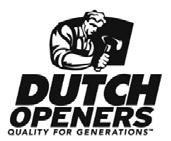
The tongue has 8 different muscles. It plays a major role in speech and proper pronunciation.







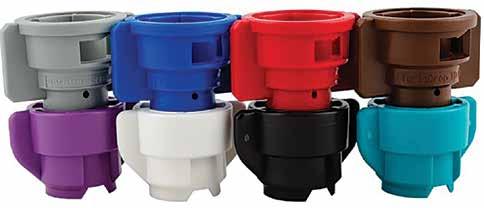




While wasps may seem frightening, K-State entomologist Raymond Cloyd says they’re not all bad and play an
maintaining the balance within an ecosystem.
Protecting your home from wasps
K-State Research and Extension news service
A common problem many homeowners encounter is wasps taking up residence outside their homes. Kansas State University entomologist Raymond Cloyd says, however, not all wasps are harmful.
“Wasps are beneficial and they are part of the ecosystem,” Cloyd said. “They are predators of many caterpillar pests and are docile overall. They will usually only sting if disturbed or agitated.”
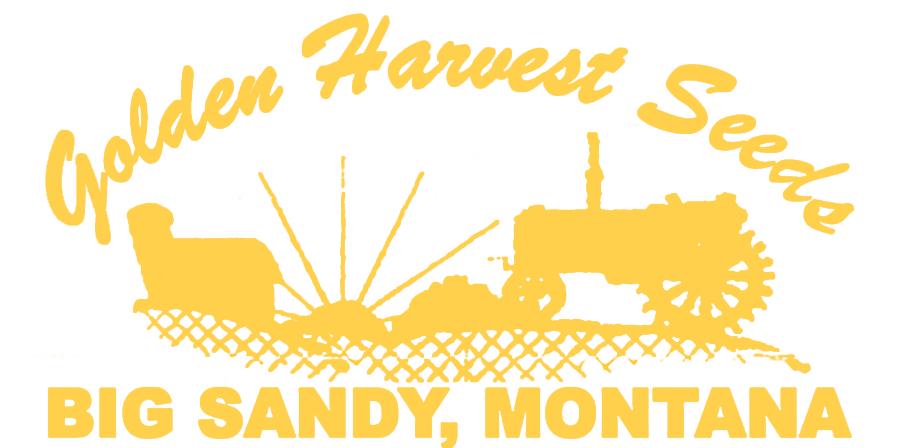










Mud daubers and paper wasps are commonly seen around homes and will generally not attack people. However, yellow jackets will actually attack people.
Despite the beneficial role of wasps, many people may want to remove wasp nests to avoid the possibility of getting stung when outdoors. When considering removing wasp nests, Cloyd advises determining whether the nest is new or mature.
“If the home has a history of wasps building nests, such as in late spring or early summer, physically remove the nest when you see the nest being initially built,” Cloyd said. New nests can be removed with minimal risk of being stung because there are usually fewer wasps present inside the new nest. Wasps generally do not rebuild nests in the same location, so physically removing the nest will avoid having to deal with nests in the future.
Spraying nests with an insecticide should be done at night when the wasps are inside the nest, Cloyd said.
If the nest is large, mature, and has been around for some time, Cloyd recommends contacting a pest management professional.
“To avoid getting stung, contact a pest management professional,” he said.
Cloyd said that it is important to correctly identify the wasp that is creating the nest. He recommends contacting your local K-State Research and Extension office and either describing the insect over the phone or sending pictures via email.
After the storm
By Joe Zeleznik, Forester, NDSU Extension
When I was in college, I enjoyed country music a lot. In the late 1980s, Tanya Tucker had a No. 1 single titled, “Strong Enough to Bend.” The song relates strength to flexibility, with the analogy of a strong tree and a strong relationship. Both the partners in the relationship and the tree need to be strong enough to bend during difficult times.
I like the analogy, though I’m much more of an expert with trees than I am with relationships!
Though trees are tough, resilient and long-lived, some storms are so strong that trees can’t bend enough. Too much snow or ice, or extremely strong winds, sometimes harm our trees in the Great Plains. The damage might be minimal or it could be a major problem. How should we respond to tree damage following storms?
While your first instinct might be to go directly to your trees and start cleaning up the debris, remember this important safety precaution – stay away from downed power lines. Period. In addition to the lines being energized, trees and branches can sometimes conduct electricity, and you could be severely injured through indirect contact via stems and branches. Wait until the professionals have cleared the way and made it safe to work on or near the trees.
Once it’s safe, assess the damage to the trees. Often, our response is to simply prune back a few broken branches, calling it good. Surprisingly, making proper pruning cuts is the number one way to help a tree on its way to recovery. A proper pruning cut reduces the chances of an insect or a decay-causing fungus from entering a tree. There are a lot of great resources available for pruning, including the International Society of Arboriculture’s treesaregood.org website. Click on Tree Care Basics for more information.
But how much damage is too much?
While cleanup may be as simple as picking up broken twigs, the damage might have been substantially worse. PerCONTINUED ON PAGE B5
After the storm
CONTINUED FROM PAGE B4
haps one or two large branches came down. Were major limbs torn from the trees? Is the main stem intact, or was it cracked and twisted, and unlikely to recover?
This really is the milliondollar question. Branches hold the leaves, and the leaves are what make sugar during photosynthesis. I call them the tree’s “food factory.” That food factory normally gets bigger each year as the tree itself grows larger.
Then the storms come along and knock that factory back. Again, how much is too much?
There are no hard-and-fast rules on tree damage, no decision tree to follow. We must assess the damage for each tree individually and make our best evaluation of how to proceed.
I often begin with the ruleof-thumb for pruning young trees – remove less than about 25% of the branches, and therefore the leaves, in any given year. Pruning more than 25%, the tree begins to feel some stress. We can follow that guideline with storm damage as well. If less than a quarter of the crown is gone, the tree will likely not even feel it. Just clean up those broken branches and walk away.
Will a tree survive the loss of 25% to 50% of its branches? Probably yes, though it’ll feel some stress. Take care of it during the following year or two, watering as needed and controlling pests when they arrive. The tree will be stressed and grow more slowly, but it will likely survive.
When a tree has lost more than half its crown, though, is when I start to worry. Can it recover? While we can’t predict the future, we do know that trees with this amount of damage will be suffering major stress. They’ll be highly susceptible to insect and disease infestations in the following years, and might begin to slowly decline.
It’s a difficult decision, but after that amount of damage, it might be time to remove the tree.
As I said earlier, there are no hard-and-fast rules. We have to make our best guesses and go with them. Can we find examples of trees having recovered after losing more than half their crowns? Yes, but we can find many more examples of trees going into decline and dying following this amount of damage.
Is there a bright spot in all this? Yes. If we remove trees, that means we can plant new ones to take their places. And that’s a cause for hope!

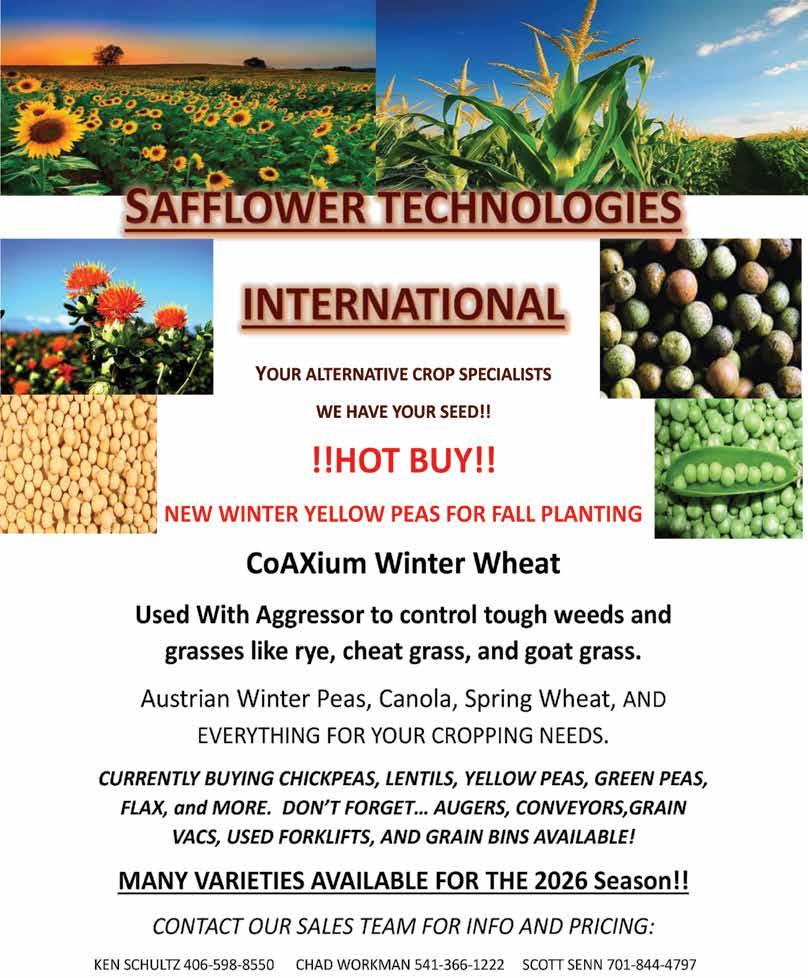



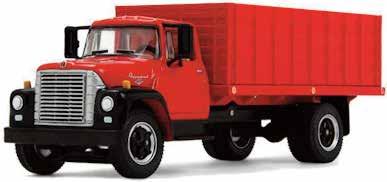


Seasoned to perfection – Why cast iron cookware remains in style
By Julie Garden-Robinson, NDSU Extension food and nutrition specialist
The aroma of grilling food often fills neighborhoods at this time of year, bringing a wave of nostalgia with the scent of outdoor cooking.
When I was growing up, we did not have a grill until I was nearly in college. My dad was the chef for outdoor cooking. He brought out the cast iron frying pans and a propane cooking stove and a lot of solid white shortening.
Back then, I wasn’t even strong enough to lift those hefty pans.
Our Fourth of July menu consisted of “raw fries” and steak. We even ventured to state parks with our cookware and food.
Raw fries, by the way, were peeled, sliced potatoes that became browned and crispy on the outside when fried in hot fat. I was the official taste-tester.
The steak was fried, too. We were not exactly following today’s food preparation recommendations.
I have some of those pans in my kitchen from my family and my husband’s, but I don’t use them to fry steak and potatoes outdoors.
Cast iron cookware has remained popular because it is very durable and holds heat. You can make stew, fry foods or even bake cornbread in it.
When I think of cast iron, the image of heavy pots hanging over campfires in old west TV shows or movies comes to mind. Cast iron cookware is much older than the Wild West.
Cast iron dates back a couple thousand years, with many historians tracing the origin to China. In the early 1700s, Abraham Darby of Great Britain patented a manufacturing method for cast iron pans. The popular cookware nourished generations.
Later, lighter-weight cookware such as aluminum and nonstick pans became popular. Some nonstick-coated cookware might pose some health risks, so stainless steel and cast iron pots and pans have become popular again.
Cast iron cookware requires a little tender loving care. Sometimes I see rusty cast iron cookware at thrift stores or garage sales. The rusty pans can be scrubbed with coarse salt or briefly soaked in vinegar. Then the old pots should be washed in soapy water, rinsed and thoroughly dried before phase two — seasoning.
Properly seasoning cast iron takes a little patience, but it’s worth the effort for a naturally nonstick surface.
Coat the entire pan with a thin layer of vegetable oil and heat in a hot (450 to 500 degrees Fahrenheit) oven for about an hour. Put a layer of aluminum foil in the bottom of the oven to catch any drips of oil. Seasoning might take a couple of treatments.
Sometimes, you can’t bring an old rusty pot back to life. It could become a rustic decoration on a wall.
You can use your nonstick cast iron pan for frying, roasting or slow cooking. However, avoid long, slow cooking of acidic foods such as tomato-based dishes in your seasoned cast iron, because the chemical reaction can break down the protective oil coating.
Most cookware experts do not recommend soaking black cast iron pans in soap and water. A good scraping and wiping down with a paper towel or cloth as soon as the pan has cooled will keep your pans useful for many years.
If you decide to wash the pot by hand, be sure to dry it carefully with a paper towel, followed by setting it on a hot burner. Do not leave any water in the cast iron pan, and do not put a cast iron pan in the dishwasher. After drying, rub the pot with a thin layer of oil.
Cast iron pans can add a little iron to your diet, and that is especially good for people who are anemic (low in iron). As you are cooking with cast iron, be cautious because the handle can become very hot. Use a couple of hot pads and two hands to remove the pans from the oven.
Be sure to cook on a burner that is about the size of the cast iron pan. After cleaning the pan, store it in a dry place. Be careful not to drop the pans, especially on your foot. Dropping a cast iron pan could crack the pan and seriously hurt your foot.
Whether you’re reviving an old family pan or trying cast iron for the first time, these pans are a kitchen investment that can last for generations — just like the memories they help create.
Here’s a family favorite recipe that can be made in a cast iron skillet or a standard baking pan.
Golden Cornbread
1 cup cornmeal
1 cup all-purpose flour
1/4 cup sugar
4 teaspoons baking powder
1 teaspoon salt
1 egg
1 cup milk
4 tablespoons butter
Preheat the oven to 375 F. Melt butter in a 10-inch iron skillet. In a bowl, mix together all the dry ingredients. Stir in the egg and slowly add milk. If you plan to bake in the skillet, swirl the butter around the skillet so the bottom of the pan is coated. Add the melted butter from the skillet to the batter and mix. Pour into the hot skillet and bake for 20 to 25 minutes, until a toothpick comes out clean.
Alternative directions: Melt the butter in a microwave oven and mix as directed. Spray the bottom of a 9-inch round or square pan with nonstick cooking spray (or use oil or shortening).
FWP releases grizzly bear conflict dashboard
In Montana, grizzly bear populations have expanded in both number and in distribution along both sides of the Continental Divide and in the Greater Yellowstone area. In many instances, grizzly bears are expanding into areas they haven’t been in more than a century. With this expansion comes an increased focus by Montana Fish, Wildlife & Parks to help people and communities stay safe and avoid conflicts. Across Montana’s bear country, FWP staff are working hard to respond to conflicts, provide tools to landowners and communities to prevent conflicts, and to educate people on how to stay safe.
As part of that effort, FWP unveiled a new Grizzly Bear Conflict Dashboard as
a resource for information on where FWP staff are helping landowners and communities with conflicts and the types of conflicts people are experiencing.
“Managing grizzly bear conflicts continues to be a priority for our staff and the workload is increasing every year,” said FWP Director Christy Clark. “This dashboard will help inform the public about just what kinds of conflicts Montanans are dealing with and where they’re happening.”
Public interest in FWP’s grizzly bear management remains high. To meet this interest and to increase public awareness, FWP released a Grizzly Bear Mortality dashboard
Ryker Fugle
Conflict dashboard
CONTINUED FROM B6 last year. FWP is working on a relocation dashboard as well, which will be released later this summer and show grizzly and black bear relocation information. Until then, the relocation information can be found on the FWP website.
Conflict information on the dashboard is updated regularly, but not until after the conclusion of a conflict. This could take several days depending on what the conflict is and what response is taken. The dashboard displays conflict data from starting in midJune. Conflict information prior to that will be entered by FWP staff as time allows.
Grizzly bears remain federally protected in the Lower 48 under the Endangered Species Act. This protection remains despite populations in the Greater Yellowstone Ecosystem (GYE) and the Northern Continental Divide Ecosystem (NCDE) growing well past recovery goals. Montana, Idaho and Wyoming petitioned the U.S. Fish & Wildlife Service to delist grizzly bears.
For more information on grizzly bear management, FWP has many web-based resources for communities, landowners and recreationists. A link to the Grizzly Bear Conflict Dashboard can be found on the grizzly bear management webpage.
If you are dealing with grizzly bear conflicts, please reach out to one of FWP bear management specialists. Their contact information can be found through the FWP website.

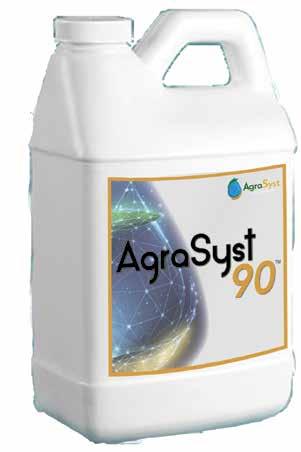






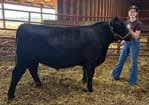
Thank You



Navigating farm succession without a family heir: 7 Common concerns
By Jessica Groskopf, Nebraska Extension Ag Economist
In my work with agricultural families, I’m seeing a growing and difficult reality: many farms and ranches today don’t have a successor within the family. While this absence can simplify parts of estate planning, it often creates deeper, more emotional challenges, especially when legacy and identity are tied to the land.
This article is the fifth in a series supporting farm and ranch owners facing this transition. If you’re just joining, I recommend reading the earlier pieces for a valuable background. You can find them at cap. unl.edu.
In an earlier article, I posed a tough but essential question: What do I want to happen to my farm or ranch when I die? The related, and often revealing, question is: What outcomes are unacceptable to you? The answers often revolve around seven common concerns that strongly influence your succession planning.
Retirement Planning - Many producers plan to work for life, but health issues often force retirement. Yet, according to USDA, only 40 percent of eligible operations contribute to retirement accounts. Having a livable income when you are no longer able to work may depend on selling or leasing farm and ranch assets or working an off-farm job.
Long-Term Care – Because of the high costs, planning for long-term care is critical. Long-term care averages $10,000 per month for 2–3 years. Funding options include insurance, self-pay, or qualifying for Medicaid. But Medicaid eligibility has strict rules, and rural facility options can be limited. Medicaid has a five-year lookback period. In other words, assets gifted or sold within five years of needing care may count against Medicaid eligibility.
Capital Gains Tax - Selling appreciated assets, like land, during your lifetime can trigger significant capital gains taxes. One way to avoid this is by passing assets at death, which allows for a step-up in basis and may reduce tax liability. Learn more at go.unl.edu/amcu
Depreciation Recapture – An often overlooked issue when selling depreciated assets like equipment, is depreciation recapture. This tax that is incurred when the sale price of an asset exceeds it’s tax basis. Sale pro-
I
ceeds are taxed as ordinary income.
Probate – Probate is the legal process of re-titling assets that pass through your will. It can be costly, slow, and public. Ways to avoid probate include using tools like lifeestate deeds, trusts, payable on death and transfer on death designations. While some seek to avoid probate, in Nebraska, estate details still become public due to the state’s inheritance tax.
Federal Estate Tax – In 2025, estates over $13.99 million are taxed at 40%. While many estates are currently estimated to fall below this threshold, the threshold may change in the future. This tax also has a lookback period, assets gifted within three years of death may still be taxed. Strategies to reduce estate size include unlimited gifts to a spouse who is a US citizen, annual exclusion gifts ($19,000 per recipient in 2025), and paying qualified medical or educational expenses directly to an institution.
Nebraska Inheritance Tax - Nebraska is one of six states with an inheritance tax. Rates depend on the size of the inheritance and the heir’s relationship to the deceased. It is extremely difficult to avoid the Nebraska Inheritance Tax. Learn more at go.unl.edu/ v2tf
When creating your succession plan, it’s also important to consider personal concerns, such as a spouse remarrying, heirs with disabilities, addiction issues, divorce risk, or financial instability. These factors are often overlooked in standard plans, yet they can significantly impact the tools chosen to achieve your estate and transition planning goals.
There is no single estate or transition plan that will fully eliminate these concerns. Each situation is unique, and the strategies you choose will require careful consideration of both the financial implications and personal impact. When you meet with your team of advisors, identify the possible concerns and explicitly discuss strategies to mitigate these risks. As you explore your options, weigh the costs and benefits of each approach in the context of your specific goals. The best plan is the one that fits your goals and circumstances, even if it requires tough trade-offs.
need a ration for my cattle - Now what?
By Josie Crouch, Livestock System Educator, Bethany Johnston, Nebraska Extension Educator
In a drought, regular feed supplies run low. With new or purchased feed alternatives, producers will need to formulate a ration. Photo credit: Bethany Johnston
Although drought conditions are a normal part of the weather cycle, cattle producers face serious challenges when regular feed supplies run low. When familiar feed resources begin to disappear, how can producers formulate a balanced ration with new or purchased alternatives?
First, Understand How Cattle Digest Feed
Cattle are ruminants, meaning their digestive system is more complex than humans, pigs, or chickens, which only have one stomach. Instead of a single compartment, cattle have four stomach compartments, each playing a role in breaking down food. One of these compartments, the rumen, acts as a large fermentation vat, holding trillions of microbes that help digest tough forages like hay and grass. As humans, with a monogastric stomach, we wouldn’t be able to survive on roughages, but ruminants rely on these microbes to break down and digest
tough forages into energy.
Feeding Cattle Is More Than Just Giving Them Feed
Feeding cattle is not as simple as it seems. Both the rumen microbes and the animal itself need to have a balanced ration to thrive.
When cattle eat protein-rich feeds, certain protein types are utilized by the microbes first. If the microbes use up all the protein, the animal may not get enough later when it digests food in the intestine, resulting in a protein deficiency for the animal. That’s why understanding the difference between ‘microbial protein’—produced by rumen microbes—and ‘by-pass protein’—which passes through the rumen and is utilized by the animal directly—is crucial when balancing rations.
There are other tricky considerations to make when balancing a ration. Risks can include:
Bloat
Acidosis (rumen pH imbalance, typical on a high grain, low fiber diet)
Feeding a rich diet too quickly
I need a ration for my cattle - Now what?
Mineral and vitamin deficiencies or toxicities
Nitrate toxicity.
Because ruminants’ diets are complex, gathering information about your cattle, operation, and feedstuff is key to balancing a ration effectively. Doing the prep work beforehand not only helps ensure a well-balanced diet tailored to your herd, but also allows those assisting to serve you efficiently.
Modified distillers grains and ground hay
Questions to Answer Before You Talk to a Ruminant Nutritionist
Dr. Karla Wilke, Nebraska Extension Beef Specialist, has helped producers balance rations through multiple droughts. Wilke emphasizes the importance of answering these questions before formulating a ration.
Information about Your Operation
What feed do you have on hand? And how many tons?
Do you have grazing pasture, hay, or a drylot?
Can you get protein and energy sources (like corn or distillers grains)?
Do you have a recent nutrient analysis on your feeds? Have you tested your feed/hay?
For example, a hay sample was taken, and you have the lab results.
Do you have a way to grind hay?
Or will you be feeding the hay as long stem hay?
What kind of equipment do you have access to?
Do you have a mixer of some kind or a feed truck?
Do you have a way to weigh the feed?
Or will you have to estimate the weight of the feed fed?
If you are buying a commercial feed, request a copy of the feed tag.
Are their certain commodities you can buy?
Distillers grains, soy hull pellets, etc.
How much storage do you have? Is it possible to handle bulk commodities (like a semi-load of wet
#####
On November 27, 2012, Nick Stoeberl from Salinas, CA was recognized by Guinness World Book of Records for having the world’s longest tongue. It measures 3.97 inches long.
#####
1928 – City Center Bank in Syracuse, NY is the first to offer drive thru window service.
#####
1930 – Grand National Bank in St. Louis, MO is one of the earliest banks to offer drive thru service.
#####
1948 – In-N-Out Burger begins to drive thru service. It is the longest surviving restaurant to offer it.
#####
Most species of bats live 12 to 15 years, but some live as long as 30 years. Some species can fly as fast as 60 miles per hour and as high as 10,000 feet.
distillers grains)?
Information About Your Cattle
What size are your cows or calves?
Weight
Body Condition Score (BCS)
How many animals are being fed?
What are your goals?
Keep body condition?
Help the cows to breed back?
Target gains per day for growing animals?
Are the cows pregnant (gestating) or milking (lactating)?
When did the cows calve?
When will the cows go to grass?
What type of forage will the cows graze?
Annual forages, cornstalks, native Sandhills, cool season pastures are examples.
How often will you provide supplements (protein and/or energy)?
How easy is it for you to supplement?
Are the cattle close to headquarters?
Do you have equipment to supplement?
Are the cows close to home or far away?
Work With Extension Specialists/ Educators
Finding a qualified ruminant nutritionist is a priority. One place to start is with Educators and Specialists at your state Extension.


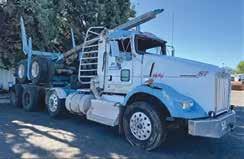
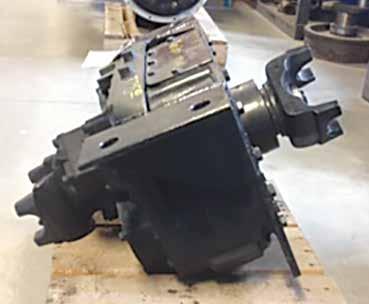


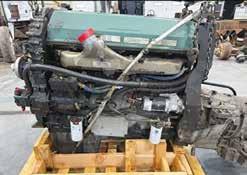
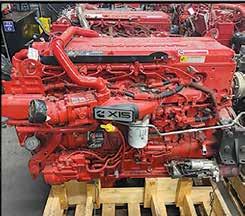
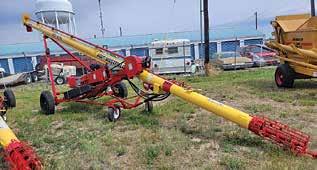

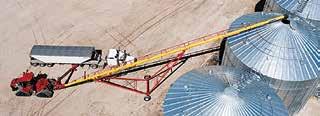



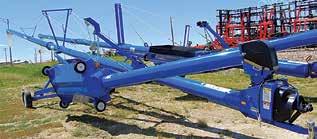



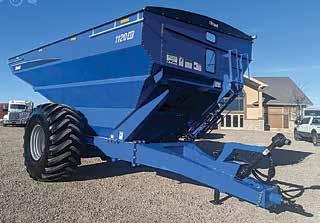





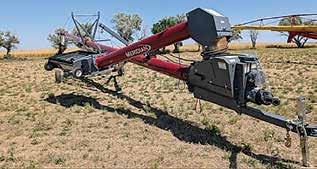

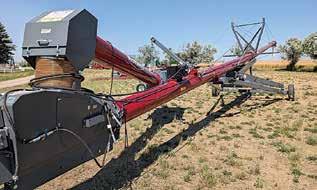

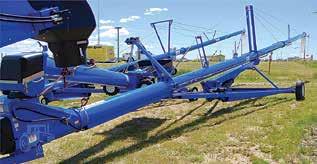




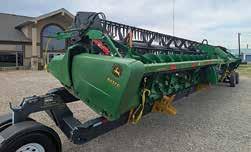
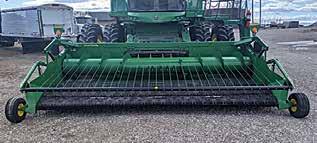
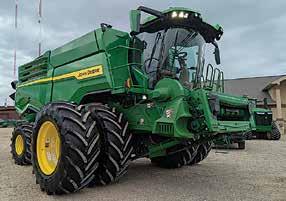







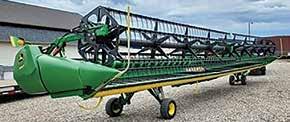

(406) 750-3071 office: (406) 268-9614
email: mtmtlfab@gmail.com


Navigating farm succession without a family heir: Everyone needs these
By Jessica Groskopf, Nebraska Extension Ag Economist
In my work with agricultural families, I’m seeing a growing and difficult reality: many farms and ranches today don’t have a successor within the family. While this absence can simplify parts of estate planning, it often creates deeper, more emotional challenges, especially when legacy and identity are tied to the land.
This article is the fourth in a series supporting farm and ranch owners facing this transition. If you’re just joining, I recommend reading the earlier pieces for a valuable background. You can find them at cap. unl.edu.
Once you’ve answered the critical question: What do I want to happen to my farm or ranch when I die? and you have identified a team of advisors, your next step is establishing a basic estate plan. Regardless of your long-term goals, these four foundational documents are essential:
Healthcare Power of Attorney - Names someone to make medical decisions if you’re unable to. Without it, loved ones may be blocked from involvement due to privacy laws.
Healthcare Directive (also known as a Living Will) - Outlines your medical care preferences in serious situations, ensuring your wishes are known even if you can’t speak for yourself.
Power of Attorney - Authorizes someone to handle financial matters—like paying bills or managing leases—if you become

incapacitated.
Will - Ensures your assets are distributed according to your wishes after death. Anyone over 19 should have these four documents in place. They’re relatively quick and affordable to set up and can be updated as your plans evolve. The first three protect you while you’re alive but unable to act on your own behalf; the will takes effect after death.
Occasionally, someone will say, “I understand having the healthcare and power of attorney documents in place now, but I’ll do the will after I finalize everything else.” I urge you not to delay having a will drawn up. I’ve seen people pass before their full plans came together. A will acts as a safety net, catching any loose ends, so your intentions still shape what happens to your remaining assets. Without a will in place, the state will decide how your assets are distributed, which can lead to unintended and unfavorable results. Furthermore, I encourage you not to take shortcuts on the will. Often, writing a will yourself or using an online program rather than an attorney licensed in Nebraska will cost much more in legal fees once you have passed than it saves you today. For many farmers and ranchers without a successor returning to the operation, creating a basic estate plan is only the first step. In the next article, I’ll discuss six common concerns that should be addressed as part of a more comprehensive plan.
Invest in Reliable Performance

2021 John Deere S780 with 580/85R42 duals, 750/65R26 rears, TriStream (Bullet) rotor, Contour Master with fore & aft, Combine Advisor, Active Yield, 6000 receiver (SF1), 4600 with extended monitor (Premium 3.0 Activtion), standard lighting with extremity, 28.5-ft. unloading auger, powerfolding grain tank covers, Advanced PowerCast tailboard. Stock #90966
$402,500 (14)
2020 John Deere S780 with 520/85R42 duals, 750/65R26 rear, TriStream Rotor, Contour Master with fore/aft. Combine Advisor, Active Yield, Advanced PowerCast tailboard, power folding grain tank, 28.5-ft. auger, 4600 display with premium 3.0 activation, receiver, sidehill performance kit, regular wear grain handling, standard lights, with extremity, premium radio. Stock #90724
$377,500 (14)
2023 John Deere S770 with Command Touch feederhouse (5 speed), TriStream rotor, ProDrive transmission, Premium Visibility Select cab (non-leather), Active Yield, Combine Advisor (parts in Great Falls), 28.5-ft. unloading auger, power folding tops, premium fine cut advanced tailboard, 520/85R42 duals, 600/70R28 rear, general purpose shoe, side hill performance kit, small wire concaves. Stock #87942 $475,000 (14)
2013 John Deere S680 with singles, chopper, yield monitor, contour master (lateral tilt feeder house) header, premium cab with premium radio, HID lighting package and header extremity lights, Harvest Monitor GreenStar 3, 2630 display, ProDrive transmission with Harvest Smart. Stock #93512 $113,000 (15)
2021 John Deere S780 with premium cab/radio, leather seat, LED lights, IF520/85R42 duals, 750/65R26 CM, fore/aft, fixed speed TriStream rotor, sidehill chaffer vanes, 28.5-ft unloading auger, power fold tops, Advanced PowerCast tailboard, Active Yield scale, Combine Advisor and auto maintain, 4600 monitor with 3.0 activation (AutoTrac included), no receiver or extended monitor. Stock #88110 $362,500 (14)
2019 John Deere S780 with lateral tilt fixed speed feederhouse with fore and aft, Combine Advisor, Active Yield, TriStream rotor, small wire concaves, leather swivel seat, Advanced PowerCast tailboard, 28.5-ft. unload auger, power fold grain tank covers, dual IF580/85R42 drive tires, 750/65R26 rear tires. Stock #85326 $362,500 (14)
2019 John Deere S780 with premium cab, Combine Advisor, Active Yield, ProDrive transmission with HarvestSmart, TriStream rotor with extended wear package, power folding GT covers, 28.5-ft. unloading auger, fine cut chopper with Advanced PowerCast tailboard, 12” axle extensions, side hill performance package, large single tires. Stock #84959
$337,500 (14)
2020 John Deere S780 with premium cab with leather, Combine Advisor, Active Yield with moisture and yield sensors, ProDrive with HarvestSmart, TriStream rotor, power folding cover, 28.5-ft. unloading auger, fine cut chopper with PowerCast Tailboard, 520/85R42 front tires with duals, 750/65R26 rear tires, sidehill performance package. Stock #89739

$315,000 (1)

2021 John Deere S780 with regular wear package, premium cab, Active Yield with moisture and yield sensor, Combine Advisor, ProDrive transmission with HarvestSmart, TriStream rotor, power folding GT covers, 28.5-ft. unloading auger, fine cut chopper with PowerCast tailboard, wheel spacers. Stock #91938 $335,000 (14)
2020 John Deere S780 with combine advisor, Active Yield, extended wear rotor, 2WD, LSW1100 singles, lateral tilt, fixed speed feederhouse (with fore & aft tilt), ProDrive, Advanced PowerCast tailboard, TriStream rotor (extended wear), small wire concaves, powerfold grain tank covers, 28.5-ft. unloading auger, premium radio, LED lighting and extremity lights. Stock #84955
$330,000 (2)
2020 John Deere S780 with premium cab, leather, Combine Advisor, Active Yield with moisture and yield sensors, ProDrive with HarvestSmart, TriStream rotor, power folding cover, 28.5-ft. unloading auger, fine cut chopper with PowerCast tailboard, 520/85R42 front tires with duals, 750/65R26 rear tires, side hill performance package. Stock #89740 $325,000 (3)

Well-Maintained John Deere Combines
Not too early to start thinking
upgrade

2024 John Deere X9 1100 with Signature Edition with Ultimate cab package, Ultimate technology package, Active Yield with moisture and yield sensors, Advisor, Pro Drive XL transmission, 31ft. unloading auger, extra fine chopper, 650/85R38 front tires with duals. Stock #93632
$845,000 (4)


2023 John Deere S780 with chopper, yield monitor, Contour Master (lateral tilt feeder house) fore/aft, Active Yield, PowerCast tailboard, power folding bin extension, 580/85R42 dual tires, 750/65R26 rear, ProDrive transmission, 28.5-ft. unloading auger, Starfire 6000. Stock #93058
$507,500 (12)
2022 John Deere S780 with premium cab with leather, Active Yield with moisture and yield sensors, 4600 command center, Combine Advisor, ProDrive with HarvestSmart, TriStream rotor, power folding GT covers, 28.5 unloading auger, Advanced PowerCast tailboard with fine cut chopper, 12” axle spacers.
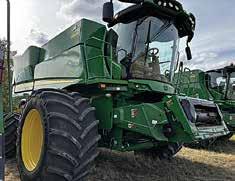
Stock #88899
$470,000 (1)
2024 John Deere X9 1100 with Ultimate cab package, Ultimate technology package, suspension pkg, Signature Edition, Active Yield/Advisor package, Pro Drive XL transmission, 31-ft. power folding auger, extra fine cut chopper, VF750/65R26 rear and 650/85R38 dualed rear tires, sidehill package. Stock #92312
$822,500 (1)
2024 John Deere X9 1100 with Ultimate cab package, Ultimate technology package, suspension package, Signature Edition, Active Yield/Advisor package, Pro Drive XL transmission, 31-ft. power folding auger, extra fine cut chopper, VF750/65R26 rear end 650/85R38 dualed rear tires, sidehill package. Stock #92313
$812,500 (1)
2023 John Deere X9 1100 with Signature Edition Ultimate cab, ProDrive XL transmission, Dyna Flo cleaning shoe, 31-ft. unloading auger, extra fine chopper, 650/85R38 front tires with duals. Stock #87671
$735,000 (1)
2022 John Deere X9 1100 with Signature Edition Ultimate cab package, Active Yield with moisture sensor, ProDrive XL transmission, Dyna Flo cleaning shoe, regular wear grain handling, 31-ft. folding unloading auger, extra fine chopper, 750/65R26 rear tires, 1100/50R42 front tires, axle spacers. Stock #84935
$667,500 (1)
2022 John Deere X9 1100 with Ultimate cab package, Gen 4 4600 Command Center, Active Yield with moisture and yield sensors, Ultimate suspension, Signature Edition, ProDrive XL tranmission, extended wear concave and grain handling, 31-ft. folding auger, extra fine chopper, 650/85R38 front tires with duals, VF750/65R26 rear tires. Stock #87683
$662,500 (1)
2022 John Deere X9 1100 with Ultimate cab package, Gen 4 4600 command center, Active Yield with moisture and yield sensors, Ultimate suspension, Signature Edition, Pro Drive XL transmission, extended wear concave and grain handling, 31-ft. folding auger, extra fine chopper, 650/85R38 front tires with duals, VF750/65R26 rear tires. Stock #87685
$622,500 (14)
2022 John Deere X9 1100 Signature edition, Ultimate cab/lights, Gen 4 display with extended monitor, 31-ft. unloading auger, fixed speed/CM fore & aft, feederhouse extended wear grain handling, Kondex all crop concaves, Advance Tailboard with extra fine cut, adjustable knife bank & auger spout, 650/85R38 duals and VF750/65R26 rear tires, Combine Advisor/Active Yield. Stock #91880 $602,500 (14)
2021 John Deere S780 with Contour Master with fore/aft, premium cab, Combine Advisor, Active Yield, 4600 display (no extended monitor) no receiver, TriStream rotor, power folding grain tank, 28.5-ft. unloading auger, 580/85R42 duals, 750/65R26 rear, fine cut, Advanced PowerCast tailboard, grain tank mirror, side hill performance kit. Stock #88014
$405,000 (2)
2022 John Deere X9 1100 Signature edition, Ultimate cab/lights, Gen 4 display with extended monitor, 31-ft. unloading auger, fixed speed/CM/ fore & aft, feederhouse extended wear grain handling, kondex all crop concaves advance tailboard with extra fine cut, adjustable knife bank and auger spout, 650/85R 38 duals and VF750/65R26 rear tires, Combine Advisor/Active Yield, large tool box. Stock #91881
$597,500 (14)
2024 John Deere S780 with Select cab package, Combine Advisor, Active Yield with moisture and yield sensor, StarFire receiver SF1, monitor, ProDrive transmission with Harvest Smart, small wire concave, regular wear grain handling, power folding covers, 28.5-ft. unloading auger, VF750/65R26 rear and 520/85 R42 dualled front tires, Powercast tailboard, side hile performance kit. Stock #93087
2023 John Deere S780 with TriStream (Bullet Rotor) with small wire concaves, Combine Advisor, Active Yield, Contour Master with fore & aft, Advanced Powercast Tailboard, power folding covers, 28.5-ft. unloading auger, 580/85R42 dual drive wheels, 750/65R26 rears, small grain windboard, premium lights (LED), standard grain handling, general purpose shoe, sidehill performance kit.
Stock #93552
$457,500 (14)
2021 John Deere S780 with premium cab, Active Yield with moisture and yield sensors, leather, Combine Advisor, JD link, ProDrive transmission with HarvestSmart, regular wear grain handling power folding covers, 28.5-ft. unloading auger, fine cut chopper, large single drive tires. Stock #87958 $415,000 (1)
2021 John Deere S780 with premium cab, Active Yield, Combine Advisor, guidance, ProDrive transmission, regular wear grain handling, power folding GT covers, 28.5-ft. unloading auger, fine cut chopper, 750/65R26 rear tires, 520/85R42 front tires with duals, side hill performance package handling. Stock #88013 $412,500 (2)
$595,000 (12)

2023 John Deere S780 with singles, chopper, Yield Monitor, Contour Master (lateral tilt feeder house), power folding bin extension, Premium technology package, StarFire 6000 SF1, premium residue, Advanced PowerCase tailboard, 28.5-ft. unloading auger. Stock #94025 $560,000 (12)
2024 John Deere S780 with Contour Master with fore/aft, Ultimate technology (Combine Advisor), Select cab, Active Yield, integrated receiver, G5 Plus with extended monitor, 580/85R42 duals, 750/65R26 rear, side hill performance, premium fine cut Advanced Tailboard, power folding grain tank covers, 28.5-ft. unloading auger. Stock #92745
$555,000 (14)
2022 John Deere S780 with Command Touch feederhouse with fore & aft, premium cab (leather seat), premium lighting, Gen 4 display with Premium 3.0 activation, extended monitor, 7000 receiver, Powercast Tailboard, power folding grain tank, 26-ft. unloading auger, Tri-Stream (Bullet) rotor, small wire concaves, LSW1100/45RT46 single drives, 750/65R26 rears, extended wear grain handling, Combine Advisor, Active Yield. Stock #93391
$439,000 (14)

2022 John Deere S780 with ProDrive transmission with HarvestSmart, power folding covers, 28.5-ft. unloading auger, regular wear package, premium cab, Active Yield with moisture sensor, Dual 520/85R42 front tires, side hill performance package. Stock #92417
$435,000 (1)
2022 John Deere S780 with Contour Master with fore & aft, Combine Advisor (Active Vision cameras), Active Yield, 6000 receiver (SF1), 4600 with AutoTrac and extended monitor, TriStream rotor (bullet), power folding grain tank, 26-ft. unloading auger, Advanced PowerCast, dual 580/85R42 drive, 750/65R26 rear tires, premium cab, premium radio, sidehill performance kit, Class 7 windboard instead of front chaffer extension. Stock #93160 $410,000 (14)
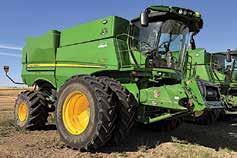
2022 John Deere S780 with Combine Advisor, Contour Master with fore & aft, TriStream (Bullet) Rotor, Active Yield, premium LED lights, power folding grain tank, 26-ft. auger, Advanced PowerCast tailboard, 4600 display with ext. monitor, premium 3.0 activation, 580/85E42 duals, 750/65R26 rear, sidehill performance kit, camera ready (unloading auger and back up cameras not included). Stock #93898
$410,000 (14)

#87958
#93898
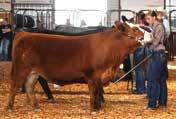
THANK YOU



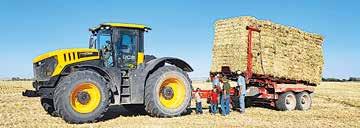


Friesian Cattle
Written by Christina Pichler in Cattle Breeds
Among dairy breeds, the name Friesian is well-known in the dairy farming industry with excellent milk production. Friesian cattle are excellent breeders and produce high-quality meat, making them a great dual-purpose breed.
The Dutch Friesian cow is often crossed with White Holstein cattle to produce Holstein-Friesian cows, which have the highest dairy production among dairy animals worldwide.
Whether used for milk or meat, Friesian cattle are highly useful cattle with excellent genetics.
Where Does The Friesian Come From?
The Friesian breed stems from the importation in the 18th century of black and white cattle to Holland and Friesland to replace cattle lost to flooding and disease. These cattle mixed with local Dutch cattle and the mixing of these two breeds produced the modern Dutch Friesian.
Two color varieties existed amongst Dutch Friesian cattle, black-pied and redpied.
The two were kept separate and continued to be segregated as other countries preferred the black and white variety. The red-pied Dutch Friesian exists today in small numbers and is endangered.
Two herdbooks exist for Dutch Friesian cattle. The Netherlands herdbook was founded in 1873, while the Friesland herdbook was established in 1879.

15 months with a gestation period of 279 days.
Best time to slaughter is 28 to 30 months with a carcass weight of 700 lbs.
Their expected lifespan is16 to 20 years and are productive for 12 to 14 years.
Friesian cattle are best known for their milk production, fertility and feed efficiency. They produce a high-fat and highprotein milk.
Because of a low somatic cell count they are disease resistant and have less incidents of mastitis.
Friesen are adaptable to most climates but excel in colder climates.
What Is So Special About Friesian Cattle?
Friesian cows are known as one of the best dairy cows for milk production and produce excellent quality milk with a butterfat percentage over 4 percent.
The milk is also high in protein, with 3.3 to 3.5 percent regularly attained.
Dutch Friesian cows typically produce 11,500lbs or 5222 kg of milk per lactation period.
Dutch Friesian cattle are regularly crossbred with Holstein cows to produce the Holstein-Friesian, which offers the highest milk yield of any crossbred dairy cattle in the bovine world.




The first Dutch Friesian cow to come to the United States was purchased by a man named Winthrop Chenery in 1852 who bought a Friesian cow in New York from a Dutch captain who had the cow aboard his ship to provide milk for his crew. Noting the superior milk performance of the cow, Chenery began to regularly import Friesian cattle to America.
In the 1970’s, the United States was asked to export Holsteins to the Netherlands, in order to improve milk production in native Dutch Friesian cows.
This cross proved quite successful, producing much larger cattle that had incredible dairy output (Holstein-Friesian cattle). So much Holstein blood was introduced to the Dutch Friesland that today, the Dutch Friesian has between 25 to 75 percent Holstein blood.
Today, Friesian cattle can still be found as a separate breed throughout North America, Holland, the United Kingdom, and New Zealand.
Friesian cattle can be black and white or red and white patterned and are typically horned. An average calf weighs 83 lbs at birth.
A mature cow weighs an average of 1200 to 1400 lbs. A mature bull weighs 2000 to 2600 lbs.
Friesen cattle are ready to breed at about
Friesian cattle are also used to improve other breeds and are regularly crossed with both Simmental and Jersey cattle. The high fertility of Friesian cattle, along with their hardiness, make them an excellent choice to add hybrid vigor to other breeds.
Studies with Friesian cows show that they can be fed beet-top silage treated with lactic acid bacteria instead of corn-silage lowering feed requirements without it affecting milk quantity.
Why Should I Raise Friesian Cattle On My Farm?
Cows regularly have between 12 and 15 lactation periods, more than any other breed of dairy cattle.
Friesian cows are desirable as suckler cows because of the richness of their milk.
Male calves are easily fattened for highquality beef.
The meat from Friesian cattle is lean, tender, and grades high. Carcass weights are around 700 lbs and have more than a 50% yield.
Heifers and cows are highly fertile and calf more easily than other breeds.
Friesians are known worldwide and markets exist for both milk and meat.
Friesians require less replacements than other breeds.
Bulls can be used as sires for semen production.
Friesian are known for high feed efficiency. They are daptable to different environments and management systems.


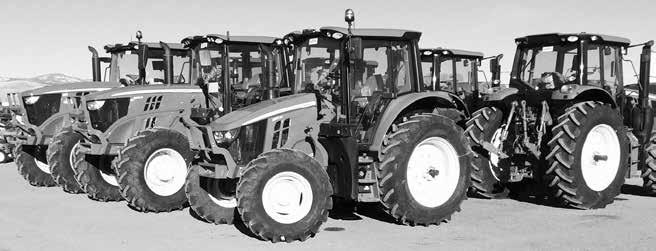
2023
full GPS, 6 SCVs, 380/90R54 rear tires with duals, 380/80R38 front tires with duals, 291 hours. 6 year/4000 hour extended PowrGard Warranty. Stock #90254 $433,000
2022 John Deere 8R 310 IVT with RHR, ILS, full GPS, 6 SCVs, 480/80R50 rear tires with duals, 420/85R34 front tire with duals, 1257 hours. 6 year/4000 hour extended PowrGard Warranty. Stock #90255. $373,000

2022 John Deere 7R 290 cab tractor, MFWD, IVT transmission, Command Pro, air seat & cab suspension, triple link suspension, front & rear fenders, Ultimate Visibility package. PowrGard Warranty good till 10-23-2029 or 5000 hours. Which ever comes first. 532 hours. Stock #91693
$328,000
2024 John Deere 6155M cab tractor MFWD with 640R loader & grapple, 20 speed PowrQuad with left hand reverser, AutoTrac ready less receiver, 3 SCV, beacon and work lights, triple link front suspension, mechanical cab suspension, Panorama roof, 2-450# weights each side, liquid ballast. Factory Warranty good till 7-25-2026 or 2000 hours, PowrGard Warranty good till 7-23-2030 or 4000 hours. Stock #93779, 233 hours.
$215,000
2024 John Deere 6155M cab tractor MFWD with 640R loader and grapple, 20 speed PowrQuad with left hand reverser, AutoTrac ready less receiver, 3 SCV, beacon and work lights, triple link front suspension, mechanical cab suspension, Panorama roof, 2-450# weights each side and liquid ballast. Factory Warranty good till 7-25-2026 or 2000 hours, PowrGard Warranty good till 7-23-2030 or 4000 hours. Stock #93780, 403 hours.
$215,000
2013 John Deere 1890/1910 42-ft. air drill, estimated 75,000 acres, 7.5” spacing, ground drive. Stock #92946 $92,000
John Deere 455 box drill, 25-ft., 7.5” spacing, single grain box, markers. Stock #93510. $17,500

2023 John Deere 6110M cab tractor, MFWD, 24 speed PowrQuad with reverser, 3 SCVs, 30 gpm hydraulic pump, rack & pinion rear axle, cast wheels, 3 function loader ready, mechanical cab suspension & Panorama roof. Factory Warranty good till 4-182026, Powertrain Warranty good till 4-17-2030 or 4000 hours. Stock #93207.
$142,500
2023 John Deere 6110M cab tractor, MFWD, 24 speed PowrQuad with reverser, 3 SCVs, 30 gpm hydraulic pump, rack & pinion rear axle, cast wheels, 3 function loader ready, mechanical cab suspension & Panoram roof. Factory Warranty good till 4-182026, Powertrain Warranty good will 4-17-2030 or 4000 hours. 502 hours. Stock #93208.
roller harrow, hydraulic fold, S-tines, rear scrapers. Stock #93333. $9750
1995 Western 12-ft. rigid roller harrow. Stock #93978. $3900
Bale King Vortex 3000 round bale processor, left hand discharge with hydraulic deflector chute. Stock #92911. $8500
Woods SB74C snowblower with manual discharge $4949
$140,000
Woods BO72RC 72” rotary cutter $4290
$126,000
2018 New Holland T6.170 cab, MFD, 16 speed, Dual Command transmission, 845TL loader & grapple, 888 hours. Stock #86681.
2019 Frontier RC 2048 rotary cutter, 48” cut, 540 PTO driveline with slip clutch, front & rear chain enclosures. Stock #92369. $1600 Woods TK72 72” finish mower. Stock #84419 $4600
2020 Frontier WC1205 wood chipper, 540 PTO, 5” capacity, 35-95 hp, like new. Stock #92065. $6400
$110,000
New Holland T6.165 cab tractor, MFD, 16 speed Powershift transmission, 3 SCVs, 855LA 2 function loader 1220 hours. Stock #92103.
2015 New Holland T7.210 T4A MFD, 165 hp, Powershift, 3 SCVs, 2380 hours. Stock #91852.
$120,000
2023 John Deere 5090E cab tractor, MFWD, 12/12 transmission with left hand reverser, loader ready, air seat, 3 SCVs, approximately 700 hours. Factory warranty good till 10-2025, Powertrain good till 10-2028 or 3500 hours. Stock #91752. $68,500
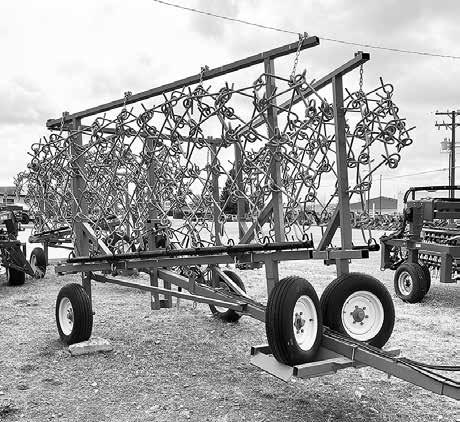

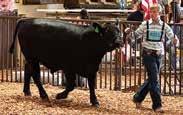
THANK YOU
Torgerson’s for purchasing my 2025 market steer.
Miles Geer
VAN TRAILERS FOR SALE

Large selection of Dry Van Trailers 28ft 2008 Walbash good floors and roofs. Road ready $3900 ea. Flat bed Trailer 24ft older but in solid shape $2600 1 single axle converter dollie $2500
Call Randy for more information (406) 855-5994


NEW HDPE PIPE – IN STOCK –
1” – 11/4” – 11/2” – 2” – 3” & 4” x 200 psi
Use for irrigation, stock water or drinking water. Red stripe for electrical use. Yellow stripe for natural gas use.
Also available 3/4” to 2” SIDR TURF/IRRIGATION HDPE pipe 3/4” - 4” orange smooth wall HDPE conduit HDPE pipe available in 20 to 50-ft. lengths from 6” to 66” diameter
Pipe is available by the stick - coil - reel - truckload
Call Ed at Big Sky Pipe – Great Falls, MT
Delivery available 406-453-7299 Veteran Owned or Email: ed.bigskypipe64@hotmail.com – www.bigskypipeandsupply.com
STORAGE CONTAINERS & BRIDGES

Overseas Flat Racks and Shipping Containers 8-ft. to 53-ft., mouse proof, weather tight storage
Phone (406) 899-4104 TCB TRANSPORT, LLC www.boxesandbridges.com 20-ft. & 40-ft. Heavy Duty Bridges

IS A 1031 EXCHANGE RIGHT FOR YOU?
Determine if you qualify for and would benefit from a 1031 Exchange
Are you selling an investment property?
Are you seeking tax deferral?
Can you meet the strict deadlines?
Do you want to reinvest in another like-kind property?

British White cattle are one of the oldest purebred cattle from the United Kingdom. They are primarily a beef breed but maintain a dual-purpose identity with some farmers using them for their rich milk.
British White cattle are a highly adaptable breed, known for their intelligence, docility, productivity, longevity, and hardiness.
British White cattle have a lot to offer farmers, and this article will cover their history, characteristics, and why you should consider British White cattle for your farm.
Where Do British White Cattle Come From?
British White Cattle are originally from Whalley Abbey, Lancashire in Great Britain. They naturally evolved from wild cattle.
It was noted in historical records that a large herd existed at Whalley Abbey in the 15th century and was kept by the nobility there.
A small number of the original heard was purchased privately in 1840 at Woodbastwick and in subsequent years some of the herd was moved to Norfolk, though a cattle plague in 1860 killed all but 2 individuals, from whom the herd was built back up.
A portion of these cattle were sold to other smalls farms in the late 19th century. Some farms preferred red-point over blackpoint, and polled over horned, with other farms selecting for different traits resulting in the breed having some difficulty in keeping a consistent identity.
British White cattle are sometimes confused with the horned White Park cattle and were at times kept in the same herd book due to the heavy crossbreeding between them, but today the two are known to be two separate breeds.
In WWII, British White cattle were exported to North America for the first time in the 1940s by order of Winston Churchill who wished to preserve the breed.
Following the conclusion of WWII, they were exported to Australia in the 1950s.
In 1946, the Park Cattle Society merged with the newly created British White Cattle Society, and they decided to only registered polled individuals.
In North America, the British White Cattle Association of America was created, and in Australia, the British White Cattle Society of Australia was founded with the goals of keeping the qualities that the British White breeds of cattle had come to be known for.
While cattlemen appreciate the British White for its outstanding performance as both a suckler and beef breed, they still have a relatively small population worldwide and are currently on the watch list by the Rare Breeds Survival Trust.
British White Cattle is the official breed name and Bos taurus is the scientific name. They have a white coat with black points or red point. Dark pigmented skin with black ears, nose, muzzle, eyelids, hooves, and tongue. The front of the fetlock may have a color splash.
Cows have well set udders and black medium-sized teats.
They are naturally polled.
The average calf weight is 77lbs. A mature cow can weight between 1200 to 1500 pounds. The stand about 4.4 feet tall.
British White Cattle
Written by Christina Pichler of Cattle Breeds
A mature bull weighs between 2000 and 2400 pounds and are usually about 4.7 feet tall.
The gestation period for British White Cattle is 283 days and calve first at around 2 years.
Best time to slaughter is 14 to 16 months with intensive finishing, though some wait until 24 to 30 months with a carcass weight of 1300 pounds.
Expected lifespan of British White is 20 years with a productive lifespan of 12 years.
They are best known for their troublefree temperament, quality beef, mothering ability and easy calving.
Their one weaknesses is they are possible carriers of Robertsonian Translocation (RT) which is a chromosomal abnormality affecting the number of chromosomes (58 or 59 rather than 60) and may affect registration.
British White are adaptable to both extreme cold and excess heat.
What Is So Special About British White Cattle?
British White cattle are dual-purpose animals and are primarily raised as beef cattle. They are typically finished off of grass and can be butchered as early as 14 months though many operations choose a 24 to 30-month window for higher weight.
British White beef is premium, wellmarbled and high-grade beef devoid of excess fat. It is known as tender meat with a unique flavor profile, so much so that celebrity chef Nigel Haworth purchased a herd of 90 cows in 2008 for exclusive use in his Michelin-starred restaurants.
Typical carcass yield falls between 55% and 60% and produces up to 70% select beef. As a beef breed, British Whites are highly economical for return on investment.
British White cows were heavily used in commercial milk operations until the 1960’s because they are top-notch producers that can yield up to 5000 liters.
British White cows can easily handle twins without needing supplemental milk and cows can wean calves weighing more than 500 pounds which is great value when using them for beef.
Why Should I Raise British White Cattle On My Farm?
The British White breed is known to have excellent hardiness and high productivity, with British White cows still birthing into teenage years. They are gentle, with a docile temperament that handles well.
British White bulls have high fertility and can handle a herd of 40 to 50 cows.
They are an easy keeper that is efficient at foraging and finishes on grass, are resilient against disease and parasites saving money on vet bills and have a natural resistance against viral pneumonia as well as tuberculosis.
Their dark skin protects the skin against sun, snow, and cancer and the dark hooves rarely lose shape which smean less foot problems.
Heifers are able to provide rich milk immediately for their first calving.
Breeders love their crossbreeding abilities as they pass on the best of their traits and are naturally polled so they won’t accidentally injure each other and are easier to handle.
Navigating farm succession without a family heir: Leasing land to non-related parties
By Jessica Groskopf, Nebraska Extension Ag Economist
In my work with agricultural families, I’m seeing a growing and difficult reality: many farms and ranches today don’t have a successor within the family. While this absence can simplify parts of estate planning, it often creates deeper, more emotional challenges, especially when legacy and identity are tied to the land.
This article is the sixth in a series supporting farm and ranch owners facing this transition. If you’re just joining, I recommend reading the earlier pieces at cap.unl.edu for helpful background.
In the first article, I encouraged you to think differently about your legacy. It doesn’t have to end with your family. You might consider offering opportunities to employees, tenants, or neighboring producers.
Helping someone outside the family doesn’t mean shortchanging your heirs. There are ways to support other producers while still allowing heirs to retain direct or indirect ownership of land. Often, this means creating a legal agreement that allows someone, like an employee, tenant, or neighbor, to lease land from your heirs, company, or trust.
Now where does the lease agreement come
into play? It depends on what other estate and transition tools (wills, trusts, companies, etc.) you are using. Work with your advisory team to know exactly how to structure your lease agreement. Here are the specific clauses the agreements should cover as it relates to leasing to an unrelated party of your choosing.
Basics – Any valid lease in Nebraska must contain the names of the landlord and tenant(s), a legal description of the land to be rented, the rent amount or share-percentages, the dates of the lease, and signatures of both the landlord and the tenant. Remember, if the land is in a trust or company, that entity will be listed as the landowner. If the lease agreement is longer than 1-year, it must be filed at the county courthouse in order to be valid. I do not recommend referencing a specific lease rate, i.e., “the USDA County Average Rental Rate”. This can make it challenging for families, when the rate was not reported that year, or the survey or reference no longer exists.
Transfer of Property – When implementing a comprehensive estate and/or transition plan, often property is transferred or re-titled. Including a clause in the lease agreement that states any transfer will be subject to the lease’s provisions will help protect the tenant.
Binding on Heirs – A “binding on heirs” clause ensures that if you die while leasing property your heirs will be subject to the terms by the agreement.
Amendments – The terms and conditions for making amendments should be clearly outlined in the lease agreement. Often, leases will require amendments to be in writing and signed by both parties.
This is important to allow both parties some flexibility within the lease.
Termination Clause –If the tenant is not performing well, there needs to be a defined process for your heirs, trust, or company, to be able to terminate the lease. This is vitally important to protect your heirs from a bad tenant.
For examples of lease agreements visit: https://aglease101.org/doclib/
While setting up a lease agreement for your heirs can be useful, it can cause some additional challenges. First, your heirs will need to have the resources to maintain the property. The cost of property taxes, insurance, irrigation maintenance, etc. should not be taken lightly. Moreover, your heirs need to have the business acumen to be able to manage the property. It should be your top priority to make sure they are prepared for this role. If no one is prepared for this responsibility, consider the use of a farm management company.
When there’s no family successor, your legacy can still live on through thoughtful planning. Lease agreements allow you to support someone else in farming or ranching while providing an opportunity for income for your heirs.
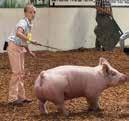
Thank You
Stockman Bank of Cut Bank for purchasing my 2025 market pig. Dawsyn Geer
Local MT private collector in search of 1967-1979 Ford F250 4x4. Prefer a nice original, but will consider others. If you’ve got one sitting in the quonset or out on the back forty, give me a call or text on 4O6-465-71O2 and let’s talk. Will pay top dollar for the right truck. THANKS!
TRAILERS FOR SALE
Transcraft double drop with outriggers, ramps x 45-ft. needs tires, deck.
Fruehauf 9-ft. x 42-ft. with roll tail, hitch and air to the back.
Fruehauf straight deck x 42-ft., new tires (11R22.5), sliding tandem axle.
King 4SW-DD-TB oil field float x 32-ft., needs tires.
Fruehauf full (2+2) x 32-ft., 286/75R24.5 front and 11R24.5 rear, pintle hook, storage box and good deck. Phone (406) 799-2420





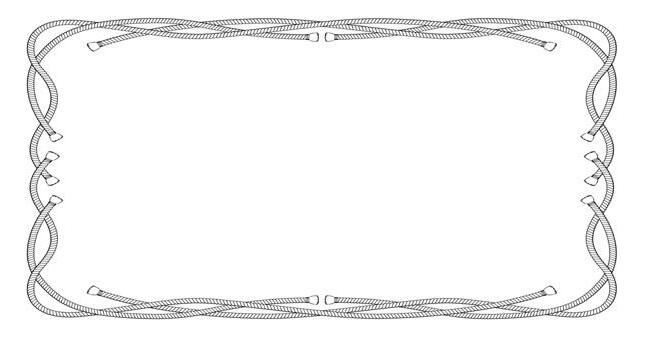
Use ‘lay-by’ time for monitoring management results
By James Rogers, North Dakota State University Extension forage crops production specialist
When I grew up, we still did a lot of weed control of our row crops with cultivation. I spent a lot of hot summer days watching soybeans flow between the row spacings of a cultivator. Once the crop’s canopy had closed, we were done with cultivation for the year, and we were just waiting for the crop to mature and harvest. This was “layby” time — the spring planting push had eased up, and we could then move on to other things and maybe just take a breath and regroup.
This did not mean we were ignoring the crop and hanging around waiting for harvest. We shifted more into monitoring, keeping an eye on crops for weeds, insects, disease and moisture. Watching our hay fields to gauge when our next cutting would take place. Keeping an eye on cattle out on pasture. All of this was done during “layby” time.
Monitoring is an essential and often overlooked part of pasture, range and forage management. There are two parts to monitoring. The first part is things that you
monitor several times within a year. The second is things that you might monitor a few times within a year, but repeat over time in order to determine a trend.
Monitored several times per year
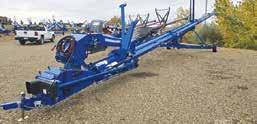
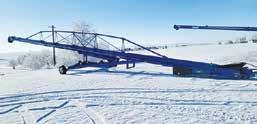

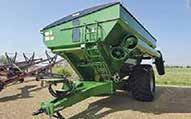



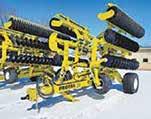

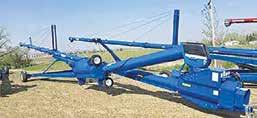
The weather is monitored almost daily. Taking a look at the latest U.S. Drought Monitor map for North Dakota, the northeast and western parts of the state are abnormally dry or in moderate drought conditions. Cattle producers in these areas should be closely monitoring forage availability, cattle body condition and water resources. Also, the U.S. Seasonal Drought Outlook provides an outlook on how largescale trends are developing for drought tendency. Both of these tools can be used to help anticipate how forage availability will change through the summer months and are available at droughtmonitor.unl.edu. Doing a good job of monitoring forage availability or utilization is sometimes easier said than done. A grazing utilization stick is an easy way to keep track of pasture utilization or the amount of plant weight that has been removed by grazing. These utilization sticks were developed by and are available through North Dakota State University Extension. These grazing sticks provide information on the recommended plant height to begin and end grazing for key species. By measuring the heights of key species before and after grazing, a plant removal weight can be calculated. Ideally, proper utilization of a plant is achieved when 50% of the plant weight has been removed, not plant height. This utilization rate varies by plant species, and knowing plant species and utilization goals is extremely important when the goal is to maintain plant diversity within a landscape. These measurements can be used to adjust the stocking rate during the grazing season.












Much has been written on the importance of beef cattle body condition score (BCS) and production efficiency, and there are many guides available on what these scores look like. Monitoring BCS until weaning is a good idea, especially if dry weather conditions continue to develop and forage availability becomes limited. Monitor overall animal health as well and especially with bulls. Bulls with sore feet or that have lost significant body condition probably have little interest in servicing cows.
Summertime livestock water quality can be an issue as temperatures warm. Blue-green algae blooms can produce toxins that can be harmful to livestock, wildlife and people. If water sources are suspected to be contaminated, they can be
Use ‘lay-by’ time for monitoring management results
CONTINUED FROM PAGE B18
tested. NDSU livestock water testing guidelines can be found at ndsu.ag/watertesting.
Monitored yearly and over time
Management results can be monitored within a year and over time to determine trends. All livestock production data, such as conception, birth and weaning rates, weaning weights and economic indicators, should be monitored over time.
On the pasture and range side of the equation, photo points are a neat way to monitor pasture and range conditions and document change over time. Learn what key plant species make up your forage base and are the backbone of your grazing operation, and monitor them over time. Are these key species increasing, decreasing or staying constant? How has the stocking rate changed over time? Has cow weight changed over the years, and has that had an influence on your stocking rate? Has carrying capacity changed over time?
Another important monitoring estimation is ground cover. Losses of ground cover can indicate change from a number of reasons, such as drought, stocking rates, grazing intensity and duration. Take a walk across a pasture and, after a predetermined number of steps, take a look at what you are standing on. Note the plant species present or bare ground. Keep track of the responses as you move across an area. If the area is too large to walk, ride across, then stop and take a look. Take the same route once or twice a year at the same time each year. This will give a good idea of how stable the plant population is over time.
I’m not sure there is a lay-by time anymore. Seems like there are always things that we can monitor and measure to make sure that we are staying on track. I remember one thing about cultivating soybeans on hot summer days in the field: when someone brought me a quart Mason jar of iced tea, it sure tasted good.
#####
Father, thank you for the good reminder to release myself from other people’s opinions and to trust in you alone, especially when I goof up.
#####
There’s that moment when you put your steak on the grill and your mouth waters all over from that amazing smell.

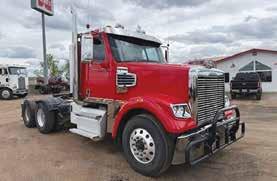
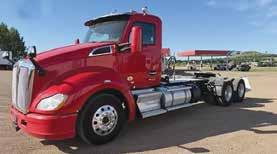
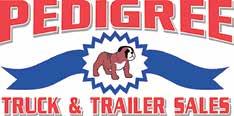























Braford Cattle
Written by Christina Pichler, Cowcaretaker.com
Braford cattle are primarily used for meat production and sometimes you can find them on the rodeo circuit. The Braford is a cross between Brahman cows and Hereford bulls, making an excellent beef breed that resists most diseases and is heat-tolerant.
Today, over 25,000 herds can be found across the world, with the largest herds in Australia, South Africa, New Zealand, and the United States.
The American Braford
The American Braford is the result of a breeding program in Florida, conducted in 1947 by Alto Adams Jr who wanted to cross Hereford cattle with Brahman cattle. His breeding efforts were not initially successful until he found a herd of climatized calves that didn’t suffer from eye and foot problems to use as a base.
The resulting cross of a Hereford cow with a Brahman steer produced the foundational herd of the Braford breed in America.
Renowned for their hardiness, resistance to disease, and excellent mothering abilities, they were readily accepted and adopted by the cattle industry as a profitable production breed.
A purebred American Braford is 5/8 Hereford and 3/8 Brahman according to the United Braford Breeders.
The Australian Braford
A year before the American Braford was being created, the Australian Braford was undergoing breeding efforts in Rockhampton, Queensland in 1946 by the Rea brothers.
The Australian Braford differs from the American Braford, and is close to an F1 species, with roughly half Hereford blood, and half Brahman blood within a 5% margin.
Both American and Australian Brafords are highly sought after and have excellent genetics.
Brafords are known for high adaptability, virility and prolificacy, feed conversion, and carcass size.
Braford Cattle originated in Australia and the United States. They are red with a white belly, head, and feet. They have a hump, and droopy ears.
Calves weight about 66 to 80 pounds. A mature cow can weight between 1200 and 1600 pounds. Mature bulls usually weight 1900 to 2200 pounds.
HYDRAULIC SQUEEZE CHUTE FOR SALE
8-ft. alley, 16-ft. round tub and portable loading chute (406) 531-1036
Saint Ignatius, Montana --- Delivery available
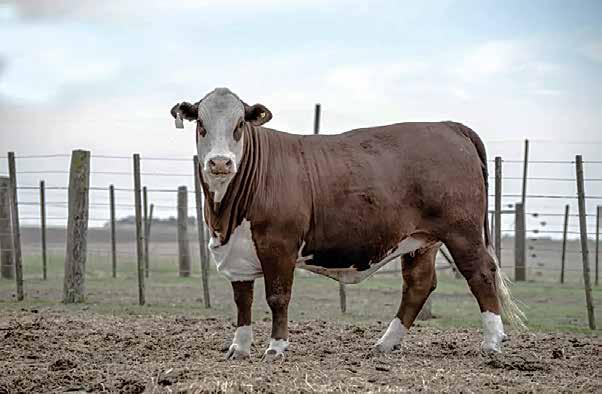
Most Braford cattle are ready to breed at 8 months and have a gestation period of 279 to 287 days.
The best time for slaughter is 6 to 9 months with carcass weight of approximately 50% of liveweight’
The Braford has an expected lifespan of 15 to 20 years with 10 to 12 years productive.
They are known for their high adaptability, prolificacy, marbling of meat, and carcass quality. Their weakness are they are not known for docility, can be aggressive and do poorly in harsh winter weather. They do best in warm climates but can adapt to cool climates.
Cows have excellent mothering instincts with good fertility and easy calving. Productive longevity and optimal milk production makes the Braford cow highly desirable.
Excellent meat quality due to great foraging ability with low waste on carcasses also makes the Braford an excellent beef cattle breed to consider.
Braford are an efficient breed that produces consistent beef quantity and quality. They are known for

hardiness and resistant to most diseases and parasites lowering vet bills and minimizing herd loss.
Brafords are available in both polled and horned varieties.
Weaning of calves is done at roughly half the weight of the cow (440lbs to 585lbs).
Hooded eyes make them unlikely to experience eye cancer or pinkeye infections. They are resistant to bloat through selective breeding and produce a well-muscled carcass that has little waste. They have great feed conversion and conformation.
Heifers are drought resistant and will still produce healthy calves even with low quality grass. Steers placed in the feedlot will gain roughly 4 pounds daily.
Braford bulls are known for being dominant, strong, and virile.
Small scale farmers will appreciate the Braford for adaptability and profitability.

Scientists find a “Silver Lining” to adult house flies’ filthy behavior
By Maribel Alonso, ARS
Researchers at USDA’s Agricultural Research Service (ARS) are investigating the microbial communities carried by house flies to enhance disease monitoring and reduce the risk of disease transmission by fly-borne pathogens in livestock, ultimately protecting our food supply and public health.
House flies play a crucial role in transferring harmful bacteria, viruses, and other microbes among cattle. They also have the potential to spread these pathogens from farms to nearby livestock operations and residential areas.
Adult house flies often have unrestricted access to farm waste, cattle manure, and animal excretions. Flies can pick up microbes from these sources and then spread them, potentially affecting livestock health, welfare, and production efficiency. This can contribute to significant economic losses. According to a previous study, it is estimated that U.S. producers spend over $1 billion annually on implementing fly control programs alone.
Effective fly management can mitigate
the spread of disease-causing bacteria and viruses, thereby improving livestock health and reducing potential risks to human health.
ARS researchers, university partners, and cattle producers are collaborating to study the types and numbers of microbes carried by adult house flies to assess their role as sources and disseminators of bacteria and viruses within confined dairy farms and, potentially, to neighboring operations.
In a study conducted in collaboration with Kansas State University (KSU), researchers determined that examining the genomic DNA (the complete set of genetic material in an organism) extracted from pools of individual adult female house flies in a specific location can provide a comprehensive overview of the microbes present in their local environment. House flies act as natural “flying swabs,” collecting microbial samples from diverse sources like sick animals or their waste. This innovative approach could potentially serve as a new tool to monitor and study microbes in the environment by allowing scientists to efficiently and safely analyze microbes in the field.
“The numbers of animals, their health status, the composition, and volume of cattle manure, and other environmental conditions at dairy cattle operations vary
#####
In 2002, Tootsie Roll Industries produced the largest Tootsie Roll ever made. It measured 3 feet in diameter and weighed 6,600 pounds. Just chew on that for a while.
from month to month, which in turn affects the abundance and types of microbes that will be present and therefore accessible by house flies,” said Dana Nayduch, a research leader and entomologist at the ArthropodBorne Animal Diseases Research Unit, Center for Grain and Animal Health Research in Manhattan, Kansas.
“By looking at what flies are carrying within and on their bodies over time, we can directly assess what is going on in their surrounding environment on the farm, as they acquire those microbes from these sources all day, every day. In fact, if there is a sick animal on a farm, a fly is attracted to it and will find that needle in the haystack for you, potentially among thousands of animals, and feed upon it and collect its microbes in the process,” explained Nayduch.
The insights gained from these ongoing studies can offer farm managers early warnings about the presence of harmful bacteria and viruses in their operations, enabling them to take preventive measures to protect cattle against potential severe illnesses or even outbreaks.
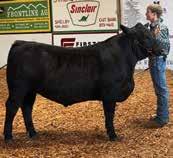




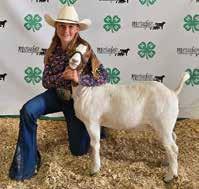






Landscaping is for the birds
By Emily How, Horticulture agent, NDSU Extension – Ward County
Growing up, I spent a lot of time with my grandmother. One of our favorite activities was watching the birds that would come to her feeder every morning. This year, I have been landscaping to attract more birds to my yard.
Birds require three things to survive - food, water and shelter. Food is easily provided in the form of bird seed and bird feeders, but other forms of food can also be provided. For instance, if there are damaged vegetables in your garden, you can place them in an open area away from the garden; this provides food for the birds and helps keep them out of the rest of the vegetables in the garden.


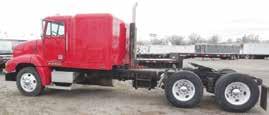






You may also choose to plant a sacrificial crop. Additionally, if there is a certain fruit, such as Juneberries or Haskaps, that you want to protect from the birds, you can cover that plant with a densely woven net while leaving a less desirable fruit, such as a wild grapevine, for the birds.
Attract birds with the sound of moving water; think streams, lakes and ponds. However, having a pond in your backyard is not really an option for everyone, including me. There are some simpler options that can be equally effective. One method uses a plastic gallon-size bottle hung over a basin to collect water. Simply puncture a small hole in the bottom of the bottle, fill with water, and hang from a tree branch or other high spot over a bird bath or shallow dish. The bottle will slowly drip into the basin and provide a moving water source for the birds.
A more beautiful option would be to use a solar-powered bird bath fountain. Be sure to place a large rock or structure in your bird bath to provide a landing spot and refill the water often. Cleaning out your bird bath once or twice a year is required, but do not use bleach! Bleach can remove the natural oils from the birds’ feathers and is toxic to the birds. Hot water and good scrubbing are sufficient.
Building a shelter can require a little more time and thought. Work with what you have and know that different birds prefer different shelters. If you are interested in attracting a certain type of bird, know what type of shelter they prefer. Black-capped Chickadees, for example, prefer to shelter in cavities of trees with soft, decaying wood; in the yard, use a nest box filled with wood shavings.
Another option is to plant shrubs and trees that act as both a shelter and a food source; crabapples, oaks and conifers are great options. Other native plants such as milkweed, Black-Eyed Susan and ornamental bluestem provide food and shelter for birds and, as a bonus, color and texture in the landscape.
Now that you have attracted the birds into your landscape, you can reap the benefits. Having birds in your landscape helps lower insect populations, aids in pollination and increases mental health. Yes, watching the birds in your yard increases mental health, as well as lowers blood pressure and other stress-inducing hormones.
Want the benefits of birdwatching, but don’t have a yard?
The Cornell Lab of Ornithology (study of birds) has a Citizen Science Project in which you watch a bird feeder, count the birds that visit and submit the results on their website.
This summer, do some landscaping for the birds…and in turn, yourself!

Lilliana Nielsen with her 4-H pig, Babe. Lilliana is from Whitewater, Montana.



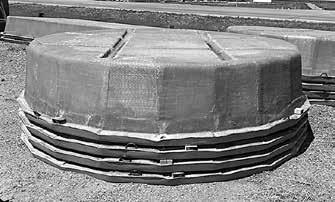













THANK YOU
Colter Sandon
HYDRAULIC SQUEEZE CHUTE FOR SALE
8-ft. alley, 16-ft. round tub and portable loading chute (406) 531-1036
Saint Ignatius, Montana --- Delivery available
your water go further, restores biology, and unlocks nutrients tied up by overuse of fertilizers, manure, and chemicals. Grow nutrient-dense, pest-resistant plants and cut inputs by up to 75% in 3 years!
Great for hay, fruits, vegetables, lawns & miscellaneous crops. Available in 11 lb. jugs, 50 lb. bags, or 1-ton totes.
Call today - to start a Soil Health Evaluation, verifying your NPK value per acre. Contact your closest dealer today. In Moore, MT - Samuel Schrock 406-380-0776 or Riverton, WY - Daniel Gingerich 307-306-7475



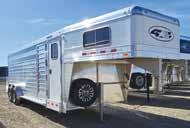

Disease development associated with early-season hail damage in corn
By Amy Timmerman - Extension Educator, Kyle Broderick - Extension Educator and Coordinator of the UNL Plant and Pest Diagnostic Clinic, Tamra Jackson-Ziems - Extension Plant Pathologist
Several diseases have been confirmed in samples from corn fields across the state that were damaged by earlier storms. Severe weather conditions including hail, high wind, heavy rain and sandblasting have caused plant injury, which has provided an opportunity for pathogens to infect. Producers and consultants should monitor for diseases and assess the risks for later in the season.
Bacterial Diseases
Bacterial diseases in corn have been confirmed in fields damaged by severe weather. Goss’s bacterial wilt and blight, and bacterial leaf streak have been confirmed. Current warm temperatures, rainfall/overhead irrigation and wind will support spread and further development of these diseases.
Goss’s Bacterial Wilt and Blight
Goss’s bacterial wilt and blight (caused by Clavibacter nebraskensis) can cause different disease symptoms depending upon the crop stage when plants are infected. The most common symptoms are leaf “blight” lesions. These lesions have watersoaked, discolored lesions, especially along wounds. Lesions may have dark green/ black “freckles” or flecks on the edges of dark, water-soaked lesions (Figure 1) that are unique to Goss’s blight. Freckles may appear translucent when backlit by bright light such as the sun.

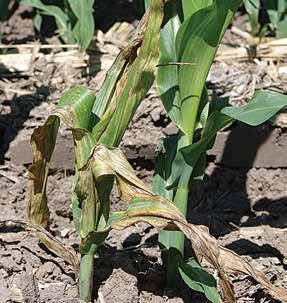
when the bacteria are secreted on the surface of the lesions. Once the ooze is dried, it will give the leaf a shiny or sparkling appearance. Be sure to check the bottom side of the leaf carefully as well, as the ooze may be washed away by rainfall or overhead irrigation.
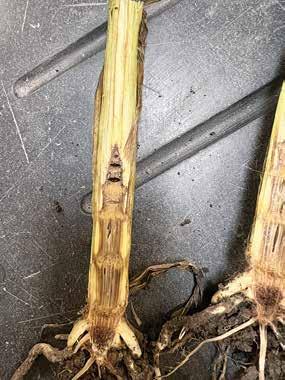

When plants are damaged early, usually by V6 stage, they can sometimes become infected at multiple nodes and develop a less common systemic wilt. Affected plants may be stunted and wilted and seemingly “melt down” quickly. These plants often die during early season as they are overcome with bacteria throughout. Discoloration is visible inside the stalk but does not have the same putrid odor associated with bacterial stalk rot.

Bacterial Leaf Streak
Bacterial leaf streak is caused by Xanthomomas vasicola pv. vasculorum. Symptoms are interveinal leaf streaks that are brown, tan or yellow, which can be short or very long (Figure 2a). Lesions are often strikingly yellow when backlit against the sun.
the leaves, which occurs
Figure 1a. Goss’s bacterial wilt and blight can cause leaf lesions that are dark and water-soaked, and may have dark “freckles” on the edges. Shiny bacterial exudate may appear on the leaf surfaces.
The second feature of the disease is the presence of bacterial exudate, often called “bacterial ooze” on
Figure 2b. Systemic Goss’s wilt can develop in plants that were wounded during the seedling stages and cause affected plants to die and collapse.
Figure 2a. Bacterial leaf streak lesions are wavy and between veins.
Figure 2c. Discoloration in the corn stalk from Goss’s wilt.
Figure 2d. Discoloration of cut stalks from Goss’s wilt.
Rained-on hay
By Todd Whitney, UNL
Rained-on hay can still be a valuable resource; even if rain fell on cut hay windrows has lowered both yield and quality during the drying process. However, losses will vary and will likely be less if…the rain occurred soon after cutting and the forage was not re-wetted many times.
Wisconsin research indicates that 1 inch of rain on alfalfa after 1 day of drying caused 22% dry matter loss compared to 6% yield loss without rain damage. Yield losses, doubled to 44%, though, with 1.6 inches of rainfall on alfalfa over a few days. Grass hays pegged less dry matter losses.
University of Minnesota research indicates that rainfall wetting of dried alfalfa has little impact on protein content unless high leaf droppage losses occur. Rained-on hay carbohydrates, though, declined 6 to 40%; thus, lowering overall forage energy content.
Rained-on hay has increased risk of forage mold and heat damage during storage. Further, windrows remaining in fields for longer periods can injury regrowth and reduce yield of future cuttings. So the best option for wet windrows is to remove the cut hay as quickly as possible. Consider turning wet windrows and baling; chopping the forage; OR using severely damaged forage as mulch.
To know the true quality of rained-on hay, submit a forage sample to a lab for testing. Remember that a hay test is truly the best way to know the quality of forage.
Finally, monitor rained-on windrows for insects and weeds invasion; and treat to prevent further problems.
More alfalfa and forage hay management guidelines are available at: https://cropwater.unl.edu or https://beef.unl.edu

New Tractors
Case IH Puma 185
Case IH Maxxum 150
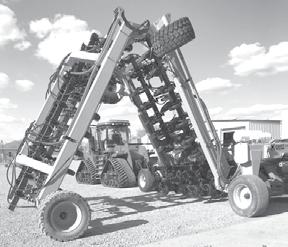



2429 W HOLLY STREET SIDNEY, MT 59270
Used Haying Equipment
2014 John Deere 569 Monitor 19k+/- Bales, $20,000

New Track Loaders
Wacker Neuson ST45 Wacker Neuson SM120

2429 W HOLLY STREET SIDNEY, MT 59270
Case IH Farmall 25SC w/Cab, Mower & Loader Farmall 40C
New Tillage
Case IH 475 Speed Tiller, 27ft
Case IH 475 Speed Tiller, 21ft
Used Tractors
2011 Case IH Magnum 340 Power Shifted, 2100hrs, $180,000
New Harvest
Case IH 8250 AFS
MacDon FD2-40
New Haying Equipment
Case IH RB 565 Premium Case IH WD1505 Windrower

New Misc AG
• Parma 30ft Mulcher
• Unverferth 1020 Seed Tender
• Grasshopper Mowers
• Morris Hayhiker 1400
• Great Plains 1006 NT Drill
• Morris Hayhiker 900
Case IH WD 1505 Windrowers
2013 MacDon M155, 1100hrs, 35ft D650 Triple Delivery Draper Used Harvest
2020 MacDon FD 145, Case IH Adapter, $95,000
2023 FD245, Case IH Adapter, $140,000
Used Ag
2010 Haybuster 2650 Processor, $15,000
Used Skidsteer
2016 Case IH TV380, 3034hrs, $37,500
2015 Case IH TR270, 2600hrs, $37,500
New Skidsteer 2025 Case IH SV280B

Consigned AG
• 2012 Case IH RB 564, 20,000 Bales, $12,000
• 2004 John Deere 9660STS, 1300 sep hrs w/MacDon 973 35ft, $89,000
• 2021 New Holland Roll Belt 560, 3300 Bales, $45,000
• 2020 Brent V1100 Grain Cart w/Scale, $70,000
New Compaction
Wacker Neuson BS62 Rammer Wacker Neuson WP1550 Plate Compactor
New Excavator
Wacker Neuson ET42 Wacker Neuson EZ36
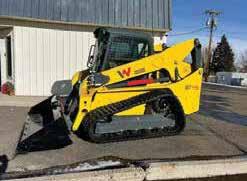
New Telehandler Wacker Neuson TH627 New Light Towers Wacker Neuson LTT6


New Misc Construction
• Danuser Pallet Forks (48ft, 4000lb), Hydraulic Post Hole Digger & Augers, Hammer Post Pounder, T3, T7, & T8 Hornet Post Pounder, Intimidator Tree & Post Puller, Mega Mixer
• Jenkins Hydraulic Forks (4ft, 5ft & 6ft Length & Widths)
• 3-pt/Skidsteer Trailer Spotters
• Grabtech Skidsteer Grapples
• Garfield EDS10-T Box Blade • Case IH Snow Pushers & Buckers

Thank You
Billman’s for purchasing my steer Bandit. Your support of my project and 4-H is greatly appreciated.
Janae Roberts
RETIRED- MACHINERY FOR SALE
2011 John Deere 9330 tractor, (Pre-Def), 710/70R38 duals, good rubber, 3440 hours. Brandt 1552 LF conveyor, hardly used Summers 30-ft. colter disc. Good condition For more information, please contact: (406) 796-2244 or (406) 796-2431
Montana Department of Agriculture 2025 Pesticide Disposal Program
If you have any old pesticides - insecticides, herbicides, rodent poison or fungicides - laying around unused, the Montana Department of Agriculture will take them off your hands. The agency will hold waste pesticide collections in Eastern montana in September. The collections are scheduled in Plentywood on September 23; Glasgow on September 24; Glendive on September 25; and Hardin on September 26. The disposal program is a non-regulatory, service progam that offers pesticide users the opportunity to dispose of unwanted and unusable pesticides in a safe and legal way that is economical and convenient. Disposal costs are free for the first 200 pounds and $1.00/lb. per pound for additional amounts over 200 pounds. Disposal by other services can cost 5 to 10 times more. Additional information and the required pre-registration forms are available by contacting Carli Davis in Richland at (406) 465-0531; mail to Dept. of Agriculture, Pesticide Disposal Program, 508 Prairie Dell Rd, Richland, MT 59260; email Carli.Davis@mt.gov; website http://agr.mt.gov/pesticidewaste-disposal-program



Disease development associated with early-season hail damage in corn
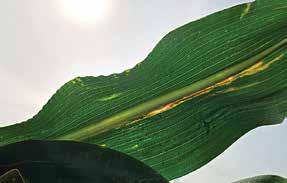
A key characteristic of lesions is the wavy, jagged margins, which can be used to differentiate them from the smooth, rectangular lesions of the fungal disease, gray leaf spot. These bacteria do not require wounds to infect plants, but bacterial leaf streak can be more common after heavy, wind-driven rain.

Bacterial Stalk Rot
Bacterial stalk rot, caused by Erwinia dissolvens or E. chrysanthemi, survives in corn and sorghum residue. Symptoms start as lesion development on the lower stalk or discoloration of a leaf sheath and then systematically move up the stalk and throughout the plant. A foul “fishy” odor is common, and the top of the plant can often be easily removed (Figure 3). As the disease progresses, the stalk may rot and the plant can collapse. Bacterial stalk rot can affect the plant at any node and when infection occurs high on the plant it may impair normal tasseling. When stalks are split, there is internal discoloration and soft slimy rot especially at the nodes but can spread throughout the plant and may hollow out stalks.

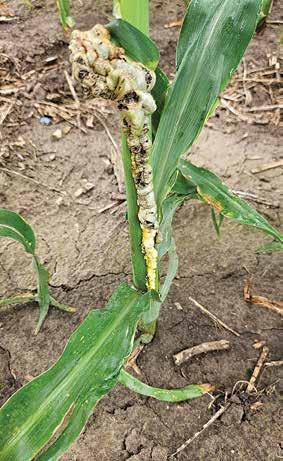
Fungal Diseases
Common Smut
Common smut (Figure 4) occurs in almost every field in Nebraska but is more prevalent after plants are injured. This disease is caused by the fungus Ustilago maydis and can also be called “boil or blister smut.” Smut galls may look like mushrooms or warts and can develop on any plant part, including leaves (Figure 4), stalks and tassels, but it’s most recognizable when they develop on the ear. Initially, galls are white to gray in color and fleshy to the touch. As the gall matures, it ruptures, releasing a large amount of black teliospores that overwinter in the soil for future years.
Diagnostics
Some of these diseases may mimic symptoms of other diseases that may require very different management strategies. All of those listed are caused by pathogens that overwinter, so disease may return in subsequent years when conditions are favorable. Be sure to submit samples to the UNL Plant and Pest Diagnostic Clinic for help identifying diseases and other problems. Some commercially available tests are available that can successfully identify some of these pathogens. However, their hyper-sensitivity can lead to false positive results when samples that are easily contaminated by handling, so take care when interpreting results.
Management
Unfortunately, fungicides are ineffective against the diseases listed here, making accurate diagnoses important for effective management decisions. Some bactericides are labeled for corn, but their use has had inconsistent results on these diseases and can be cost-prohibitive since most are not absorbed by the plant and require repeated applications. Selecting more resistant corn hybrids (with better disease ratings) for these diseases can help reduce disease pressure and losses.

#####
The tongue has 8 different muscles. It plays a major role in speech and proper pronunciation.
#####
First electric hand drill: invented by Wilhelm Fein of Norwell, Massachusetts, in 1895.
#####
Sleeping in a hammock promotes better spinal alignment, resulting in less back pain and discomfort.
#####
1947 – Red’s Giant Hamburg on Route 66 in Springfield, MO is credited as the first restaurant to provide drive thru service.
Figure 3. Bacterial stalk rot may develop in the bottom of plants standing in water or in the tops of plants, rotting out several nodes that can be easily removed (pictured). Affected plant parts often have a foul odor.
Figure 2b. Bacterial leaf streak lesions may appear bright yellow when backlit.
Figure 4a. Common smut is caused by a fungus that can cause development of tumor-like galls or warts anywhere the plant is injured or on the ears.
Figure 4b. Common smut galls forming along the stalk and leaf midrib of a corn plant.


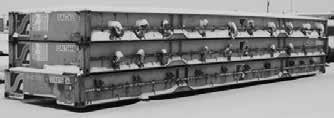







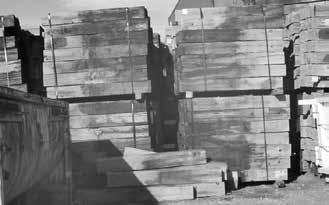


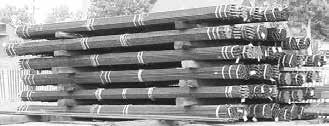


low boy service
40-ton RGN trailer for hire to transport combines,
Within Montana & surrounding states. We also have 48-ft. step deck trailers available. Pilot car service available. Insured & experienced. Call Roger at Roger Rader Inc., Sun River, MT 406-264-5475 or 406-799-5162 (Roger’s Cell) (MC# 170263 US DOT# 128029)
GRAIN VAC FOR SALE


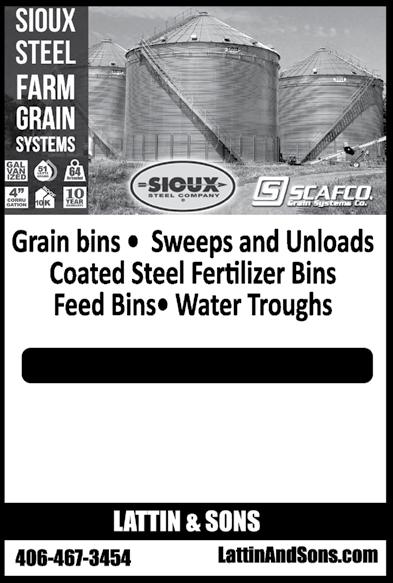
NDSU Extension provides animal mortality resources after severe weather
As cleanup from June’s severe weather continues, reports of animal mortalities are beginning to accumulate. North Dakota State University Extension and agency partners have gathered pertinent reporting and disposal information.
The Livestock Indemnity Program (LIP), provided by the USDA Farm Service Agency (FSA), offers payments to eligible producers for livestock death losses in excess of normal mortality due to adverse weather. To participate in LIP, producers will be required to provide acceptable documentation of beginning inventory and of death losses resulting from an eligible adverse weather event and must submit a notice of loss to the local FSA by the application deadline, March 1, 2026. Producers should record all pertinent information regarding livestock losses due to the eligible adverse weather or loss condition.
Beginning inventory examples can include the following:
contemporaneous journal
ear tag records
invoices/canceled checks
veterinary records
chattel records
insurance records
bank records
tax records
brand records
government records
dairy records
trucking records
Examples of death loss documentation include the following:
contemporaneous journal dated pictures
third-party statements
veterinary records disposal invoices
insurance records
bank records
tax records
brand records
government records
dairy records
“LIP permits the use of contemporaneous records for proof of a producer’s inventory and death losses, which is a great opportunity for those producers who keep a running record, journal or cattle book on hand throughout the year,” says Beau Peterson, agricultural program director and state environmental coordinator with USDA FSA. “FSA offices and farm lenders throughout the state provide example cattle record books that are useful and can be used as evidence for your LIP applications.”
“If you experienced livestock deaths due to the recent severe weather, disposing of those carcasses will be one of your top priorities in the coming days,” says Mary Keena, NDSU Extension livestock environmental management specialist. “In North Dakota, animals that die for any reason must be disposed of in an approved method within 36 hours of death.”
“Burial, composting, landfilling, incineration and rendering are all approved methods of carcass disposal,” continues Keena. “Burning is also an approved method in certain situations, but should be used as a method of last resort.”
Euthanasia methods should be considered prior to disposal, according to Dr. Jake Galbreath, NDSU Extension veterinarian.
“If an animal was euthanized by a veterinarian using injectable drugs, further consideration of the disposal method is recommended to limit drug residue exposure to wildlife and potential pollution of groundwater,” says Dr. Galbreath.
Burying, landfilling or composting may be the easiest options for carcass disposal.
Burying
Keena says to avoid burying animals near surface water, such as streams or wetlands.
“If you are going to bury, be sure carcasses are placed 4 feet above the water table with 4 feet of cover,” says Keena. “If possible, bury livestock in clay soils.”
Landfilling
If the disposal of carcasses exceeds typical carcass management resources, or the number of carcasses is too large, contact the North Dakota Department of Environmental Quality for technical assistance in selecting an appropriate disposal site.
Carcasses should be disposed of at an approved municipal solid waste landfill: https://deq.nd.gov/foia/SolidWaste/ActiveSWLandfillsMSWLF.aspx. Contact the landfill for specific disposal protocols and to determine if they will accept the carcasses.
Composting
Composting is an above-ground burial process that uses resources already available on an operation.
Keena says composting requires the following materials:
Base material: straw, old hay, coarse crop residues (corn stalks), sunflower hulls
Bulking material: manure or spoiled fermented feedstuffs
Cover material: straw, old hay, sawdust
Follow these instructions to properly compost:
Place 2 feet of base material in a pile or a long row, depending on the number of dead livestock to be composted.
Lay dead livestock on top of the base. Have at least 1 foot of base material between the perimeter of dead livestock and the edge of the base.
Cover dead livestock with 8 to 10 inches of bulking material.
Cover the entire pile or long row with 2 feet of cover material.
Keena provides a few key things to remember when composting:
Small-sized dead livestock (livestock able to be lifted by hand) can be layered next to or stacked on top of one another, given there is bulking material between them so they are not touching.
If composting ruminants, puncture the rumen to prevent it from exploding.
Make sure the pile always has sufficient cover material to keep bulking material and dead livestock covered.
Aerate the compost every six months from early spring to late fall. To accelerate composting, aerate it every two months from early spring to late fall.
Existing compost can be used to cover new piles or long rows.
A video containing livestock disposal information, Livestock Disaster: Mortality Disposal Methods, can be found on the NDSU Extension YouTube channel. For more information about site selection for carcass disposal, contact the North Dakota Department of Environmental Quality at https://deq.nd.gov/Contactus.aspx.
Why can’t a nose grow to be twelve
Because
The Helping Hand You Need During Harvest. REDHEAD EQUIPMENT




$650,000 cad stk: 055552
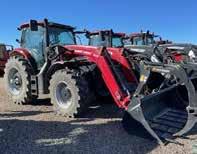


2023 CASE IH STEIGER 620 AFS CONNECT QUADTRAC
Cab luxury, PTO, Drawbar high capacity, Front bumper weight, Tow cable
$850,000 cad stk: 056256
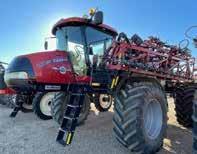
120ft Boom, 1200

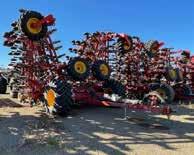

120’, Two sets of tires, AIM Pro, Auto Boom, Pro 700, 372 Receiver, Front fill, Luxury cab
$279,000 cad stk: 052962

NEW HOLLAND T9.600HD
2014 CASE IH PATRIOT 4430 SPRAYER Deluxe cab, Tires 520/85R46, 6 hyd outlets, Mega Flow Hyds-2 pumps, ISOBUS class 3 steer control, PLM Cygnus Level 2, Performance lighting high HP, PTO1000, 5322# front ballast, 6 remotes $720,000 cad stk: 057613

2018 CASE IH PATRIOT 4440 SPRAYER
120 ft, 1200 Gal, 710’s/380’s, 5 ways, AIM Flex, Pro 700, NAVIII, 372, Luxury cab, Deluxe lights, Reverse fan, Front fill
$385,000 cad stk: 054075
TRACTORS FOR SALE
2012 John Deere 8235R, weights, duals, ILS, IVT, GPS, 3531 hours.
2009 John Deere 8330, weights, duals, ILS, IVT, GPS, wide track extensions, 4352 hours.
1997 John Deere 8200T, weights, GPS, camoplast tracks, 8173 hours.
1974 John Deere 4430, with front loader..
1969 John Deere 2510 with high lift loader. Phone cell (406) 490-3795, Anaconda, Montana
#####
In 2008 Garrett Reisman, a New York Yankee fan, brought a vial of dirt from Yankee Stadium into space on the space shuttle Discovery.
#####
Icing a burn slows the healing process. Running cold water over it works better.


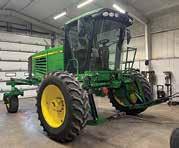




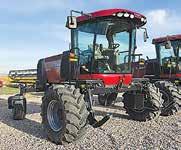


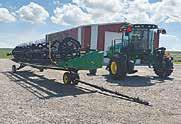

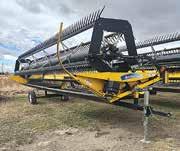
Forage matters: Are you moving forward?
By James Rogers, Forage crops production specialist, NDSU Extension
Today is a great day to be in the office — as I sit here, writing this column, I’m watching it rain! This rain is our first significant moisture event since half an inch fell in early April. Up to this point, it has been a dry year. A rainy day is also a good time to do a bit of reflection on the past, present and future of forages and grazing management.
Terminology is a good place to start. Several years ago, at a national meeting of grazing lands scientists, forage and grazing land scientists from across the country noted that they were using different terms to describe animal grazing and grazing lands. This discussion eventually led to a publication titled “An international terminology for grazing lands and grazing animals.”
In this publication, there are definitions for many common grazing terms such as stocking rate, animal unit, forage, preference and rest period. Since this is international terminology, there are also uncommon terms that are defined, like transhumance systems, grazing station and veld. By using defined terminology, communication and clarity among grazing land scientists have improved and have moved forward.
Grazing systems also have a wide range of terminology. Last winter meeting season, I gave several talks on grazing management. In preparation, I tried to find as many named grazing systems as possible. I came up with 18 named systems, and I am probably low on my count, as there are variations of each. Some of the more commonly named systems are rotation, adaptive and management-intensive grazing. Each of these systems will have advocates and detractors, as well as advantages and disadvantages, but is there a commonality among them? If we are talking about perennial grazing lands, either introduced or native, then I would argue the answer is yes.
A commonality of these grazing management systems is that they all strive to maintain healthy, deep-rooted plants that produce sufficient quality biomass to sustain grazing livestock. Healthy plants plus healthy soils equals healthy livestock. In addition, these systems strive to keep the soil covered or “armored,” increase rainfall capture, capture carbon, provide habitat for creatures above and below the ground, eliminate soil movement and provide a host of other ecosystem services.
These systems also must provide an economic return to the manager; otherwise, they are not sustainable. The idea behind these systems is that, when managed correctly, they control grazing intensity and duration (a complicated way of saying how often a forage plant is grazed and how close to the ground it is grazed). This, in turn, influences plant persistence, regrowth, carbohydrate storage and accumulation, root depth and other plant response factors.
These systems also incorporate plant recovery time, allowing plants to recover from a grazing event. Not all forage plants are designed the same way, with some built to withstand grazing pressure better than others. A grazing management goal is to keep forage plants on an even playing field in terms of competitiveness.
Another commonality with these systems is that the stocking rate must be appropriate to function correctly. The land area allocated to the animal must produce sufficient forage to support the animal and the forage plants during the grazing season. Stocking rate and stocking density, while related, refer to different concepts. High stocking density may be used
CONTINUED ON PAGE C11
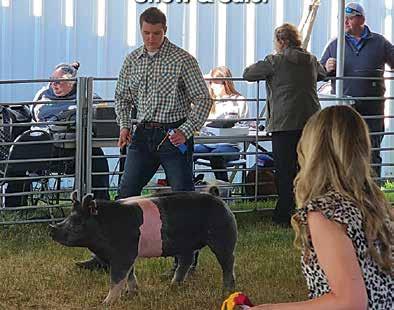
leather seats. $75,500
2013 John Deere W150 with John Deere 40-ft. header, 1450 engine hours, 1025 header hours. $89,500 2014 Case IH 1903 with 40ft. draper header, Only
Kruz Green and his 2025 mixed breed gilt market hog, Kiwi, participated in the Lewis & Clark County 4-H Livestock Show & Sale.
Forage matters: Are you moving forward?
as a tool to achieve a specific land management goal and is usually described in pounds of live weight per acre. A oneacre paddock with one hundred 1,000-pound cows would have a stock density of 100,000 pounds/acre. If this one-acre paddock is part of a 100-acre grazing area, the stocking rate would be one acre/cow. Typically, if high stock density is applied to an area, recovery time needs to be adjusted based on grazing intensity and plant species.
The approach to implementing grazing management can be holistic, regenerative or common sense, but with all these strategies, the outcome should be that you are moving forward. “Moving forward” means that improvements are made to the system as a whole over time. All these approaches are not just about forage management as they have impacts and ripple effects throughout the entire operation. Animal and plant production, soil health, water quality and economics all should be moving forward.











& 12-ft. dirt box blades
Are we moving forward? Yes, we are. There are many more tools for grazing managers to use now than a decade ago. Fencing systems have improved, and virtual fencing is a major step forward that opens many land management doors. Tools for monitoring and establishing baselines have become easier to use. Grazing management information has never been more abundant, but there are still issues. Soil erosion is still a problem and may even be increasing as we look across the landscape. We still have dust storms. Forage supply and animal demand can be mismatched.
Keep moving forward. There is no one-size-fits-all grazing management approach. Hopefully, you will notice how frequently the word “management” is used in this column. All these approaches have to be managed and tweaked based on the individual’s land management goals and needs. Commonality exists across these approaches; each can be a valuable tool to keep land management moving forward.
Efforts and courage are not enough without purpose and direction.







LAND FOR LEASE

Thank You
Fretheim Grain for purchasing my market Swine! Wylie Frydenlund
Needing an irrigation or stock water project design?
Designs include pipeline hydraulics, pump recommendations, pipeline size, and pressure rating. Completed designs include a set of drawings that meet your needs. All projects are completed within approximately 30 days from the initial field visit.
All projects will meet USDA-NRCS specifications.
• Licensed Professional Engineer
• Registered Technical Service Provider for USDA-NRCS
• Life time member of the Irrigation Association
• 40 years design and field experience. If you are looking for an independent, non-biased design based on your business needs CONTACT: Randy Pierce PE, Oxbow Engineering, LLC (406) 600-8528 or email Kinseyk1d51@gmail.com

Summer brings increased risk of toxic cyanobacteria
Cyanobacteria, also known as blue-green algae, can produce toxins that are harmful to livestock, wildlife and people. North Dakota State University Extension specialists have received reports of cyanobacteria blooms in livestock water sources.
Miranda Meehan, NDSU Extension livestock environmental stewardship specialist, says the growth of this bacteria is facilitated by high temperatures.
“The hot, dry conditions projected for July are perfect for the production of cyanobacteria,” says Meehan.
Additionally, the North Dakota Department of Environmental Quality recently reported a cyanobacteria bloom on McDowell Dam. For a list of reported blooms, visit their website at https://deq.nd.gov/ WQ/3_Watershed_Mgmt/8_HABS/Habs. aspx.
Cyanobacteria is caused by an excess of nutrients, particularly nitrogen and phosphorus. Manure and commercial fertilizers are spread to enhance forage and crop production. When these products are misused, either by inappropriate rate or timing of application, the potential for nutrient leaching to surface water is increased. When these nutrients enter surface water, they stimulate growth of cyanobacteria and other microorganisms.
Blue-green algae often occurs in stagnant ponds or dugouts with elevated nutrient levels, forming large colonies that appear as scum on or just below the water surface. Live cyanobacterial blooms can be green, but also red or yellow, and often turn blue after the bloom dies and dries on the surface or shoreline, according to Meehan.
Some species of cyanobacteria can be toxic when livestock and wildlife ingest them. Toxicity is dependent on the species consuming the water, the concentration of the toxin or toxins and the amount of water ingested.
Cyanobacteria can produce neurotoxins and liver toxins. Signs of neurotoxin poisoning can appear within five minutes to up to several hours after ingestion. In animals, symptoms include weakness, staggering, muscle tremors, difficulty in breathing, convulsions and, ultimately, death.
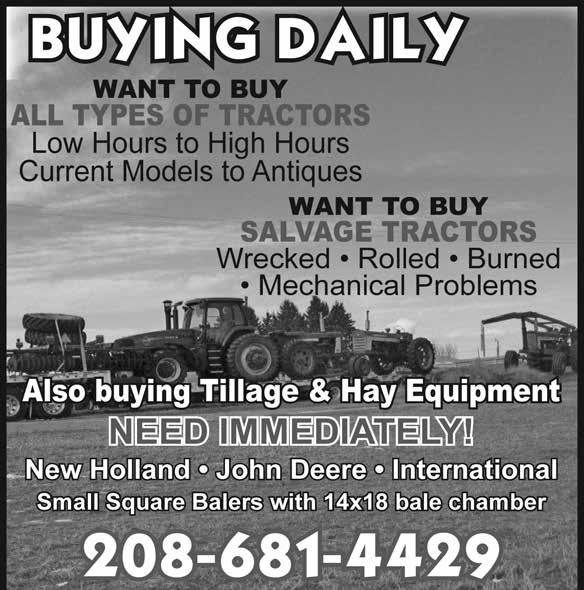
Animals affected by liver toxins may exhibit weakness, pale-colored mucous membranes, mental derangement, bloody diarrhea and may ultimately die. Typically, livestock are found dead before producers observe symptoms. If cyanobacterial poisoning is suspected as the cause of death, producers should check the edges of ponds
for dead wildlife.
Jake Galbreath, NDSU Extension veterinarian and livestock stewardship specialist, advises any farmer or rancher who suspects cyanobacteria poisoning as the cause of a livestock death to contact a veterinarian to conduct a necropsy.
“A veterinarian can determine which samples would be appropriate for each situation,” says Galbreath.
When collecting a water sample, follow NDSU Extension’s livestock water testing guidelines at ndsu.ag/watertesting.
Be sure to wear gloves, as cyanobacteria can be toxic to humans. Collect a sample of the suspected cyanobacterial bloom from the surface of the water and deeper in the water. The sample should be kept cool, but not frozen, and submitted to the NDSU Veterinary Diagnostic Laboratory or a commercial laboratory.
The sample can be evaluated microscopically for algae, or the water can be analyzed for several of the toxins at commercial labs at a higher cost.
For more information on sample collection and submission, contact your NDSU Extension agent.
Galbreath provides some ways farmers and ranchers can prevent cyanobacterial poisoning of livestock:
Reduce nutrient levels entering the water source by implementing a nutrient management plan or establishing buffer strips with perennial plant species.
Create a designated drinking area where the risk of cyanobacteria is minimal. Fence off the pond and pump water from the pond to the water tank.
Use water from other sources following periods of hot, dry weather.
Pump water from the center of the water body well below the surface, where the bacteria are unlikely to concentrate, to a water tank.
Unfortunately, unless steps are taken to reduce the nutrient load and minimize the potential for nutrients to enter the water body, there will continue to be a risk for cyanobacterial blooms.
Meehan provides management practices to consider to reduce nutrient loads: Properly apply nitrogen and phosphorus to fields. Rate, time and amount and type of nutrients applied need to be considered. Adapt soil conservation practices that reduce erosion.
Install hay or graze buffer strips to reduce the release of phosphorus as plants decompose.
Dual purpose sorghum and loan deficiency payment (LDP) qualification
By Brent Bean, Sorghum Checkoff Director of Agronomy
In the U.S., sorghum is typically grown as a grain or forage crop. As such, sorghum breeders have developed varieties that are specific to each use. Grain sorghum, often referred to as milo, is typically grown for its seed, which is used in livestock rations, ethanol production and increasingly pet and human food. Forage sorghum, on the other hand, is grown for silage, hay or grazing for cattle and other livestock.
Some sorghum varieties, however, can serve both purposes. These dual-purpose varieties offer growers flexibility in how the crop is harvested and utilized.
The classification becomes especially important with growers who are growing sorghum for silage. The Farm Service Agency (FSA) maintains a list of varieties that meet
their definition of dual purpose for growers who are seeking Loan Deficiency Payments (LDPs) and Marketing Assistance Loans (MALs). Forage is only eligible for LDP. This list is provided to State and County Offices for assigning yields for dual purpose varieties that are harvested for a purpose other than grain.
The FSA list is divided into five groups:
• Dual purpose, having a yield potential equal to 100 percent of grain hybrid varieties
• Dual purpose, having a yield potential equal to 80 percent of grain hybrid varieties
• Sterile varieties
• Photoperiod sensitive varieties
• Ineligible varieties
National Filet Mignon Day
This holiday is always celebrated on August 13th
If fine dining is your thing, then a Filet mignon is your choice for dinner. Filet Mignon is the most tender and flavorful steak you can buy. The steak is so soft, you can cut it with a butter knife. This steak is a sign of wealth and prosperity. For a long time, enjoying filet mignon was a luxury only the rich could afford.
Filet mignon is a specialty cut of beef. It is soft, tender, and loaded with flavor. Price per pound, this small steak is the most expensive steak you will find. It is cut from the middle of the tenderloin of beef. So, it certainly should be the best in every way.
Grilling is the most popular option at home and in restaurants. Roasting is also popular. We suggest slow roasting like prime rib. In a hurry? You can pan-fry or broil it. Any way you prepare it, this is a fine dining treat.
What’s in a name? Filet mignon comes from two French words. The word filet means strip or thread. The word “mignon” which means Small, cute, or tender. So, you could call this a “Cute Filet”!?
The French do!
Top Cuts of Steak
As we performed our research on the top cuts of meat, one thing became clear. No two studies or surveys came up with the same ranking. Why, might you ask!? First, there are a few ways to rate cuts of meat. Flavor and tenderness are the most important. However, and importantly, everyone’s taste buds are different. So, rankings will logically vary. Listed below is our list of the top steaks. But, we make no effort to rank them.
• Filet Mignon – If rated by price per pound alone, this is the top-rated steak.
• Strip Steak – People like the flavor of this steak. And properly trimmed, it is lean.
• Ribeye – It has great flavor. And, it is tender. But, the significant amount of marbling translates to “too much fat” for some people.
• Prime Rib – The is a favorite steak of many people. And, it’s also a top meat selection for many holidays.
• Porterhouse -This is another steak with great flavor, Also, it has a lot of fat.
• T-Bone – This is a great bone-in steak with lots of flavor.
• Sirloin – This steak is a favorite for people on a budget.
• Flank Steak – Slow-cooked, it has excellent flavor.

Did You Know? Filet mignon is also called Medallions and tenderloin steak and is a symbol of wealth and prosperity #####
What’s black and white and goes round and round? A penguin in the washing machine.
What happens to a frog’s car when it breaks down? It gets toad away.
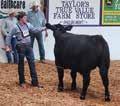




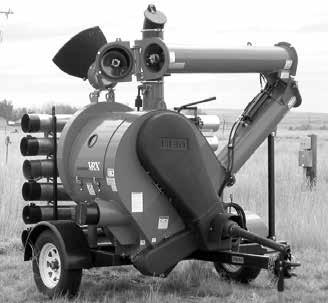


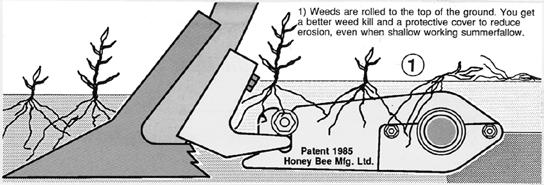



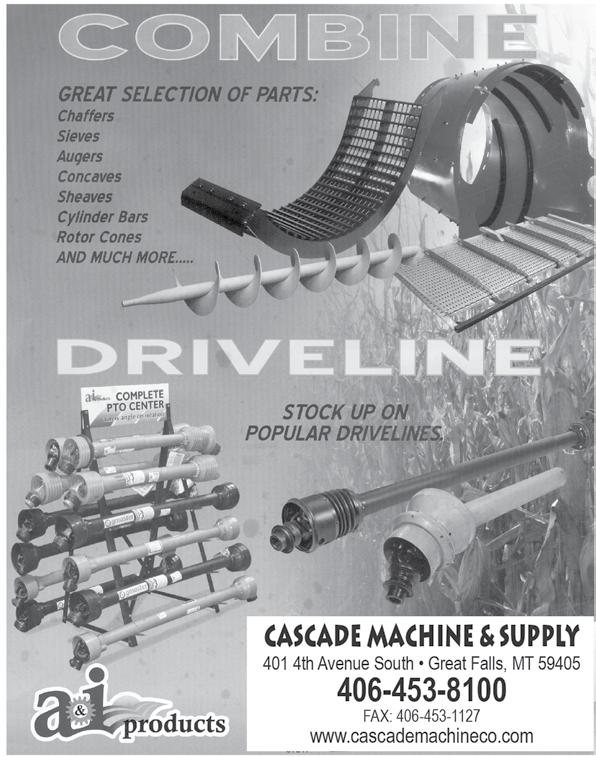



Investing pre-tax earnings in a record-high calf market
By Brock Ortner, Nebraska Extension Livestock Educator
The record-high calf prices experienced in 2024 and 2025 have left many cow-calf producers with a welcome challenge: determining how to reinvest profits in their operations. While strong cattle markets offer an opportunity to improve long-term profitability, they also bring the temptation to spend pre-tax earnings on items that may not enhance operational efficiency or performance in future years.
This cattle cycle is unique in many respects. Contributing factors include sustained drought in key production regions, historically high calf and cull cow prices, an aging producer base, and a severely reduced national cowherd inventory. As history reminds us, such as the sharp drop in feeder calf prices in 2016, periods of high income require careful, strategic decision-making to ensure long-term business success.
One common driver of decision-making during profitable years is tax planning. Many producers consult with accountants to reduce taxable income before the end of the year. While this strategy can be valid, decisions based solely on minimizing tax liability may not support the long-term financial health of the ranch. For example, purchasing a new pickup or piece of equipment before year-end may reduce tax exposure, but these investments should be evaluated on whether they contribute meaningfully to the business’s efficiency or profitability.
To evaluate potential investments more effectively, it’s important to distinguish between tax accounting and economic (business) profitability. Tax accounting focuses on cash income and deductible expenses, often using accelerated depreciation and excluding unpaid labor or owned asset costs. In contrast, an economic profit statement includes the fair market value of owned inputs such as raised feed, land use, and unpaid family labor. It also accounts for depreciation or replacement cost of breeding animals and applies an opportunity cost to owned assets—recognizing that capital tied up in equipment or land could otherwise be earning a return through low-risk investments.



From an economic perspective, investments in capital assets like pickups or tractors should be evaluated by their ability to increase gross margin (revenue minus direct costs) relative to the overhead they add. A new pickup may not improve
revenue or reduce direct costs, but it does increase fixed costs through depreciation and maintenance. On the other hand, investments like cross-fencing, improved water infrastructure, or rotational grazing systems can improve forage utilization, enabling greater production without increasing land base—ultimately improving gross margin.
Another valuable use of pre-tax earnings is to improve the ranch’s current asset position—liquid assets that can be easily converted to cash. This could include backgrounding calves, purchasing stockers for grazing, or simply retaining cash in savings or a low-risk investment account. While income taxes will still be owed on retained cash, having a strong liquidity position can help service existing debt, buffer against future volatility, or enable the operation to seize opportunities down the road. In many cases, paying taxes is a sign of profitability, and retaining earnings for strategic flexibility can be more valuable than chasing deductions.
The Agricultural Budget Calculator (ABC), recently developed by the University of Nebraska – Lincoln Center for Agricultural Profitability, is an online enterprise budgeting program available to producers to assist in making management decisions such as retaining calves for backgrounding or breeding, along with projecting profitability. agbudget.unl.edu ABC provides figures based on cash returns or a total economic basis and is customizable for any operation. It’s a program that can be well worth the time to learn more about and to utilize. Crop production enterprise budgeting has been a built-in feature since its inception. For more information and for upcoming training sessions on using ABC, see: cap.unl.edu/abc
Conclusion Reinvesting pre-tax earnings during a strong market can either strengthen or strain the operation depending on how the funds are used. Evaluating decisions through an economic lens—not just a tax lens—can reveal opportunities to enhance efficiency, productivity, and long-term profitability. The current cattle market provides a rare opportunity to build resilience in cow-calf operations, but doing so requires strategic planning and disciplined evaluation of where and how dollars are invested.
Dual purpose sorghum and loan deficiency payment (LDP) qualification
CONTINUED FROM PAGE C12
The first two groups are the most often referenced. Dual purpose grain sorghum varieties are added to the 100 percent yield potential table when the specific variety is in a documented field trial conducted by an unbiased third party, and has a grain yield equal or greater to a set yield. This set yield has historically been 80 percent of a standard representative grain sorghum hybrid planted in the trial for comparison.
If the yield of the variety falls short of 80 percent of the standard grain sorghum variety, yet produces seed that could be sold as typical grain sorghum, then historically FSA places the variety in the 80 percent yield potential table.
FSA has been using the annual Texas A&M AgriLife Bushland Forage Sorghum
Silage Trial to determine eligibility as dual purpose sorghum and placement of the variety in one of these tables. Seed companies must include their varieties in this trial and request grain yield be collected and compared to the standard grain sorghum variety in the trial. These results are then sent to the FSA.
#####
The swaying motion of a hammock results in a deep and more relaxing sleep than a conventional bed.
#####
The most expensive hammock in the world is the Petiole hammock. It is manufactured in Sweden. And, it costs a mere $35,000.
New durum variety creates exciting opportunities for U.S. farmers and baking enthusiasts
By Maribel Alonso
The USDA’s Agricultural Research Service (ARS) released a new variety of durum wheat with a novel commercial appeal that opens new markets for U.S. farmers while still providing a healthy and high-quality baked product for consumers.
Durum wheat, also known as pasta wheat, is often cultivated in the U.S. Northern Plains because it grows well in challenging terrain with little rainfall. This crop provides a high source of protein, carbohydrates, and fiber. However, its use in the U.S. food industry is somewhat limited because its kernel texture limits commercial end-uses, which is why durum wheat is most commonly associated with just pasta and noodles.
A new USDA-ARS Soft Spring Durum wheat, being released as USDA ‘Morris’ in honor of the late ARS Scientist Dr. Craig Morris, who spearheaded soft durum research, represents a new variety of soft spring durum that not only grows well in harsh environments typical of durum wheat, but also features novel end-use traits
that allow it to be milled conventionally, producing flour instead of the more coarse semolina.
USDA Morris features novel baking quality genes that will allow baking enthusiasts to use Morris’ yellowish flour to bake it all—bread, cookies, and pasta—while still benefiting from the same health traits associated with traditional durum, such as high protein and carotenoids. The yellow pigmentation (due to its carotenoid content) of the soft spring durum bread makes it novel, intriguing, and appealing to bakers, consumers, and culinary enthusiasts.
“The unique quality genes found in USDA Morris were purposely introduced to enhance both milling and baking,” said Jeffrey Boehm Jr., a research geneticist with the Wheat, Sorghum and Forage Research Unit in Lincoln, Neb. “Morris’ grain can be milled conventionally like hard red spring or soft white winter wheat to produce flour while retaining its pasta-making ability. Soft durum presents a new wheat market class option for U.S. farmers, who may recognize its potential demand for new culinary uses, commercial applications, and even international markets.”
Boehm is currently working on developing new soft winter durum lines, so this new variety can be cultivated in both spring and winter wheat cropping systems.
Expanding the end-use market for durum wheat can bring efficiency and agricultural prosperity to U.S. farmers.
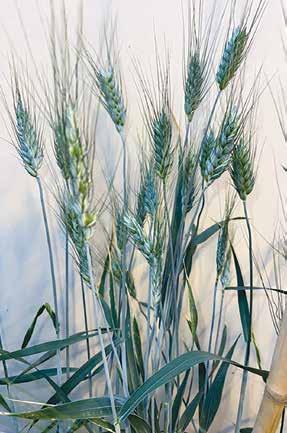


USDA Morris
FARM EQUIPMENT FOR SALE
2
##### In 1971 Apollo 15 voyage took University of Michigan alumni-chapter documents to the Moon - so now the school can claim it has a branch on the Moon.
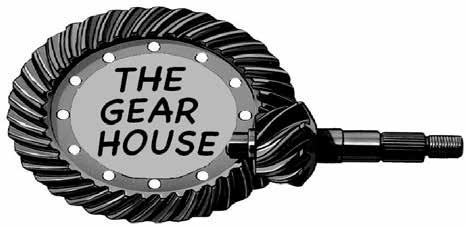

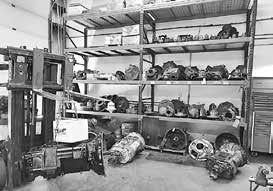


Fine-tune first-lactation performance with smarter data management
From Nedap, Groenlo, The Netherlands
It’s not easy to be the new kid in school. Or a first-lactation animal in a herd of older cows.
“Not only are first-lactation cows facing a new environment, a new ration and numerous physical changes that accompany giving birth, but they also have to adapt to a new social structure and daily routine, all of which is out of their control,” says Steve Pavelski, Nedap large herd specialist. “All of this adds up to stress and behavioral hurdles for these animals.”
To ease this transition, many producers are grouping firstlactation cows separately and using automated monitoring tools to better support them in the weeks after calving. These strategies are proving critical to long-term productivity.
First-lactation learning curve
How different are fresh heifers from mature cows? Research says: Quite a bit.
For example, first-lactation cows have different habits from older cows:[1]
They are often more timid at the feed bunk due to their lower social status, especially during the week of calving, and eat less than other cows throughout the transition period. Researchers also found that younger animals eat more slowly and more frequently than cows in their second lactation or higher.
Plus, first-lactation cows have different resting habits. They have shorter lying bouts, change their lying position more frequently and walk more than older animals. When grouped with other first-lactation cows, they spend more time eating and lying down than when mixed with mature cows.
“This is a whole new scene for these animals,” says Pavelski. “We work with many herds that keep fresh heifers in smaller groups for the first two weeks to 30 days after calving. Sending a fresh heifer, especially one fewer than 10 days in milk, into a crowded pen often sets her up to struggle.”
Data-driven results
Research shows poor transition from pregnancy to lactation often results in the loss of 10-20 pounds of peak milk yield, which could equal 2,000-4,000 pounds of untapped milk yield.[2]
However, dairies with access to accurate monitoring data have discovered that not only do they have a better handle on how all cows fare during transition, but also that moving healthy older cows out of transition groups faster results in improved performance of first-lactation cows, too.
“The Alta Cow Watch system is very effective for our day-to-day work and has made checking fresh cows more efficient,” says Ryan Nelson, Ohlde Family Farms, Linn, Kansas. “We’re able to catch something sooner so we can get her back to 100% and back to a good lactation.”
Better grouping, better gains
Monitoring system data fed into herd management software enables users to establish movement criteria. As trends emerge, reports indicate how well animals are adjusting to lactation demands and offer insight as to when cows should leave the fresh pen for lactation groups.
This strategy keeps cows that need more attention, such as first-lactation animals, in smaller groups while returning those meeting performance criteria to lactation groups and a higher plane of nutrition after a shorter fresh pen stay.
“The mature cows can move to the lactation group quickly, giving first-lactation heifers the space and time to adapt at their own pace,” Pavelski explains. “Monitoring data gives us a clear picture of how they’re adjusting and when interventions are needed.”
With actionable data in hand, dairies can make quicker, more accurate decisions. Instead of holding all cows in transition pens longer than necessary, producers can move animals based on performance, not guesswork or predetermined timeframes.
“The goal is to manage each cow as an individual, while letting the rest of the herd just be cows,” Pavelski concludes.
Arctic apples
Apples that won’t turn brown. The apples, which are produced by Okanagan Specialty Fruits, have been bioengineered so that the enzyme that causes the browning is turned off. They’re currently being used by many fast-food companies and are expected to hit retail stores in the near future.
USED EQUIPMENT


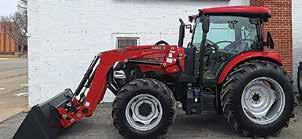


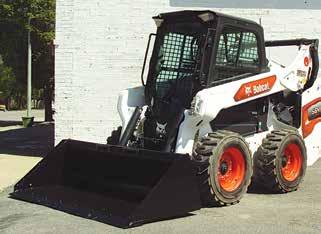







Thank You
Emallea Wahl
RETIREMENT SALE
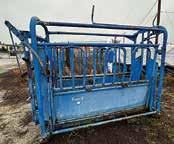
Priefert cattle chute, Like new $2850

rubber. Nice rubber. high hours (runs better than good). $40,000


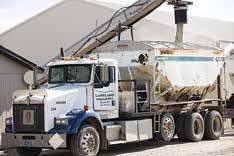

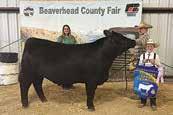



Soybean white mold management season is here
By Dylan Mangel - Extension Plant Pathologist, Roshani Baral - Plant Pathologist
Soybean plant showing wilting and stem lesions with white, cottony fungal growth and sclerotia, typical of advanced white mold infection.
With flowering underway and conditions ripe for infection, now is the time to act. Learn how to identify risk, protect vulnerable blooms, and prevent yield losses before it’s too late.
As we approach the critical period for managing white mold in soybeans, it’s essential to make timely and informed decisions to mitigate potential losses. Sclerotinia stem rot, or white mold, significantly impacted yields in 2021 and 2023 soybean crops, and proactive management is crucial for this season. The key factors to keep in mind as you monitor and manage fields are:
Flowering Susceptibility: Soybean plants are most vulnerable to white mold infection during the flowering stage (R1 to R3).
Protective Measures: Ensuring flowers are protected is essential for preventing infection and controlling the disease. Late management will not save infected plants.
Environmental Conditions: Wet, humid environments facilitate the spread of white mold.
Field History: Fields with a prior history of white mold are at greater risk of occurrence, often beginning in the same hotspots where infection occurred in past seasons due to the persistence of sclerotia in the soil.
For detailed management strategies, including genetic resistance, cultural practices and chemical/biological control, please refer to the sections below.
Close-up of several black sclerotia resting on dry soil surface and plant debris, showing survival structures of the white mold fungus.

Pathogen Overview
Sclerotinia stem rot, commonly known as white mold, is a fungal disease caused by Sclerotinia sclerotiorum. The fungus survives between seasons in the soil as hard, black, dark structures called sclerotia. In spring, saturated soils and a full canopy favor the emergence of apothecia, mushroom-like structures that release millions of airborne spores during flowering. These spores infect soybeans primarily through senescing blossoms and injured tissue, requiring free moisture for infection. The disease typically prevents successful pod development and produces more sclerotia on and in the stems, which are scattered back onto the soil during harvest and can survive for several years.
Brown mushroom-like apothecia emerging from moist soil and crop residue, indicating active white mold spore production in the field.

Disease Symptoms
Symptoms of white mold usually appear during pod development and can be subtle at first. The disease often begins with wilting and discoloration of leaves, followed by stem and pod infections that show white, cottony fungal growth and black sclerotia. Water-soaked lesions typically form near colonized flowers, and stems become tan, brittle and hollow, sometimes containing sclerotia. Affected stems frequently shred when pulled apart and show signs/symptoms approximately 6 to 14 inches above the soil surface, although lower stems may also be infected as well.
Soybean plant showing wilting and stem lesions with white, cottony fungal growth and sclerotia, typical of advanced white mold infection.

Favorable Environmental Conditions
White mold develops from flowering to pod formation under wet, humid conditions with moderate temperatures (<85°F). It is more prevalent in northern Nebraska counties and irrigated fields throughout central Nebraska, due to the consistent moisture and cooler canopy temperatures.
Management Strategies
Genetic Resistance: Choose varieties rated well against white mold, avoiding highly susceptible ones, and select shorter varieties that do not lodge.
Figure 1. White mold structures overwintering in the form of sclerotia. (Dylan Mangel | Nebraska Extension)
Figure 2. White mold apothecia mushroom-like structures releasing spores. (Dylan Mangel | Nebraska Extension)
Figure 3. Soybean with significant Sclerotinia infection. (Roshani Baral | Department of Plant Pathology)






2024 John Deere S780 (BE), Stk #88046, 396 Engine/322 Separator Hours, Ultimate Tech Package with G5Plus CC with AT & Row Sense $555,000
2024 John Deere 561M (BF), Stk #89481, 1,529 Bales, Heavy Duty, Trades Balers Every Year, Netwrap Only, Pushbar, 1 ¾” 1000 PTO $59,900
2024 John Deere 561M (WI), Stk #89098, 3,208 Bales, Excellent Shape Done All Prairie Hay & Alfalfa, Highly Equipped $57,500
2024 John Deere S780 (WA), Stk #87677, 463 Engine/318 Separator Hours, Extended Powertrain Warranty Until 6-2-27 OR 1500 Hours, 2WD, Premium Cab, Duals $546,000
2022 John Deere S790 (WA), Stk #88617, 547 Engine/402 Separator Hours, Extended Wear, Big Tires, Leather, Powerfold Extension
$454,500
2022 John Deere S790 (BE), Stk #87129, 900 Engine/539 Separator Hours, Has Every Option You Can Get! Brand New Front 580 Tires $446,500
Platform: 2024 John Deere HD40F (WA), Stk #86194, Demo Head Used In The Fall Of 2024, Flip Over Reel, Gauge Wheels, S Series (MY20+) $155,000


2023 John Deere HD45F (WA), Stk #83634, Hinged Draper Flex Platform, Short Long No Till Sickles with Spares, Shark Fin $138,500 2023 HD45F (WA), Stk #83802, Hinged Draper, Spare Knife, Wing Leveling, Flip Over Reel, 1 Season Of Soybean Use $138,500
2022 John Deere HD50F (WA), Stk #71825, Demo Head In Near New Condition!! Flip Over Reel, For An “X” Series Combine, Grain Saver Side Belts $118,900 Corn & Sunflower:
2024 John Deere C12R (WI), Stk #88226, 12R30, Like New Unit, Stalk Deflectors On All Rows, Intermeshing Stalk Rolls, About 1,500-2,000 Acres $124,500


2024 John Deere RD35F (WA), Stk #83154, Flex Cutter Bar, Flip Over Reel, Spare Sickle, Center Crop Flow
2024 John Deere 561M (HA), Stk #89020, 6,221 Bales, G5e Monitor System, Big Tires, Netwrap Only, Bale Kicker, Moisture Sensor $47,500 2023 John Deere 560M (HA), Stk #84411, 4,380 Bales, Netwrap Only, Oiler, Grease Bank, Netwrap Door Lights, Hydraulic Pickup
$52,900
2023 John Deere 560M (HA), Stk #86308, 5,922 Bales, Loaded with Options, MegaWide, Big Tires, Grease Banks, Hydraulic Pickup, Push Bar
$48,500


2022 John Deere 560M (BE), Stk #89339, 2,570 Bales, Netwrap Only, MegaWide, Grease Bank, Moisture Sensor, Never Baled Corn Stalk
$53,500
2021 John Deere 560M (PH), Stk #86443, 13,982 Bales, Twine/Surface Wrap, 21.5Lx16.1 Tires, Push Bar, Shedded When Not Used $34,900
2021 John Deere 560M (BL), Stk #83993, 8,386 Bales, Netwrap Only, Shedded & Blown Off, Auto Oiler, Belts & Pickup 70% $39,500
2020 John Deere 560R (WI), Stk #83775, 8,209 Bales, Priced As Is No Work, Used On Alfalfa & Grass Hay, MegaWide Pickup, Netwrap Only
$35,900 $29,900
2020 John Deere 560M (HA), Stk #84992, 12,759 Bales, MegaWide Pickup, Hydraulic Pickup, Netwrap Only $28,000
2019 John Deere 560M (HA), Stk #83196, 22,076 Bales, MegaWide Pickup, Both Surface Wrap & Twine, Big Tires $18,000 $16,500
2023 John Deere S780 (WI), Stk #85007, 760 Engine/578 Separator Hours, ProDrive Transmission, 5 Speed Feederhouse, Premium Cab, 4WD, 28.5 Unload Auger $509,900 2023 John Deere S780 (WA), Stk #87718, 852 Engine/684 Separator Hours, PRWD, Duals, Folding Grain Tank Extension, Combine Advisor with 4.0 Automation
2022 John Deere S780 (WI), Stk #85006, 1000 Engine/798 Separator Hours, ProDrive Transmission, 5 Speed Feederhouse, Premium Cab, 4WD $392,500
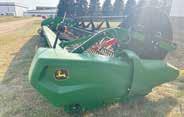
$447,500





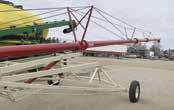
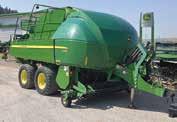
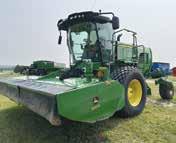
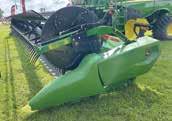
Crop Flow Divider, S700 Combines (MY20+), Slightly Used $115,500 South Dakota: Winner (605) 842-2040 Pierre (605) 224-1631 Philip (605) 859-2636 Beresford (605) 763-5020 Belle
2024 John Deere CF12 (WA), Stk #85917, 12R30, Used For Demo In Fall 24, Active End Fenders, Stalk Stompers On All Rows, 9 Pin Connector, Folding $195,000 2023 John Deere C16R (WI), Stk #76389, 16R30, Stalkmaster Chopping, New Never Used, S Series Frame, Stalk Deflectors On All Rows, Very Nice $219,900
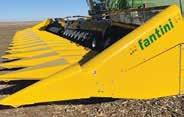
2023 Fantini 1830 GO4 (PI), Stk #85341, 18R30, For Sunflowers, Use On X9 Combine, Extremely Good In Sunflowers, Folding Head $195,000 2022 Fantini GO3 12x76 (WI), Stk #87735, Brand New Unit with 0 Acres!, Customer Never Used It & Has No Need For It! $84,900
2021 John Deere C16R (WI), Stk #85021, 16R30, Stalkmaster Unit, AutoTrac Row Sense, Active End Rolls, Used Only 2 Seasons $139,900

2023 Brandt 1120XT (WI), Stk #80686, 1250/50R32 Tires, Demo Unit, 1,100 Bushel Cap, 20” Auger, 600 Bu/Min Unload Speed, Camera, Scale, Tarp $89,000
2023 Brandt 1120XT (BL), Stk #80746, New Unit, 1,100 Bushel Cap, 20” Auger, Camera Kit, 600 Bu/Min Unload, Tarp, Hydraulic Jack $79,500 2023 J&M 1326-22S (HA), Stk #77370, New Unit, Roll Tarp, Single Axle, 1250/50R32 Lug Tires, 1,300 Bushel Cap, 22” Unload Auger $98,000
2023 Brent V1100 (WA), Stk #85451, New Unit, 20” Corner Auger, Scale, Tarp Kit, Boards Up Config, 1100 Bushel, Single Track Axles $95,500
2020 Brent V1100 (BE), Stk #87502, 1100 Bu, 20” Corner Auger, 410 Digital Scale, Tarp, 1250/50R32 Very Nice Tires, 1000 PTO $63,000
2020 Brent 1596 (WI), Stk #89523, Equalizer 42”x148” Tracks with Hydraulic Tension, 4 Bogie Wheels, Uharvest Pro Scale, Auto Grease & Hydraulic Jack $139,000
Our Mission: To provide the best product at a reasonable price with the highest level of service.





Kioti DK4720SEHC tractor with KL5521 loader, cab, heat, A/C, HST transmission, Cat I 3-point, 540 PTO, 47 hp. 1 in stock
Kioti DK5320SEHC tractor with KL5521 loader, cab, heat, A/C, HST transmission, 4WD, 3-point, PTO. 1 in stock
Kioti DK4720SEH tractor, KL5521 loader, 4WD, HST transmission, Cat I 3-point, 540 PTO. 1 in stock
Kioti CK3520H tractor with KL4030 loader, 4WD, HST transmission, Cat I 3-point, 540 PTO. 1 in stock
Kioti CK2620H tractor with KL4030 loader, 25 hp, tier 3 diesel engine, HST transmission 1 in stock
Kioti CX2510H tractor with KL5510 loader, 25 hp, 4WD, Cat I 3-point, 540 PTO, HST transmission 1 in stock
Kioti CS2210H tractor with SL2410 loader 2 in stock
Kioti RX7320P open station tractor, 4WD, 72 hp, Cat ll 3-point, good tires, 1100 hours. $27,500 Kioti CS2210H with SL2410 loader, 50” SSQA bucket, 4WD, 540 PTO, Cat I 3-point, 22 hp, 42 hours and 5 year warranty Comes with 50” back blade.
$12,000
Farmall 504 tractor with Ford HD post pounder. $5500 Oliver 88 project tractor. $1000
Soybean white mold management season is here
CONTINUED FROM PAGE C18
Cultural Practices: In fields with a history of significant white mold, use wider row spacing (30-inch over 15-inch) to delay canopy closure and reduce humidity. Avoid irrigation during flowering if possible. Rotate with non-host crops like corn and maintain good weed control, as some weeds and cover crops can host the fungus. Tillage has been considered for control, but it is not recommended due to water consideration and the lack of effective control.
Manganese management is another consideration. Be aware that improper soil manganese levels will prevent plants from effective white mold defense. Soil manganese adjustments should be made before the season. Foliar manganese feeding can also be done in season, but it should be done before flowering begins.
Chemical/Biological Control: Apply foliar fungicides during the susceptibility window at flowering if there is a field history of white mold and favorable weather conditions for disease development. Late applications made after the infection window are not effective. Refer to the Crop Protection Network and the UNL 2025 Guide for Weed, Disease, and Insect Management in Nebraska for fungicide efficacy test results to find products that are effective on the pathogen.
Ticks and disease
By Lisa Moser, K-State Research and Extension news service
Just hearing the word ‘ticks’ puts some people on edge as they consider the diseases the parasite sometimes gives to its human hosts.
In much the same way, a tick bite can also infect cattle with disease, according to the experts at Kansas State University’s Beef Cattle Institute.
Speaking on a recent Cattle Chat podcast, K-State parasitologist Brian Herrin spoke about one pathogen that ticks carry that infects cattle but not people: Theileria orientalis. This blood-borne protozoan (parasite) causes the disease bovine theileriosis.
“Because this protozoon infects the blood, it has a wide range of effects in cattle due to the way it circulates throughout the body,” Herrin said.
K-State veterinarian Brad White said that bovine theileriosis can be hard to detect because the symptoms can mimic other diseases.
“Because it attacks the red blood cells, cattle will become anemic and may be short of breath, depressed and exercise intolerant, and those are all also signs of respiratory disease,” White said.
Herrin said that bovine theileriosis tends to appear in younger cattle, more so than some other diseases, and it is spread by ticks.


“In the acute phase of the disease, there can be up to 20% death loss that happens quickly, and for those that survive, they will carry the parasite in their body the rest of their lives,” Herrin said. “We don’t have a way to cure it, and so when those chronic cattle are stressed later in life, the symptoms may appear again.”
Knowing that this disease is carried by ticks, Herrin said managing tick exposure is one strategy to minimize the risk.
“For cattle out on pasture, make sure the cattle have new fly tags put in every spring,” Herrin said. “The kind of tick that transmits this disease likes to be in the ears.”
He also suggests producers make sure the cattle are treated routinely with insecticides.
“When the ticks start crawling on the animal they are exposed to the product and can be killed before they attach, but as time lapses that product degrades over time,” Herrin said. “It does take a little time between when the tick attaches and the transmission of this disease, so it is important to be proactive in the management protocol.”
Herrin said ticks prefer to live in tall grasses as well as damp and shady areas. Cattle that are out on pastures should be routinely monitored.
White added, “This disease can have a high mortality rate and there is no treatment for it, so it is important to find a way to control the ticks in their environment. The sooner the disease is diagnosed, the better the outcome will be.”





Nurse: “Do you know your blood type?
Dad: “Sure, it’s the red one.”




































PICKUP FOR SALE
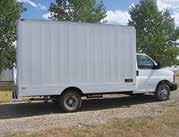












Estrus synchronization considerations in beef herds
By Bethany Johnston, Nebraska Extension Educator, Rick Funston, Nebraska Extension Beef Cattle
Reproductive Physiologist
Synchronizing estrus in your beef herd can have benefits, as well as considerations. (Photo credit: Troy Walz)
Synchronizing estrus in your beef herd can shorten your calving season, produce more uniform calf weights, and provide the opportunity to use proven genetics through artificial insemination (AI). As cowherds rebuild, many producers are synchronizing heifers and replacing bull power with AI sires as bull prices increase.
Consider the following if you are thinking about employing an estrus synchronization system:
WHICH PROTOCOL WILL YOU USE?
Synchronization programs are numerous and vary from one injection to more intensive systems. Suggested protocols are updated annually and available at beefrepro. org, on the PROTOCOLS page. Find a protocol that best matches your manpower, facilities, timeline, and budget. The Estrus Synchronization planner and AI Cowculator, under RESOURCES at beefrepro.org, can help determine the economic viability of implementing a synchronization and AI program and help prevent errors in a synchronization protocol.
Some protocols, such as feeding MGA to heifers, require planning ahead. Treatment with MGA must start about 40 days before you plan to breed. Don’t forget to allow extra time to order and ship needed supplies. Other protocols require less planning ahead, so look at options that work for you.
WHO’S DOING THE BREEDING?
You have made the commitment to synchronize your cattle so they will come into estrus in a short amount of time. Will you AI the cattle or use natural service?
If you don’t have the skills to AI cattle, consider letting a professional technician AI for you. In a fixed time AI setting, which eliminates the need for heat detection, arm fatigue is a concern and a professional may be the best option. Their services range from AI only, to the entire estrus synchronization and AI process. Technicians may also have a portable AI barn, which can make cattle handling easier during AI. Synchronization protocols should be followed as written or pregnancy rates can suffer, cancelling the benefits synchronization can provide. Giving injections at the wrong time or the wrong amount, not identifying heifers in heat, storing frozen semen improperly, post-thaw temperature damage or in too much light, and depositing semen in the wrong location can lower pregnancy rates. Regardless of whether a synchronization protocol is used, pregnancy rates are also affected by herd fertility, nutritional status, body condition, and postpartum interval.
WHAT BULL TO COW RATIO DO I NEED?





Obviously, letting the bulls do the breeding during a synchronized estrus will cut down on labor needs. In experiments when natural service is used with estrus synchronization, Dr. Rick Funston, Nebraska Extension Beef Reproductive Physiologist, suggests using the same recommended ratio of bulls to cows you would without synchronization (in the 1 bull to 20 cows range), making sure all bulls are breeding females and none become injured during the peak estrus period. More intensive management may also be warranted during this period, such as having them in smaller pastures and checking them more often so problems are found early.
What if you AI and then use bulls to breed those not conceiving to AI? You will need about half of the bulls you normally use. Cows not becoming pregnant after a synchronized estrus do not all come back in heat on the same day. Their return to estrus is distributed over a period of days, allowing bulls to breed the same number as normally anticipated. When determining the number of clean-up bulls needed, Dr. Funston proposes assuming a 50% AI conception, allowing the bulls to breed the remaining 50%. “In our experience, we use approximately half the recommended bull to cow ratio after synchronization and AI and we’ve gotten along well.”
Dr. Funston notes most AI programs will have a better than 50% conception rate, but uses the conservative number to ensure enough bulls. In several published studies using a bull to cow ratio of 1:20 to 25 resulted in a similar final pregnancy rate, when compared with a bull to cow ratio of 1:50 to 64 (91 to 93% final pregnancy rate) after synchronization and AI.
Recommendations are approximately 20 to 25 non-pregCONTINUED ON PAGE C23
Estrus synchronization considerations in beef herds
nant females per bull, but yearling bulls may breed a few less. Check bulls often for lameness or stiffness, and remove and replace injured bulls. Many factors influence the “optimum” bull to female ratio in a given scenario, such as pasture size, number of watering areas, and bull age.
If you are using bulls, be sure to have your veterinarian conduct a bull breeding soundness exam 1 to 2 months prior to breeding. This gives you time to treat bulls or find replacements.
The bull breeding soundness exam is more than semen evaluation. Physically examining the bull is also important. Evaluate the soundness of the feet and legs, scrotal size and shape, and examine the underline.
CALVING DISTRIBUTION, WHAT TO EXPECT
Research has demonstrated heifers and cows that conceive on the same day will have calves born over a 16-to-20-day period, with the majority born in a 10-day period. Most reports indicate the peak calving day had 10 to 15% of calves born. Make sure your labor and facilities will accommodate these numbers in case of inclement weather, like blizzard conditions. Most information suggests a 283-day gestation length in heifers; however, when using extreme calving ease bulls expect to start calving prior to 283 days. In one data set with heifers mated to a calving ease sire, calving began 14 days early with 73% born prior to 283 days of gestation.
Start thinking about your operation and if synchronizing could benefit your cowherd. Breeding season is just around the corner!
NATIONAL CONFERENCE
Mark your calendars and plan on attending the Applied Reproductive Strategies in Beef Cattle National Conference in North Platte, NE, September 17-18, 2025! Past programs and proceeding are available on Beef Reproduction Task Force, as well.
#####
That awkward moment when you notice the guy in front of you in the “10 items maximum” express cashier line has 11 things in his cart.




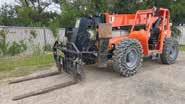























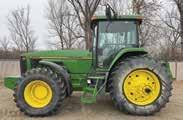


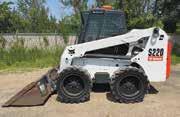





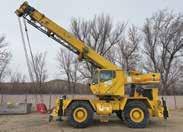
Whalen
miles
2013 Ingersol-Rand P185 towable air compressor, John Deere diesel, hose reel and hose, optional instrument gauge package, only 13 actual hours, absolutely brand new! Call

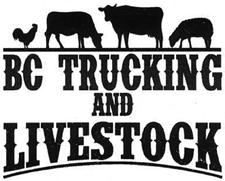
Milt Hartman (406) 380-0399
Livestock Dealer Insured & Bonded
Buyer Number: D00FFWV Highwood, MT
WHEAT HAY FOR SALE
Selling Fresh Fruit and Vegetables in season
By the pound or case/box
Specializing in tree ripened fruit sourced direct from the orchards of Yakima Valley Washington. Also locally grown vegetables in season.
• Peaches
• Nectarines
• Apricots
• Plums
• Cherries
• Blueberries
• Montana Huckleberries
• Cantaloupe
• Watermelon
• Sweet Corn • Tomatoes • Cucumbers • Potatoes • Zucchini • Squash • Pumpkins aComing soon, new cropZ
Apples, Pears and Concord grapes
For more information or to place a large order call or text Alma Shaum (406) 788-7654

190 US Hwy 89, Vaughn, MT - right next to Big Sky Deli
Weaver Grain Bins
Family owned business since 2007 in Power, MT weavergrainbins.com Lee Weaver (406) 750-9780
Early tar spot detected in Nebraska Corn; Irrigation shown to elevate disease risk
By Talon Mues
- Extension Educator, Saleh Taghvaeian - Biological Systems Engineering Associate Professor, Dylan Mangel - Extension Plant Pathologist, Tamra Jackson-Ziems - Extension Plant Pathologist applications made for tar spot management are most effective and economical when made between R2-R3, even when disease developed during early vegetative stages.
Tar spot was confirmed in V6-V9 corn in several Nebraska counties (and other states) throughout the week of June 15, 2025. It may seem early for tar spot development, but early season development has been common in other states where the fungus has existed for a few years. Scouting efforts should be intensified in fields with a history of the disease or at higher risk, such as pivot-irrigated corn.
Fungicide applications are not recommended at this time for tar spot management. Multi-state fungicide research (led by Purdue University) results show that
It’s important to monitor disease severity and changes, especially during grain fill stages. Treatment by the time disease reached 5% severity on the ear leaf by the R3 (milk) stage was still effective.
See Figure 1 for the current reported tar spot distribution map and send samples to the UNL Plant and Pest Diagnostic Clinic for tar spot testing.

for live updates on tar spot distribution in the Midwest.)
Tar Spot

Grain Bins Sales
Sunrise hopper cones for new/used bins
Westeel smoothwall hopper bins
Grain bin parts
Grain bin construction
Unload tubes
Aeration floors
Ground opening grain bin lids
Serving - Montana, Idaho, Wyoming, Oregon, (Texas Panhandle Area)
Tar spot (Figure 2) is a disease caused by the fungus Phyllachora maydis, which was first confirmed in the United States in 2015. This pathogen spread from Illinois and Indiana since its first report in 2015 and was confirmed in several of the easternmost counties in Nebraska in October 2021. The disease has continued spreading in Nebraska corn under favorable conditions because the fungus survives year after year.
Tar spot is recognized by the black spots (fungal stromata) that develop on corn leaves and husks. The stromata continue elongating during the season and produce spores that splash and blow to other plants, spreading disease further. In severe cases, tar spot can prematurely senesce leaves and reduce yield. Weather and canopy conditions can strongly influence tar spot development.
Favorable Conditions for Tar Spot Development:
Moderate temperatures (optimally 6070°F)
Relative humidity greater than 75%
More than seven hours of leaf wetness
10-plus foggy days per month
6.0 or more inches of monthly precipitation
Irrigation Impacts Corn Canopy Microclimate
In much of Nebraska, favorable conditions occur more commonly during the months of August and September. Unfortunately, some crop management practices can exacerbate diseases, especially overhead irrigation that changes microclimate conditions in the crop canopy.
To evaluate this effect, one UNL study compared rainfed corners to two irrigated regions — the second and last span of the center pivot (Figure 3). These spans may vary due to differences in irrigation duration. Analyses of 25 different irrigation events are highlighted on the next page.

Results from 2023-2024 research in center pivot-irrigated (Figure 3) Nebraska corn fields show that irrigation alters the corn canopy microclimate: Air temperature decreased under irriga-
Figure 1. Reported tar spot distribution. Gold counties indicate counties where at least one sample was confirmed with tar spot. Gray counties indicate where tar spot was confirmed during the previous year(s). (This image was generated on June 20; please see the Crop Protection Network’s map
Figure 2. Tar spot fungal structures (stroma) can develop on the top and bottom of sides of leaves and are not easily rubbed off.





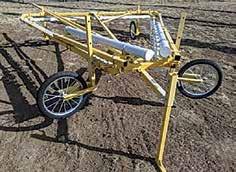


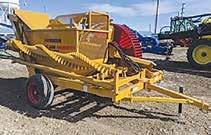





















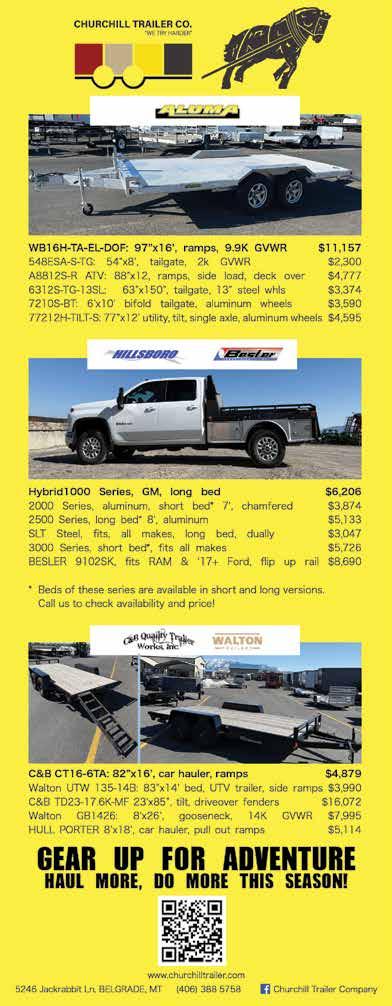

Early tar spot detected in Nebraska Corn; Irrigation shown to elevate disease risk
tion for more than eight hours and up to 16.5°F when compared to the rainfed corner.
The second span remained 1°F cooler than the last span
Relative humidity increased for more than eight hours, up to 46% more than the rainfed corner.
Leaves were wet for more than eight hours after an irrigation event.
Corn plants under the second pivot span averaged 1.75 hours of leaf wetness longer than the last span.
Irrigation occurred for 1.25 hours longer under inner spans than the outer spans.
Irrigation Impacts Foliar Corn Disease
The microclimate changes caused by overhead irrigation can create more favorable conditions for disease development. In addition to changes in microclimate, pathogens can be spread by splash effects from irrigation droplets.
To investigate these effects during 2024, disease severity was estimated in 25 center pivot irrigated corn fields. Disease severity was visually estimated as the percent of leaf area covered by tar spot in three field regions: second span, outermost span, and
rainfed corner (Figure 4):
Inner spans averaged 3.5% tar spot severity and 5.4% southern rust severity. Outermost spans averaged 3.3% and 4.8% severity for tar spot and southern rust, respectively.
Rainfed corners recorded levels of 1.6% and 1.9% of tar spot and southern rust.
Conclusion
In conclusion, results from research conducted during 2023-2024 on microclimate and disease development showed a strong relationship between irrigation and increased levels of foliar diseases in Nebraska. Results suggest that this may be caused by irrigation decreasing temperature, while increasing relative humidity and/ or leaf wetness. More research is needed before changes in irrigation management are recommended.
UNL researchers are also currently exploring potential adaptations to irrigation systems and the efficacy of fungicide chemigation. However, when scouting for early disease development, it is recommended to focus scouting efforts in the innermost pivot spans.

Figure 3. Volume output rate varies along the length of center pivot irrigation systems and impacts corn canopy microclimate and disease development.
Figure 4. Tar spot severity by field region under pivot irrigation.




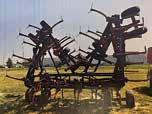


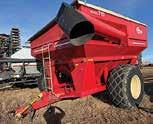


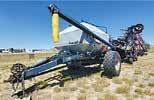









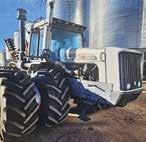



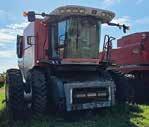


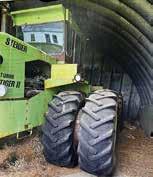





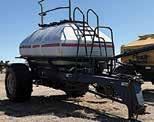
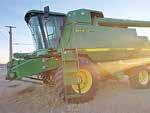


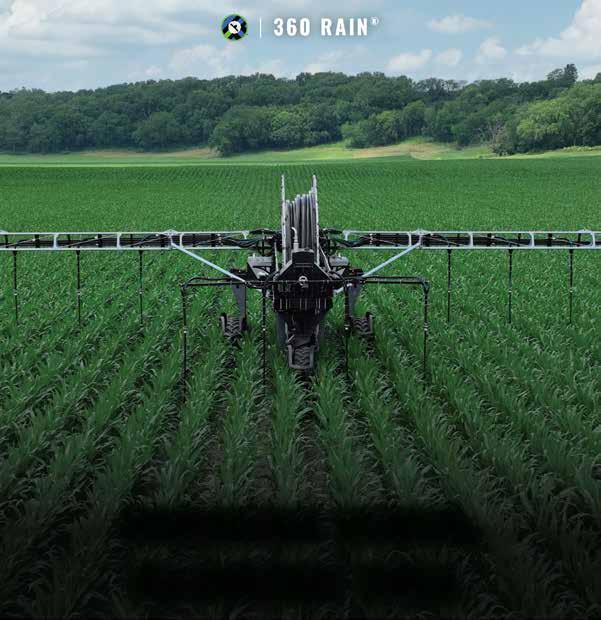

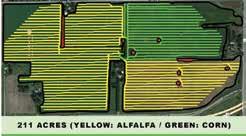




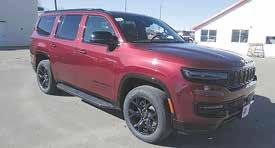
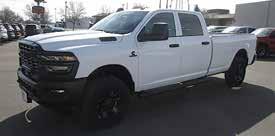

By Debbie Post, Nebraska Extension Master Gardener
Just because it’s summer doesn’t mean it’s too late to plant something now. Especially if you haven’t gotten your garden in yet this wet spring, or have had recent hail damage. Now is a great time to sow fast-growing crops that will reward you with a late-season harvest just as the weather begins to cool. When planting late-season, consider leafy greens to crisp roots, as radishes, lettuce, kale, Swiss chard, spinach, bush beans, carrots, beets, and turnips are all great seeds to sow and reap.
If your garden was spared the hail, and you decided to plant some herbs this year. Here are some tips for drying down those herbs. The herbs, basil, sage, cilantro, and rosemary, all have larger leaves and require minimal maintenance and preparation before the drying process. Your options include air drying, microwaving, dehydrating, or using a low setting oven. Be mindful. Your herbs will have different water contents, essential oil levels, and some are more prone to mold. When it’s time to store your dried herbs, it’s paramount to use airtight containers.
Along with storing your herbs correctly, safely store your garden veggies. Here are some ideas for storing produce for later enjoyment. Freezing is the easiest method, and most vegetables need to be blanched or steamed prior to freezing, which stops the enzyme action inside the vegetable and prevents loss of flavor, texture, and nutrients. Canning, pickling, and pressure cooking are also options to save your garden produce for another day. When in doubt, contact your county extension office for assistance.
Moving back outside, you don’t have to watch your plants die in the fall. If you enjoy taking cuttings from plants as a way to add more greenery to your home, keep these important tips in mind when propagating with water. Make sure the container is deep enough to allow the cutting to rest inside the glass. Submerge the majority of the cutting, removing any lower foliage or leaves to prevent decay or rot. Place the container in bright indirect light. Make sure to top off the water and change it often. Don’t wait too long to transplant - once the roots are one to two inches long, it’s ready to be planted in the soil.
Another outdoor activity can be the division of a variety of perennials and bulbs. It’s best to divide every 3-5 years or when they become overcrowded, and it’s optimal to do this in the spring or fall. Dig up the entire clump and then divide the crown and root ball into sections. Shake off excess dirt, remove dead growth, and cut back some of the live plant prior to replanting. This will help reduce any shock received from the division and transplanting process.
Grazing with the weather
By Ben Beckman, UNL
Precipitation and temperature play major roles in pasture productivity; and knowing how to adjust grazing to match current conditions is key. Are you shifting your management to meet pasture conditions?
Stocking and grazing management are not static things. When production is limited, especially during a drought period, stretching forage resources is a high priority. In contrast during wet years, grass growth can get ahead of our grazing rotation and loose quality.
By this point in the year, our pastures have produced the vast majority of forage that we will get. Using temporary electric fence to cross fence can increase utilization, slowing down a grazing rotation and stretching forage considerably during dry weather.
This is especially true when plants become dormant due to lack of precipitation or heat. Typically, utilization seeks to balance animal demand and plant health, but taking more of a dormant plant without damaging the crown has little impact on overall plant health.



On the flip side, grass that is getting tall and lanky, ahead of a grazing rotation, could benefit from flash grazing. Moving animals on and off quick can help keep plants from getting overly mature. Keep up this fast pace while growth is rapid. Once growth slows, then the rotation can slow down as well. Speeding up grazing when things are wet and slowing down during dry times is a good rule of thumb to use as we adjust to the weather Mother Nature throws our way. Doing so can help you find the perfect balance for your pasture and animal health.





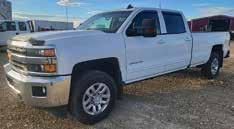













GRASS SEED
Looking for a good place to take my grandson bowhunting for antelope in September and October.

I am a producer of native grass seed and can barter with some grass seed. Bozoisky wildrye, western wheatgrass, cache meadow brome, etc.
Phone (406) 579-5452
GRAIN EQUIPMENT FOR SALE
2021 Great Plains 30-ft. folding drill, 3) 10-ft. sections, 6” spacing with press wheels, double disk, liquid fertilizer attachment.
2022 GT grain dryer, 600 bushel, propane.
2014 Westfield 10” x 61-ft. auger, with swing auger.
2012 John Deere STS 9750 combine.
John Deere 936D 36-ft. header, belt.
8) Miscellaneous grain trucks with hoists.
6) MIscellaneous PM grain trucks with belt bottoms.
1984 Gleaner N6 combine with 24-ft. header, new tires.
9) Aeration fans, 12” to 48”, 1/2 to 15 hp. International 6200 drill, 14-ft. x 6”, press wheels.
Phone cell (406) 490-3795, Anaconda, Montana

















Considerations for managing corn rootworm — It’s not too late
By David S. Wangila - Extension Educator, Matheus Ribeiro - Assistant Extension Educator, Travis J. Prochaska - Extension Educator, Jenny Brhel - Extension Educator
Corn rootworms are the most economically important pest of corn in the United States, causing close to $2.0 billion in yield loss and cost of management each year. At this point in summer, much of larval feeding on corn roots is done and adult corn rootworms are soon emerging; however, it’s not too late to begin or intensify management efforts targeting corn rootworm beetles. With proper scouting, informed interpretation of field-specific data and integrated pest management strategies, farmers can take meaningful actions now to mitigate risks during corn tasseling, and for next year’s crop.
Life Cycle and Movement
Corn rootworms have one generation per year, with the most economically important stage being the larvae. In Nebraska, adults begin emerging from mid-July to mid-August and live for up to six weeks. Adult emergence timing is mostly predicted using degree-day (DD) accumulation, with 5% emergence occurring at approximately 1,400 –1,500 DD (base 52°F). Nevertheless, emergence can vary based on soil
type, planting date, larval population and exposure to Bt toxins or insecticides. Once emerged, females mate and can lay more than 1,000 eggs, with the majority oviposited in August and September. These eggs overwinter in cornfields and hatch the following spring (late May to mid-June), creating localized infestations. Adult dispersal is limited to an estimated 130 feet per day — thus the need for field-level scouting and management decisions.
Scouting for Corn Rootworm: When and How
Scouting is a cornerstone of effective management and should begin around the R1 growth stage (silking), typically by early to mid-July, and continue through August. Early detection of populations/ root injury reaching economic threshold provides valuable insights for devising appropriate management strategies. The key scouting techniques include digging roots to check for larval injury, the use of sticky traps to monitor adult density and whole plant counts.
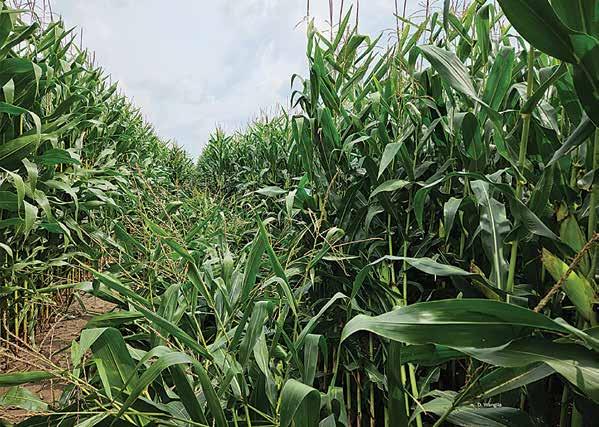
Check for Root Injury
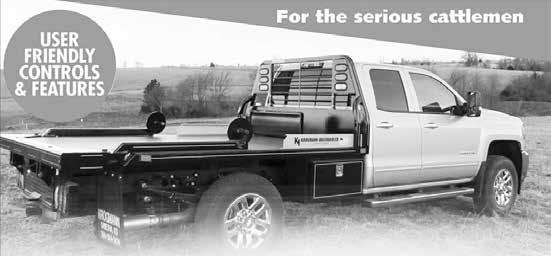

Cornfield with scattered lodging in the center rows, where plants have fallen over due to root damage caused by corn rootworm.
This is ideally done when you see adult rootworms in an area within the corn field. In some cases, this may also be associated with plant lodging, especially during strong winds (Figure 1). Dig out some plants with an entire root system, wash and assess root injury using the Iowa State University, 0 to 3 Node Injury Scale (NIS).
week all through the six-week period from the time of first beetles are noted in the field. A threshold of >2 beetles/trap/day suggests that changes in management — such as switching hybrids, rotating crops or using soil insecticides — may be necessary the following year. See Figure 2 for placement of the sticky traps.

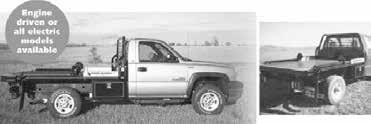

To rate corn rootworm injury, evaluate nodes 4-6 — the three nodes closest to the soil surface. For each of these nodes, count the number of roots pruned within 1.5 inches of the stalk and divide this by the total number of roots on that node. The final root rating is the sum of these individual node ratings. A rating of 0.25 signifies the economic injury level, indicating a potential yield loss.

Sticky Traps


Position unbaited traps (e.g., Pherocon AM) at ear height at least 100 feet away from the field edges and at least 100 feet from trap to trap and placed in a “W” format to gain a representative sample of the field. We recommend checking, recovering and replacing traps with new traps once per

Figure 1. Lodged plants due to corn rootworm injury. (David Wangila | Nebraska Extension)
Figure 2. Yellow sticky trap attached to a corn plant. (David Wangila | Nebraska Extension)
CONTINUED ON PAGE C32
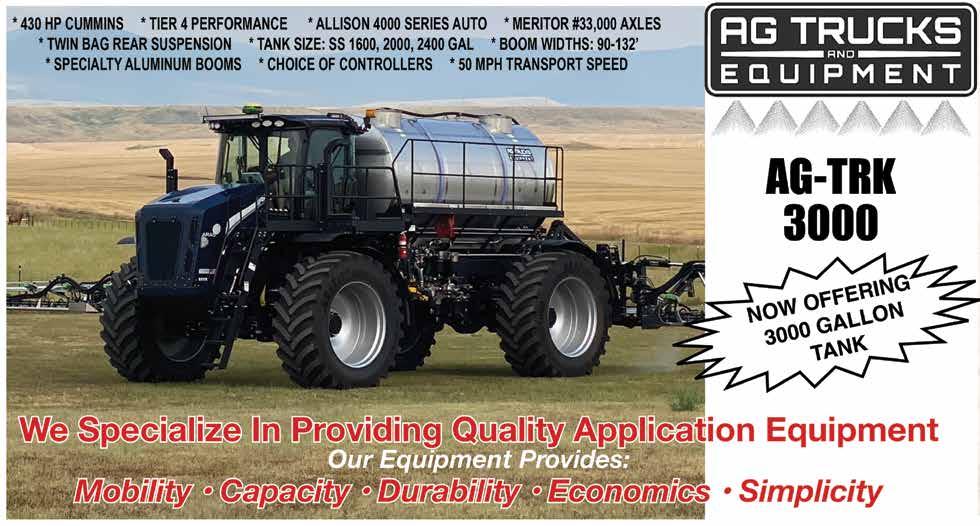


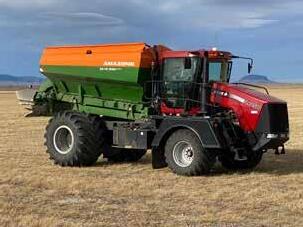


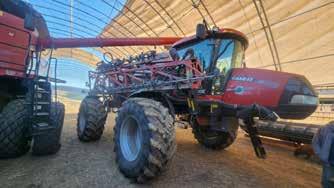
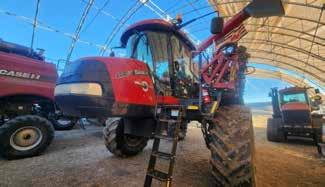
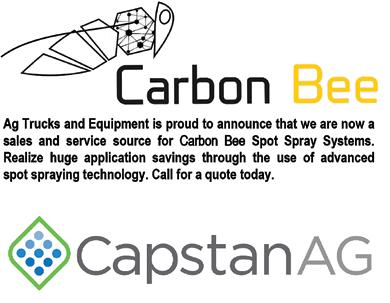


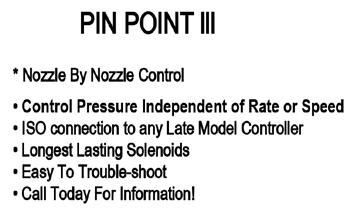
SQUEEZE CHUTE
The 2007 space shuttle Discovery carried the prop lightsaber used by Mark Hamill (Luke Skywalker) in Star Wars - a fake space relic in real space.


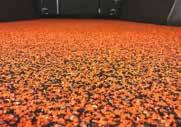

Considerations for managing corn rootworm —
Whole-plant Counts
We recommend that you randomly sample 50 plants in each field using an “M” or “W” pattern by checking the plant from tassels to the lower parts of the stalk. The plants should be at least 100 feet away from each other. If the average beetle count reaches ≥1 beetle per plant, the risk of yield impact or egg-laying for next year increases.
Scouting should prioritize fields with silking corn, as adult beetles are attracted to corn at this stage, to feed on pollen and silk. Fields in the vegetative stage or post-pollination are less attractive and may not yield accurate population assessments.
Recent Findings: Resistance Concerns in First-year Corn
A recent study by UNL entomologists in northeast Nebraska sheds light on our understanding of corn rootworm dynamics within fields. The study found that Bt-resistant western corn rootworm populations immigrated into firstyear maize fields from nearby continuous cornfields. Using weekly trap data and bioassays, researchers confirmed that first-year fields are no longer immune to rootworm pressure, especially when other infested fields are nearby. This reinforces the necessity of monitoring all cornfields — not just those in second or third-year corn — and incorporating integrated pest management tactics for management of corn rootworm.
Integrated Pest Management Strategies
1. Crop rotation: Planting non-host crops like soybeans after a year or two of planting corn remains one of the most effective tools against corn rootworm. Crop rotation interrupts the rootworm life cycle as corn rootworm larvae starve and die during the non-host crop planting. The only drawback to this strategy is the occurrence of rotation-resistant corn rootworm variants, which lay eggs in soybean fields. However, these variants are not present in fields across Nebraska, making crop rotation a great tool to manage this insect pest.


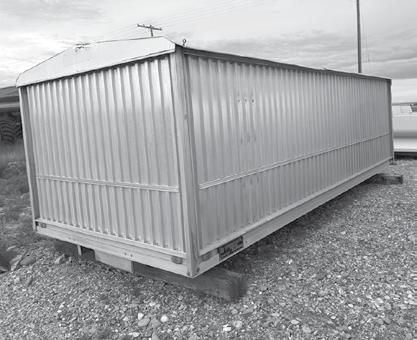




2. Bt Corn Hybrids: Transgenic Bt corn technologies targeting corn rootworm have been available in the U.S. since 2003. Hybrids expressing multiple Bt toxins (pyramided traits) are available and widely adopted by farmers. Corn rootworm resistance to Bt is a growing concern. To delay resistance, consider rotating Bt technologies, adopt crop rotation and adopt adult mitigation measures, if required. The Bt traits handy table is found here.
3. Insecticides: Foliar sprays target adult beetles to reduce silk clipping and suppress egg laying and associated number of larvae the next season. Apply when adult counts exceed thresholds (mentioned earlier) but avoid unnecessary applications that may accelerate insecticide resistance. However, studies have shown that complexities in timing of spraying plus number of foliar sprays required for adult control makes this practice not economically viable. For next year, consider using soil applied insecticides at planting to protect corn roots from larval feeding and injury if the current population has shown possible damage the next year.
It’s Not Too Late
Although the window for larval control has passed, adult beetle monitoring is now crucial. Fields with silking corn should be actively scouted. High adult populations observed in July and August can signal elevated risk for root injury in 2026. We strongly recommend scouting of all corn fields, including first-year corn, to match appropriate corn rootworm management approaches to relative risk.
Taking time to scout now provides you with data-driven decisions for the following growing season. Nebraska corn growers still have time to better manage corn rootworm, now and for next year, so don’t wait. Scout now, manage smart, and plan for 2026!
Binder Clips
In the early 20th century, here’s how you bundled a large stack of papers together: punch holes into the left side of each sheet, thread twine between the holes, and bind them together like a book. It was secure, but annoying if you had to remove a page. You’d have to unthread the stack, remove the page, and then rethread it. Sixteen-year-old Louis Baltzley saw his father – an inventor who often had to revise patent applications – do it hundreds of times. In 1911, he had an idea. Inspired by surgical clamps, he made a hinged metal clamp. It could bind a stack of pages, but if one had to be removed, he simply opened the clamp. More than 100 years later, the design of the binder clip is largely unchanged.
Big Sky Equipment Co.

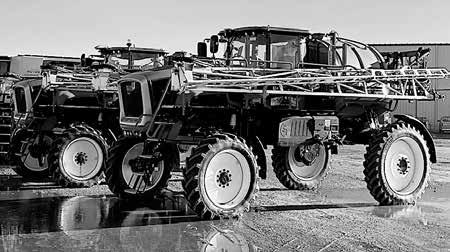


USED HEADERS
2018 MacDon FD140 flex draper, upper cross auger, double knife drive, slow speed transport.Just Traded MacDon D65D 35-ft. draper header, double knife drive, triple delivery (deck shift). $47,900

2022 New Holland CR8.90 combine, full automation, autoguidance, chopper & spreader, electric folding grain tank cover, DFR rock trap, twin pitch rotors, Sunnybrook concaves.
$489,900
2024 New Holland CR8.90 combine, full automation, autoguidance, chopper & spreader, electric folding covers, DFR rock trap, twin pitch rotors. $539,900
2018 New Holland CR8.90 combine, duals, autoguidance, electric folding covers, chopper and spreader, DFR rock trap, twin pitch rotors
$254,900 1998 Case IH 2388 combine. LET’S DEAL 2006 John Deere 9760 STS combine. AUCTION PRICING $19,900




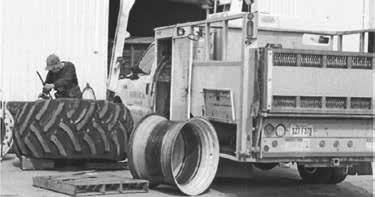



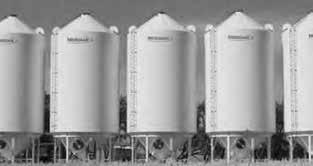




• Increased early season vigor
• Phosphorus and Zinc to drive rooting & cold start the crop.
• Zinc to help with early season hormone production, ie. Auxin for root and shoot growth.
• Convey Technology to help with early season stresses, such as cool soils and excess moisture. It also improves nutrient use efficiency.
• Other essential nutrients target at each specific crop, ie. Boron for cell wall strength; Manganese for efficient photosynthesis.

• Second chance for a starter fertilizer
• Formulations are targeted at early season root growth (more root = more efficient moisture and nutrient uptake).
• Proactive way of managing the crops nutritional requirement.
• Convey Technology helps with early season stresses such as cool soils, excess moisture, and drought. Also improves nutrient use efficiency.
• Speeds up recovery from herbicide hangover - the correct supply of nutrients helps the crop metabolize the herbicide more quickly.

• Contains novel Phosphorus nutrition, providing increased nutrient uptake and movement within the plant.
• Targeted at the reproductive phse of the plant.
• Proactive way of managing the crops utritional requirement
• Contains other essential nutrients targeted for each specific crop, ie. Boron to aid pollen tube growth, Zinc to help produce Auxin, to ensure healthy pollen tube growth.

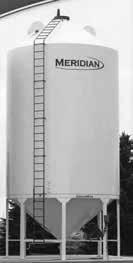


When steel grain bins sustain wind damage, careful inspection is needed to evaluate repair or replacement options. Ken Hellevang, professor emeritus and retired North Dakota State University Extension agricultural engineer, recommends receiving inspection assistance and advice from a bin manufacturer representative. He says they have the expertise to evaluate the damage and provide recommendations for repair or replacement.
Metal grain bins are designed to carry loads imposed by grain. The round shape puts the metal wall sheeting in tension as the grain pushes outward. Wind load on a bin wall pushes in on the windward side of the bin while it pulls out away from the bin in the remaining directions. Wind, in effect, tries to crush the bin, pulling and pushing it out of shape.
Wind also tends to push the windward roof inward, collapsing it into the bin, while it can produce a suction on the leeward side of the roof. Wind moving through a group of bins can cause the wind to accelerate between and around bins, significantly increasing wind load.
“A bin with a deformed wall is also likely to have the bin wall pulled up from the foundation and the roof pulled down,” says Hellevang, “so the entire bin needs to be inspected.”
An initial inspection should look for alignment, any indents or bends in the bin sheets, the connection between the roof and wall, and the wall connection to the foundation.
Start on the outside of the bin, far enough away so that you can see the top of the bin. Walk completely around the bin to see if the walls are straight, the eave is parallel to the ground and no wall or roof sheets are missing or badly deformed. A bin can slide on its foundation, so check if the bin appears to be centered on the concrete foundation.
Also, check if doors are intact and not out of square. Does the sealant between the bin wall and the concrete foundation look to be intact? If the sealant is damaged, then the wall sheets, bin or anchors may have failed.
The following are some of the items that Hellevang advises to examine during an inspection:
Are any anchor bolts or anchor plates missing, bent, or broken?
Does the concrete show any cracks that indicate that the anchor bolt is not being held securely?
Are there bolts or bolt heads missing? Is there any stretching or other indications of movement at bolt holes? Are the bolts tight?
Are the wall sheets buckled or flattened? Deformation may overload steel, resulting in a loss of strength. The sealant between sheets should be intact, too.
Inspect door openings and other openings in the wall. The opening frame should be square with no frame member buckling. The welds should not have cracks or otherwise show signs of failure.
Stiffeners (vertical members attached to the bin wall) should be straight. The bolts attaching the stiffener to the wall, wind rings and foundation should not show evidence
Wind load on a bin wall pushes in on the windward side of the bin while it pulls out away in the remaining directions, which has bent this Iowa bin out of shape. (Photo by the National Weather Service)



TRACTORS


SPRAYER


2007 John Deere 9520 new tires, 4 remotes, buddy seat, Trimble GPS, hydraulic steering, 6219 engine hours. stk# 31467.$151,000 (L) Steiger PT225 tractor. stk# 20554.$25,000 (G)
2000 New Holland TM150 tractor, Newly rebuilt engine, remanufactured transmission, SuperSteer, 112 bar axle, full PS, 184R38 60%, cab suspension, 22 front weights, wheel weights 540/1000 PTO, no loader. stk# 29559. $58,000 (G)
1988 Case 2096 tractor, DuAl 310 loader, 130 hp., 3 rear remotes, 10,871 engine hours. stk# 31858. $31,250 (L)
2023 Bobcat CT5550E HST compact tractor. stk# 32344. CALL (G)
2022 Bobcat CT2025 HST tractor, 56 engine hours. stk# 29350. $24,000 (L)
ROUND BALERS
2018 New Holland RB560 laced belts, ISO monitor, net only, hydraulic ramp, 1000 PTO with cut out clutch, bale count of 10,479. stk# 22242. $34,900 (L)

New Holland 688 baler, narrow pickup, 1000 PTO. stk# 32829 $8000 (L)
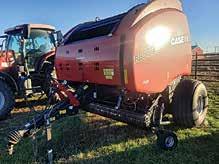
2014 Case IH RB565 baler, ISO, laced belts, x-wide pickup, casters, roller windguard, large flotation tires, net/twine, 15,958 bales. stk# 22476. $35,900 (L)

Case IH RB564 baler, X-wide pickup, net/twine, 1000 PTO. stk# 32786. Call For Price (L)
2010 John Deere 568 baler, twine, 1000 PTO, roller windguard, large float tires, 19,886 bales. stk# 31510. $9900 (G) Hesston 856A baler, 15,050 bales. stk# 22105 $4900 (G)
2011 Westfield MK13LP hopper. stk# 14046. $4500 (G)
Let us show you what we can do for your bottom line with this NH 310 sprayer fully equipped with a nearly new $230,000 Weed-It system! Spray weeds, not dirt.

2019 New Holland SP310F NEW 520/85R42, MONO BOOM, 120-ft., 10 SEC.. stk# 24818. $374,900 (G)
SQUARE BALER

2014 New Holland 340 square baler, new needles & knotters, density control, tandem, ISO Intellview, 1000 PTO, roller chute, roller windguard, 11, 402 bale count, complete work orders $45,000. With a free one-season warranty. stk# 30935. $89,900 (G)
MOWERS
Grasshopper 928D rider, 61” deck with vac bagger, Kubota 3 cyl. 4 cycle liquid cooled. stk# 30874. $9900 (G)
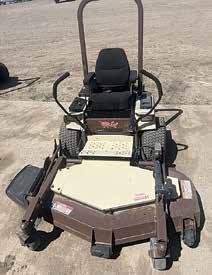
Grasshopper 729BT Model 3461 deck, Ser # 6343237, power fold, T6 drive hydrostat transmission, wide stance, single fork tail wheel. stk# 15503. $8500 (G) Grasshopper 725G2 rider. stk# 7186.$4900 (G)
RAKES
2022 NEW New Holland 1631 rake, 16 wheel high capacity, single side opening, 60”, rear tandems, rear hydraulic opening. stk# 28671. Payments as low as $5530/oac (G)
2022 New Holland 230 7 bar, hydraulic rake. stk# 28667. $49,900 (L)
2013 Vermeer R2300 hydraulic 23-ft. rake. stk# 25560. $19,000 (L)
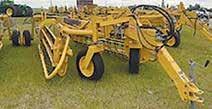
2011 Vermeer R2300 rake, hydraulic basket. stk# 32831. $23,000 (L)
2008 Vermeer R2300 hydraulic basket rake. stk# 31803. $19,000 (L)
2006 Vermeer R2300 rake. stk# 8029. $12,900 (G)
Hesston 12 wheel rake. stk# 30919.$11,600 (L)
BALE PROCESSORS
2023 Vermeer BPX9010 R&S processor, 1000 PTO, right hand discharge. stk# 29565. $29,900 (L)
2009 Vermeer BPX8000 processor, round only. stk# 11189. $14,900 (G)
2016 Haybuster 2665 processor, round bale only, fine cut. stk# 32154. $18,000 (L)








CONSTRUCTION & ATTACHMENTS
2023 Bobcat S66 Skidsteer SJC, HVAC, vinyl suspension seat, auto ride control, reversing fan, PWR BOB, 7-pin, 2 sp, dual bucket position. stk# 29382. CALL (G)
2023 Bobcat S66 Skidsteer CLR side, HVAC, heat cloth air ride seat, auto ride control, reversing fan, PWR BOB, 7-pin, 2 sp, dual bucket position. stk# 29381 CALL (G)
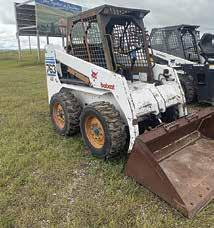
1998 Bobcat 763 Skidsteer, 3946 engine hours. stk# 32669. $17,900 (L)

1987 Bobcat 743 Skidsteer, KUBOTA V1702-B ENGINE. stk# 15109. $12,500 (L)
2023 Bobcat E20 Mini Excavator. stk# 30610. $42,500 (G)
MISCELLANEOUS
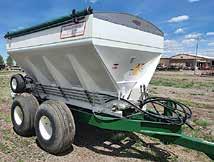
Chandler 20PTT-FT dry fertilizer sprayer
120”x96” wide hopper, 245 cubic ft. capacity, hydraulic motor-powered spinners. stk# 32701. $25,900
Manitou 96” grapple bucket. stk# 22839. $5888 (G)
72” bucket. stk# 26358. $700 (G)
Howard M100 rotavator, 3-pt., 100” tiller. stk# 32199. $4000 (L)
2014 Danuser F8 3-pt. post hole digger with 12” bit. stk# 18366. $1200 (G)
2019 Danuser 200173 18” rock auger bit with 2” hex head. stk# 29016 $1800 (G)
Danuser 48” pallet forks. stk# 29525.$1400 (G)
Woods Euro bale spear. stk# 23716. $600 (G)
2022 Salt Dogg SHPE0750 Sand/Salt spreader, stainless steel auger and frame. stk# 32348. $2850 (G)
Lan SPL10 72” snowpush. stk# 32537. $1395 (G)
MTD snowblower, 22” 2-stage blower, no reverser. $400 (G)
Toro snowblower. stk# 5810. $225 (G)
TILLAGE
2018 Gates 84-ft. Magnum 5 bar harrow, 26x9/16 teeth with carbides, hyd tine adjust., excellent condition. stk# 31435.$59,900 (G)
2023 NEW Maybridge 2M26 Harrow. stk# 31173. $15,900 (G)
2023 NEW Kirchner 8-ft plow, Cat II, 3-pt. unit with 16” sweeps. stk# 30802. (L)
John Deere 18-in. planer, 14 pin control, carbide teeth, high flow. stk# 31623. $9900 (G)
2022 Bobcat E42 Mini Excavator, 403 engine hours. stk# 29370. $69,900 (G)
2022 Bobcat E35 Mini Excavator, 33 hp, 414 engine hours. stk# 29371. $59,900 (G)
2022 Bobcat E35 Mini Excavator, 25 hp, 403 engine hours. stk# 29373. $55,900 (G)
2024 Case CX37 Mini Excavator, New trade-in! Excellent condition, 200 hours. stk# 32270. $54,900 (G)
2022 Bobcat T740 Compact Track Loader, 448 engine hours, Power Bobtach, 7 pin, dual direction bucket positioning, ride control, reverse fan. stk# 29376. $69,900 (G)
2023 Bobcat T64 Compact Track Loader. stk# 30714. Call (G)
2022 Bobcat T64 Compact Track Loader, cab AC/heat, Bobtach-bucket positioning, Touch display-rear cam, heat seat, auto ride-high flow-rev fan. stk# 29311 CALL (G)
2022 Bobcat MT100 Track Loader. stk# 29374. Call (G)
2021 Bobcat 5600 Toolcat, Brand-new engine with 0 hours and warranty! Deluxe cab & high flow. stk# 32095. $69,000 (G)
2017 New Holland LM7.42 Elite telehandler, reverse fan, rear hyd couple, ext. tool box, continuous flow aux hyd, Bluetooth & aux radio, bucket/grapple, engine hours 3621. stk# 22833 $95,000 (L)
Bobcat HB980 breaker. stk# 24408.$10,036 (G)
2011 Bobcat 80 dozer blade. stk# 31340. $5965 (G)
Bobcat 709 backhoe attachment. stk# 32682. $4500 (L)
Quick Attach 68” angle blade. stk# 32129. (G)
Bobcat 68” angle broom. Good bristles. stk# 32128. (G)
Bobcat 74” bucket. stk# 29864. $1800 (G)
High Volume 66” bucket, skid steer attachment. stk# 29035. $650 (G)
Bobcat 18” bucket for excavator with bolt on teeth. stk# 22333. $399 (G)
2014 Bobcat drop hammer. stk# 17553. $5900 (G)
Bobcat 15C auger. stk# 23364. $2750 (G)
Bobcat 6B landrake. stk# 29484. CALL Bobcat 72” root grapple. stk# 29486. CALL SWATHER
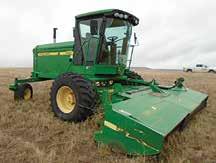


John Deere 4996 swather, 3940 engine hours, 16-ft. ROTARYx. stk# 24605.
-We




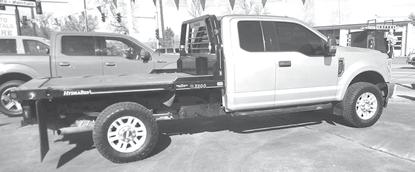





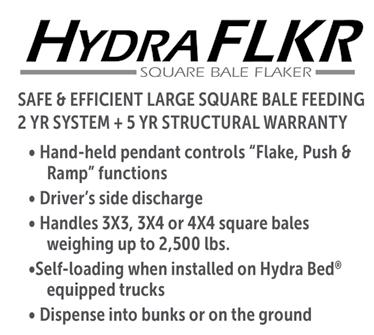
Examine grain bins and handling equipment for wind damage
CONTINUED FROM PAGE C34
of deformation as described earlier. The base plate connecting the stiffener to the foundation should sit flush on the foundation with shims installed as needed.
Wind rings may be used on the bins to help keep the bins round. The wind ring bolt connections attaching the ring to the wall or stiffeners should be present and tight. The rings should be round in shape and not deformed.
From the doorway, examine the interior of the bin walls for damage.
Look for light entering the bin from damaged components.
If a raised aeration floor is installed, check if the floor attachment to the wall is damaged and if all bolts are present. Also, look for wall deformation near the raised floor line.
Look at the inside of the roof to see if the roof sheets look damaged (bent). If the roof is attached to the wall through clips and bolts, inspect the bolts and clips for damage and tightness.
Examine the roof for bent or deformed roof sheeting ribs. Are the sheets running evenly down the roof slope?
Are the roof-to-wall clips and bolts that connect the wall to the roof sheeting present and tight?
Are the supporting roof rings round and secured in place with tight bolts if present on the roof?
Is the door for the top opening in the bin roof bent or dislocated relative to the opening in the roof? The seal should be intact and capable of sealing so moisture cannot enter the bin.
Examine roof vents. Damaged vents will affect the aeration system.
Check junction boxes at the fan and all controls.
Is the electrical conduit damaged? Are conduit joints sealed and intact? Does the conduit run straight, or is it pulled away from a straight run?
Are connections to the fan motor and all controls and sensors intact and sealed?
Grain handling equipment such as bucket elevators, downspouts, cross conveyors and support structures should also be inspected for damage caused by the wind or by stresses from movement of attached bin parts. Again, look for alignment, deformation and connections that will impact the function and strength of the equipment.
Document with pictures and take legible and complete notes. Hellevang says that filling a bin that has some damage may lead to an imbalance in loading, which in some situations could lead to a bin failure. There may also be entry points for water and inadequate aeration due to air leaking out of the bin rather than going through the grain.
Before making replacement decisions, consider the overall grain system design and suitability for current and future needs. While storm damage and repair are stressful and costly, it may present an opportunity for redesigning the system.
For more information about dealing with damage from summer storms, visit ndsu.ag/summerstorms25.
The morning meal
A chicken pops an egg out of a place
Most people don’t like to bare
It makes you wonder if people would still order two If they knew they came from there
The pig, which is also
Known as a swine
Unlike the chicken, gave up his life
So parts of him, at breakfast we could dine
The toast comes from the farmer’s field
Like his generations past
We don’t know why but the kind of toast
With the order always comes up last
Most people already know that’s what they want For their morning meal
They wouldn’t tell you, but their only reason for looking At a menu is to see if they’re going to get a good deal
Hash browns, added to the rest, makes it a full course
The farmer didn’t sacrifice anything, in the potato selling deal Or in this mixed up world we live in, out of all the above
The farmer would be the one to squeal © ROBERT RIDGWAY (Vaughn, Montana)

C

equipment



TC 3000 belly dump trailer, 3 axle, air ride, air lift rear axle, electric tarp, push block, side boards. Excellent condition $70,000
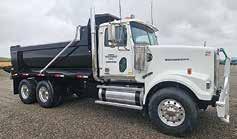
2015 Western Star dump truck, Cummins engine, 400 hp, jakes, Allison automatic transmission, rear locker, new 15-ft. gravel box, high lift tailgate, electric tarp, aluminum wheels, 315 front tires. Excellent work ready truck $87,500



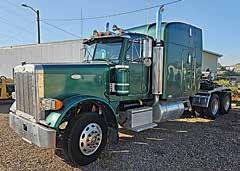
1995 Peterbilt 379 500 horsepower N14 Cummins, Jakes, 10 speed transmission, low miles on ovehaul.
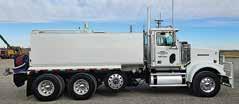






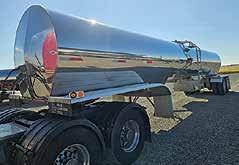
2001 Polar stainless steel tanker trailer, 2 compartments, 6700 gallon, 2 axle, toolbox, aluminum wheels, excellent condition. $35,500



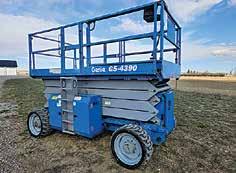



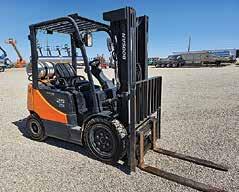


2025 Midland TW 3000 side dump trailer, 3 axle, air ride, air lift rear axle, electric tarp, push block, aluminum wheels $75,000
Mitsubishi FG 25 N forklift, gasoline power, sideshift, 3 stage mast, 3500 hours $13,000
Skyjack 3220 scissor lift, electric, non-marking tires. Good machine $5250
2025 Diamond
22-ft.
trailer, 2-8000# axles, stand up ramps, spare, excellent condition. $7850
Marathon Ram Jet garbage compactor, 3 dumpsters, power unit, very nice. $7950
$39,900 1999 Polar stainless steel tanker trailer, 2 axle, 6250 gallon, aluminum wheels. $29,000
COMBINES FOR SALE

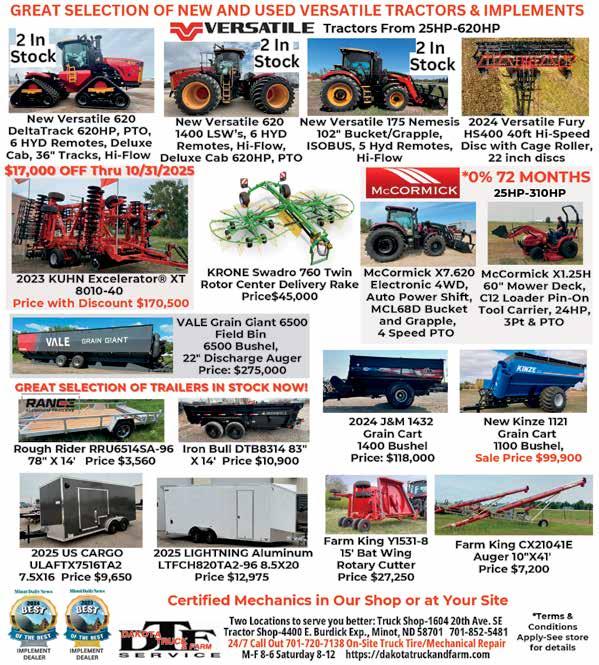
Consider pros and cons of alternative grain storage methods
Intense storms can significantly affect grain storage abilities. Storage capacity could take years to recover from damaged facilities. When considering alternative grain methods, it’s crucial to keep some key storage factors in mind.
Grain can be stored in many types of facilities, but all storage options should keep the grain dry and provide adequate aeration to control grain temperature, according to Ken Hellevang, professor emeritus and retired North Dakota State University Extension agricultural engineer.
“Grain must be dry and cool (near the average outdoor temperature) when placed in alternative storage facilities because providing adequate, uniform airflow to dry grain or cool grain coming from a dryer is not feasible,” says Hellevang.
The full version of this news release can be found at ndsu.ag/altgrainstorage.
Structural Issues
Grain pushing against walls can damage buildings not built for grain storage. The wall must be anchored securely, and its structural members must be strong enough to transfer the force to the building poles or support structure without breaking or excessive bending.
Before placing grain in a building previously used for grain storage, look for anything out of alignment, such as wall bowing and distortions in the roofline. Bowing or bending indicates that the load on the building exceeded the load for which it was designed and built. This weakens the structure. Also examine connections for separation or movement and add a gusset or splice to reinforce the connection if necessary.
Bag Storage
Storing grain in poly bags is a good option, but it does not prevent mold growth in damp grain or insect infestations. Place grain in the bag at recommended storage moisture contents based on grain and outdoor temperatures during the potential storage period.
Heating will occur if the grain exceeds a safe storage moisture content, and it cannot be aerated to control heating. The average temperature of dry grain will follow the average outdoor temperature.
Grain Piles



Grain is frequently stored short-term in outdoor piles. However, precipitation is a severe problem for uncovered grain because grain is very porous. A 1-inch rain will increase the moisture content of a 1-foot layer of corn by 9%. This typically leads to losing at least a couple of feet of grain on the pile surface, which is a significant loss.
Use a cover to prevent water infiltration. Drainage is critically important to the success of any grain storage. About 25,000 gallons of water will run off an area about 100 by 400 feet during a 1-inch rain. This water must flow away from the grain and the area next to it. When determining a location for a pile, examine the entire area to ensure that flooding will not occur during major rain events.
Grain Covers
A combination of restraining straps and suction from the aeration system holds grain covers in place. Provide adequate airflow through the grain to control grain temperature. Place perforated ducts on the grain under the cover to provide a controlled air intake for the aeration system and airflow near the cover to minimize condensation problems under the cover. CONTINUED
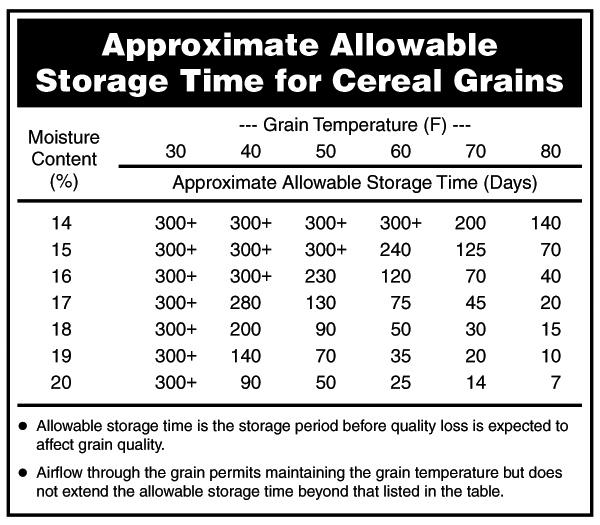
Consider pros and cons of alternative grain storage methods
CONTINUED FROM PAGE C38
Cooling Stored Grain
Cool grain with aeration to extend the allowable storage time and reduce the potential for insect infestation. Temperatures below about 60 degrees Fahrenheit reduce insect reproduction. Insects are dormant below about 50 degrees, and extended exposure to temperatures below about 30 degrees can kill insects.
Cooling grain as outdoor temperatures drop will reduce moisture migration and the condensation potential near the top of the grain pile. Also, the grain should be cooled because grain moisture content and temperature affect the rate of mold growth and grain deterioration. The allowable storage time approximately doubles with each 10-degree reduction in grain temperature.
Long-term Grain Storage
Grain has an acceptable storage life before the quality is reduced enough to impact its value. Allowable storage time is cumulative, so consider the amount of storage life remaining when deciding if you can store the grain longer.
“Keep in mind that airflow through the grain permits grain temperature to be maintained, but it does not extend the allowable storage time,” says Hellevang.
Anjou pear
These creamy pears, sometimes called beurre d’Anjou meaning “butter of Anjou” in French, are named after the northwest French province of Anjou. But this is believed to be a mistake. Botanists say Anjou pears are bred from the European pear (from which the world’s most popular pear cultivars were derived) in the early 1900s, probably in Belgium. When they were first exported to the U.K. and the U.S. in the 1940s, someone named them Anjou – and nobody knows quite why… but that’s what they’ve been called ever since.
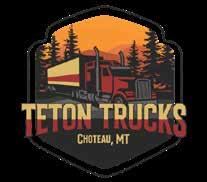





JIM NIELSEN TRUCK & PARTS, INC.
2002 Great Dane 40-ft. van trailer, excellent condition. $5500
1990 Fruehauf 48-ft. shop & parts trailer, excellent condition. $14,000
1987 International tandem roll-off truck with 2 steel boxes. Package $14,000
1978 Fontaine 44-ft. step deck trailer, 1 owner. $6500 24-ft. truck van body, good storage. $1600


rear axle lift, electric tarp and hydro traps.
2024 Wilson 50x96x79 tri axle with aluminum subframe, front and rear lifts.
2022 Timpte 40x96x72 air ride Ag Hoppers. Quantity of 20.
2020 Wilson 48x102x72 triple axle, ag hoppers, hydro traps, eletric tarp, rear axle lift.
(2) 2014 Wilson 48x102x84 Tri axle air ride, ag hoppers.
2010 Wilson 41x96x72 air ride, ag hoppers.
2020 Timpte 48x102x78 air ride, triple axle, electric tarp and hydro traps.
2013 Timpte Black 48x102x78 tri axle, ag hoppers, 3rd hopper chute out the back.
2011 Timpte 48x102x78 air ride, triple axle, electric tarp and hydro traps.
2014 Merritt conveyor trailer, 38x96. $27,000
2020 Wilson livestock trailer, Bull Nose, tri axle.
2009 Merritt quad axle livestock trailer.




Aluminum & steel fuel tanks.
2006 Freightliner complete hood, good condition.
Wide selection truck transmissions drop ins & axles.
1991 GMC Top Kick complete cab.
Wide selection, medium & heavy truck doors.
(4) Used hoist assemblies, scissor & center post.
Large selection, medium duty truck hoods.
(50) Steel wheels, hub, pilot and Budd.
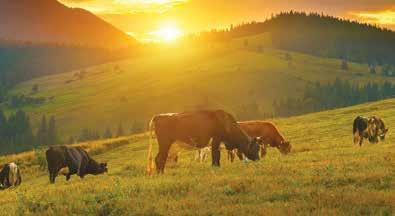
Using detailed, remotely sensed geospatial data with user-provided fences and water locations, StockSmart helps livestock owners and land agency managers in the western U.S. determine how much forage is available to their livestock, and where.




WSU livestock management platform named Microsoft ‘AI for Good’ winner
By Angela Sams, College of Agricultural, Human, and Natural Resource Sciences
A livestock grazing management tool developed by researchers at Washington State University, the University of Arizona, and the U.S. Forest Service is one of 20 projects to receive recognition and support through Microsoft’s $5 million “AI for Good” program.
Launched in early 2025, AI For Good supports academic institutions, individuals, startups, and other Washington state organizations that use AI to promote sustainability, public health, and human rights. Six different WSU projects were selected for Microsoft support as part of the program.
As a winner, StockSmart will receive $100,000 in Microsoft Azure cloud computing credits, and its creators will have an opportunity to work with AI for Good Lab scientists.
“I’m excited to use high-level computing technology to explore further applications of StockSmart,” said Sonia Hall, WSU agricultural climate resilience specialist and StockSmart project co-leader. “In addition to AI, technologies like virtual fencing open new avenues for informing grazing decisions via more finely tuned information and the ability to respond in real time. The value of rangelands is sometimes unappreciated, so it’s a great opportunity to contribute to their sustainable management.”
Using detailed, remotely sensed geospatial data with user-provided fences and water locations, StockSmart helps livestock owners and land agency managers in the western U.S. determine how much forage is available to their livestock, and where.
The researchers hope the tool can soon be utilized for other rangeland health benefits like wildfire risk mitigation, said project co-leader and WSU Rangeland and Livestock Extension Specialist Tip Hudson.
Wildfires spread quickly in Washington state’s low-elevation grassland and shrub-steppe landscapes, and mitigation via herbicides and mechanical thinning can be costly. A reduction in fine fuels like dried grass, twigs, leaves, and pine needles could change fire behavior, potentially lowering the carbon footprint of wildfires and decreasing the amount of public funds spent on their suppression.
That’s where the StockSmart-Microsoft collaboration comes in. StockSmart’s creators plan to leverage the tech giant’s machine learning and AI expertise to analyze satellite and virtual fence animal sensor data. The results will help them determine specific regions where targeted grazing could help with fine fuels reduction.
“We’d like to use Microsoft’s AI capabilities to improve StockSmart’s fire behavior and prediction models,” Hudson said. “We hope to combine fire behavior models with forage calculations to see where a grazed fire break would impact fire behavior like flame length, height, and temperature. By seeing how many livestock could be sustained for how long, we’ll be able to determine how many animals would need to graze in a certain area to achieve the target level of fuel reduction.”
The Microsoft partnership also coincides with the recent debut of StockSmart 2.0. Users can now select more comprehensive year ranges for underlying forage production data; they also have additional options for visualizing forage density and volume, among other improvements.
“On large landscapes, sustainable grazing means ensuring that forage harvest doesn’t exceed forage supply,” Hudson said. “The West has a tremendous diversity of soils, plant communities, and landscapes. One acre of land might have
2021 Wilson 29-ft. lead trailer, 25-ft. 6” pup with air operated expandable draw bar. Disc brakes on the set!
2020 Timpte 40x96x72 Conveyor
2015 R-Way belly dump, tri axle air ride with rear axle lift.

With increasing interest in cover crops, Great Plains continues to offer producers innovative seeding solutions. Whether it’s increasing soil health or providing forage for livestock, the new BD7600 offers producers legendary performance and features.

EASY DISASSEMBLY
No tools are needed to completely disassemble the seed cups for easy maintenance.

MULTI-POSITION OUTPUT GATE
Output gate is adjustable to accommodate seeds of various shapes and sizes or opens completely for easy cleanout.
GREATPLAINS METERINGSYSTEM




3-POSITION SEED GATE
Seed gates have 3 positions: narrow and wide openings to tailor input into meters, or closed completely for skip-rows.
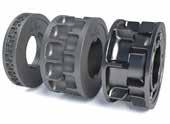
METER WHEELS
Small and regular seed wheels are standard with each seed cup; a third seed wheel for large seed/fertilizer is optional.

CLEAR WIND COVER
Clear cover keeps high winds from disturbing seed flow and pivots out of the way for closer inspection of seed meter wheels.
If you enjoy reading the Trader’s Dispatch, and have found what you were looking for, please tell an advertiser.
MOBILE AG REPAIR
• John Deere and Case/New Holland Computer Diagnostics
• Pre-Harvest / Hay / Winter Inspection
• General Mechanical Hydraulic Repair
• A/C Repair
• General Maintenance
Serving Teton, Cascade and surrounding counties

Spring cattle grazing has no effect on sage-grouse nest success
Moderate cattle grazing on public lands does not reduce sage-grouse nest success, according to a newly published 10-year University of Idaho study. The findings suggest sagegrouse and cows can coexist on the same land in southern Idaho.


Acciacca Agriculture Fairfield, MT
Phone Brad - (406) 799-2042 or Tom - (406) 799-8323
WESTERN TRIANGLE AG RESEARCH CENTER NOW HIRING!

Two full-time Montana State University positions are currently available at Western Triangle Agricultural Research Center (WTARC) near Conrad, MT. Western Triangle Ag Research Center consists of 75 acres and serves agricultural producers by conducting relevant dryland and irrigated research in cereals, oilseeds, pulses and forage crops and disseminates the garnered information to the general public and scientific community.
Farm Operations Manager (FOM)
dryland and irrigated farm operations, facility and grounds maintenance, and being the primary liaison for all crop-related activities and projects; will work closely with the Superintendent, onand off-site faculty, as well as professionals in executing research and education efforts at the Research Center. Supervision of employees is expected. For complete job announcement and application procedures: https://jobs.montana.edu/postings/46349
Program Lead Variety Testing & Agronomy
This person will run the WTARC crop variety testing program both on- and off-station in the surrounding seven-county area; work closely with MSU plant breeding programs; operate research equipment; collect and report agronomic data; and collaborate with the Farm Operations Manager and all programs at WTARC. Supervision of employees is expected. For complete job announcement and application procedures: https://jobs.montana.edu/postings/45547
Equal Opportunity Employer, Veterans/Disabled
“Nesting success and insect biomass don’t seem to be affected by low to moderate levels of cattle grazing,” said Courtney Conway, U of I professor of wildlife sciences and the leader of the USGS Idaho Cooperative Fish and Wildlife Research Unit.
The idea for an extensive sage-grouse and cattle grazing research project was spurred by opposition to spring cattle grazing on federal land in the early 2000s and a lack of science to inform the debate. The decade-long research project wrapped up data collection in August 2023, and the full study is now published and publicly available at doi.org/10.3996/ css82003131.
The project involved an unprecedented collaboration to assess the effects of spring cattle grazing on sage-grouse nesting and brood success examined under current levels of grazing permitted on public lands managed by the Bureau of Land Management (BLM) throughout southern Idaho.
Conway joined forces with U of I professor of rangeland ecology Karen Launchbaugh, biologists with the BLM (the agency that oversees much of the sage-grouse habitat in southern Idaho), the Idaho Department of Fish and Game, the Idaho Governor’s Office of Species Conservation and several other partners to bring scientific data to the debate.
“Decisions regarding sage-grouse and cattle were being made by land managers, but there wasn’t a lot of science to rely on,” Conway said. “We just didn’t know what effect spring grazing had on nesting sage-grouse, brood production or other vital rates, until now.”


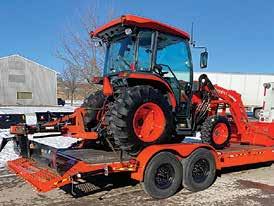



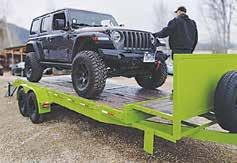

Working closely with local ranchers who had BLM grazing permits and who agreed to participate in the long-term project, Conway’s group of researchers annually collected and analyzed data from five research sites in Idaho. The results address the effects of currently permitted low to moderate grazing levels on sage-grouse nesting and brood rearing. More intensive grazing may have different outcomes.
“I think this is a significant outcome for the ranching community, which has wondered all along what they would do if scientists learned that their spring grazing was bad for sage-grouse,” said Launchbaugh, co-lead investigator. “We now have rigorous scientific results to support that cattle and sage-grouse can co-exist under the scenarios we examined. These findings suggest that responsible public land grazing can continue without harming sage-grouse.”
More than 1,300 sage-grouse hens were captured and radio-collared on five sites across Idaho during the 10-year study. Researchers documented the fate of 1,285 nests and tracked 399 broods to assess the effects of spring cattle grazing on sage-grouse in the unprecedented study.
WSU livestock management platform named
Microsoft
‘AI for Good’ winner
1,000 pounds of forage, while 20 steps away, that can decrease to 200 pounds.”
Usable forage depends on factors like proximity to water and landscape steepness, which impact whether an animal is willing to walk to a food source.
“StockSmart integrates these factors effectively to calculate how much food is really available to livestock in the area that the user defines,” Hall said. “Its power lies in its ability to provide easy access to remotely sensed data on forage production and variability.”
For Hudson, StockSmart is a perfect example of WSU Extension’s mission to help communities in Washington state.
“Extension’s job is to use applied science to solve realworld problems for people whose livelihoods depend on it,” Hudson said. “StockSmart’s grazing management tools already do that, and the platform could soon provide another public benefit — wildfire mitigation. We may literally be able to change fire risk into food by converting flammable vegetation into meat.”
Navigating farm succession without a family heir: Advisory team
By Jessica Groskopf, Nebraska Extension Ag Economist
In my work with agricultural families, I’m seeing a growing and difficult reality: many farms and ranches today don’t have a successor within the family. While this absence can simplify parts of estate planning, it often creates deeper, more emotional challenges, especially when legacy and identity are tied to the land.
This article is the third in a series supporting farm and ranch owners facing this transition. If you’re just joining, I recommend reading the earlier pieces at cap.unl. edu for helpful background.
Before we dive deeper into planning, we need to establish a team of advisors that you know, like, and trust to help you develop a comprehensive strategy. At a minimum, this team should include an attorney and a tax professional. Depending on your needs, you might also include a financial advisor, insurance agent, agricultural lender, and any other professionals who will play a role in implementing your plan.
Each advisor brings a unique perspective. One of the biggest mistakes I see is relying solely on an attorney. While legal advice is critical, the best outcomes often result from
I will outline common concerns of farmers and ranchers. These discussions help your team narrow down the best options.
Be Transparent: Incomplete or inaccurate information is a common reason why plans fail. Be as honest and forthcoming as possible. Your advisors are there to help, not judge.
Stay Open-Minded: Don’t assume a tool or strategy will, or won’t, work based on your neighbor’s experience. Trust your advisors to offer solutions tailored to your unique circumstances.
Own the Final Decision: Remember, you are the CEO of your farm or ranch. The final call and the responsibility to carry out the plan rests with you.
Planning isn’t just about legal documents, it’s about clarity, communication, and preparation. When you come to the table with a clear vision, accurate financials, and a willingness to speak openly, you give your advisors the tools they need to build a plan that truly works, not just one that exists on paper. In our next article, we’ll explore the four essential documents you need to create a basic estate plan. collaborative input across multiple disciplines. Here are my recommendations for having successful meetings with these advisors:
Clarify your vision: Before meeting your advisors, ask yourself: What do I want to happen to my farm or ranch when I die? This answer becomes your team’s guiding star in shaping a realistic and effective plan.
Gather Financial Information: Be prepared to share a full list of assets and debts, both personal and business. Include details on ownership (e.g., joint ownership, LLCs, partnerships) and bring supporting documents like leases or buy-sell agreements.
Meet as a Group: Avoid playing the middleman. Bring your advisors together in one room or in a virtual meeting to discuss possible solutions collaboratively. It might cost more now, but it will save you time, money, and stress later.
Speak Up About Your Concerns: Be open about your fears, or risks you want to avoid. In a future article,
#####
Albert Einstein found it whimsical to stick out his tongue whenever he knew someone was taking his picture.
#####
In Tibet, it is a friendly greeting and a sign of respect to stick out your tongue.
#####
Tongue curling, or rolling, is a dominant genetic trait. 65% to 80% of people have this trait.
#####
First drink of Kool-aid: taken by chemist Edwin Perkins of Hastings, Nebraska, in 1927.
Deadline for advertising in the September 2025 issue is Wednesday, August 27th.
Neal Hay Sales
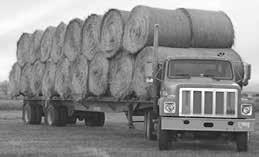
Alfalfa, grass, hay barley, grass alfalfa mix 1st, 2nd, and 3rd cutting dairy quality alfalfa. Test available. Delivery available. Located at Augusta, Montana Phone or text (406) 590-8916

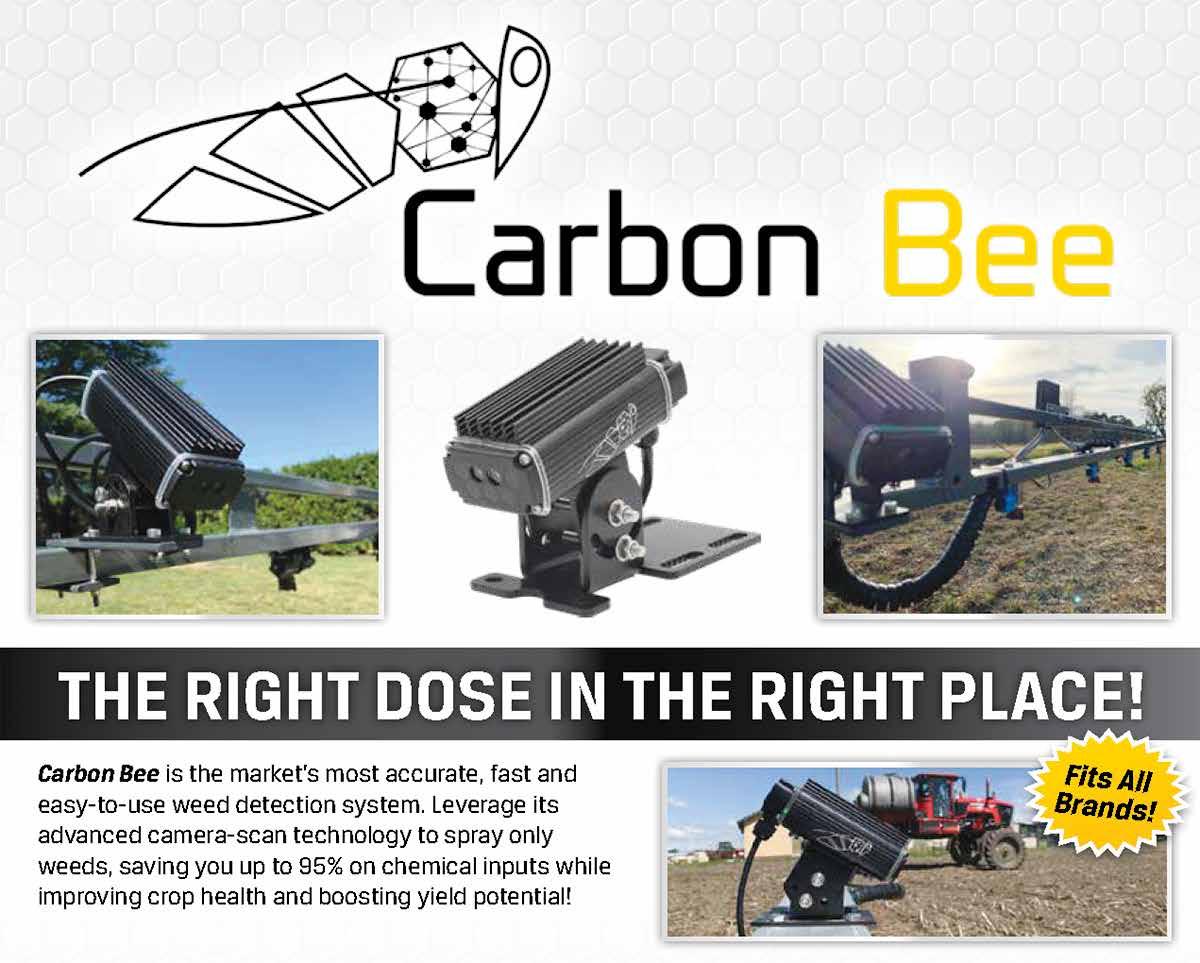
Torgerson’s Equipment is excited to announce that we now carry Carbon Bee! Did you know that with Carbon Bee on your sprayer you can save up to 95% of chemical inputs? By adding Carbon Bee’s SmartStriker X technology to your sprayer, you will be able to generate a real time map of weeds and crops in your field, showing you where chemicals were applied and how much was used.
Farmers all over the world trust this industry leading precision ag solution to help them save money and protect their crops. The best part of this technology is that it can be added directly to your current sprayer. Want to learn more about how you can benefit from using Carbon Bee? Contact your local Torgerson’s Equipment dealership or scan the QR code to visit our website.



















Take steps to manage storm damage to irrigation systems
Storms and high winds pose a serious threat to irrigation systems, often resulting in costly damage. Taking informed action can minimize irrigation system downtime and avoid future irrigation delays, according to Laxmi Prasad, North Dakota State University Extension water engineer.
Center pivot irrigation systems are particularly susceptible to a variety of storm-related damages. High winds can flip over an irrigation machine or cause structural collapse on wet or uneven ground. Wind forces may cause towers to become misaligned, leading to drivetrain strain or gear failure.
Prasad warns that electrical components such as control panels and wiring are at risk from lightning strikes and water intrusion
“Anchors and foundations may shift or fail in softened ground, undermining the system’s stability,” says Prasad. Airborne debris during high winds, such as tree limbs and sheet metal, can also damage parts of a center pivot, leading to further mechanical issues.
Examining these potential failures is essential for poststorm inspection and effective recovery.
Safety is always the top priority while examining a stormdamaged center pivot system. Immediately disconnect power to the system and ensure proper grounding. Avoid contact with any part of the system if electrical hazards are suspected, and immediately contact a licensed electrician for advice.
“Also, watch for downed power lines, and be cautious around areas with high water pressure or chemical injection systems,” says Prasad.
Once safety is secured, assess and document the damage. Take clear photos and videos from multiple angles before starting any repairs. Review your farm insurance policies to understand what is covered, and promptly contact your insurance agent to begin the claims process.
Begin necessary emergency repairs to prevent further damage, such as securing loose components of the center pivot. For more complex issues, consult your irrigation supplier or service expert. Do not forget to check the grounding of electrical components to prevent hazards. Keep records of all repair-related expenses.
For more information about dealing with damage from summer storms, visit ndsu.ag/summerstorms25.
Water quality and blue-green algae
By Ben Beckman, UNL
When cattle are on pasture, both forage and water quality are important for healthy animals. Surface water is particularly prone to quality issues, such as blue-green algae, salinity, mineral concentrations, or nitrate.
Several factors can cause livestock water to be less than ideal for quality, which can impact animal productivity and health. While not common in Nebraska, salinity or minerals can cause animals to limit or refuse consumption in some locations. In some circumstances concentrations can become high enough to be toxic. Dissolved salt and mineral concentrations increase with dry conditions as water evaporates.
Another issue more common in Nebraska surface water is high nitrates. While elevated nitrates from groundwater sources feeding a pond may be a cause, more common is runoff from other sources of nitrate contamination. Cattle can deal with nitrate levels in water that are unsafe for human consumption, but the real danger comes from elevated nitrate levels in water coupled with feed sources that are also high in nitrates. The compounding effect can push a borderline ration into toxic levels or accelerate nitrate toxicity that is already occurring.
Blue-green algae is a very common occurrence in still water during the summer months. If the conditions are right, a bloom of growth can occur quickly, contaminating the water. Consumption can kill livestock within 24 hours. Algae blooms have traditionally been treated with copper sulfate following proper instructions for rates and exclusions. However, when blooms become more frequent, repeated copper treatments can cause a build up of the element in the environment and animal management becomes our preferred response.
Assuring water is good quality will go a long way toward making summer grazing better and healthier cattle.

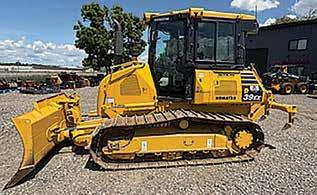




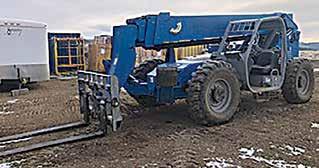
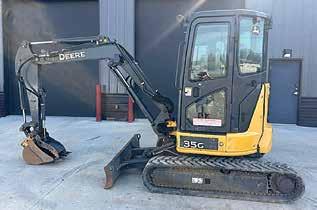



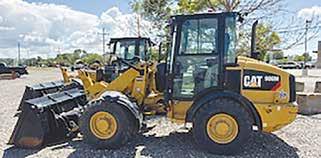






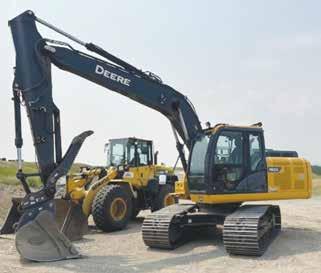
FARM EQUIPMENT & KENNEL FOR SALE
International 1680 combine, long sieve, Cummins engine, moisture tester, new tires, approximately 4000 hours. Case 1010 25-ft. header with Hart Carter pick up reel, Sund pick up with rubber belts.
Ford 5600 tractor, 56 hp, cab, Farmhand 233 loader, 6000 hours.
$15,000
By Devin Rokyta, College of Veterinary Medicine
$12,000 24-ft. heavy duty round bale rack
Farmhand 10 bale clamp for small square bales. Near new and reinforced. Black color
$1000
$1500 Dog kennel, 12-ft. 6” long x 4-ft. 6” tall. Four panels, so can take apart
$400 Phone (406) 450-1121 or (406) 279-3482
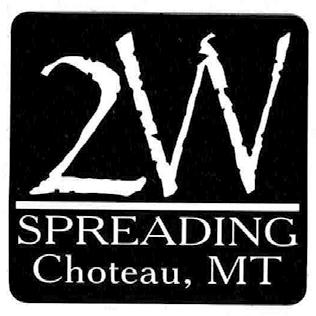

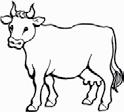


As summer temperatures take hold, toxic blue-green algae blooms can be a deadly threat to pets across the Pacific Northwest.
Exposure to blue-green algae — or cyanobacteria — can kill pets in as little as 15–20 minutes. Animals can be exposed to blue-green algae and its toxins by simply contacting any affected water body, including ponds, lakes, streams, rivers, or even residential decorative ponds and neglected swimming pools.
“Just grabbing a ball or a stick from the water or even licking algae off their fur can be fatal,” said Dr. Chelsea Sykes, a diagnostic toxicologist at Washington State University’s Washington Animal Disease Diagnostic Laboratory.

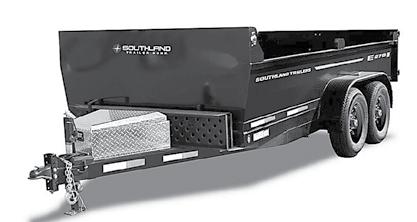

Cyanobacteria are microscopic organisms that live in fresh bodies of water that usually multiply and bloom when water is warm, stagnant, and rich in nutrients like phosphorus and nitrogen from sources such as fertilizer runoff. Blooms typically occur in late spring through early fall and can resemble thick, slimy green paint or pea soup on and in surface waters and eddies of running waters. Blooms, however, can have many colors.
Dead fish, waterfowl, or other animals around a water source may indicate the presence of blue-green algae, but it is impossible to tell whether a given body of water has a toxic bloom without sophisticated testing. During warmer months, it is best to assume all still or slow-moving surface waters are potentially contaminated.
“Unfortunately, you can’t tell if a bloom is toxic just by looking at it,” Sykes said. “That’s why we always say, ‘when in doubt, stay out.’”
Symptoms of algae poisoning in pets can develop quickly and include vomiting, diarrhea, weakness, disorientation, pale gums, skin rashes, seizures, difficulty breathing, or collapse.
If a pet is showing signs of exposure, immediate veterinary care is critical. Pet owners can call their veterinarian or the WSU Veterinary Teaching Hospital emergency line at 509-335-0711.
“Once symptoms begin, the window for treatment is very short,” Sykes said. “Fast, aggressive care gives the best chance for survival.”
To reduce the risk of exposure, Sykes recommends avoiding any water that looks discolored or like spilled paint, preventing pets from drinking or swimming in unknown water, and rinsing them off with clean water if they do get wet. It’s also important to keep animals from licking their fur afterward.
“The best protection is prevention,” Sykes said. “Keep your pets leashed near open water and always be cautious. It’s not worth the risk.”
John James Audubon
John James Audubon was considered a pioneer of American wildlife conservation, this 19th-century naturalist spent days at a time searching for birds in the woods supposedly so he could paint them. The National Audubon Society was founded in 1905 in his honor.
Actually he found the birds, then shot them. In addition to painting, he was an avid hunter. According to David Wallenchinsky in Significa, “He achieved unequaled realism by using freshly killed models held in lifelike poses by wires. Sometimes he shot dozens of birds just to complete a single picture.”
Water pollution by blooming Cyanobacteria is world environmental problem. (Photo by marvod on iStock)
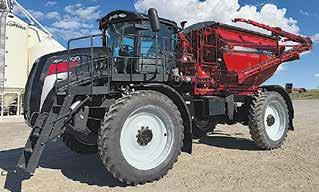
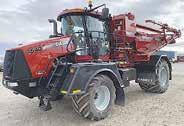


2016 RBR Enterprise Venturi 350 fertilizer spreader, Cummins diesel, Allison automatic trans, 4 wheel drive, air ride classic, 13ft. New Leader L4000 G4 twin spinner, Raven Viper Pro monitor, Smart Trax auto steer, 4099 hours.........$78,500 $98,500


1990 Freightliner Liquid Tender, 2800 gallon tank, gas powered 2” pump, Detroit diesel engine, 762,178 miles. $18,500 $21,500


2020 RBR Venturi 400, Case IH Flex Air 810 triple bin, 70ft. boom, Raven Viper 4, adjustable axles,



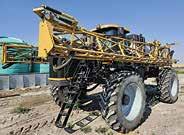
120ft. boom, 20” spacing, 650/65R42 tires, fenders, Viper 4 monitor, 3143 hours. $98,000 $112,000


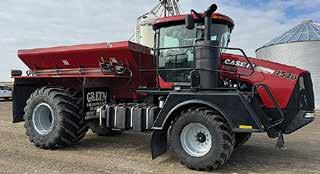
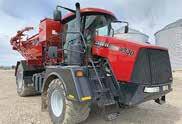







Hyundai HL730-9A wheel loader, EROPS, Cummins, 8-ft. bucket, 2.5 cubic yard, 17.5R25 tires, operating weight 23,500 lbs, rear view camera, 5684 hours. $57,000 $67,000
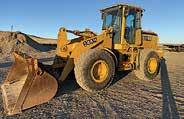

2005 Kenworth T800, C13 Caterpillar Acert diesel engine, Eation automatic transmission, twin screw, air ride, jake brake, cruise control, double 20 gpm., hydraulic pump, PTO driven wet kit, 875,247 miles. $25,000

odometer reads 472,304 miles. $23,000


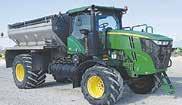



1992 Featherlite flatbed trailer, 45-ft. aluminum bed trailer, side winches, tandem axle, air ride
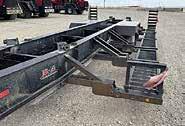

20120 120-ft. portable grain conveyor, 20” wide belt, swing hopper, PTO drive. SN# 20496. Located in Langdon, ND. $25,000

Batco

